2016 Tesla Model X: What's It Like to Live With?
Read the latest updates in our long-term road test of the 2016 Tesla Model X as our editors live with this suv for a year.
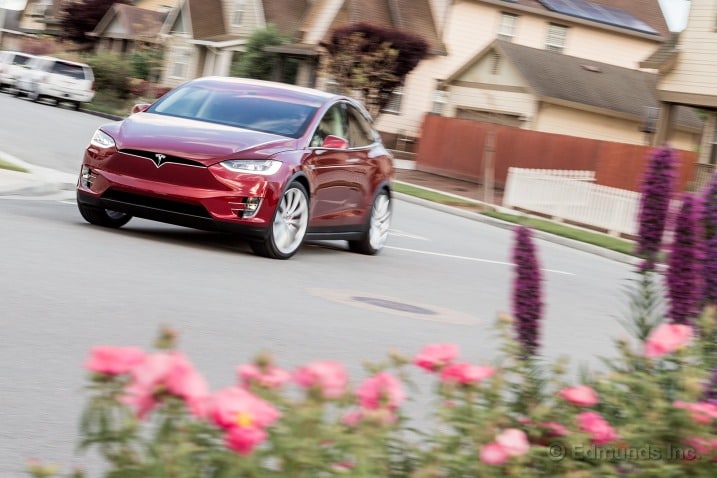
What do you want to know about?
- Introduction
- Recall Issued
- Panoramic Windshield
- A Buyer's Timeline
- Not the First With a "Big Sky" Roof
- Supersized Supercharger Network
- Smarter Parking Sensors
- Ludicrous Mode Broke the Model X
- Good Seats, Not Great Seats
- Innovative Cupholder Design
- Service for Recall and Issues
- Using an EKM Meter to Track Power Consumption
- 32 Cool Things
- 14 Drawbacks to Those Doors
- Testing the Autopilot Function
- Installing the Hidden Trailer Hitch
- Towing a Teardrop Trailer to Flagstaff
- Range and Charging While Towing a Trailer
- Installing the Sunshade
- The App Keeps Me Cool
- Center Console Cover Is Broken
- Performance Tested
- The Doors Are Dangerous
- Autopilot Day and Night
- Using the Trailer Hitch To Haul Bicycles
- Limited Rearward Visibility
- My First Supercharger, and Autopilot Inconsistencies
- Road Trip to Big Sur
- Power Loss When Parked
- Adjustable Headrests (Someday)
- Full Charge Means No Regenerative Braking
- Update 7.1
- Mercedes-Compatible
- Best Rearview Camera Out There
- Temporary Gremlins
- We Chose a Nice Color
- Self-Parking?
- It's a Mainstream Car - in Southern California
- Strange Steering Column Noises
- Fooled by a Mirage
- Doors Get a Firmware Update
- The Overlooked Front Doors
- Destination Charging is a Thing
- A Less Automatic Autopilot
- Door and Window Confusion
- Hydrogen Highway vs. Tesla Supercharger Network
- Math, Befuddled Software and Chasing A Mirai to Lake Tahoe
- Supercharger Shortcut on the Return Leg From Lake Tahoe
- More Unexpected Noises
- Noisy Air Conditioning
- Monthly Update for October 2016
- Monthly Update for November 2016
- Monthly Update for January 2017
- Taking a Family of 5 to Yosemite in the Winter
- Monthly Update for February 2017
- Monthly Update for March 2017
- Monthly Update for April 2017
- A Tale of Two Service Centers
- Monthly Update for May 2017
- Monthly Update for June 2017
- Monthly Update for July 2017
- Monthly Update for August 2017
- Tow Test Reboot With a Happier Camper Trailer
- Monthly Update for September 2017
- Tow Test Recap
- Monthly Update for October 2017
- Selling Process
- Wrap-Up
Introduction
What Did We Buy?
Electric vehicles are still rare, but improvements in range and desirability have raised their profile far beyond their actual sales numbers. Most of the electric vehicles (EVs) currently on the market are compact hatchbacks or sedans. Other than the short-lived Toyota RAV4 EV, electric SUVs have largely been absent.
The new 2016 Tesla Model X changes that. With seating for up to seven passengers and a larger cabin than the Model S sedan upon which it is largely based, the Model X is as close to a purpose-built electric SUV as the world has seen to date.
The Model X's single biggest departure from the Model S is the SUV's unique rear doors, which articulate upward rather than swinging out. They allow access to the two independent captain's chairs that form the second row of seating in our test car, and the two forward-facing fold-flat seats that form the third row.
It's a unique design that claims to alleviate some of the problems with traditional SUVs. We were so intrigued we put down a $40,000 deposit two years ago in order to buy one of the first models off the line. After all, there would be no better test of its usefulness than a year in our test fleet. Now the time has finally come to see how it stacks up.
What Options Does It Have?
The 2016 Tesla Model X is available in three variants: 70D, 90D and P90D. All are equipped with all-wheel drive.
The entry-level 70D starts at $81,200 and includes a 70-kWh battery that's good for 220 miles of driving range, seating for five and a conventional suspension. Standard equipment includes keyless entry, a power liftgate, LED headlights, parking alerts, navigation, blind spot warnings and collision-mitigation braking.
Stepping up to the $96,700 90D adds an air suspension and a 90-kWh battery that delivers quicker acceleration and the longest range (257 miles) of all Model X flavors. The $116,700 P90D bumps up the speed quotient further still, at the expense of a bit of range, which drops to 250 miles.
To experience all of the available features, some of which are unusual, we configured our Model X in the highest specification, a so-called Model X Signature P90D. Starting at $133,200, Signature models are essentially P90Ds bundled with features that would otherwise be optional: leather seating surfaces, autopilot semi-autonomous driving, 22-inch wheels, third-row seats, a high-current (72 amp) onboard charger and the Premium Upgrades package (which includes a motorized driver's door, HEPA cabin air filter, ventilated front seats, extended leather surfaces, synthetic suede headliner and adaptive headlights).
Signature status unlocks another key factor that clinched the decision for us: They're delivered first, jumping the line ahead of the plebeian non-Signature versions. Forget ordering one if you haven't done so already. They were limited to the first 1,000 takers willing to plunk down a $40,000 initial deposit, and all have been accounted for.
Since the Signature is nearly fully loaded, we added only the Ludicrous Speed Upgrade ($10,000), the Subzero Weather package ($1,000) and a Tow package ($750), bringing our grand total to $144,950 before tax and federal/state incentives. Despite our hefty deposit, we still had to bring a $119,000 check when we picked up our Model X at the Tesla factory in Fremont, California.
Why We Bought It
Tesla already has a cultlike following after producing only two models. We owned a Model S sedan for a year and the experience was a mixed bag. It was an exceptional sedan that was riddled with problems.
The Model X promises greater reliability and an even more practical package. Sedans have taken a backseat to crossovers and SUVs for mainstream buyers, so the Model X is a more direct shot at the heart of the market, even if its price still puts it out of reach for most.
Daily use will show if the novel doors are a sign of things to come in SUV design, or a constant source of frustration. We'll also get a chance to sample the quickly expanding supercharger network that was still a work in progress when we owned our Model S. Road trips should be a less daunting prospect this time around.
We'll be keeping our Model X for the next 12 months and aim to put at least 20,000 miles on it. Much of it will be commuting and running errands, but we'll throw in a few road trips and even find something to tow. Along the way we'll assess its comfort, measure its performance and energy consumption, share our driving impressions and track its maintenance needs.
Read along on our long-term road test blog to see daily updates on its progress.
Edmunds purchased this vehicle for the purpose of evaluation.
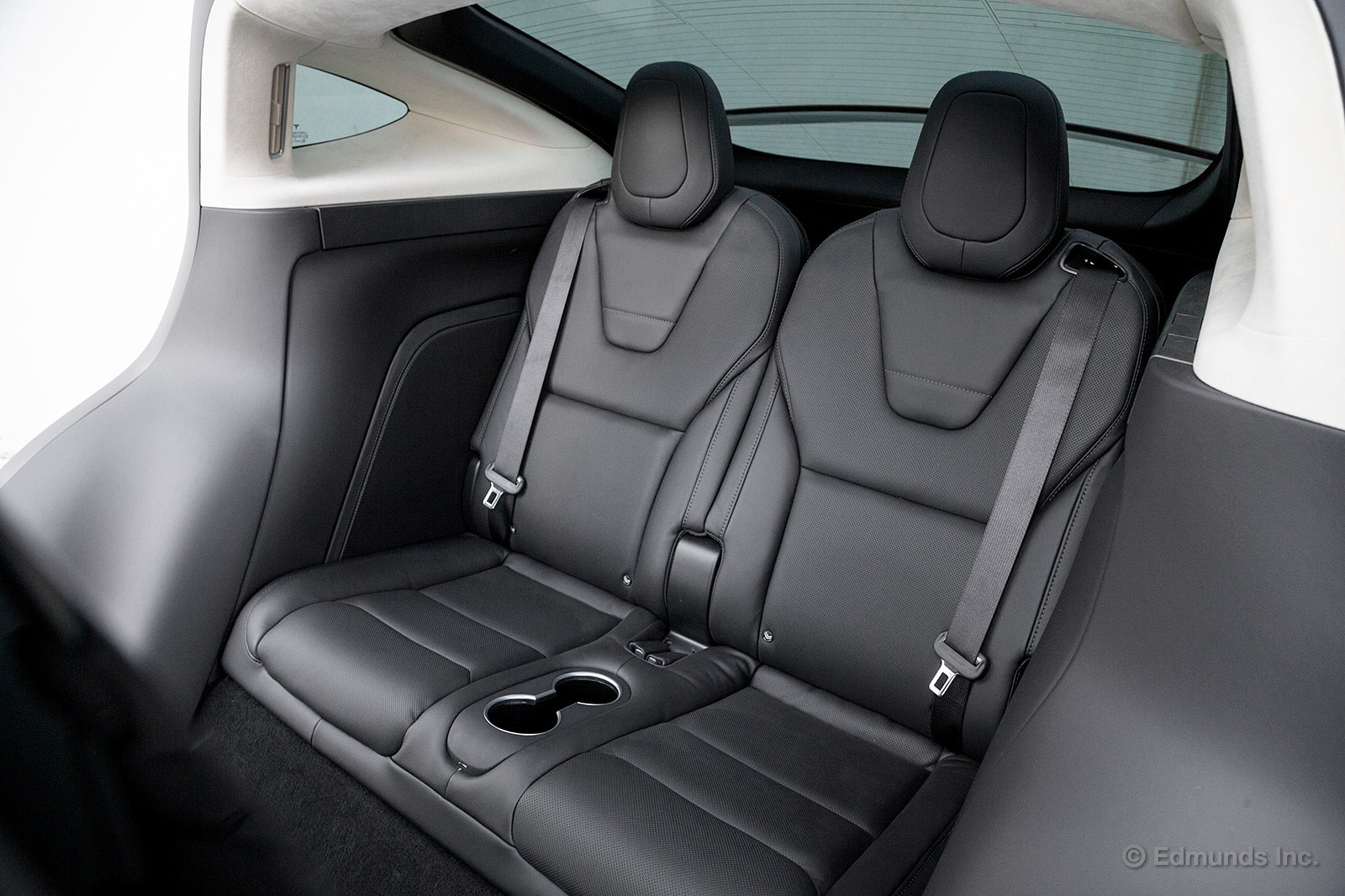
Tesla issued a voluntary recall for the 2016 Tesla Model X on April 11th. An email was sent by Tesla to owners of affected vehicles notifying them that the third-row seatback recliner could let go in a frontal crash.
The recall affects about 2,700 Model Xs, all of which were produced before 26 March of this year. Since our car is a Signature (number 921 of about 1,000) model, it enjoyed priority delivery status over non-Signatures and as such was presumably built early in the production run.
Sure enough, the VIN of our Model X indicates a February build date, thus it must be one of those affected by the recall campaign.
Right?
Yes. Our Model X is part of the recall. However, we were not among the owners to receive the email indicating that fact. We even checked the spam folder. Twice.
To add to the confusion, when we enter our car's VIN into Tesla's VIN Recall Search website, an error is returned.
As a last resort, we reached out to Tesla's communications department to figure out whether our car is or is not included in the recall campaign. After a few false starts they eventually confirmed that, yes, our vehicle's VIN is indeed subject to the recall.
We'll be shortly heading over to Tesla's Santa Monica service department to have our Model X retrofitted with the new seat hardware.
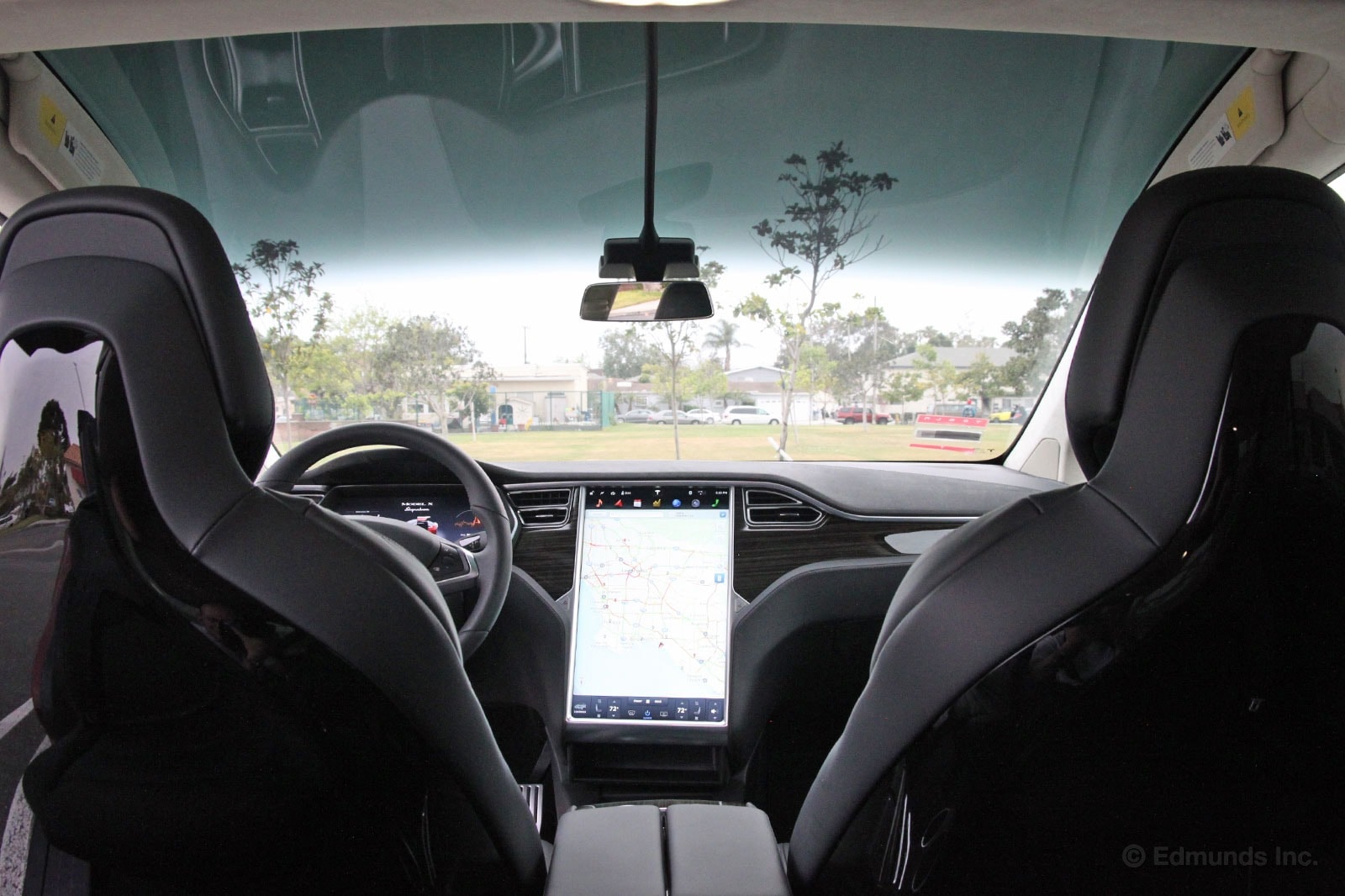
Yes, that's the windshield in our 2016 Tesla Model X. It's a standard feature of the new SUV and one of the unique features that makes the Model X such a conversation starter. It also makes me nervous.
You see, I no longer have a natural sun visor, otherwise known as hair. So sitting there in the driver's seat with nothing but a tinted window above my head is unnerving to say the least.
Now I'm sure that glass is coated with all kinds of UV protection, but even that stuff has its limitations. I enjoy the view that the enormous windshield provides, I just wish there was an option to cover it up should you feel the need. Sometimes you just don't want the sun constantly overhead, even if it's not baking you.
There are sunvisors. They swing down from the sides of the A-pillars and connect with the rear view mirror via magnets. They look a bit odd hanging there in the middle of nothing, but they are positioned in a way that makes them useful for deflecting head on sunshine.
Overall it's an interesting feature that gives the Model X a distinctive look and feel. Hopefully it doesn't get any cracks as I'm guessing it's not cheap to replace.
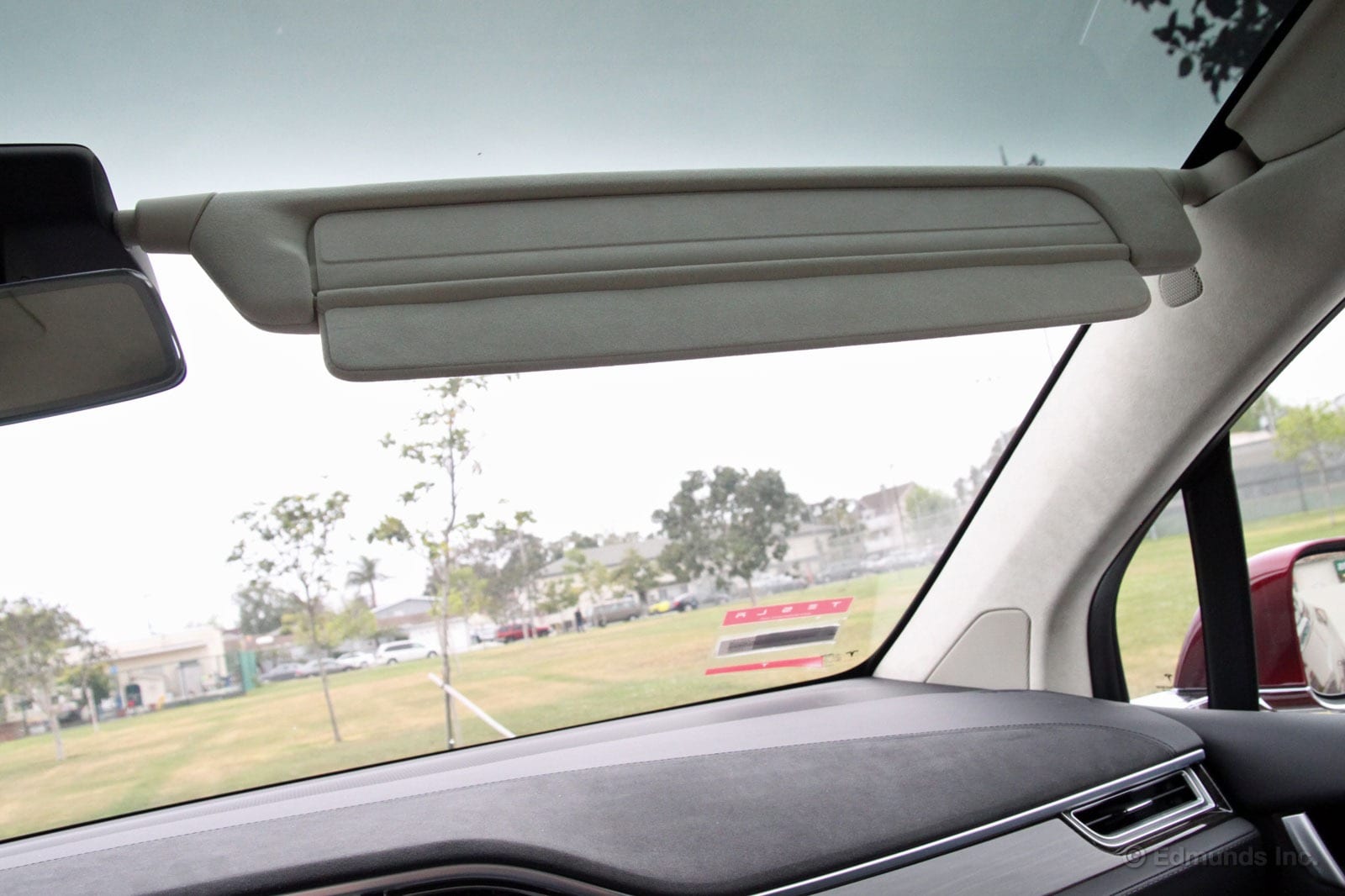
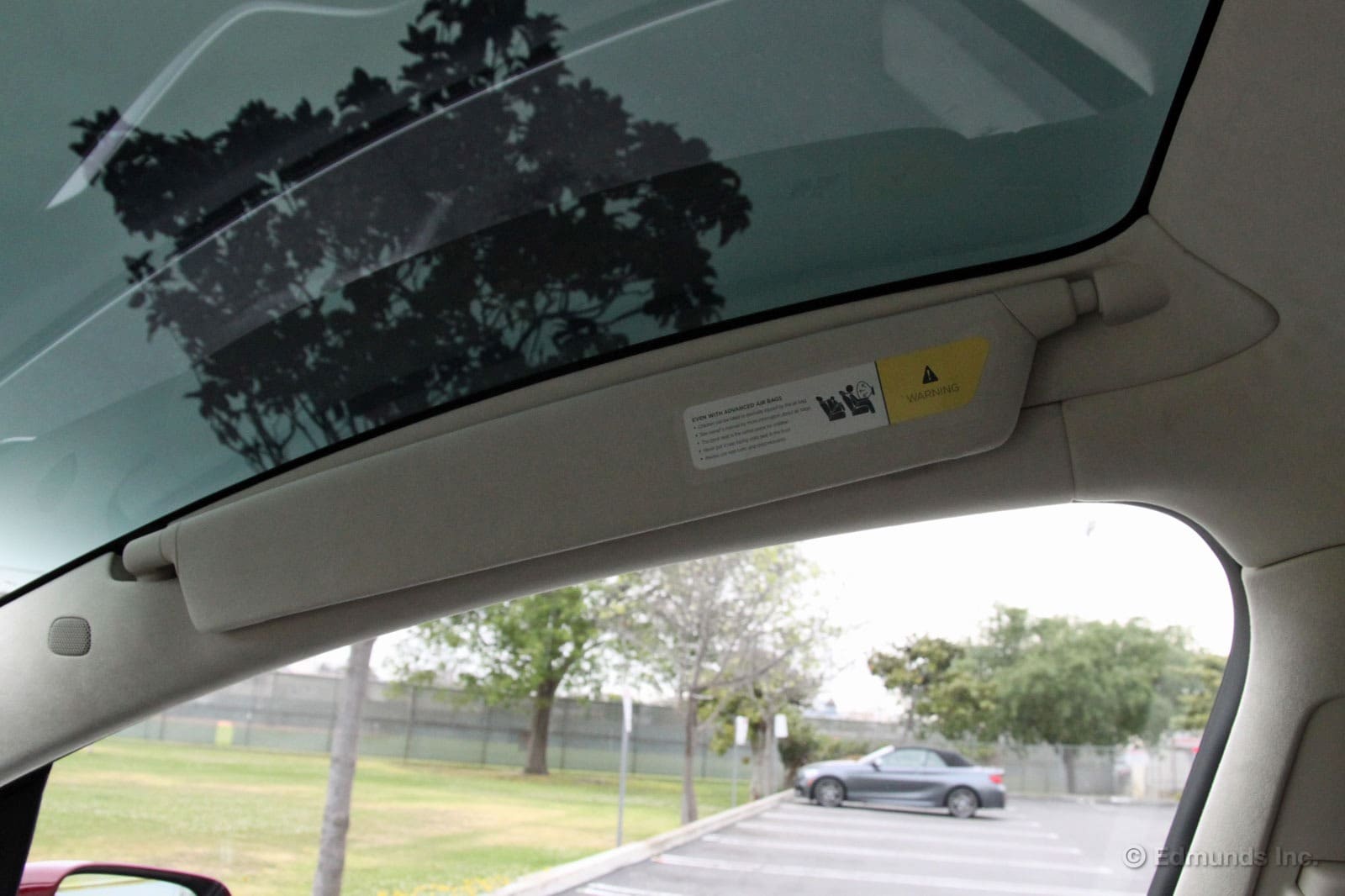

Buying a new Tesla model requires faith in Elon Musk, a chunk of money upfront and a lot of patience. As former Tesla Model S owners, this wasn't our first electric-car rodeo with Elon. We knew exactly what we were getting into when we ordered our 2016 Tesla Model X.
But if you're someone who's never plunked down a deposit of a thousand dollars — or 40 times that — for a just-past-the-concept-stage Tesla, here's a diary of what you might expect:
February 2012: Shortly after Tesla shows the Model X concept to the public, it begins taking deposits for the SUV. Folks are impressed when the company gets a whopping 500 reservations in the first 24 hours. Contrast that with 2016, when people make 180,000 reservations for the Model 3 in 24 hours. What a difference a more affordable car (and years of hype) can make.
In 2012, we have our hands full trying to buy a Model S, which we didn't get until 2013, so the Model X isn't even on our radar. The situation stays that way until early 2014.
January 17, 2014: We finally order a Model X. We have the option to put $5,000 down for a standard Model X, or $40,000 down for the Signature edition. We opt for the Signature to ensure we'll have one of the first 1,000 vehicles delivered. Good thing we do: We now know that non-signature cars are not scheduled for delivery until mid-to-late 2016.
February 2014: A month or so after we write our $40K check to Tesla, we start to see reports that the Model X could be delayed.
June 2014: We receive a letter from Tesla confirming that the "falcon wing" doors are going to make it to the production version of the Model X.
November 2014: We see another report: The Model X is being delayed to Q3 2015.
Most of 2015: Months pass and no word from Tesla.
September 29, 2015: It's now 20 months since we placed our deposit. Finally, the silence breaks and Tesla emails us, asking us to configure our vehicle. This is the fun part. We take votes in the office on the color we'll get. We debate the size of the wheels and whether to get the six- or seven-passenger version.
December 24, 2015: For the first time, a Tesla "delivery specialist" contacts us to see if we need assistance with financing or handling a trade-in. We answer his questions, ask for an estimated time of arrival and if we can pick up the car from the factory. We figure if Telsa is contacting us on Christmas Eve, delivery must be close. Right?
January 2016: We call our delivery rep. He tells us the Model X is going through the last phase of production but he still doesn't have a delivery date for us.
March 11, 2016: We get an email from a different Tesla representative, telling us to log into our account to see the delivery window. Our dates are March 10-24, and that Tesla will be in touch to firm up delivery details.
March 17, 2016: Nearly a week into the delivery window, we email our Tesla rep, asking why we haven't heard from him.
March 18, 2016: We hear back: The Model X is finally ready for pickup! Tesla offers to ship it to the nearest delivery center, but we choose to pick it up at the factory in Fremont, California.
March 31, 2016: Because of our scheduling issues, we don't actually pick up the car until this date.
So there you have it. A 26 month wait for us. Sounds like a long time, but if we'd put down our deposit in 2012, it would have been more like 48 months. Either way, is the Model X worth the wait? Check back with us to find out.
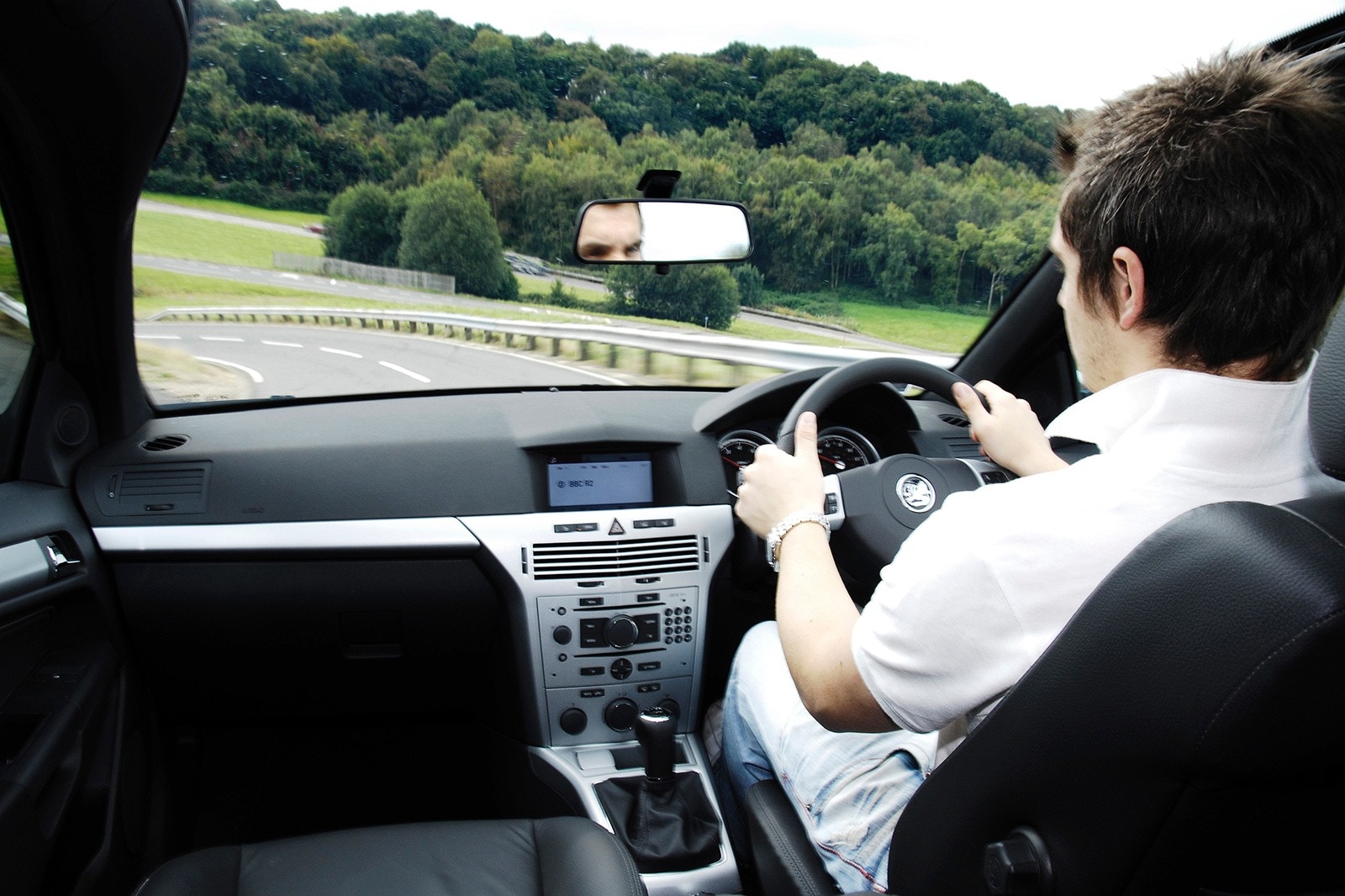
The 2016 Tesla Model X's "Big Sky" panoramic windshield is just one of its many "hey, look at me! "features that makes it oh-so-different from other SUVs. Its pros and cons have already been touched upon, but the concept itself got me wondering: Who did it first?
In that earlier thread, commenter djd352 pointed out that the 2010 Citroën C3 was equipped with a similar windshield. But even that one wasn't the first.
Remember the Saturn Astra? You know, that fun-to-drive hatchback with the crummy engine that was supposed to be a shot in the arm for its brand? Well, either way, it was sold in Europe as the Opel Astra (or Vauxhall Astra if you were a subject of Queen Elizabeth II) and it was available with a "panoramic windscreen" option. In fact, both that version and the succeeding generation that you might remember from Top Gear's Reasonably Priced Car fame had it as an option. Near as I can tell, this Astra is the first modern production example of the giant windshield concept.
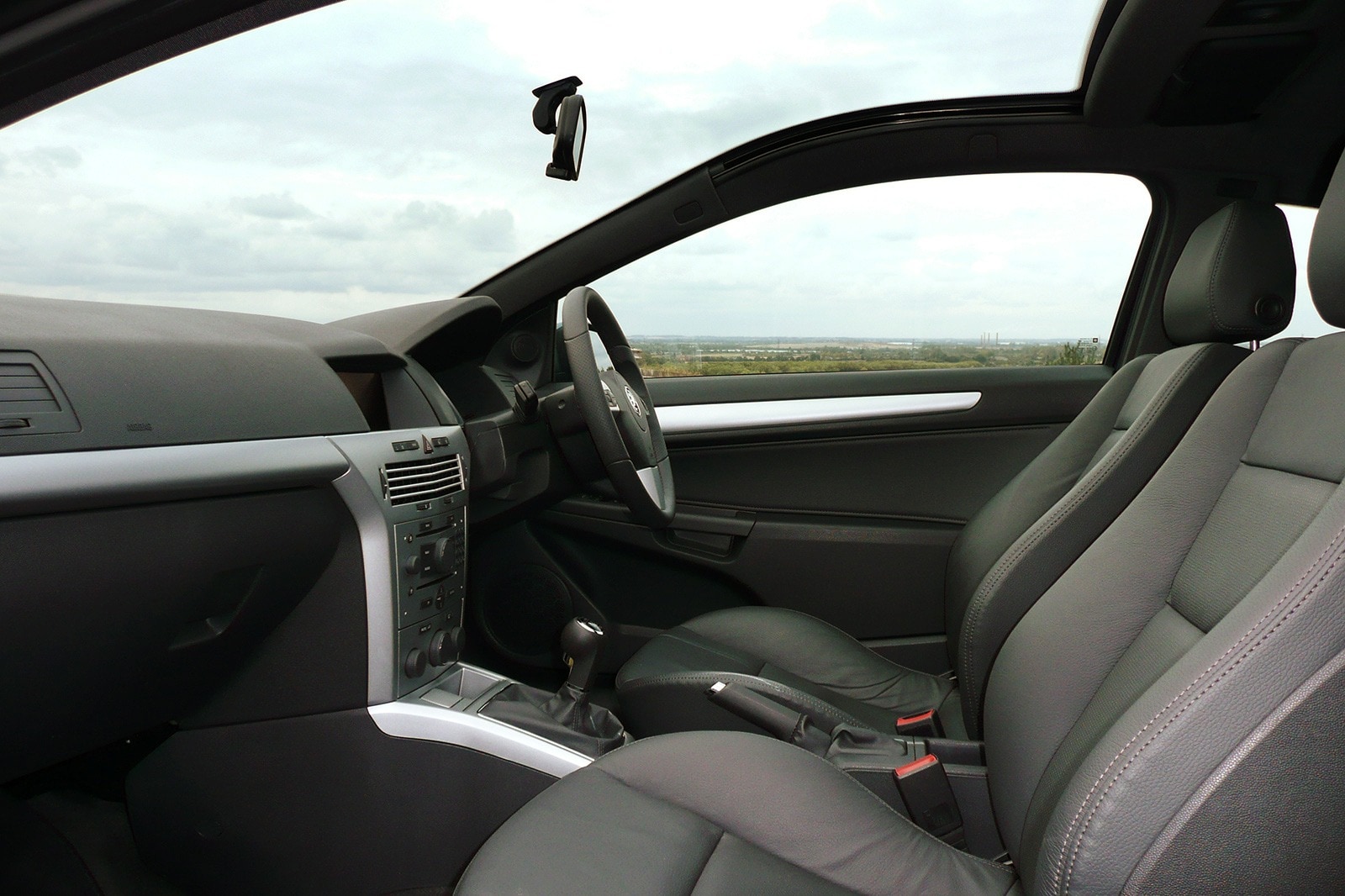
Vauxhall Astra's "panoramic windscreen"

Tesla Model X's "Big Sky" panoramic windshield
According to the Germantastic 2011 Opel press release, "The windscreen allows those on the inside not just to enjoy rays of sun but also dramatic cloud patterns or street illuminations at night." Humdinger!
However, there is a key difference between the Opel and Tesla variations of this feature. GM's European division managed to affix a roller sunshade, "which is continuously variable (and) can be easily adjusted." In the below photo of the original Astra version, you can make out its track along the windshield edge.

There is no such thing in the Model X, which means the sun is quite often overhead baking you (even through the tint) and making you wish you'd brought along a baseball hat. There is a sun visor that swings out from the A pillar, but that's only helpful when the setting sun is directly ahead.
Given that Tesla managed to figure out the falcon doors and, you know, that whole lightning-fast electric SUV thing, it's a shame it didn't think of a "roller sunshade." Just one of the Model X's many little oversights you'll hear about in the coming months.
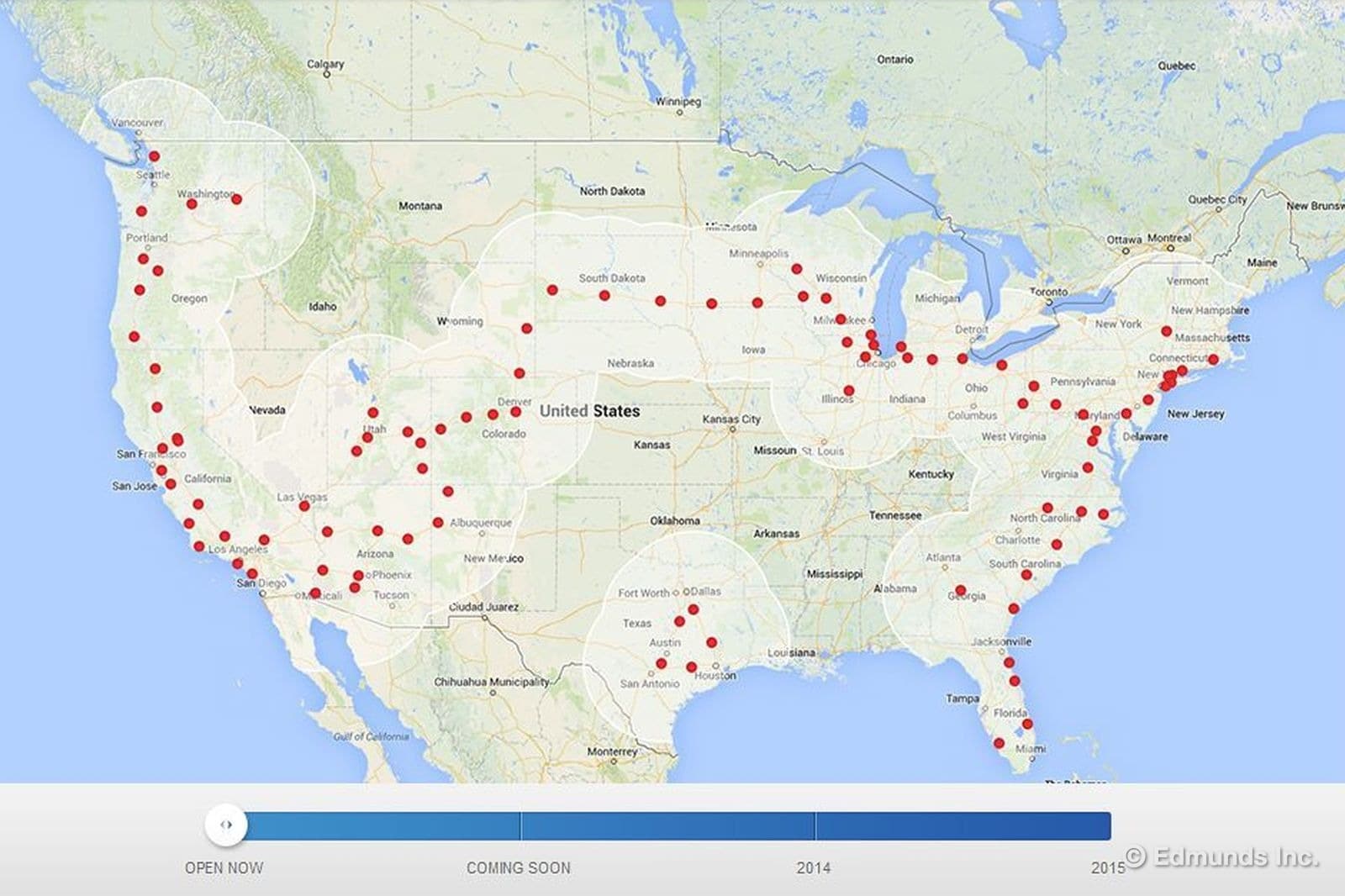
Tesla's Supercharger network has grown tremendously, and that means we have a lot more road trip options to explore with our 2016 Tesla Model X . The map above represents the state of the network in mid-June 2014 when Kurt and I undertook a massive L.A.-to-New York-to-L.A. cross-country round trip road trip, a feat we completed in less than a week.
Back then there were just 95 stations. You can guess which way we went just by looking at the map. Apart from our decision to chance a straighter path between Las Vegas and Utah, there was but a single cross-country option.
That map looks significantly more crowded today.
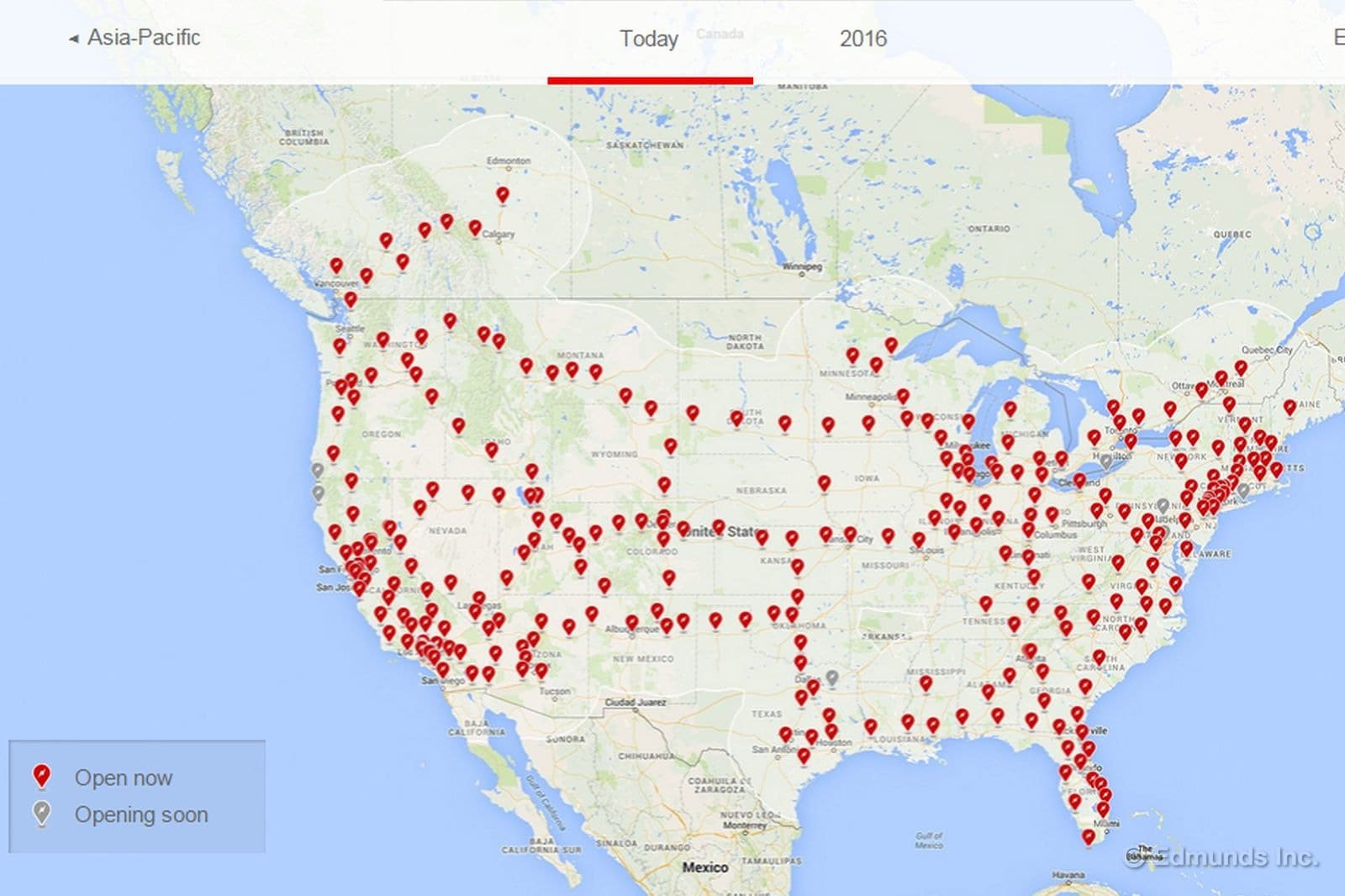
There are 278 pins on today's map representing 261 Supercharger locations in the U.S. and another 17 in Canada. It's now easier to list the states that do not have a Tesla Supercharger: Alaska, Arkansas, Hawaii, Nebraska and North Dakota.
A more direct cross-country route through the middle of the country now exists, and we could even drive all the way to Key West if we cared to. An obvious gap in west Texas needs to be plugged before the I-10 corridor becomes viable, though.
This map does not show other improvements. A fair number of the stations that used to have four spots now have eight. The popular Harris Ranch spot north of us has been expanded from eight to 13 charge spots. And much of the old 90kW equipment has been upgraded to faster 120kW gear, including the one in Barstow, California that slowed me and Kurt down on the final charge of the return leg of our cross-country trip.
Here's how Tesla sees the state of the North American network by year's end.
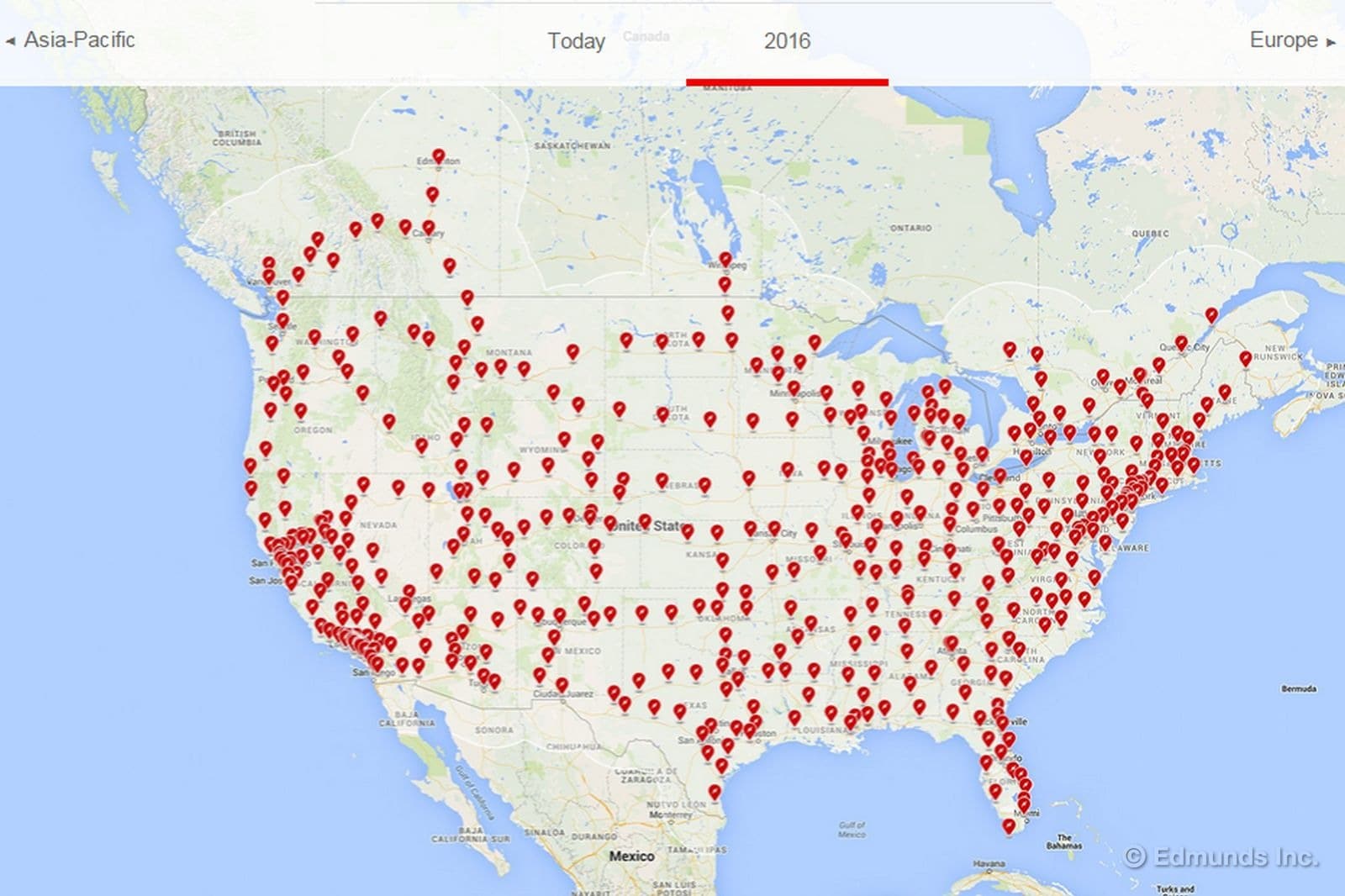
Game on. Coverage is much better, and Arkansas, North Dakota and Nebraska are set to join the club. At this point we should be able to go to most anyplace we care to go.
But this map does not address the future status of Alaska or Hawaii. I'm imagining a muttered chorus of "Typical" from those of you that live there.
As for me, I've got my eye on two "coming soon" stations in the far upper left corner of California. These stations will allow me to drive the Model X on the highway 101 coastal redwood route I prefer when I drive to Oregon to visit my parents.
You can bet I'm already planning for that road trip.
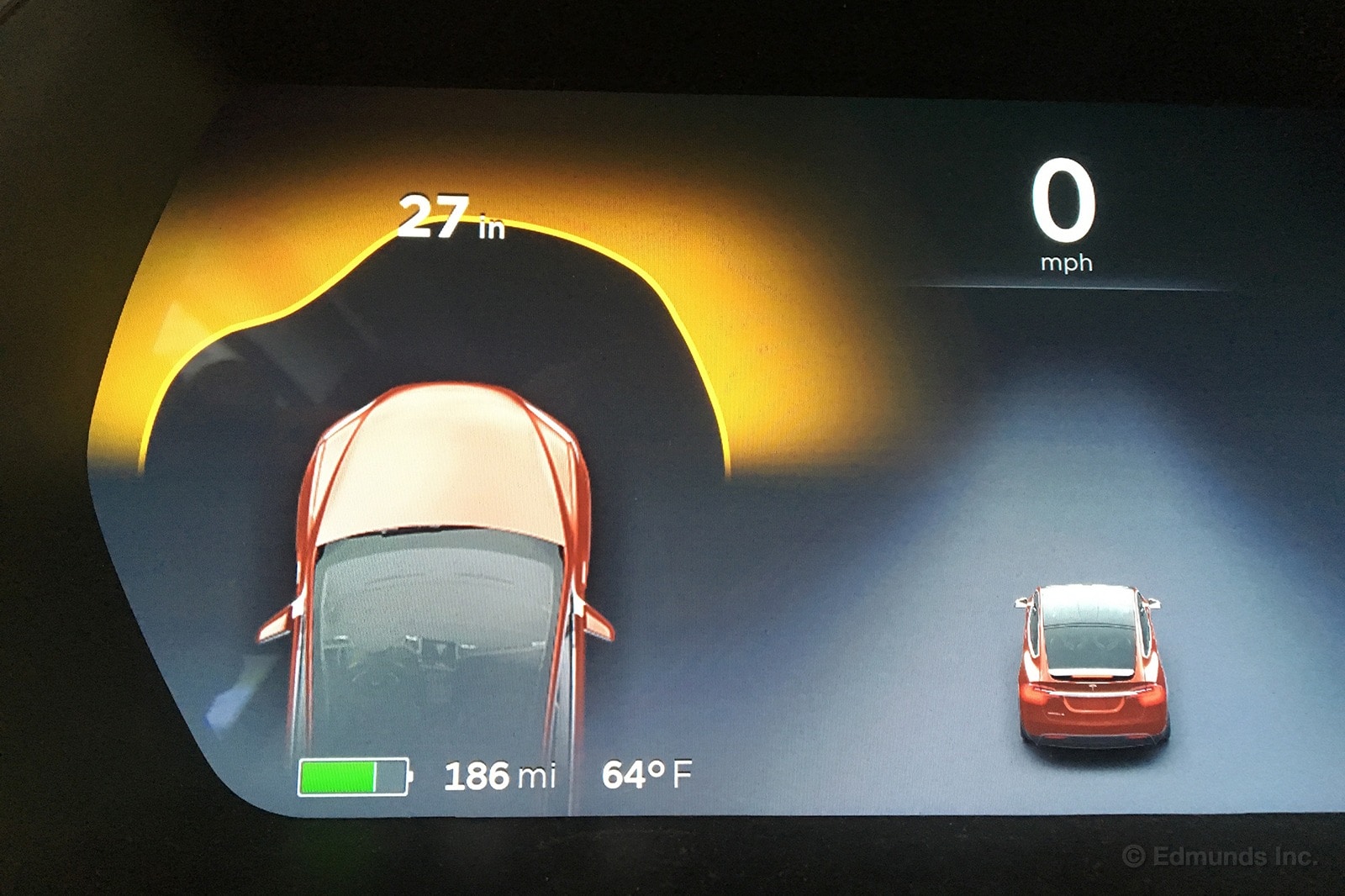
There's a lot about our 2016 Tesla Model X and our old Model S that I consider revolutionary. There are also features that are smartly evolutionary. Take the parking sensors for example
Parking sensors are nothing new. Some just beep. Others have a series of LED lights to indicate distance. Some have indicators like the one shown above that gives you a more visual idea of the surroundings.
Tesla takes it a half step further by including an indicator in inches. Having a countdown like this makes squeezing the Model X into a tight spot a breeze and when I come to think of it, it's likely just some added computer code rather than a piece of equipment. Whatever the case, I like it.
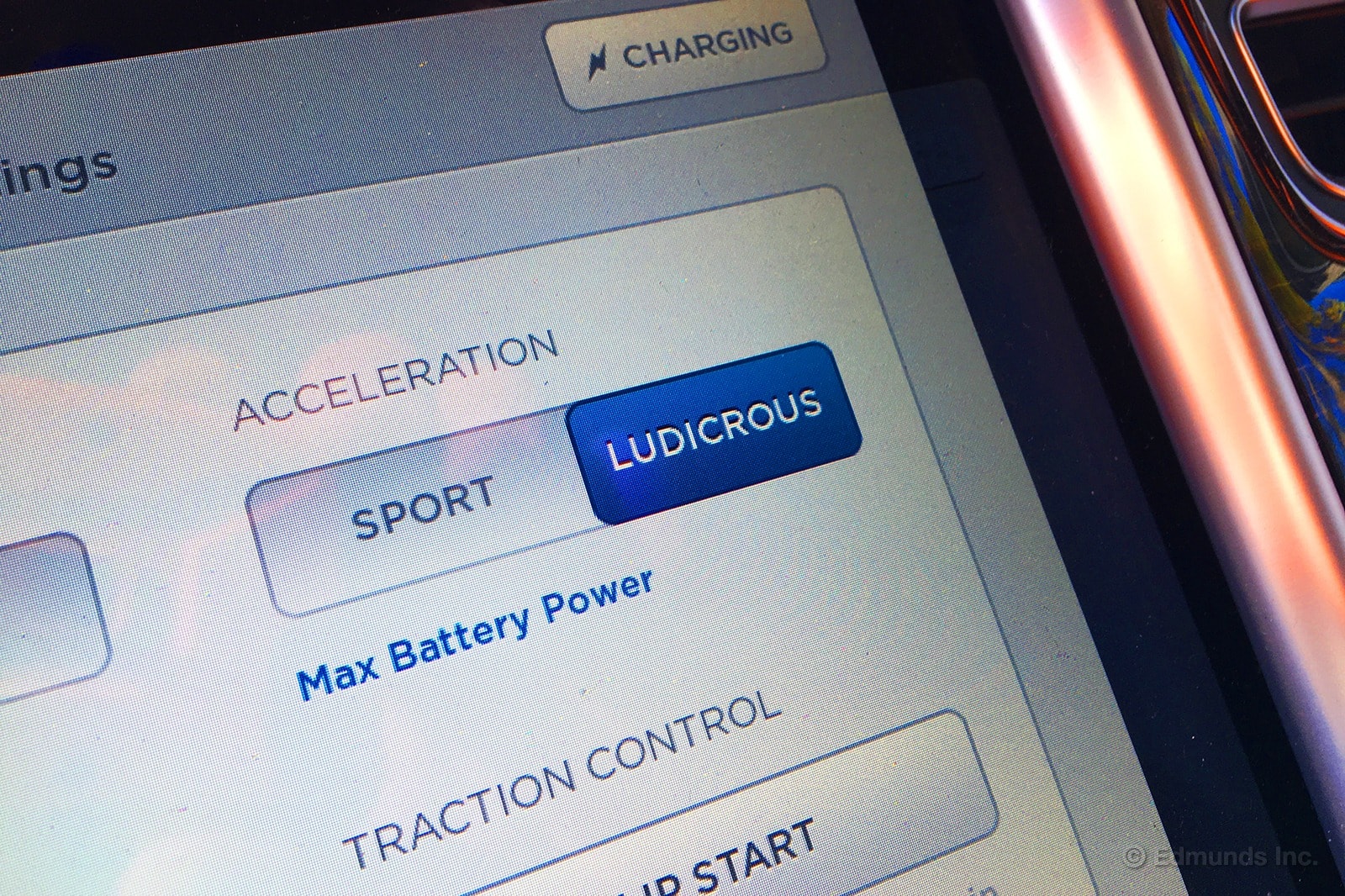
If you thought that I wouldn't try out Ludicrous mode in our 2016 Tesla Model X, you don't know me. It was everything I thought it'd be. Shockingly quick with a hearty punch to the gut. But it broke something.
In the center console bin, there's a Lightning port for Apple products. Or rather, there was.
I plugged in my iPhone 6S (not even the big 6-plus) and all seemed fine. Then there was a very long freeway on-ramp that was three lanes wide, straight as a ruler and uphill. The light turned green and I punched it. I hit the speed limit in a ridiculously short amount of time.
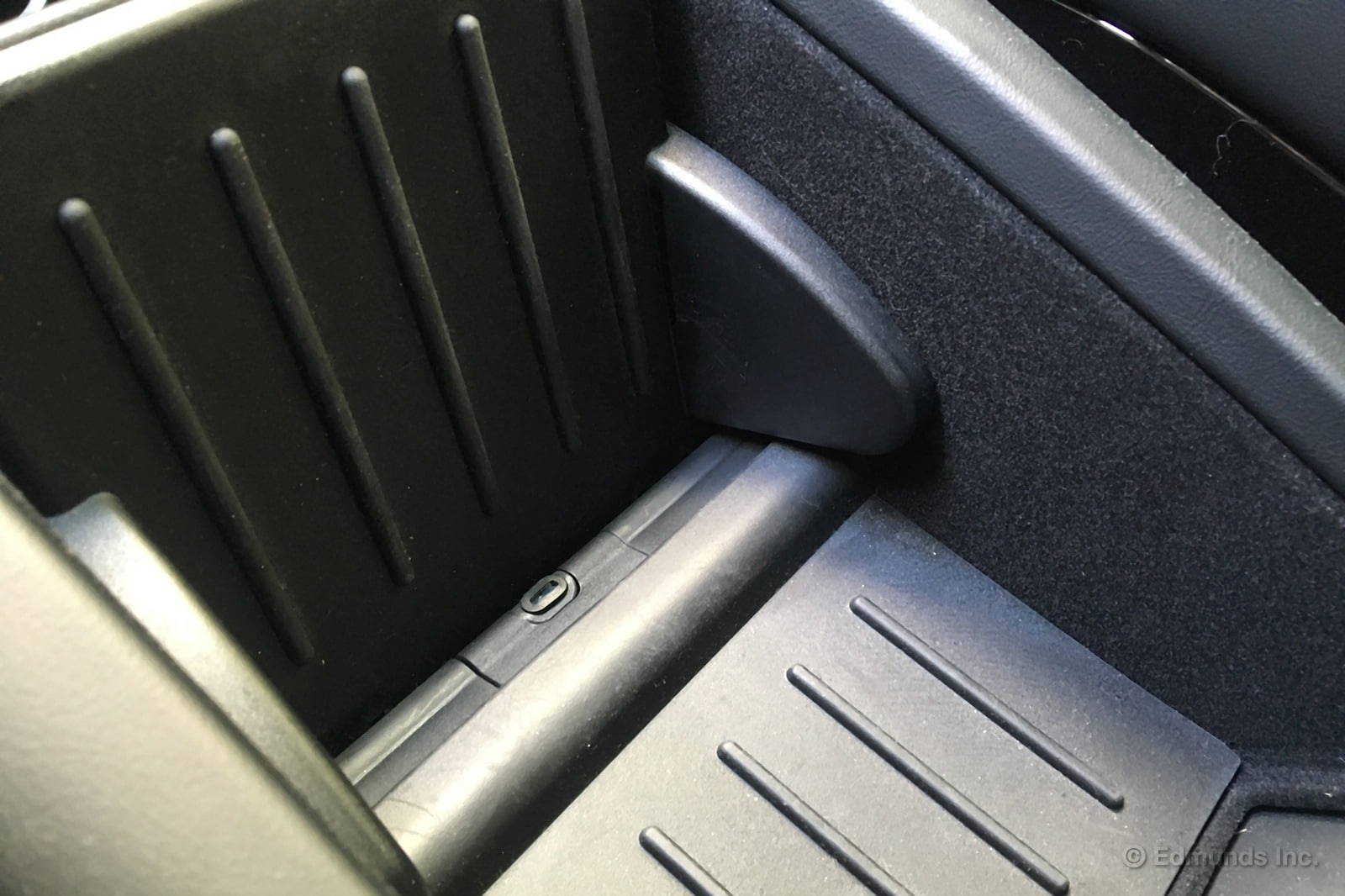
The longitudinal G forces sent my phone rearward relative to the bin and the Lightning plug snapped right off. Fortunately, it wasn't stuck in my phone, it had fallen through the bin and was lost forever.
It wasn't until I notified my colleagues that I found out that there was supposed to be some sort of supporting bracket attached to keep this very thing from happening.
I have an email in to Tesla to try and get a replacement. It appears to be a simple cable held in place with a metal keeper and it has a proprietary plug on the other end. Stay tuned.
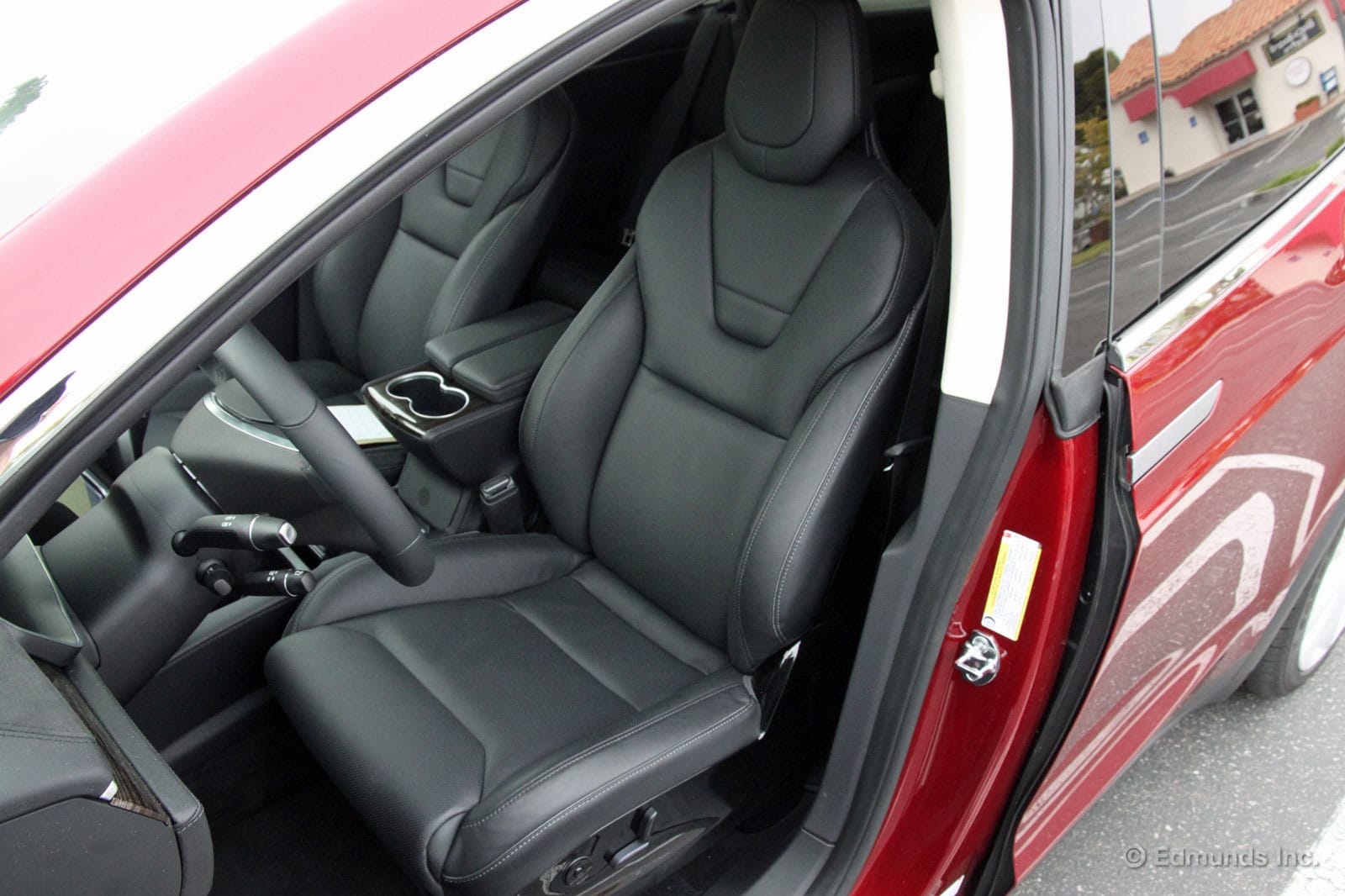
Great seats are one of the things that makes high-dollar luxury cars feel a cut above the rest. The front seats in our Tesla Model X are good, but not great.
First, the good part. The driver's seat in the Model X is far better than the one we had in our Model S sedan. It's well-bolstered from top to bottom with solid support in all the right places. It's a seat that feels fundamentally sound from the minute you sit down. There's plenty of room for tall drivers and it's easy to get in.
So why are they a letdown?
As good as they are, this is a $145,000 vehicle. For that much money the seats should be outstanding. They should have adjustable side bolsters and thigh extensions. They should have a massaging function and pillow-soft headrests.
It might sound like a fussy critique, but the reality is that those are the kinds of seats you get in an Audi or Mercedes-Benz in this price range. Tesla may get a pass from many buyers now, but eventually it's going to have to compete on the same level in every aspect of luxury.
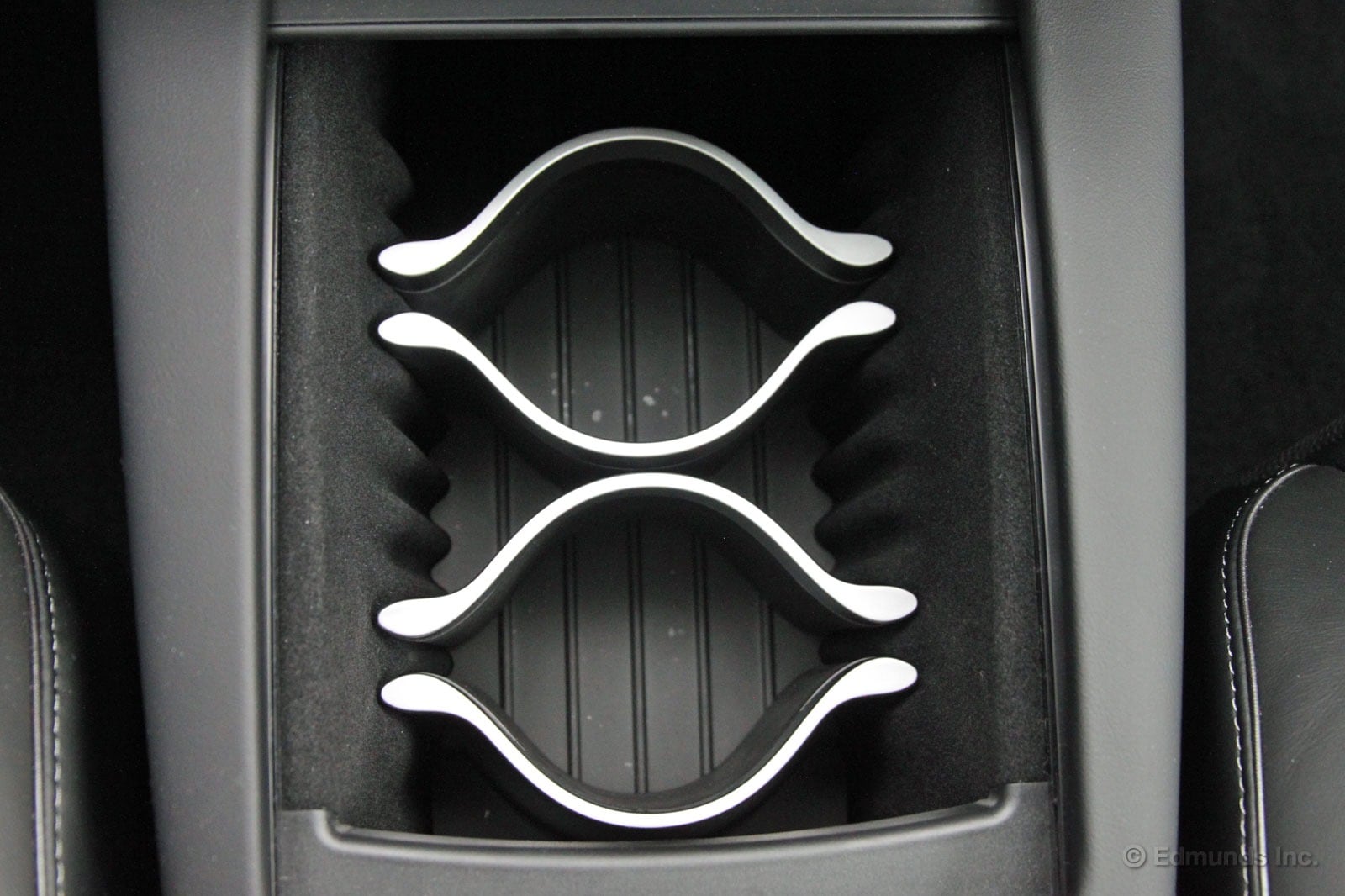
Cupholder design probably wasn't very high on the priority list for the designers of the 2016 Tesla Model X, yet they took a pretty good stab at doing it differently anyway. The result is a nice looking, if not notably superior, setup.
As you can see, it's essentially an adjustable setup for holding two cups. The symmetrical inserts can be pulled out and moved to different slots to accommodate cups of different sizes. It's simple, effective and clean looking.
The only real issue here is that even though there are numerous slots, the level of adjustability is actually pretty limited. You can make one a little bigger than the other and that's about it. If you want to do anything drastic, you have to remove the inserts completely which leaves you looking for a place to stash them.
If there's a silver lining to this design it's the fact that you can remove the inserts completely to give you a little extra storage for things other than beverages. You shouldn't be drinking and driving anyway, right?
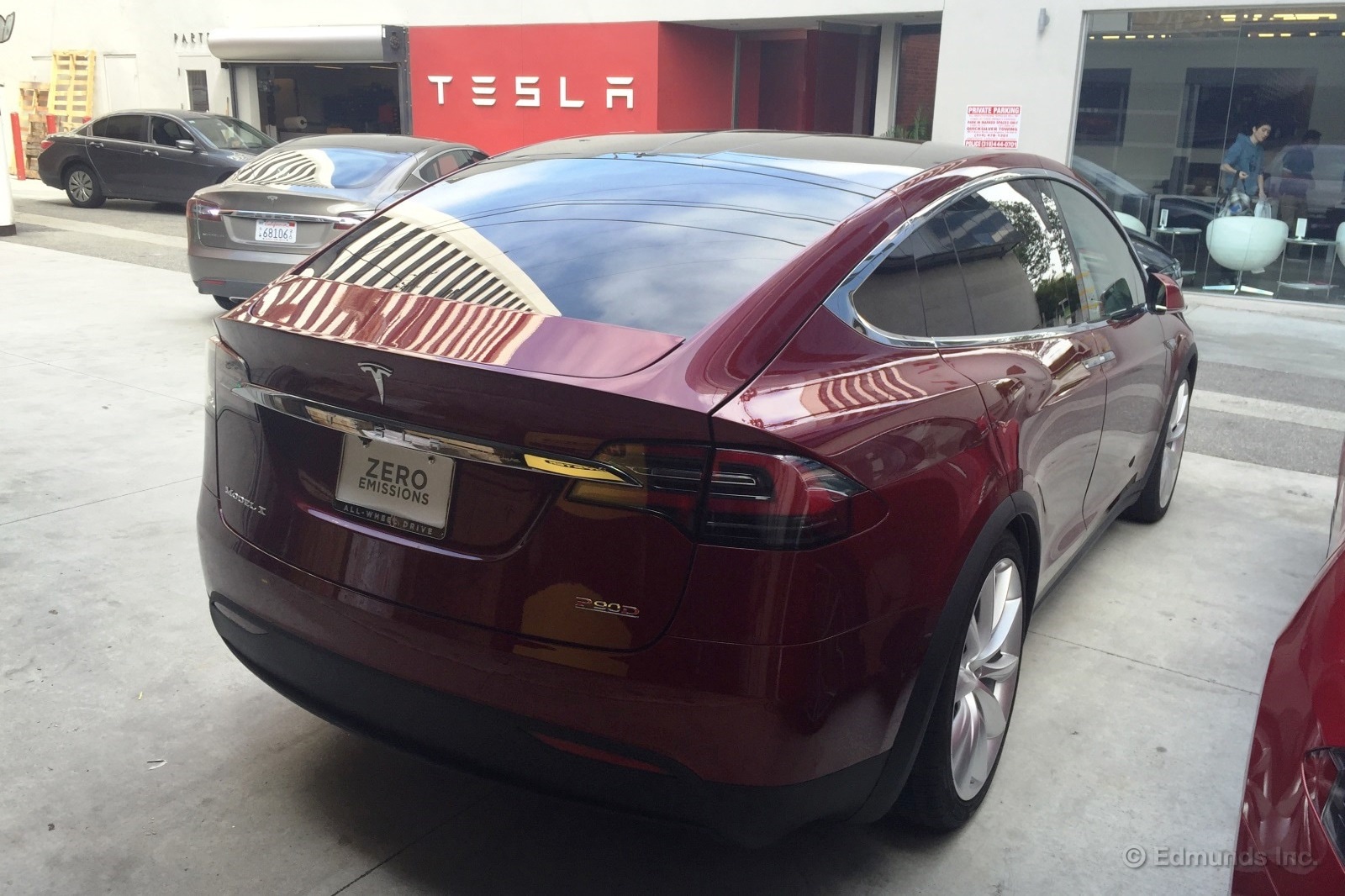
Though the third-row seat recall for our 2016 Tesla Model X had been issued about a month ago, our local Tesla service center didn't have the parts necessary to perform the correction. In the meantime we didn't put anybody in the third row, as instructed, and identified a few issues we wanted them to address, too.
Ultimately the recall was addressed and the issues resolved. The downtime, however, was significant.
We dropped it off to Tesla's West L.A. service center on a Wednesday. The process was very smooth and the staff helpful and efficient. In addition to the recall, I told our service advisor that the horn wasn't working properly (it would only emit the briefest of sounds, more of a blip than a true horn blow), there was a speaker rattle and a slightly cockeyed steering wheel (suspected by us to be an alignment issue to due an anonymously curbed rear wheel). I asked them to install our front license plate bracket, too, which I'd noticed kicking around in the frunk a day or so earlier.
I was told at the time that our Model X would be ready to pick up on Friday.
On Friday I was told that the recall was more involved than they'd anticipated and that it would be ready on Monday.
On Monday they called to tell me it would be ready by end-of-day Tuesday. They confirmed that the alignment was indeed off due to the rear wheel and that they'd goodwill the correction due to the delays.
On Tuesday I received a call saying it would be ready on Wednesday.
I received a call around noon on Wednesday saying it was ready for pickup. They'd charged it up and there was no bill.
Given our experience with our Model S, during which its entire drive unit was removed and replaced in the space of one day, this duration was unexpected.
Cost: $0
Days out of service: 7 (5 business days)
Using an EKM Meter to Track Power Consumption

Electric cars are fundamentally different from gasoline ones on many levels, and fuel consumption tracking is no exception. Like many electric cars, our 2016 Tesla Model X has a set of dash readouts that summarize electricity consumption. They display the consumption rate in Watt-hours per mile (Wh/mile) and total usage for a given "tank" in kilowatt-hours (kWh).
Confused? The first is akin to mpg and the second is like gallons.
But there is a bigger problem. Both numbers are drawn from the point of view of the battery. That doesn't tell the entire story for electric cars because of something called charging losses. Imagine pumping 12 gallons at a filling station and spilling two of them on the ground in the process. The car only knows about the 10 gallons that made it into the tank, but your wallet knows about all 12 of them.
This is no clumsy accident when it comes to electric cars. It's another type of routine consumption that stems from the resistance in the long charging cord and the needs of the on-board battery temperature control systems that operate during the charging process. The only way to account for everything the car is using, charging losses and all, is to look at the meter on the pump. But many EV charge stations, including our Tesla HPWC (High Power Wall Connector), do not have the sort of meter found on every gas pump on the planet.
So we added one.
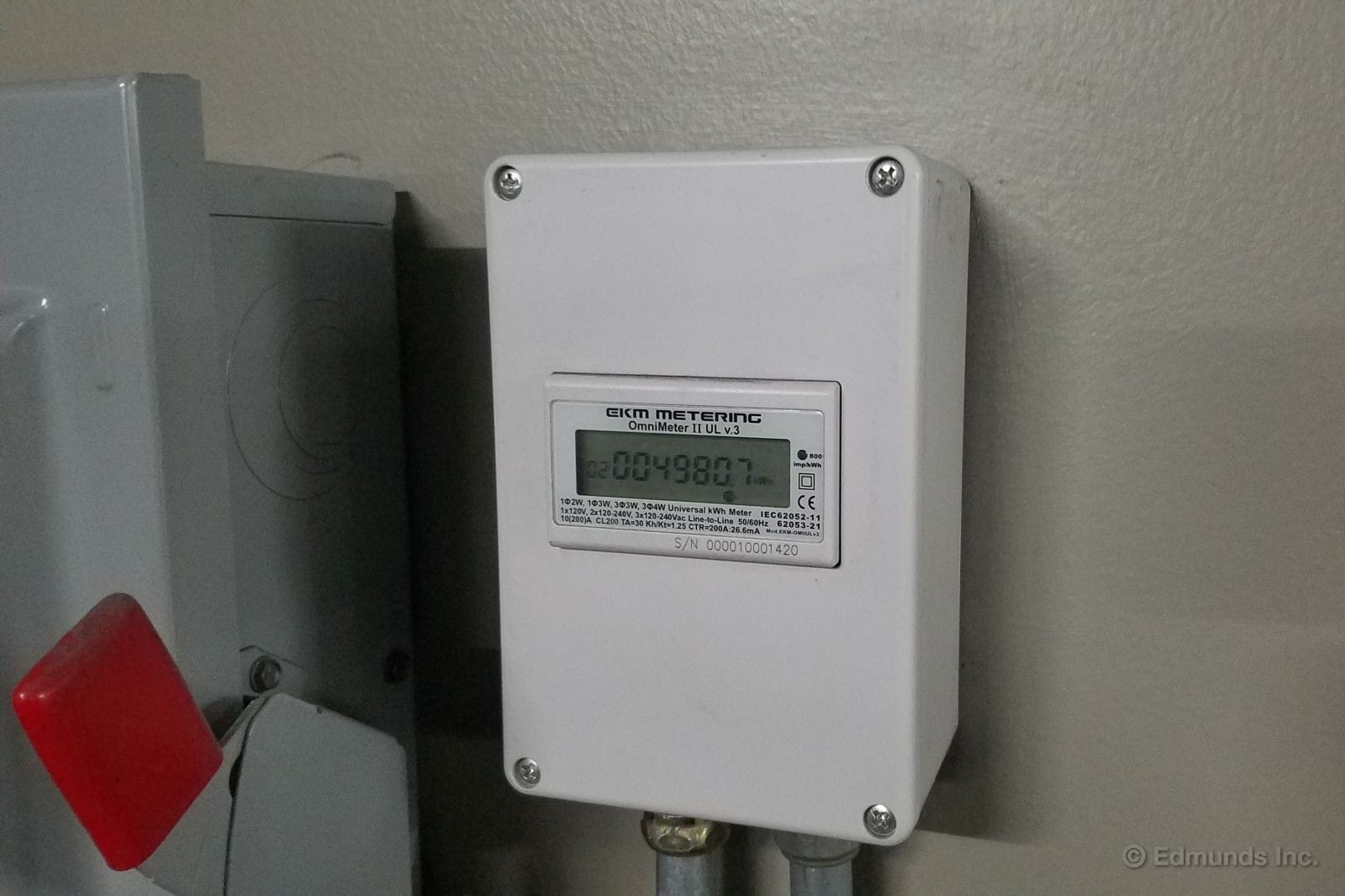
This meter dates back to the midpoint of our long-term Tesla Model S's tenure with us, but I never talked about it much back then.
We chose a product from EKM Metering because it was a simple, inexpensive and effective meter we could add on easily. We chose a model we could mount on the wall where our staffers could write down the kilowatt-hour reading in the logbook, just as they would record gallons at a gas pump.
It's a revenue grade-meter that lets us track total consumption, which means it doesn't have a reset button. It's more like an odometer than a trip odometer, so we record the necessary kWh figure at the plug-in and plug-out points of each charge and look at the difference. EKM sells more sophisticated meters that automatically transmit data to the cloud, but our HPWC installation is buried in an underground parking structure.
With a little help from an Excel spreadsheet this setup will allow us to track the true consumption of our Model X. Tesla's in-car meter is great for driving style feedback, but our EKM meter is where the money part of the story lives and breathes.
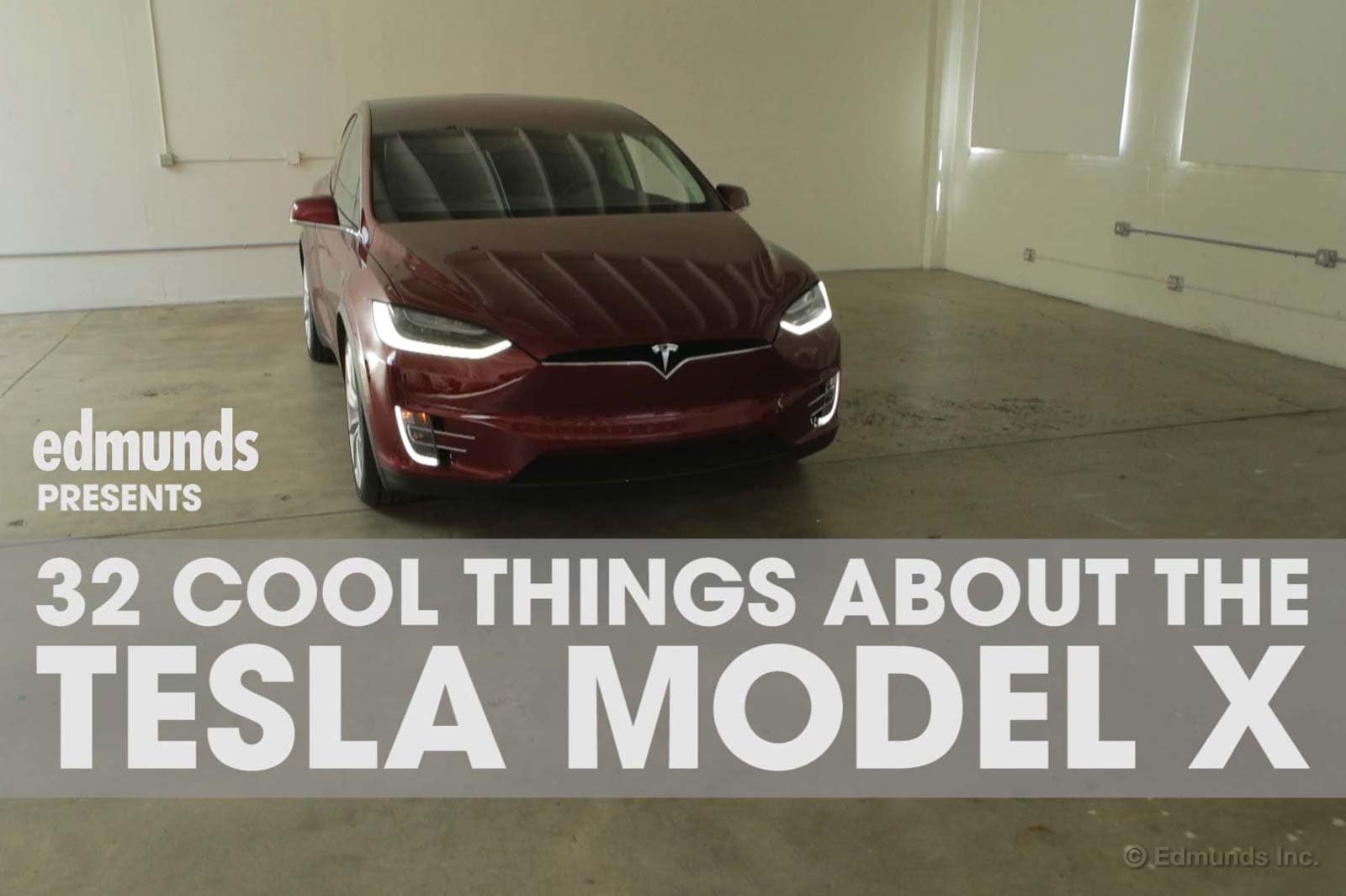
Did you catch the video of 32 cool things about our long-term 2016 Tesla Model X?
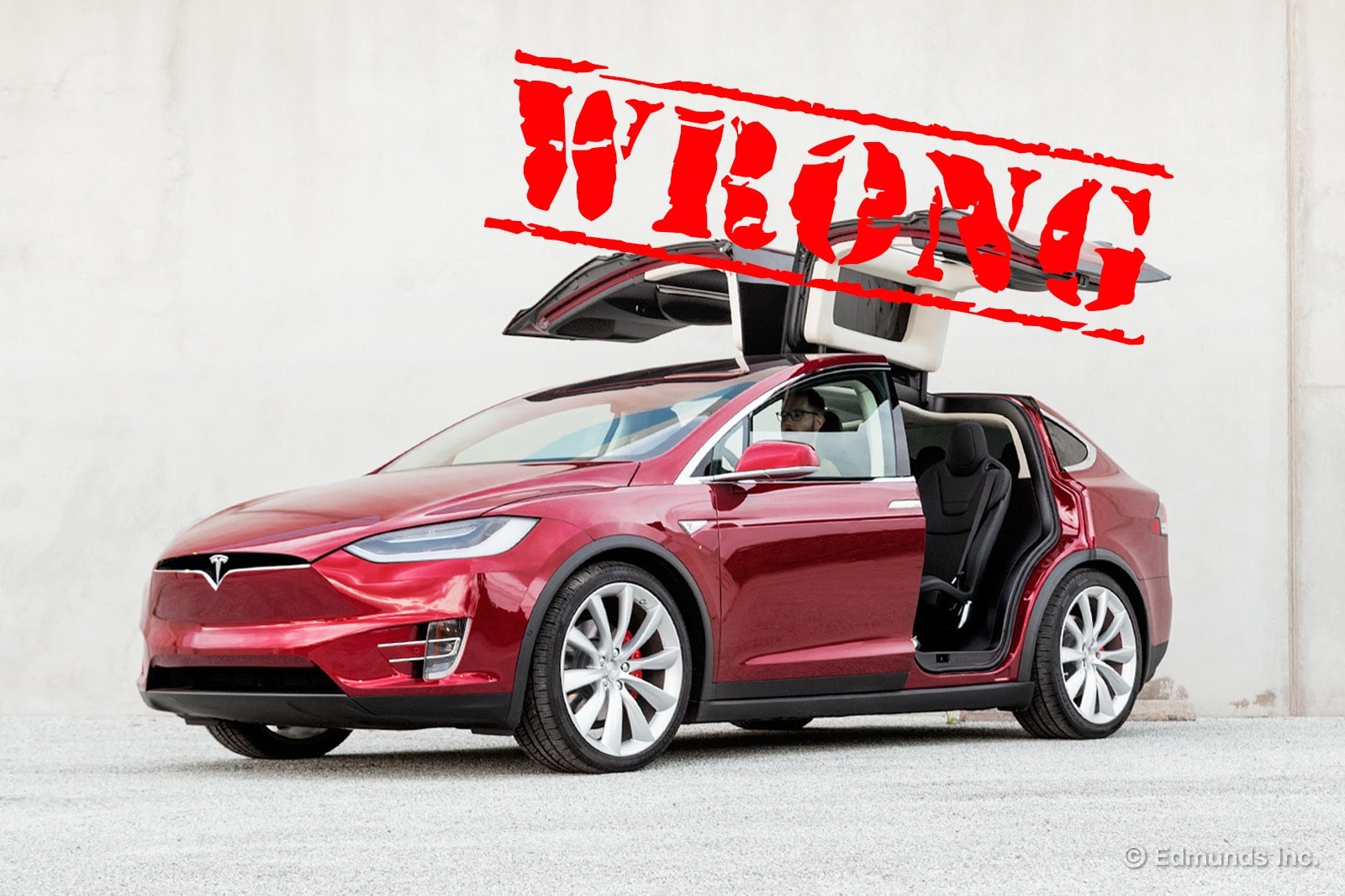
Okay, real talk. The articulating doors on our long-term 2016 Tesla Model X make my blood boil.
First, I'll acknowledge that these doors offer one functional advantage over swinging or sliding doors — they facilitate loading a child safety seat. The articulating door takes a portion of the roof up with it, leaving a nice open space in which to stand fully upright when loading a child seat.
In every other way I can think of, the articulating doors (what Elon Musk cringingly dubbed "Falcon Wing" doors) are a big compromise. Let's tick off the ways:
1. Because part of the roof is now the door, you can't mount a roof rack or roof-mounted cargo box atop the Model X
2. No door pockets or cupholders allowed. Unless you want those things dumped on the ground
3. They're slower to operate than any manual door
4. You have to stand away from the door after pressing the release button on the door, else the sensors detect your presence and only open partially
5. The doors are incompatible with garages with low roofs. This includes operating the doors inside many/most home garages when the garage door is open
6. Close parking quarters can result in a partial door opening. Perhaps not any worse than a swinging door in this regard. Plus, our Model X has the "summon" function, which helps. A minivan's sliding door, however, will open fully in virtually any gap into which even a slim person can physically squeeze
7. With their electric motors, sensors, additional hinge points, et al,, they're almost certainly much heavier than other doors
8. Speaking of weight: because part of the roof is now the door, the chassis is structurally inefficient and thus heavier than it would otherwise be
9. The operating mechanism is located at the highest point of the car, raising its center of gravity
10. When it rains, it had better be falling straight down, otherwise it's going to blow in through the huge opening and soak the leather and/or your butt
11. Snow on the roof will be snow on your seat
12. Presence of doors in roof leaves no space for a proper sliding sunshade between the "receding hairline" windshield and the door openings. Instead we get a cheesy K-mart-grade fixed sunshade
13. The corner of the articulating door sometimes rests right at forehead height of exiting front passengers
14. The articulating doors are over the rear passengers, not the driver. The rich dude that buys one of these wants to own his Lambo flashbacks for himself, not his whiny kids. They need a sliding door
I could further speculate: potential reliability issues (ours has been fine so far; other owners have not been so lucky), sealing challenges, complicated extraction following a rollover event... not to mention that everyone feels a moral imperative to photograph their X with the doors open. All. The. Time. Would you take pictures of your Miata with the doors open wide? No, you wouldn't.
Don't believe anyone that tells you the Model X's articulating doors were chosen for their superiority over other doors. After living with them it's clear they exist simply for the initial wow factor; to win over people that are too insecure to accept that the lowly minivan's power sliding doors are a superior solution.
The only reason these doors are famous is because they have previously appeared on rare and valuable cars that are rare and valuable because gullwing door production was cut short because those manufacturers realized it was a dumb idea. If Tesla wised up and dumped the articulating doors in subsequent generations, it would make first-gen Model Xs become valuable to future collectors for the same reason.
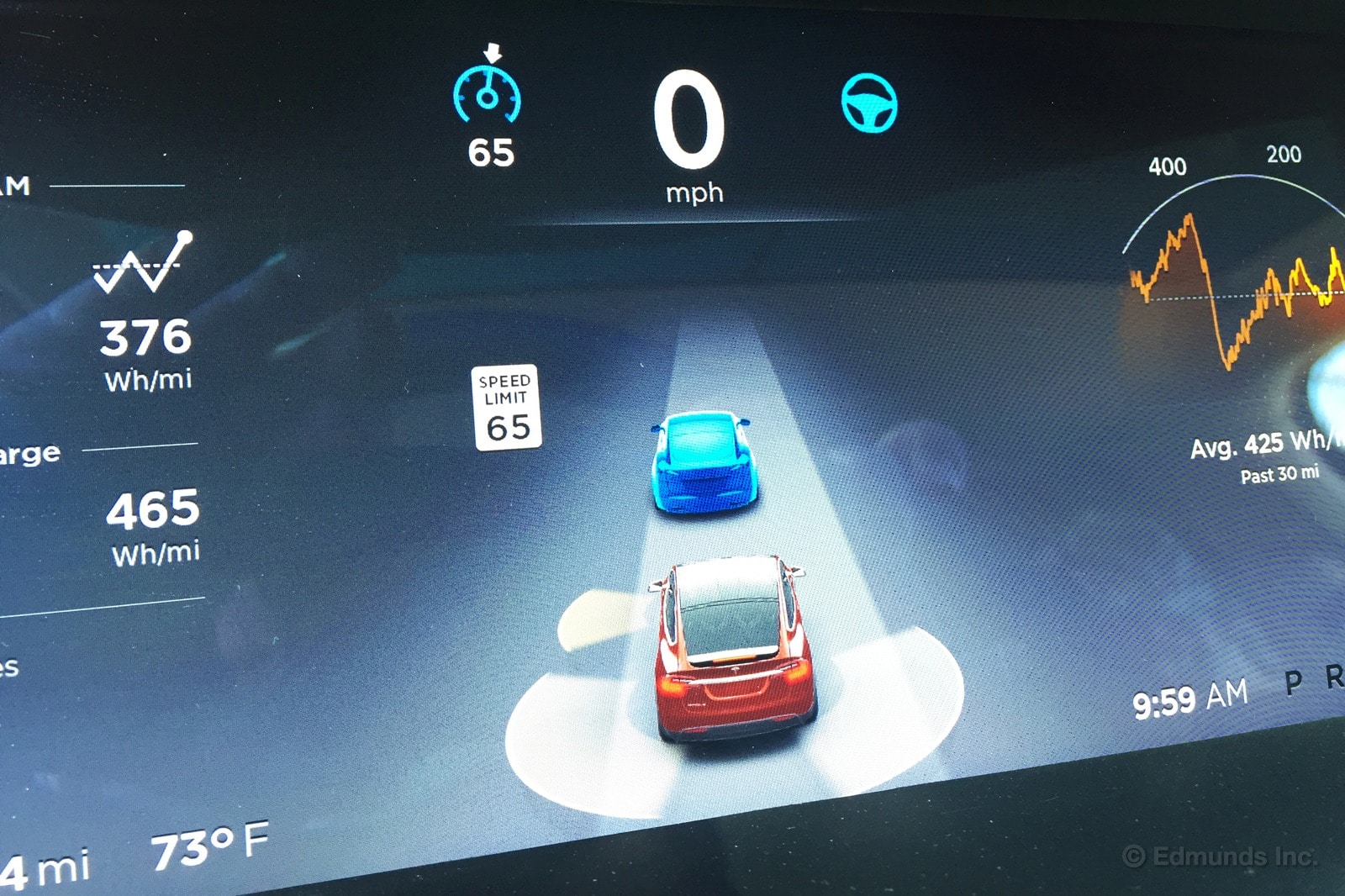
I finally got a chance to take our long-term 2016 Tesla Model X home for a night. My 20-mile commute consists of 19 miles through Los Angeles traffic along Interstate 10, west in the morning, east at night. As terrible as that 80-minute one-way drive may be, it's given me plenty of time to try various new and interesting tech. For the Model X, this meant trying Tesla's Autopilot system.
When the Autosteer is clearly marked as "Beta," it makes me hesitant to hand over full control. While Tesla "requires" the driver to keep a hand on the wheel at all times, I can tell you that I experienced no warnings or repercussions for disobeying. That's counter to other systems that will shut off if they don't detect a hand on the wheel.
When you're driving, the instrument cluster digitally displays the road along with any vehicles that it senses. To to turn the Autopilot on, quickly pull the cruise control stalk twice. When the system is engaged, the digital road is highlighted in blue while lane markers and curbs are made bold.
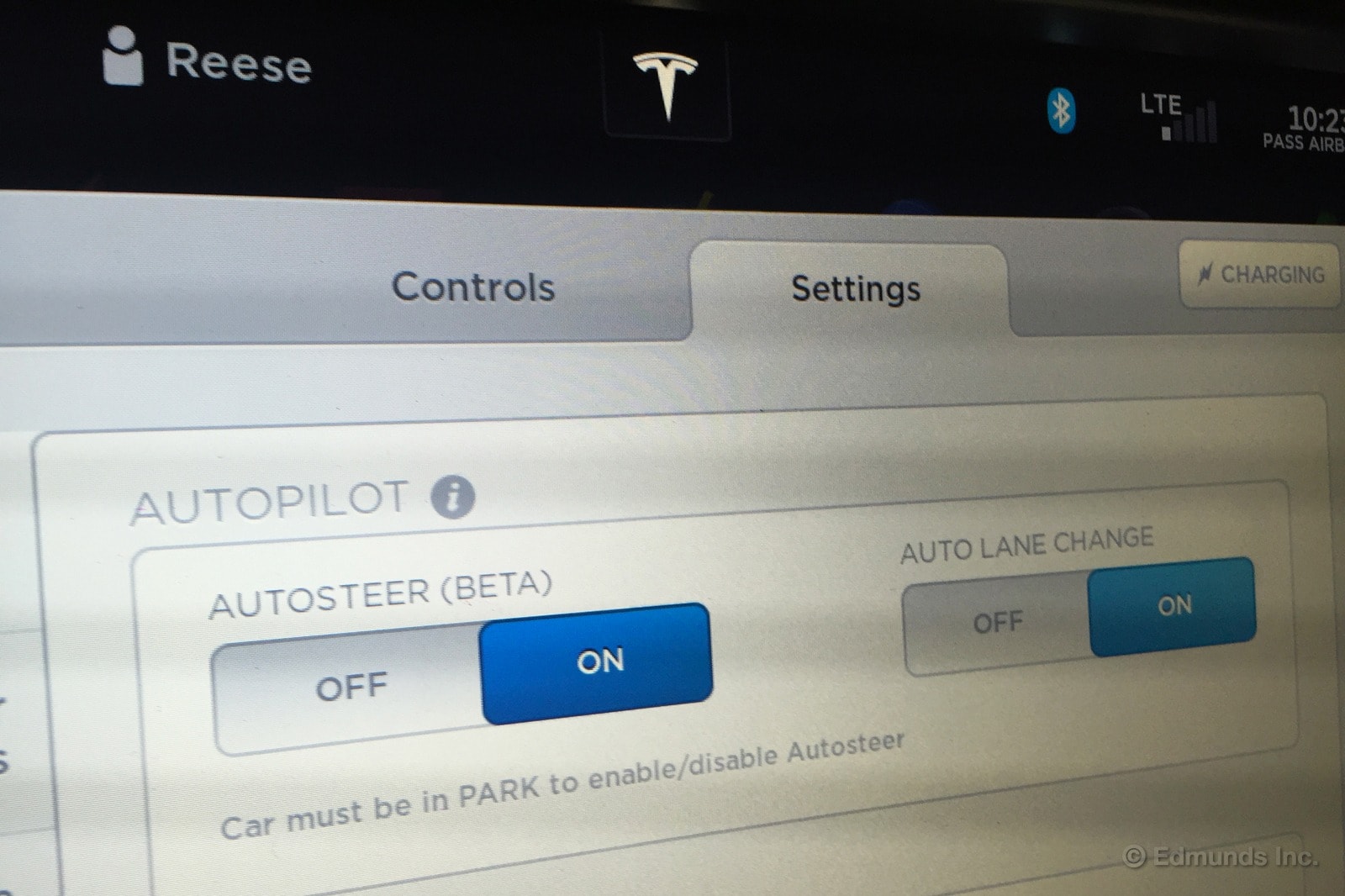
For the most part, the system works pretty well. The Model X followed the cars in front of me at about the same distance I would if I were in full control. Some radar cruise control systems leave a wide gap, allowing other cars to merge in. That would be fine if the system didn't hit the brakes because it suddenly senses a new object in front of you. The Tesla doesn't have that problem, though occasionally it brakes a little harder and a little later than I would have prefered.
I didn't like auto steering as much as the adaptive cruise control. My biggest gripe is the ping-ponging action that the Model X does as it bounces back and forth between the lane markers. It's not obtrusive, but a human driver's guidance is much more natural. Also, the system doesn't behave well while going through tight corners. There were couple of occasions where I had to take control of the wheel. Going straight, though, it works pretty well.
I only had the Tesla for a night, so I didn't get a chance to try the system out on anything outside of my commute. I may have hit 50 mph at one point, but the rest was a slog so I didn't get a chance to experience it at speed either. For my commute, I'd feel comfortable using it everyday, but it will be interesting to see how my coworkers react as they get more opportunity to use the system as well.
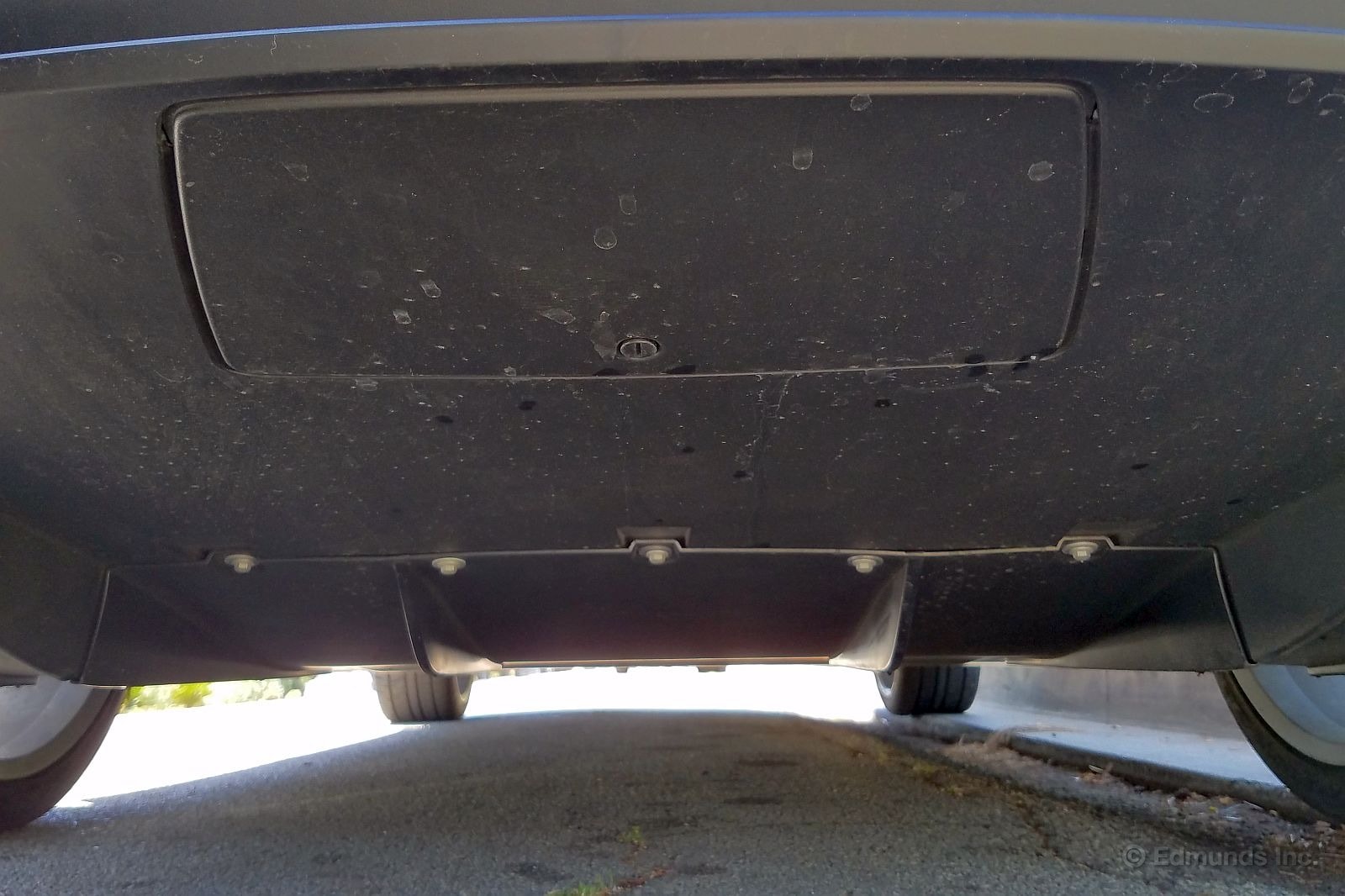
I realize you may have a hard time believing this as a picture of a 2016 Tesla Model X because the shot does not depict or refer to open Falcon-wing doors in any way, shape or form. If it helps, feel free to imagine them flying high up there somewhere.
But the closed door/hatch that you see here is a Tesla Model X giveaway, just the same. It conceals something the Model S does not have: a built-in trailer hitch that gives the Model X plug-and-play towing capability of a sort you might not have seen before.
Thus-equipped, a Model X can tow as much as 5,000 pounds, but that only applies if you stick with the standard 20-inch wheels and tires. Opt for the 22-inch rubber (or buy a Signature, like we did) and the rating drops to 3,500 pounds.
But the hitch isn't just for people that tow trailers. The presence of those Falcon doors you are currently imagining makes it impossible to fit a bike or ski rack to the roof of an X. You'll need to use a hitch-mounted rack for anything like that, which means this hitch is destined to be a must-have item for a large percentage of Model X buyers.
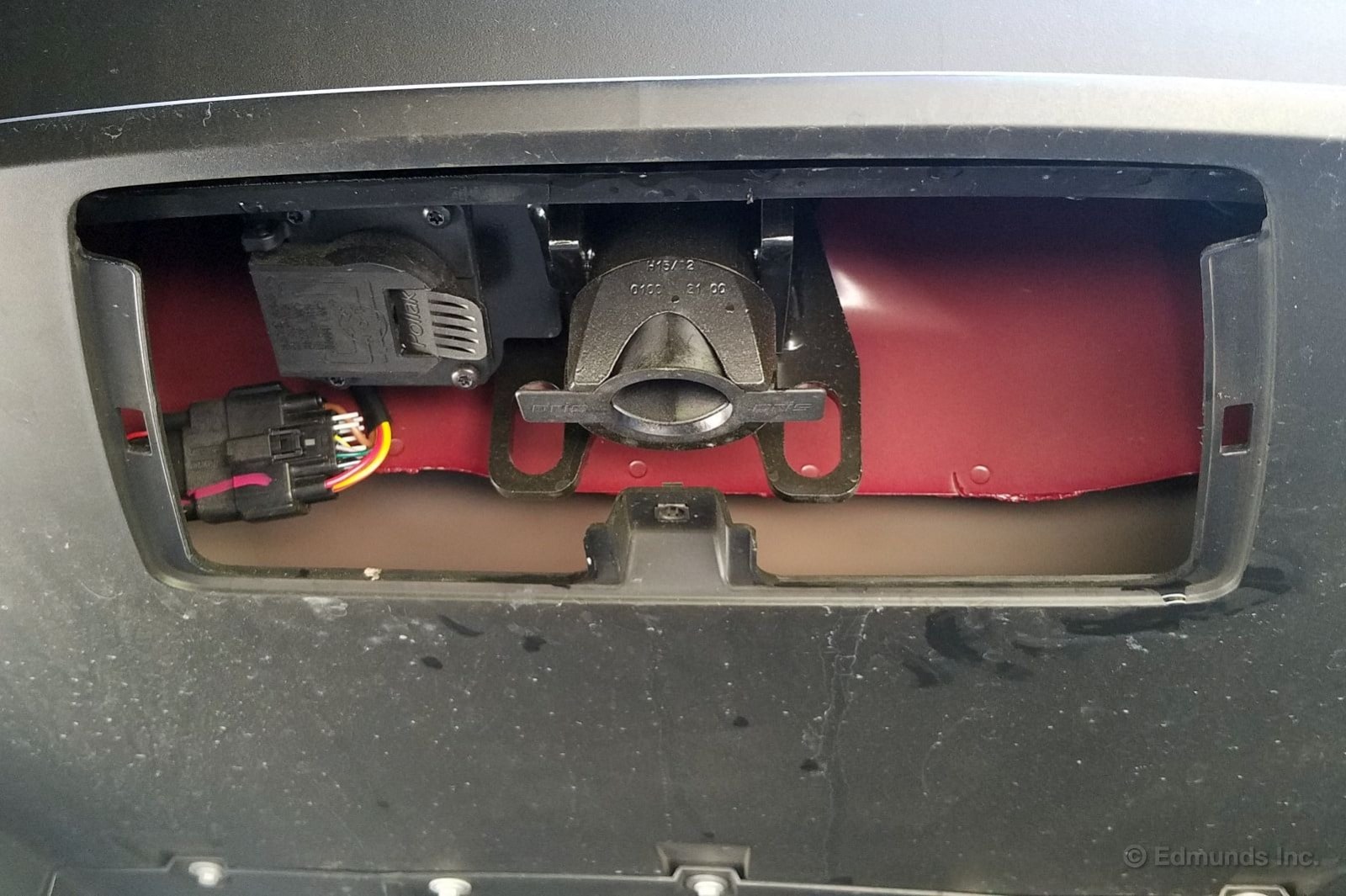
You won't find the usual 2-inch receiver when you open the hatch. Instead, you'll see a giant downward facing socket that's protected by a plastic plug to keep dust out, a couple of loops for safety chains and a seven-pin connector that supports electric trailer brakes.
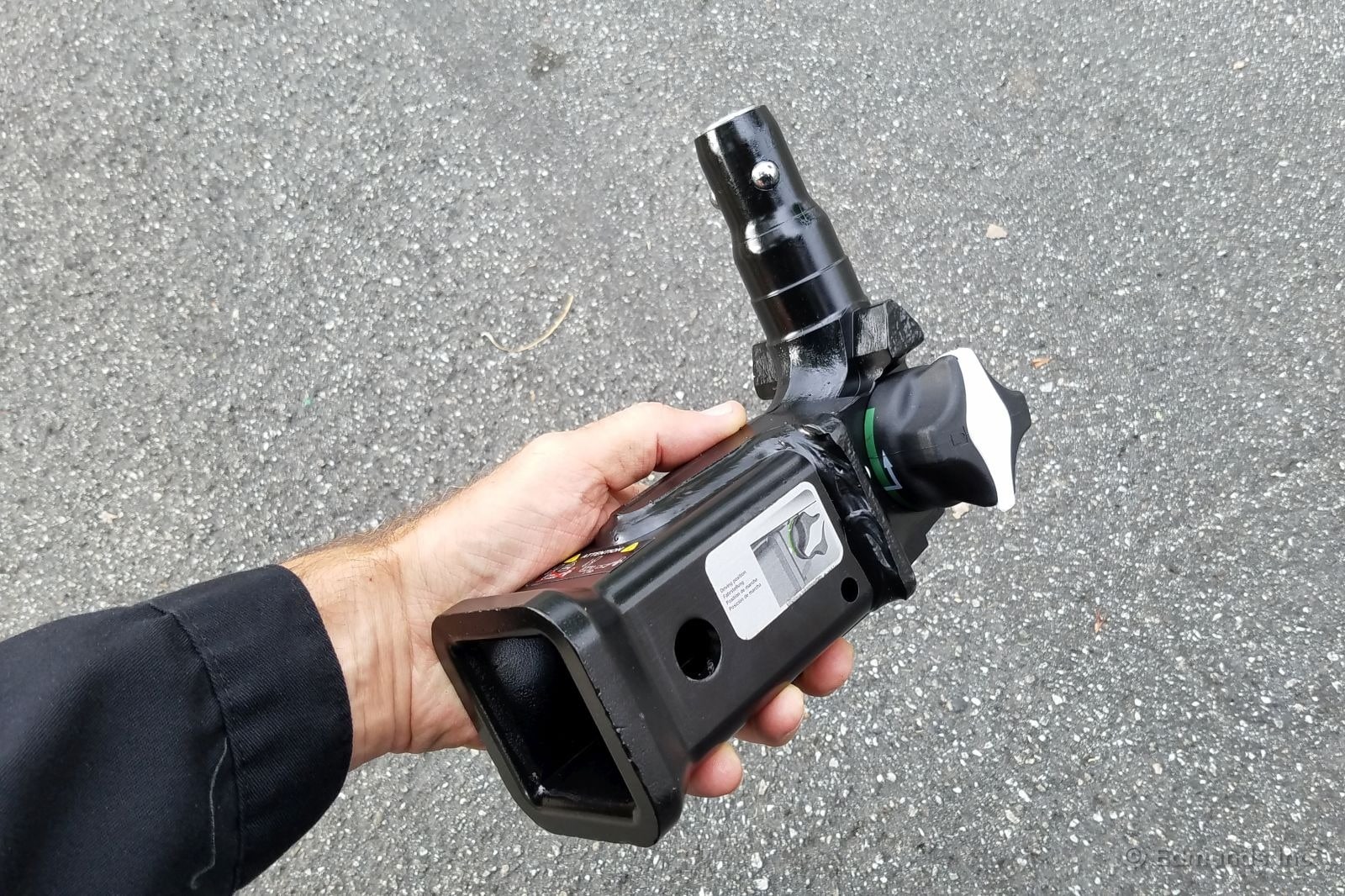
The receiver itself is an odd-looking duck that comes in a plastic bag in the trunk of the car. It has a prominent twist-knob, and there are some keys. It's not immediately obvious how it all works, but the process is explained in glorious detail — with pictures and everything! — after drilling into the on-screen owner's manual to Driving/Towing a Trailer and then scrolling to Connecting the Trailer Hitch Receiver.
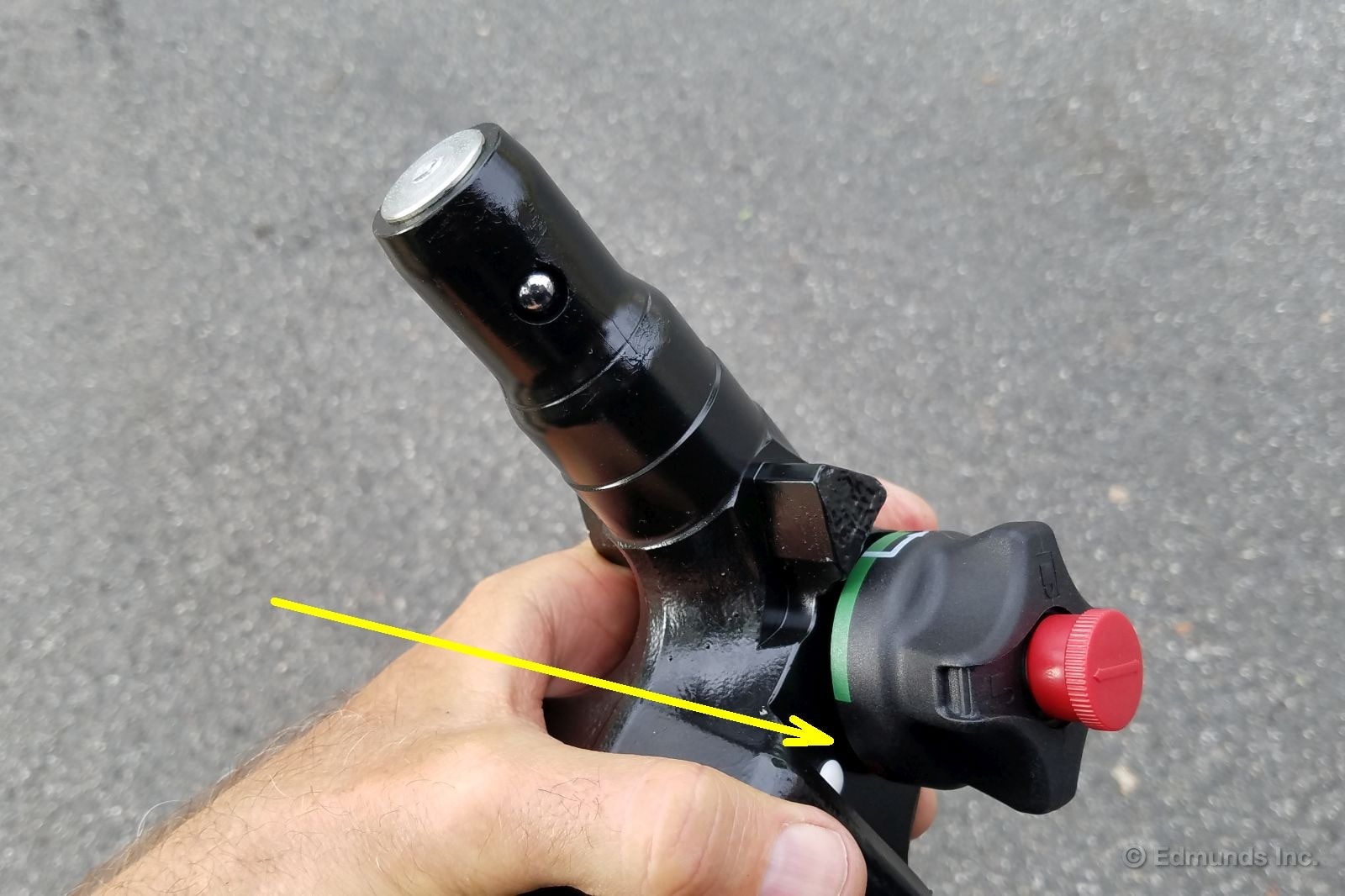
Start by inserting the supplied key (that red thing) and turning it to the unlock position. Now you can pull the knob out and turn it clockwise about one-quarter of a turn. There's significant spring tension to overcome in doing this, and when you've turned it far enough you'll feel a strong click as the white indicator dot lines up with the a red mark at the base of the knob.
You've just cocked the hitch retaining mechanism.
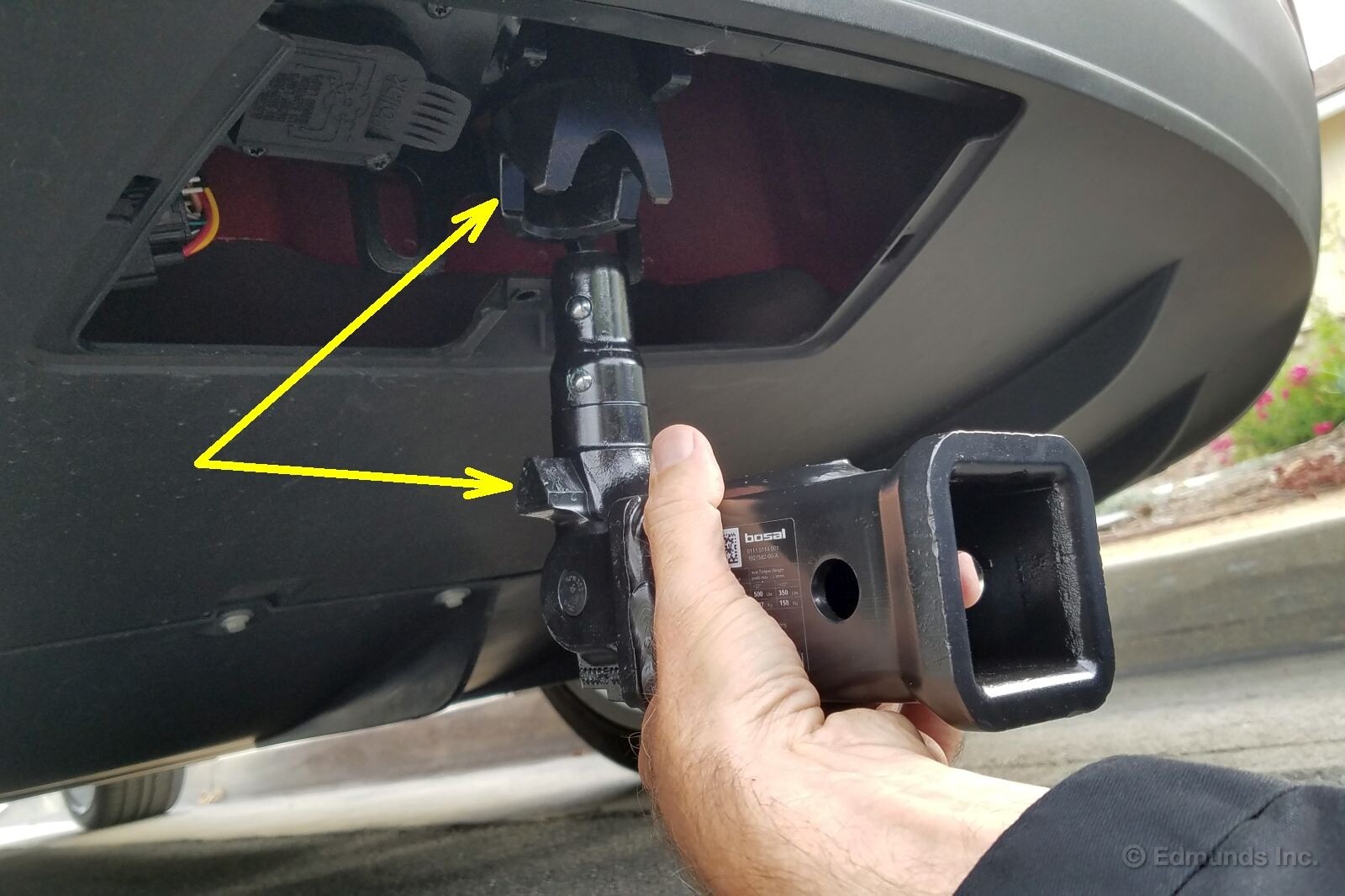
Now you can insert the hitch into the socket, taking care to align the triangular wedges that prevent it from rotating. This is not a pivoting hitch.
There are three upper balls and one lower one. The single one is a trigger that gets pressed in by a wedge as the hitch is fully seated in the socket. This triggering action unleashes the stored spring tension in the mechanism and drives the upper trio of balls into a hidden retaining groove that holds the hitch in place.

At this point the knob has snapped back to its original position, with the green band back in line with the dot. Turn the key to the lock position, pull it out, and flop the white strip back into place.
The knob can no longer turn. The balls cannot be released. The hitch is now ready for use.
Needless to say, don't lose those keys. The hitch cannot be removed unless the key is present and turned to the unlocked position. You basically re-cock it to remove it, and if you want to store it with the tension released you must press the trigger ball in firmly with your thumb, taking care to keep your fingers away from the knob as it snaps back into the rest position, then remove the key.
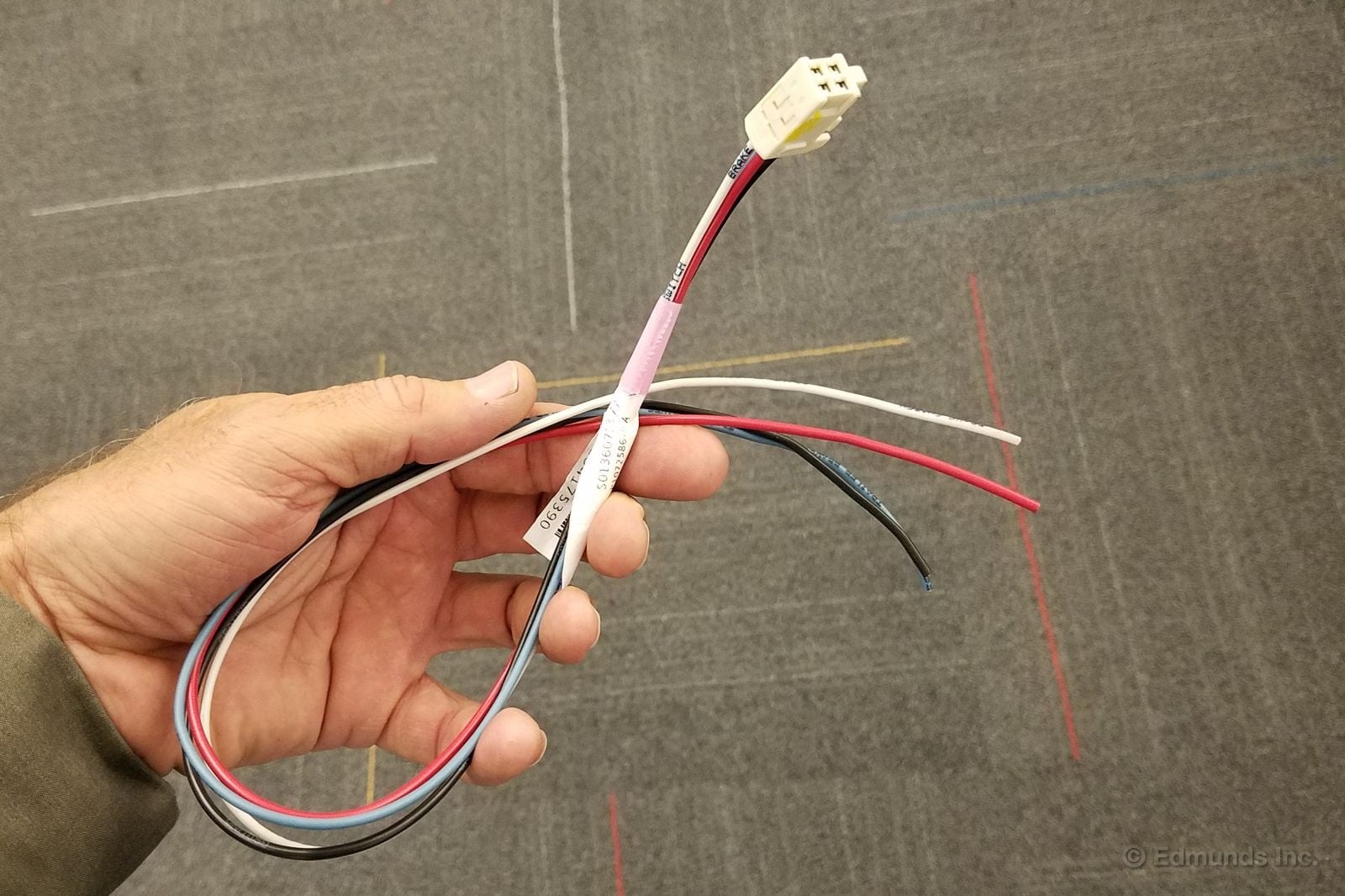
That trailer socket is a seven-pin affair because the Model X supports electric trailer brakes, something Tesla recommends if you'll tow more than 1,000 pounds. This depends on them being present on the trailer in question, of course. It's not unusual for brakes to be absent on trailers in the 2,000-pound range, and most boats have hydraulic surge brakes, which don't need an electric brake signal from the car at all.
In case you do want to hook them up, the hitch baggie also contains a pigtail that's meant to be spliced onto an aftermarket trailer brake controller, much like we did to our long-term Colorado. It plugs into a socket hidden under the dash, which is easy enough, but to complete the installation you must bolt the brake controller to the face of your pristine Tesla dash at about knee level.
Yeah, no, I'm not doing that. Maybe later. Maybe never. We'll see. Or maybe we won't.
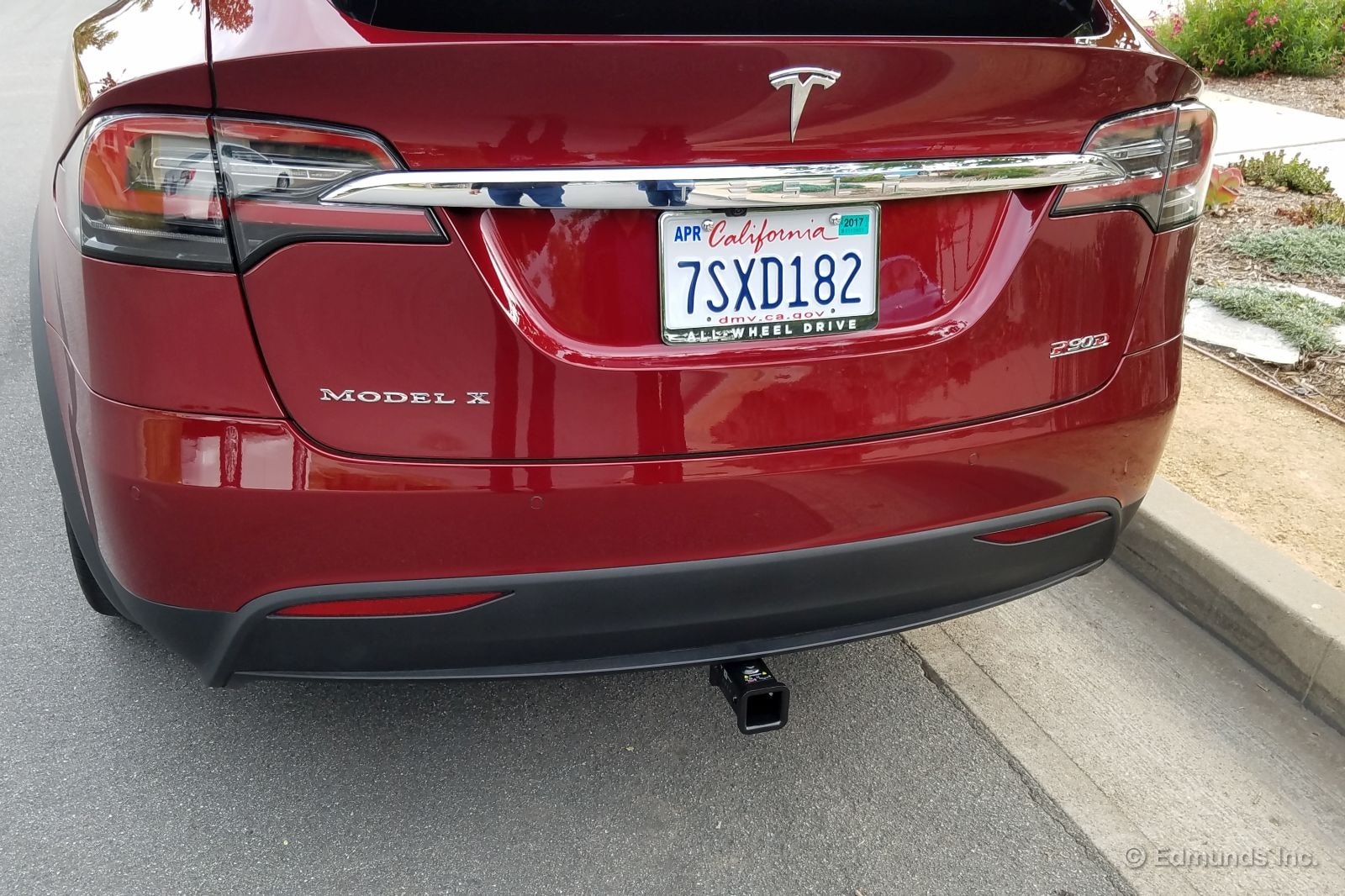
The result is a receiver that pokes out below the bumper, which is unfettered by any sort of unsightly notch. But the receiver is pretty low to the ground. You'll probably have to flip your trailer ball mount upside down so the ball sits above the axis of the square receiver.
Why am I telling you all this? I'm gearing up to tow a trailer on the Supercharger network with our Model X. I'm not a diver; I'm the kind of person that wades into a swimming pool. So I'm going to start out with something light and work my way up if all goes to plan.
I have serious doubts about range, and I don't want to get stuck out there between Superchargers. I have other questions and concerns, and I'm sure there are potential issues I haven't yet anticipated. Towing with an electric vehicle is something I've never done.
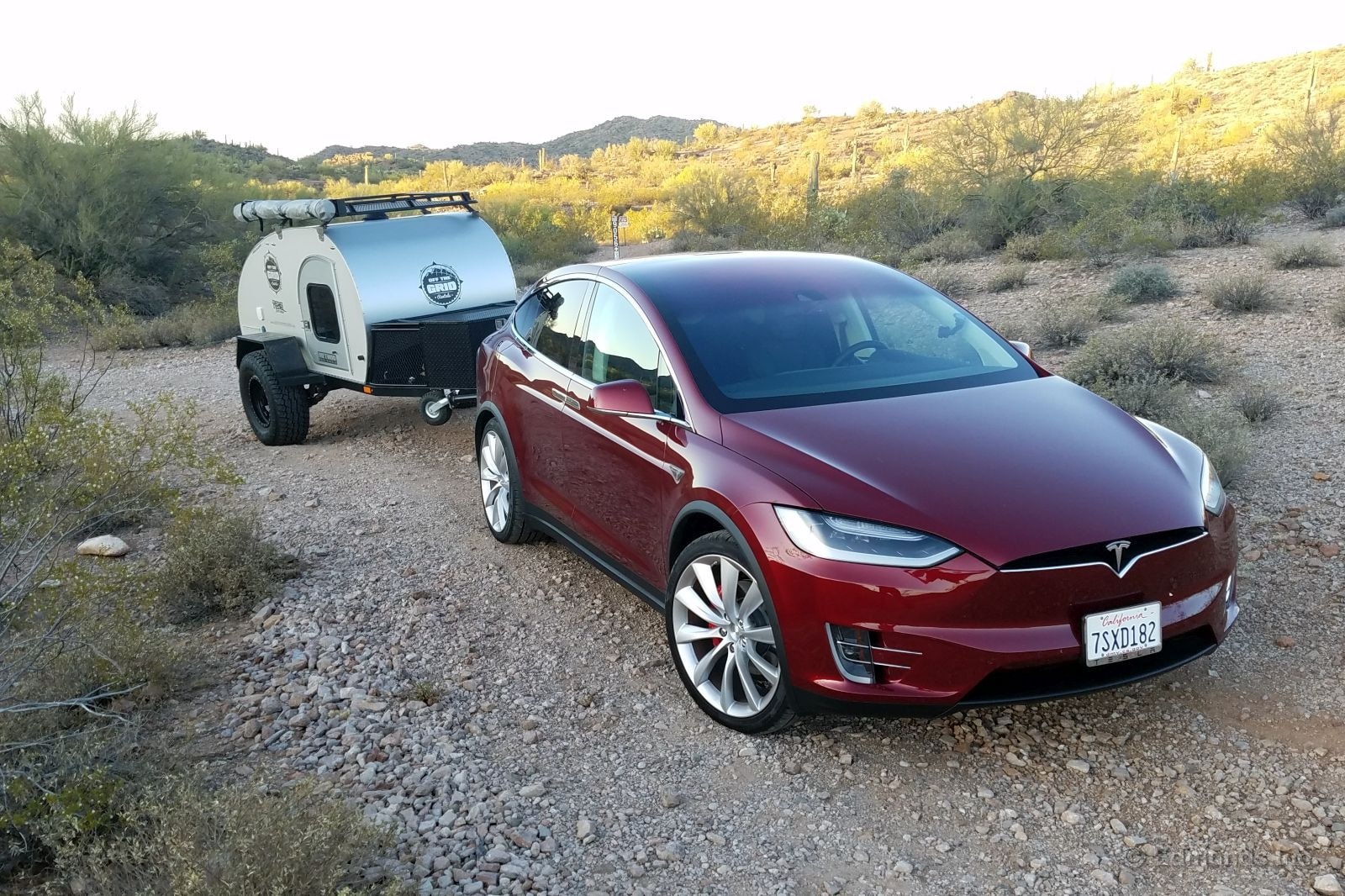
This is uncharted territory for me. For you, too, I expect. I've got loads of trailer towing miles under my belt, but our 2016 Tesla Model X is the first electric vehicle I've ever towed with. There's good reason for that. Before Tesla came along there was never an EV with enough battery capacity to make it feasible, and no nationwide fast-charging network to make it possible to get anywhere.
The Model X is the first EV that's been blessed with a tow rating and factory-installed towing equipment. You've probably already seen my discussion of its unique hitch, but in case you haven't it's best to hop over here and come back. We'll wait.
Weird, right? You probably noticed that the Tesla Model X is rated to tow 5,000 pounds. And that ours can tow just 3,500 pounds because it has the optional 22-inch wheels and tires. But I'm leery of even this modest figure because of the realities of towing out west: mountain grades, heat, desert winds. Amid such nagging doubts I wanted to start small.
These issues were not purely theoretical because I had a specific destination in mind: Flagstaff, Arizona. All of the above factors (and more) would come into play as I headed there on a 1,000-mile round trip to attend a Ram Trucks event at the Overland Expo.
One specific family of trailers seemed to fit the bill. I started looking for a teardrop, and I found a truly outstanding example for hire at Off the Grid Rentals.
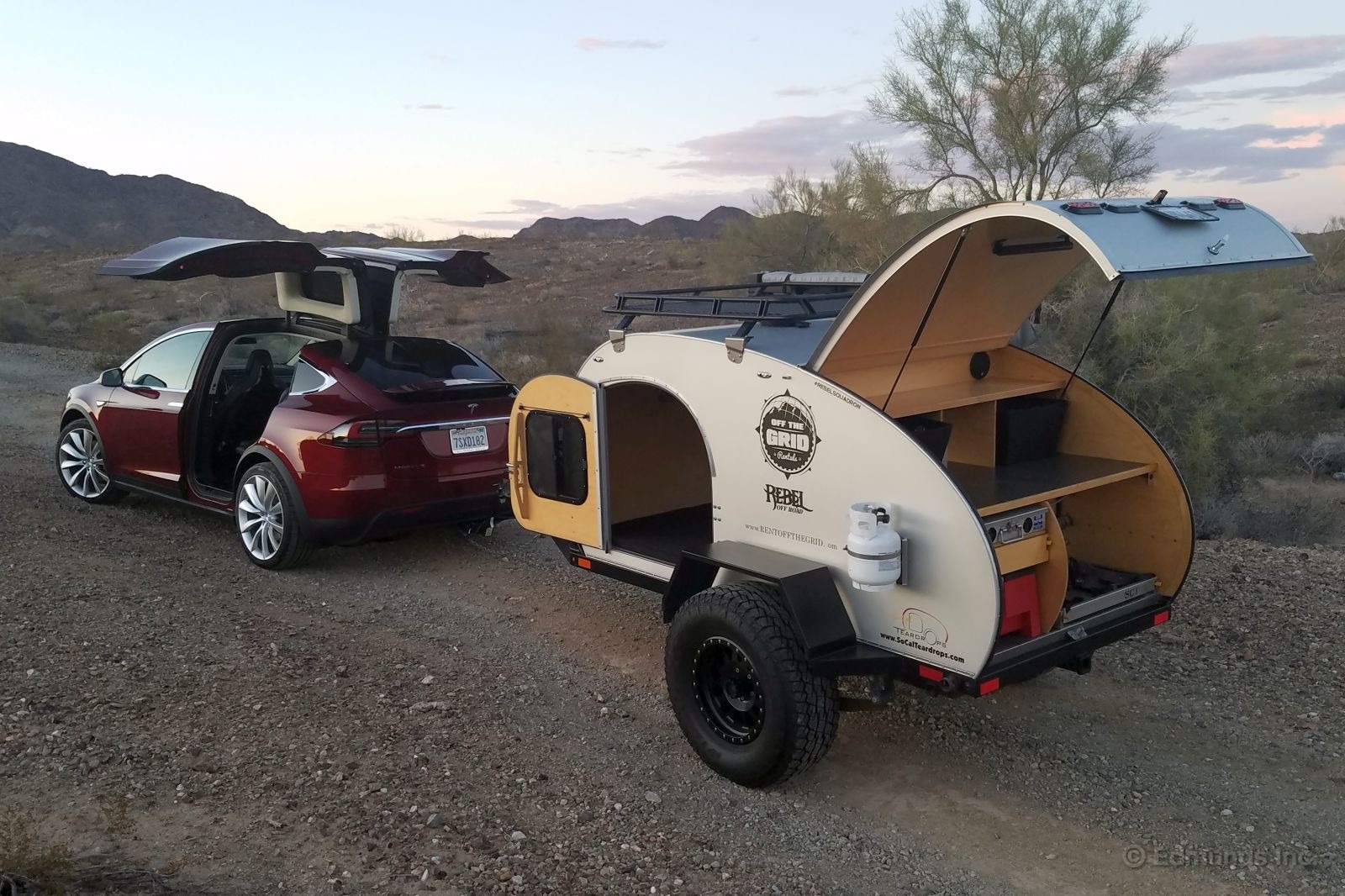
Teardrops are small single-axle trailers with a smooth teardrop shape. They're big enough to sleep in and carry basic gear, but they don't weigh much more than 1,000 pounds. Many have a trunk that contains a kitchen. They generally come in two basic flavors: standard towing height for on-road towing to developed campsites, and lifted off-road ones that can venture off-road to support backcountry camping.
It's pretty easy to guess which category the Off the Grid Rentals trailer belongs in.
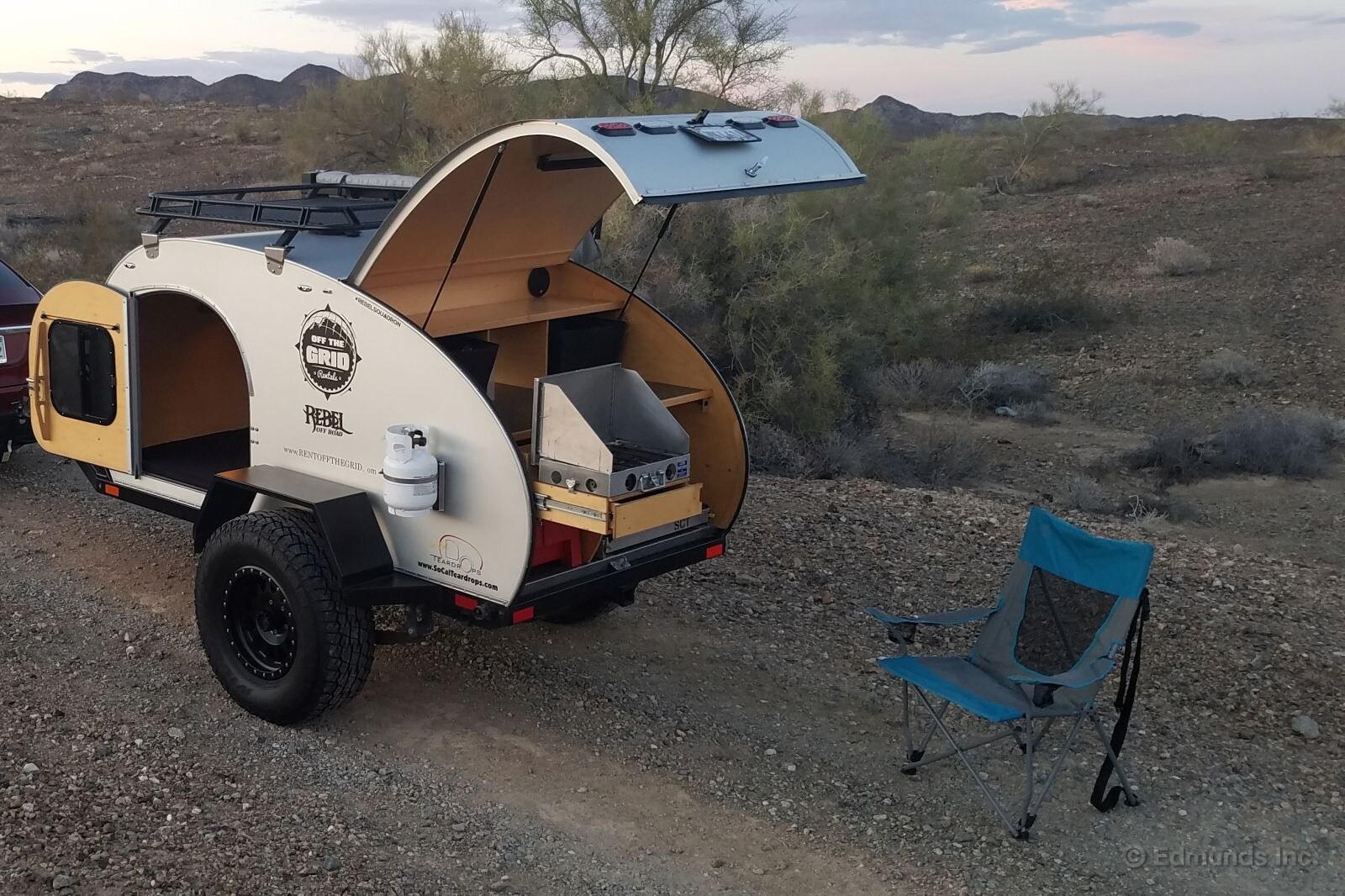
At 1,260 pounds, the OTGR trailer has the light weight I'm looking for on this exploratory towing trip. Sure, it stands taller than a pure on-road teardrop, but I figure the Tesla should have to deal with at least some semblance of aerodynamic drag.
I also like the option of venturing onto dirt roads and camping off the grid — or at least well off the pavement. The idea is to make the Model X the limiting factor, not the teardrop. I got my wish with this Off the Grid Rentals trailer.
There's an awning off one side, and its trunk is a stand-up kitchen with a two-burner propane cooktop, a pull-out ARB 12-volt fridge, a couple of nooks for pots and pans, and some counter space. There's also a removable sink that is fed by a 25-gallon water tank.
Two people can sleep comfortably inside, with the option to sleep two more if you rent the rooftop pop-up tent. I'm on my own on this trip, so that extra expense isn't necessary.
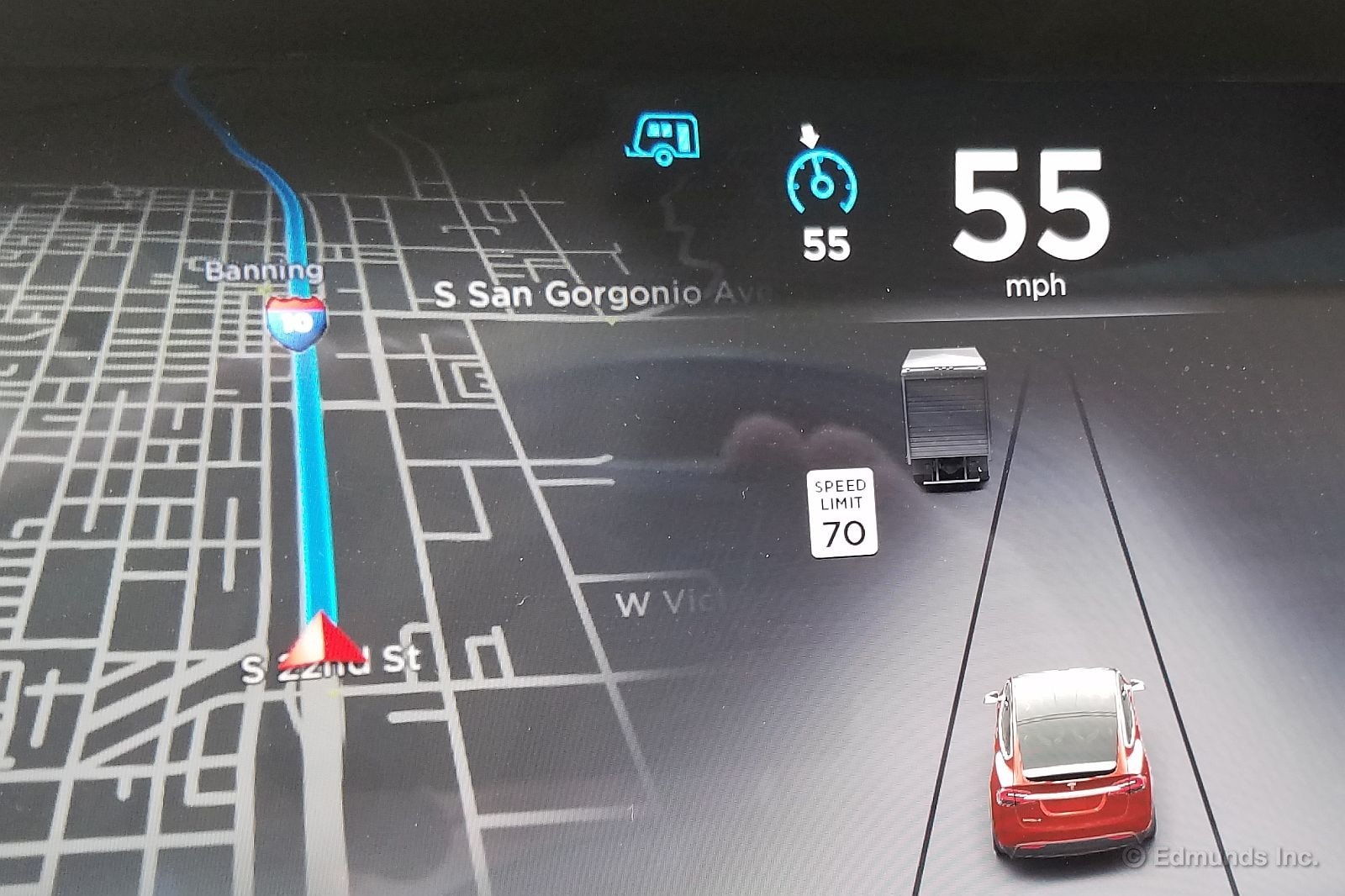
The Model X has a tow mode. You select it on the touchscreen, but if you forget it'll engage automatically when you plug in a trailer harness. The icon glows blue if all of the trailer lights are burning and will turn red if a bulb goes out or the wiring harness comes loose.
Tow mode triggers a few operational changes, too. The automatic-lowering and location-based height adjustment features are disabled (but manual changes are still permitted). Autopilot steering controls no longer function (but the adaptive cruise still operates). And the rear parking sensors are shut down so you won't hear constant alarms caused by the trailer itself.
How does the Model X tow? It's like the trailer isn't even there. Well, almost.
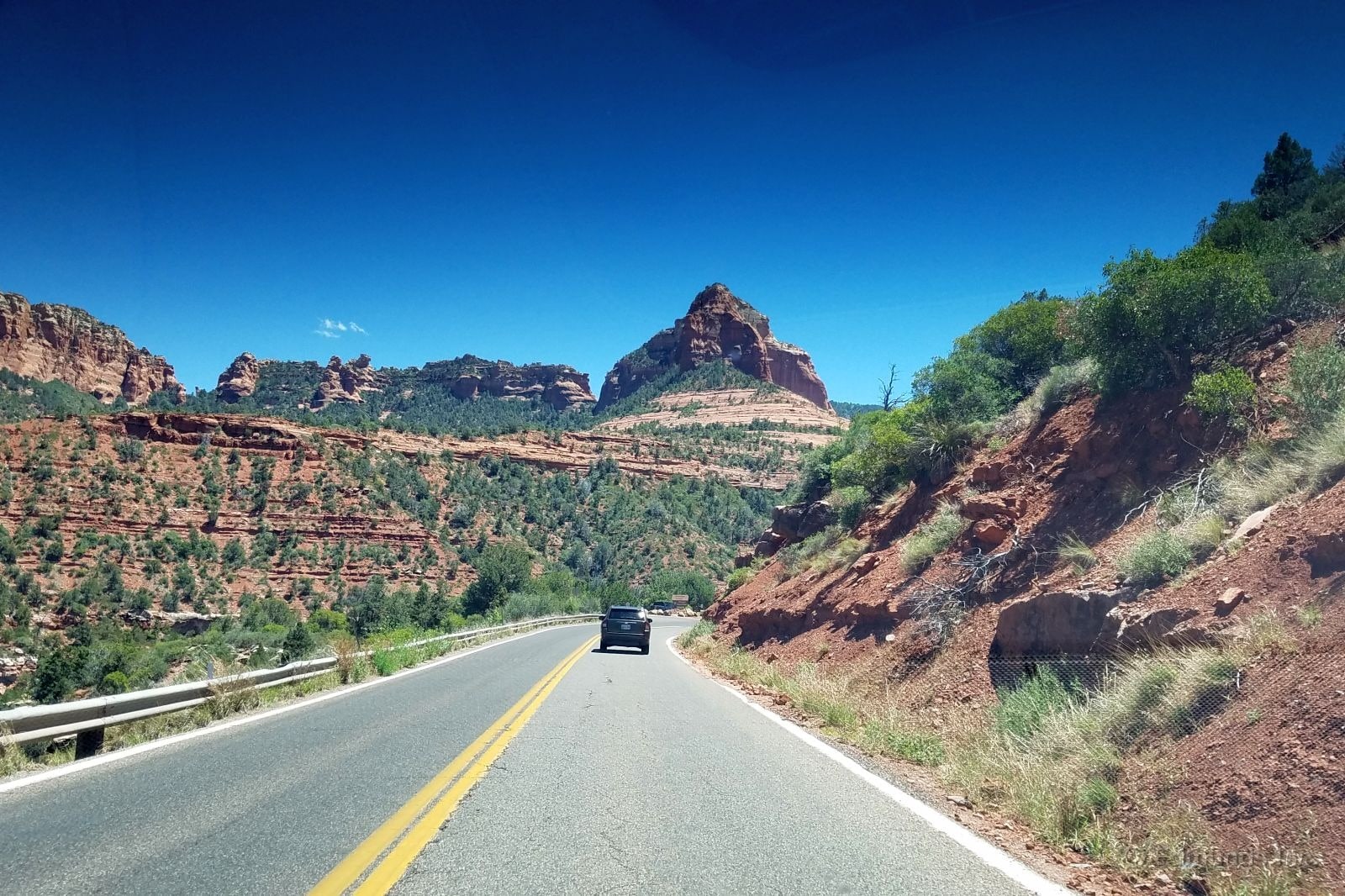
The air-suspension system automatically compensates for the trailer tongue load (admittedly not large here), which means the car's attitude remains flat and the steering stays nicely weighted. Crosswinds and passing big-rigs are a non-events as the X steadfastly maintains a secure straight-ahead feel at all times. The tail does not wag this dog.
When climbing long grades there's no apparent strain as the rig utterly fails to lose the barest whiff of speed. It's a single-speed drivetrain, so there's never any downshifting or increase in powertrain noise. Towing up a hill on cruise control delivers the sensation that the passing landscape merely tips up at an angle as I bear down on struggling semis that must gear down with their four-ways blinking as they bleed off 10, 20, 30 mph of speed. There's a surprisingly deep well of reserve acceleration if I need match the speed of fast-lane traffic when I pull out to pass them, but mostly I just float past on cruise control.
The Tesla's speed doesn't overrun on the downslopes, and when it's time to stop there's more than enough lift-throttle regen action to slow the rig without dabbing the brake pedal, just as normal. It doesn't take long to gauge the proper timing and amount of throttle-lift needed to guide the rig to a stop right where I want. And, yes, the brake lights do come on during such high regen deceleration events — the reflected Model X taillights are plain to see on the aluminum front of the OTGR teardrop.
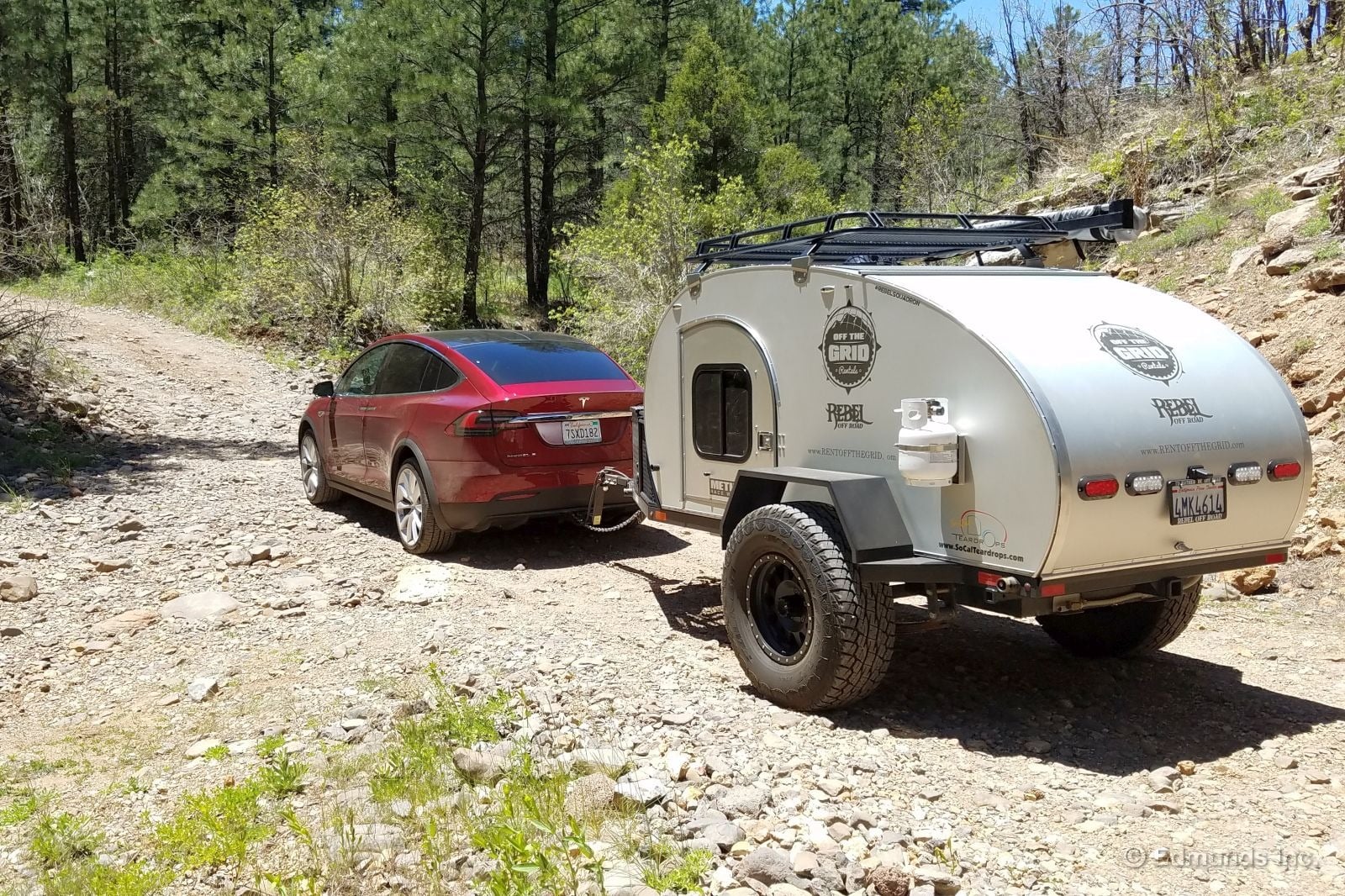
But I'm not interested in spending all my time on blacktop. Up near Flagstaff is a place called Kachina Village, where I detour onto a likely-looking forest service road that cuts between the Interstate and Highway 89A north of Sedona. It's a rocky and stony track, with prominent signs warning that the road is not maintained for low-clearance vehicles. I think about that statement for a bit, crank the air suspension to the Very High setting and press on.
I come upon an old guy in a Jeep Wrangler and ask him what he thinks of my chances. I get the sense he thinks I'm a nut as he studies the mismatch between the sleek Model X and its full-blown adventure trailer. He hems and haws, and in a non-committal sort of way he finally says he thinks I'll probably make it. The "probably" makes me leery, but at least it's not a "hell no." I keep going, figuring I can always turn this rig around.
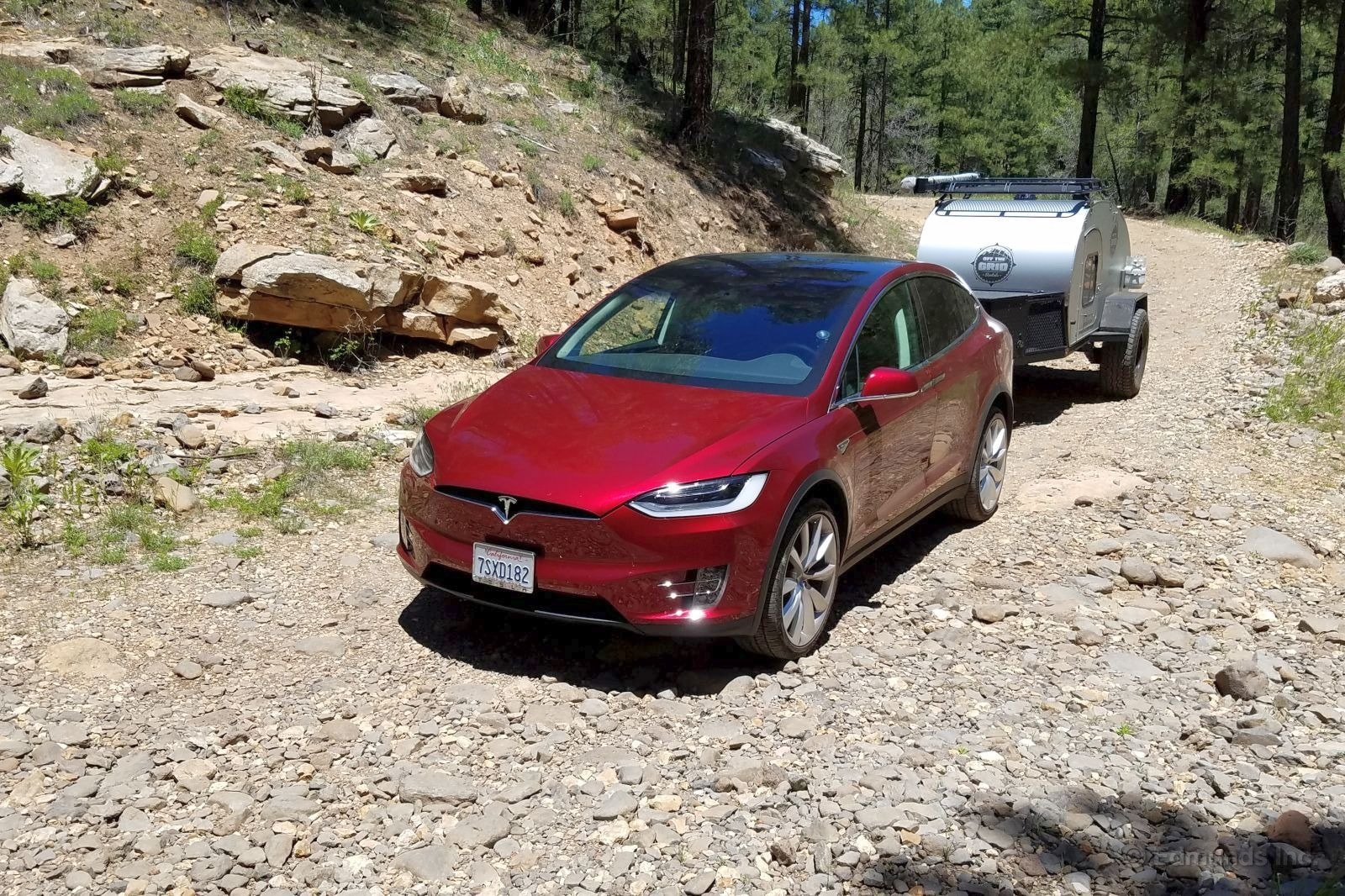
It rained a couple of days previously, which created fossilized tire tracks, crater-like potholes and hard lumps to go along with the pre-existing exposed rocks that look like half-buried tortoises. I pick my way through them for a couple-hundred yards before it goes smooth for a while. The next few miles contain more such lumpy patches, some smooth and dusty spots, a couple of stony dry riverbeds to cross, too-tall rocks to steer around and a fallen three-foot boulder to creep past.
Though they'd surely have to steer to find the smoothest path, this would ultimately be nothing for a pickup or even a CRV. But I've got silly low-profile 22-inch tires to worry about, not to mention a broad expanse of underhanging battery pack. The Model X is no off-roader, but this proves that with a little care and a moderate dose of mechanical sympathy it can certainly make its way to Forest Service open camping areas and unimproved sites — while towing a little something — so long as they aren't too far from pavement and the all-important Supercharger grid.
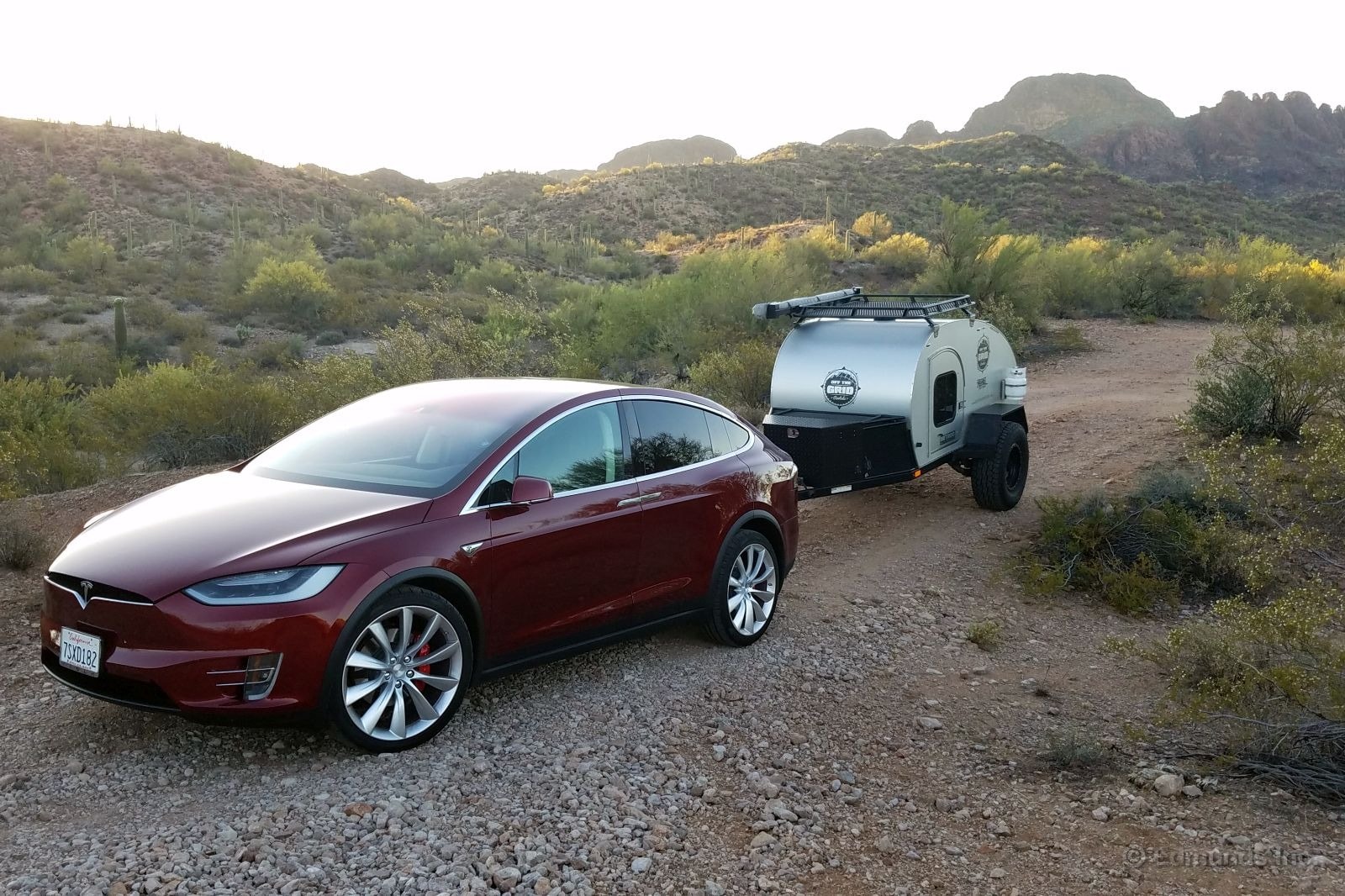
This is just a pass-through shortcut, but the previous night I ended up stopping for the night and sleeping in the OTGR trailer. Near Wickenburg I wandered onto a remote clearing on BLM open land near Vulture Peak and discovered the beauty of the teardrop concept: zero set-up time. With my bedroll and pillow pre-arranged when I left home, all I had to do was hop in and pull my shoes off. I was asleep in minutes.
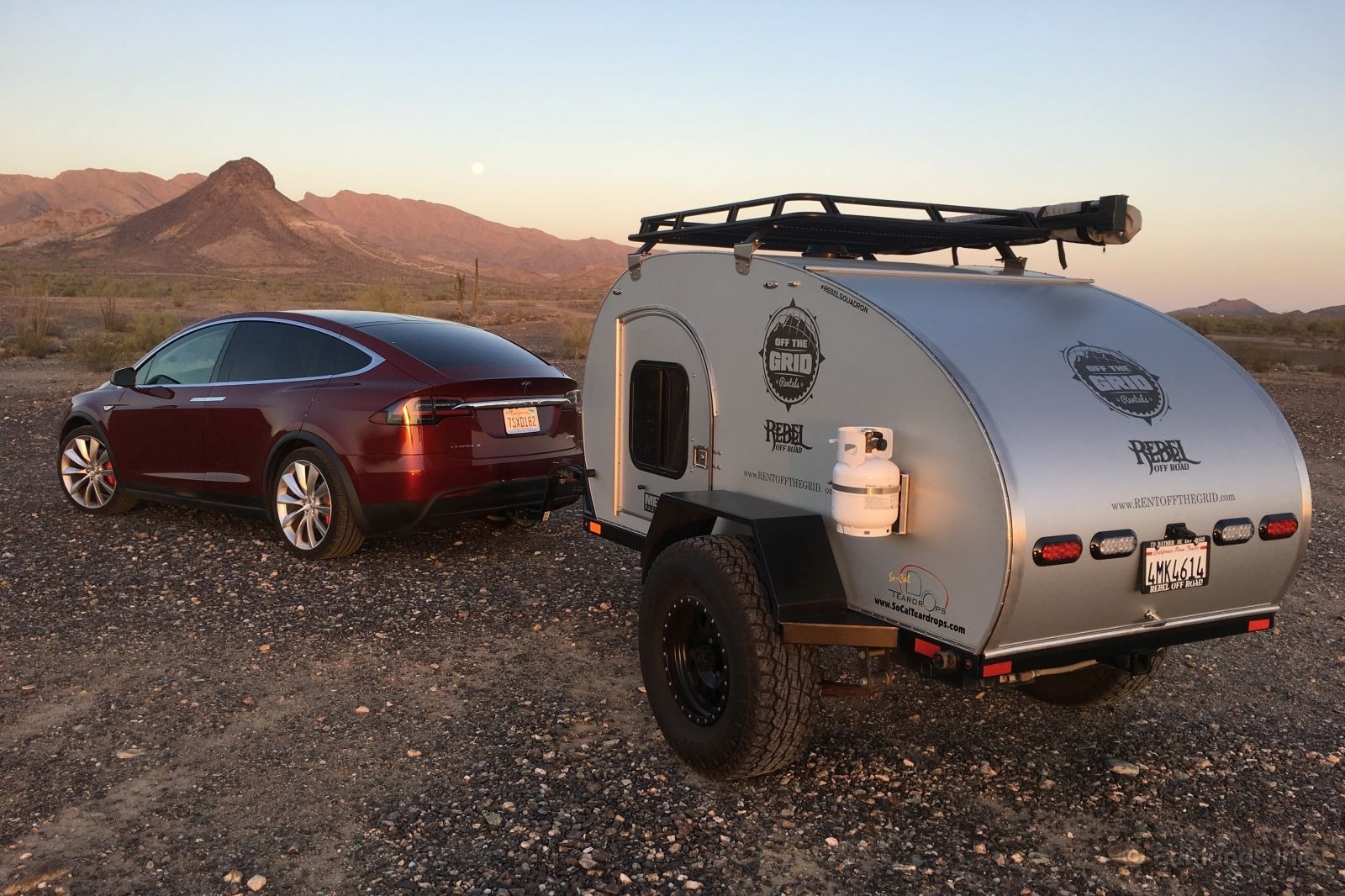
I camped a second night near Quartzsite, Arizona, in a vast open stony plain on another patch of BLM land. It was much windier and chillier this time. But I hardly noticed because I was in a hard-sided cocoon that doesn't flap in the wind, with insulation in the walls and roof that kept the cold nighttime desert temperatures at bay.
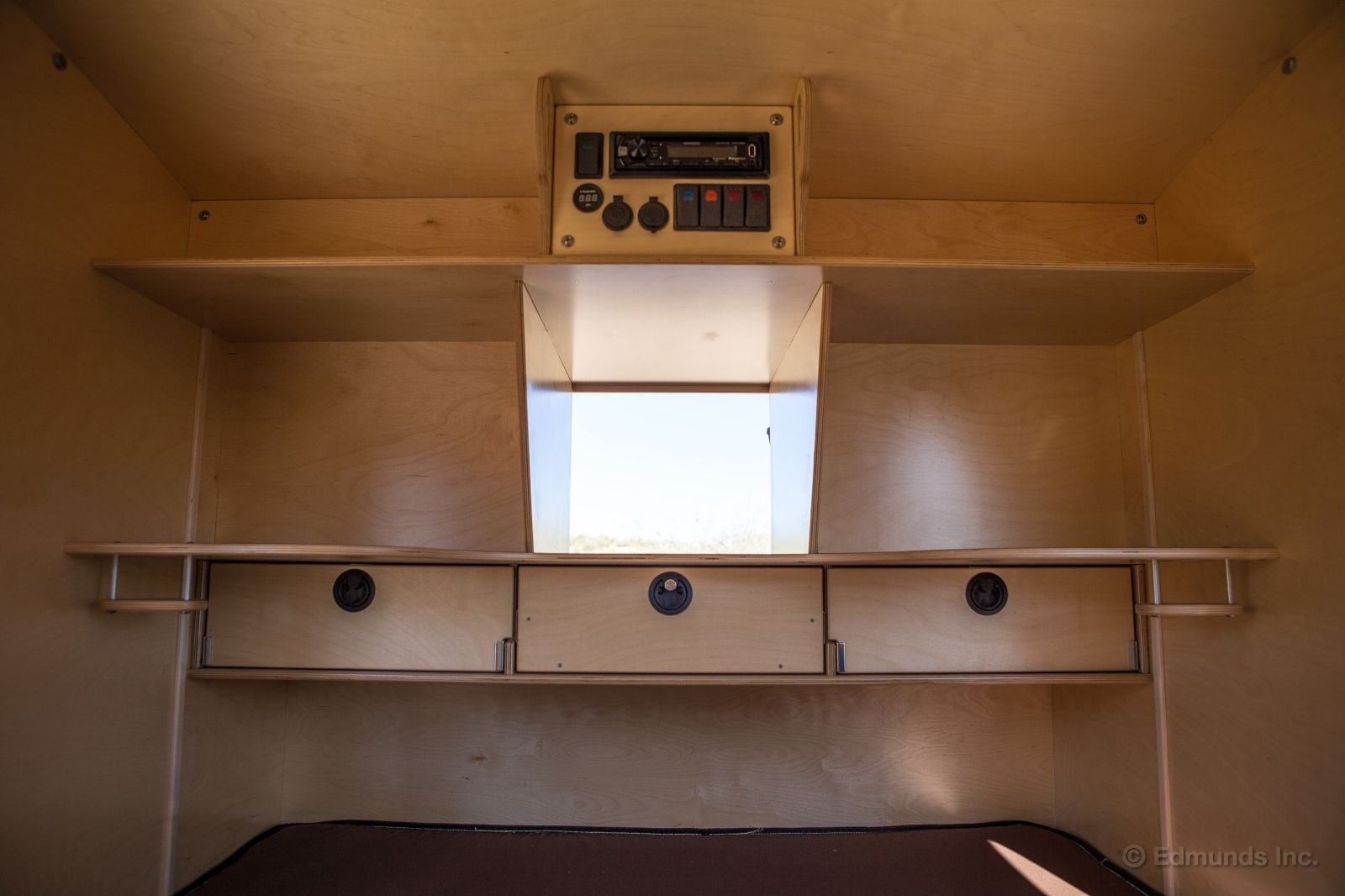
The Tesla's seven-pin wiring connector kept the trailer's deep-cycle battery topped up while driving, so inside I had reading lights, a stereo and some USB jacks at my disposal. There were shelves and cupholders, and I could sit up straight and read. When I finally turned in I could fully stretch out because the entire floor is an RV-queen sized mattress.
I totally dig what Off the Grid Rentals is doing. This is a great way to dabble in adventure camping without shelling out a load of money to buy one of these rigs outright. I've most definitely got to rent this teardrop again and tow it even farther into the backcountry with something like our 2016 Toyota Tacoma TRD Off-Road.
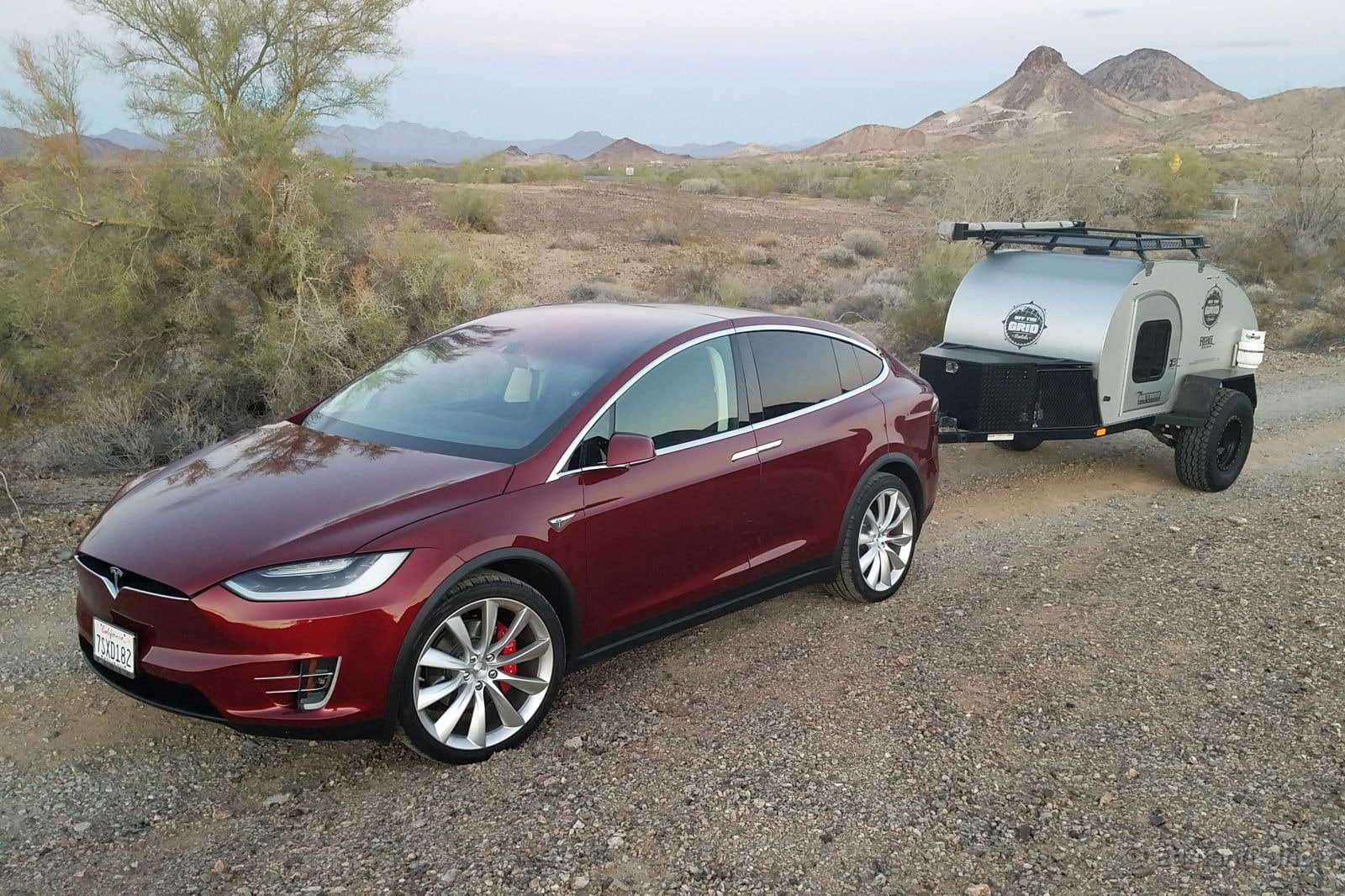
By now you must be thinking, "The 2016 Tesla Model X sounds like quite a capable tow rig. If it can handle this, why not up the ante and tow something heavier?"
That was my original plan, too. But now having done this trip, I'm not so sure.
There's no doubt the Tesla Model X tows down the road nicely. There's plenty of power. It's very stable. The steering and braking are spot-on. The air suspension deals well with tongue weight. It certainly seems like it could handle more weight than this.
But the overall picture is not nearly as rosy, and you can probably guess what the complicating factors are by the things I haven't yet discussed: towing range and charging at Superchargers. Stay tuned for a deep dive into that part of the story in the next installment of my Tesla Model X towing saga.
Range and Charging While Towing a Trailer
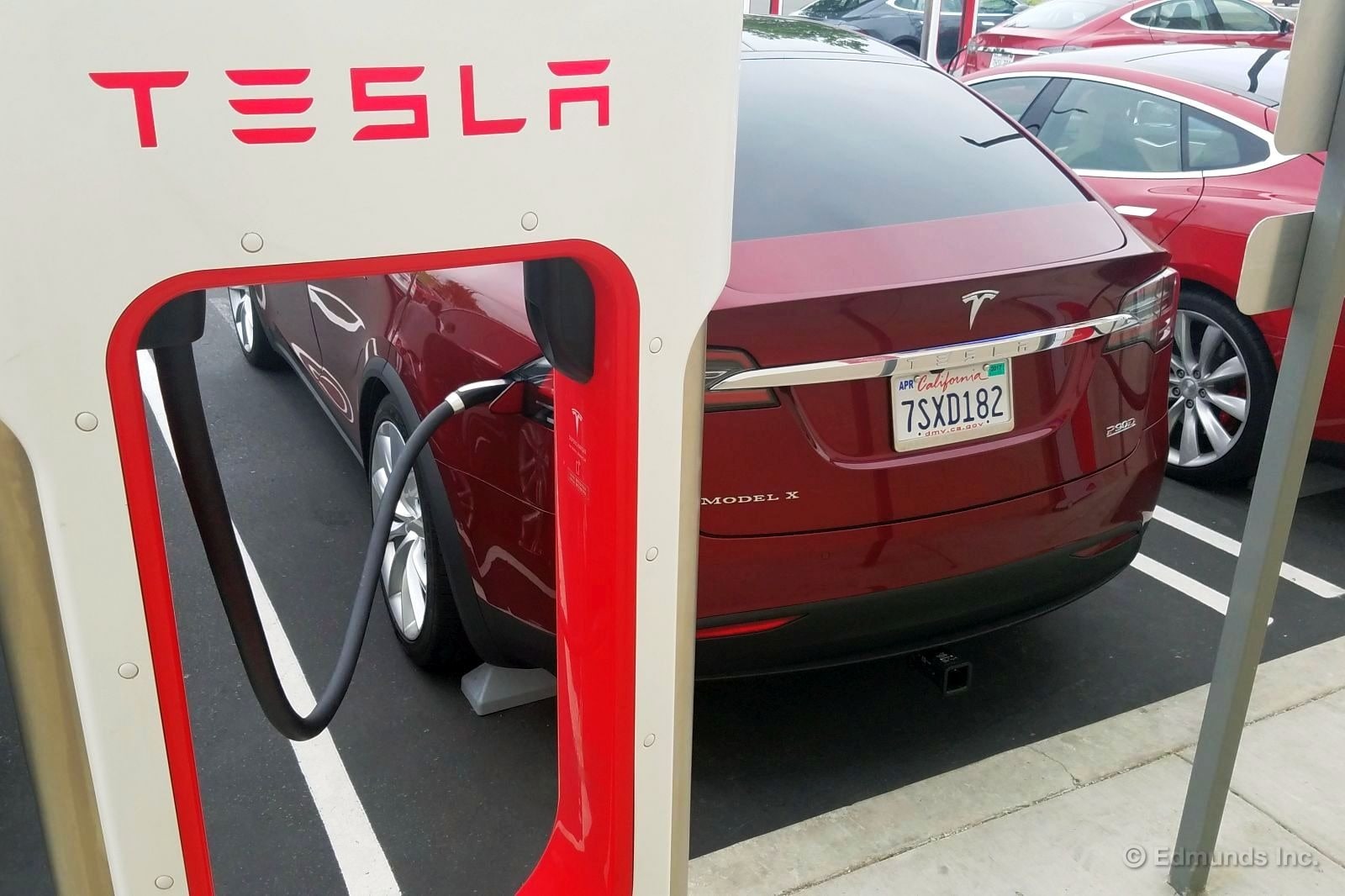
My trip to Flagstaff is complete. I successfully towed a teardrop trailer over 1,000 miles behind our 2016 Tesla Model X crossover SUV.
I'm not sure I ever want to do it again.
I can't blame the excellent Off the Grid Rentals trailer, a well-balanced rig that tracked straight and true throughout. Its feathery 1,260-pound weight was less than half the 3,500-pound rated towing capacity of our Model X Signature. Heck, this trailer weighs only about one-fourth of the 5,000 pounds a Model X equipped with 20-inch tires can tow.
And the Model X itself served up an abundance of power, stability and grade-climbing ability. The driving experience was effortless.
Effortless, that is, until it came time to charge the blasted thing. That's where this towing exercise turned into a real drag.
The problems are numerous: towing speed, range, recharge time and the physical incompatibility of Superchargers when you roll up with a trailer. The first three issues are interrelated. That last one stands alone.
Unless you're merely towing across town, these issues conspire to make the Model X a very poor tow vehicle.
Let's walk through the trip, one Supercharger at a time.
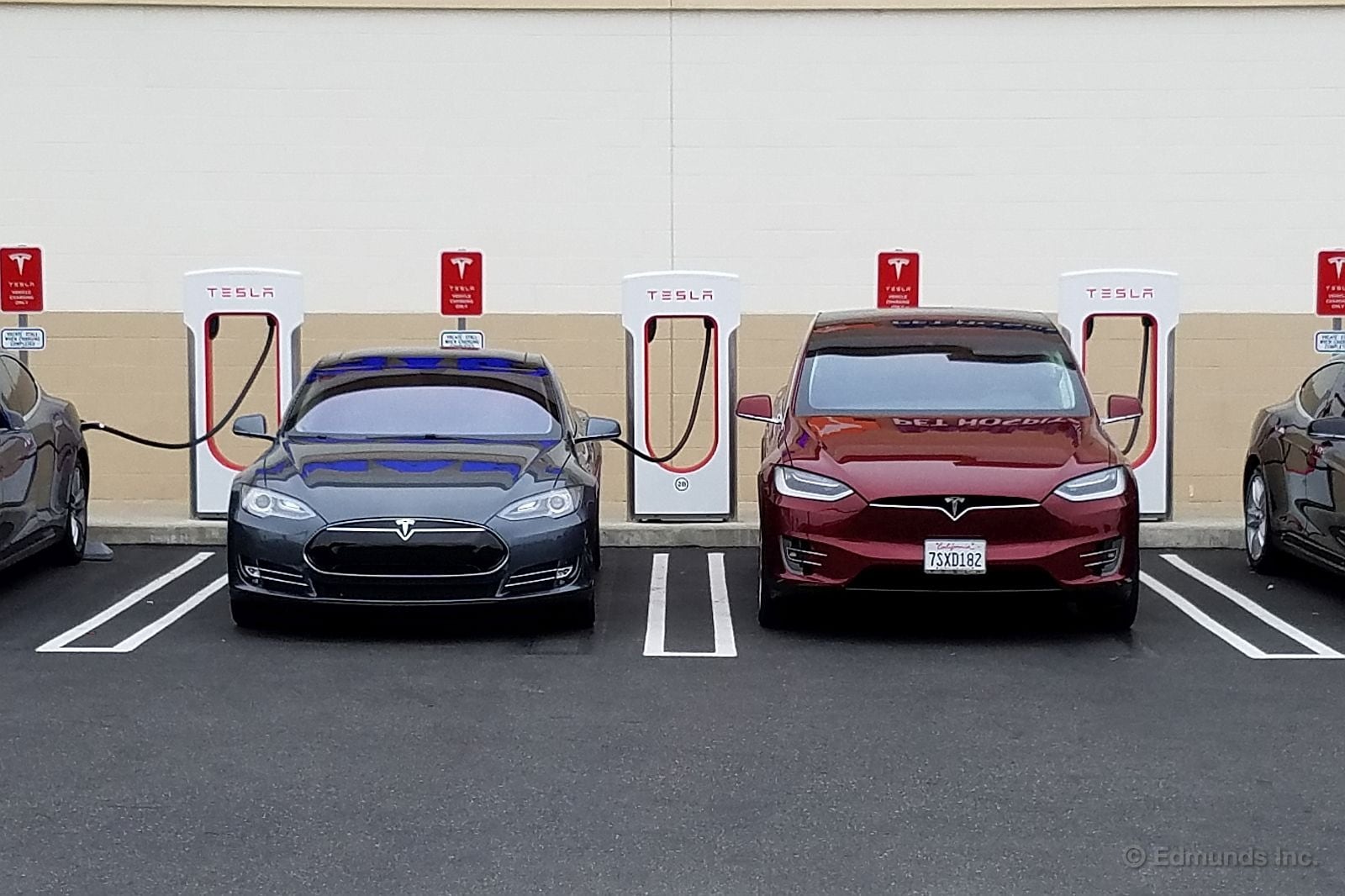
Fountain Valley, California
Arrival range: 163 miles
Charge time: 1 hour, 6 minutes
Departure range: 251 miles
This place was busy. There were eight spots, and all of them were full. Usually there were one or two cars waiting, with the deck shuffling every five or ten minutes as a random car unplugged and a new one took its place.
I didn't have my trailer at this point. I came here to top up before driving the 15 miles to Rebel Off-Road, my local Off the Grid Rentals host. My plan was to hook up and head out of town as soon as the paperwork was done.
I backed into one of the spots and plugged in before wandering to the back of the car to check the trailer hitch. And then it dawned on me: I won't be able to back in to a spot like this with the trailer in tow.
The fill took longer than usual. What's usual? A couple of years ago, Kurt and I drove our Model S to New York and back, using the Supercharger network. Our average Supercharger dwell time was 38 minutes. Batteries charge quickest when they are empty, but the process gradually slows throughout and fades to a trickle as they approach full. Kurt and I managed consistently short stops by arriving empty and never bothering to fill up more than necessary to get to the next one — usually 60 percent.
For this trip in the Model X, I started out charging to 100 percent until I came to grips with towing consumption and range. Starting here at 60 percent full, it took fully 66 minutes to top it off.
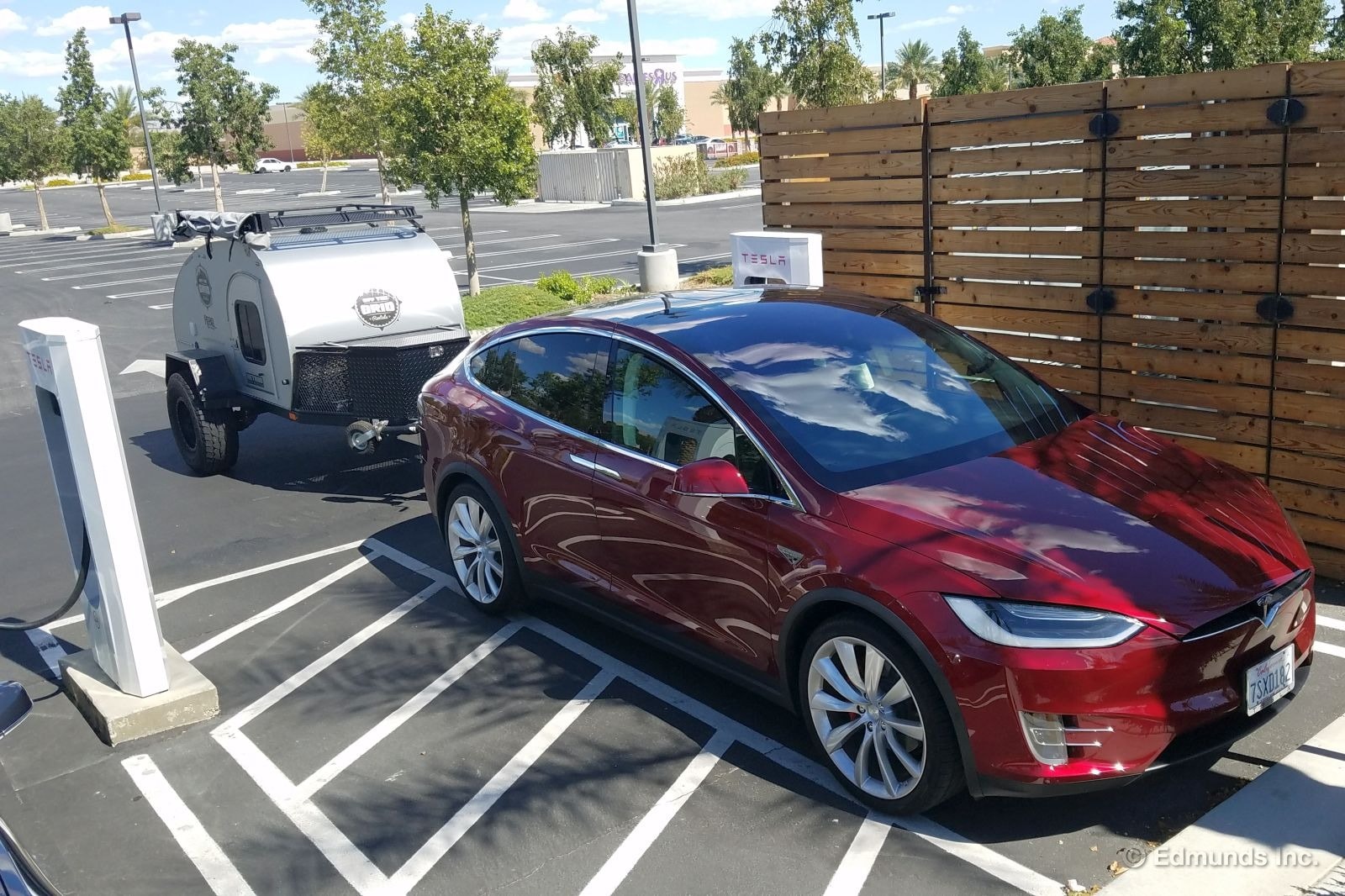
Indio, California
Miles since last charge: 138 miles
Average energy: 488 Wh/mile
Arrival range: 35 miles
Charge time: 1 hour, 51 minutes
Departure range: 254 miles
California's towing speed limit is 55 mph, so that was my target speed on the highway. I'm accustomed to this pace after years of towing in this state, and it suited my cautious initial approach to this trip.
Still, the X used a lot of electricity in getting here. The next leg would be shorter, but has two long grades to climb. I figured I needed to fill up all the way once again.
This Supercharger has eight slots. Six of them are back-in spots that I couldn't use without disconnecting the trailer. Two are nose-in spots, one of which was empty.
Luckily, the open one can be accessed by driving straight in from the adjoining aisle, but the trailer was going to stick out and partially block the lane. I probably should have uncoupled, but this was a mid-afternoon weekday in a deserted corner of the lot that's far away from the storefronts.
And it was more than a hundred degrees out. I needed lunch and iced tea. I didn't want to worry about a disconnected trailer getting stolen while I ate in air-conditioned comfort around the corner. Besides, there was room to drive around. They'd see what was going on. Maybe they'd even understand. So I let it hang out and headed for the Mexican place for a plate of Chili Verde.
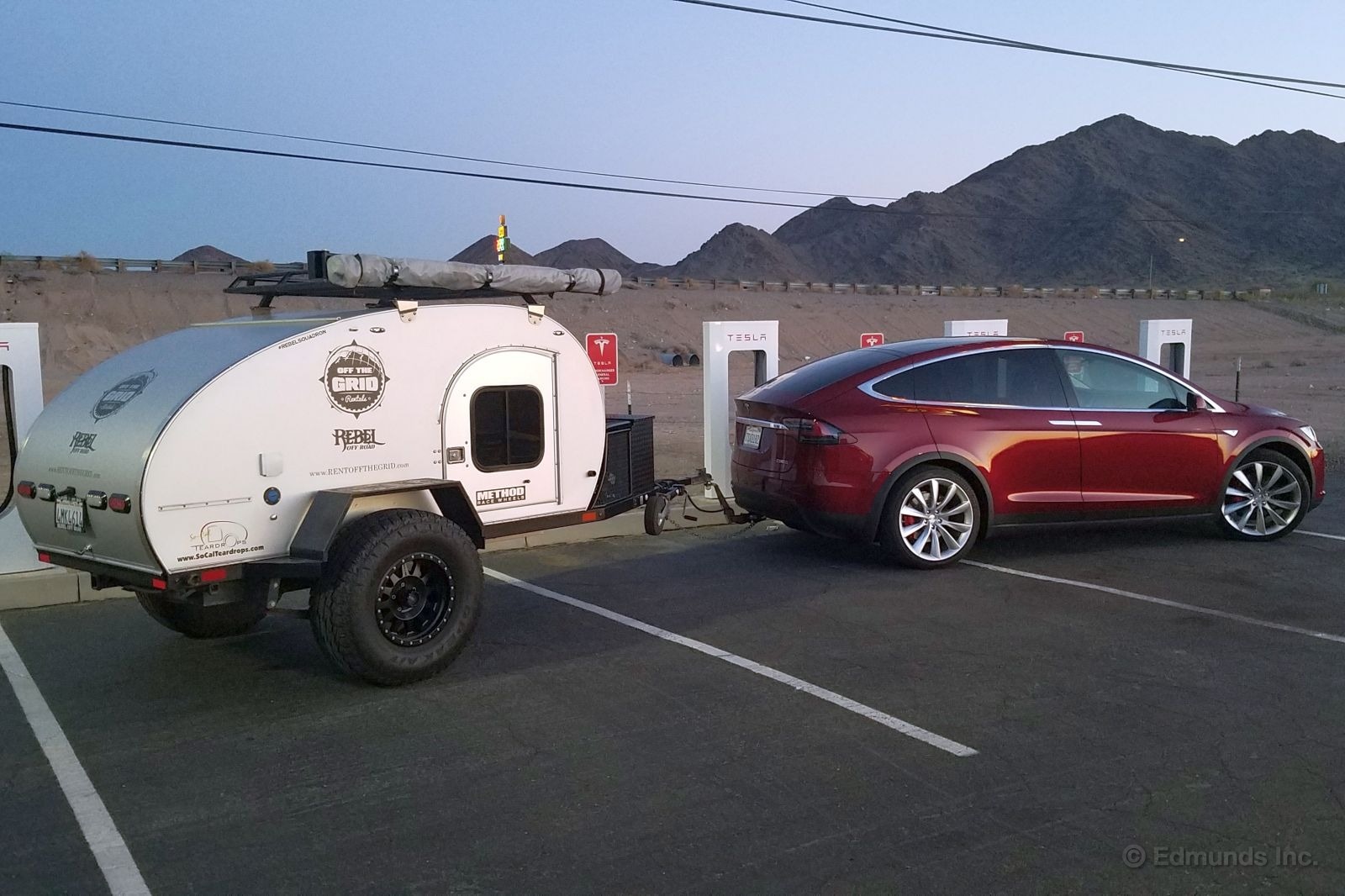
Quartzsite, Arizona
Miles since last charge: 118 miles
Average energy: 636 Wh/mile
Arrival range: 13 miles
Charge time: 1 hour, 51 minutes
Departure range: 254 miles
Quartzsite isn't very far inside Arizona, so most of this leg was driven according to California's 55 mph towing speed limit. I can tow faster in Arizona, but I don't think I could have risked it — I arrived here with just 13 miles of range remaining. This was accompanied by the highest "Average Energy" consumption readout I'd ever seen for a sustained freeway cruise: 636 Wh/mile.
At one point I wasn't sure I'd make it past Blythe, California with enough juice to climb the final hill on the Arizona side of the border. To maintain a sufficient margin, I'd spent the last hour with the A/C off and reduced my pace slightly to 53 mph.
The Quartzsite Supercharger has eight stalls, and all of them are back-in spots. But it was a Wednesday night in what qualifies as the middle of nowhere now that the snowbirds have taken their motorhomes back to the northern US and Canada. No one was here. The Phoenix chapter of the Tesla club was unlikely to swoop in on me.
So I once again left the trailer hooked up and cut across four spots, the minimum I can Bogart in order to maneuver the charge port close to a Supercharger. Four others were still freely available as I walked into Carl's Jr. to hunker down with an iced tea and nab their free Wi-Fi. Anyone with a complaint knew where to find me.
It took 1 hour, 51 minutes to bring the battery from 13 to 254 miles. I finally unplugged and headed out at 9:40 pm, some 8 hours and 45 minutes after picking up the trailer just 241 miles ago. That's a blinding average speed of 27.5 mph, folks.
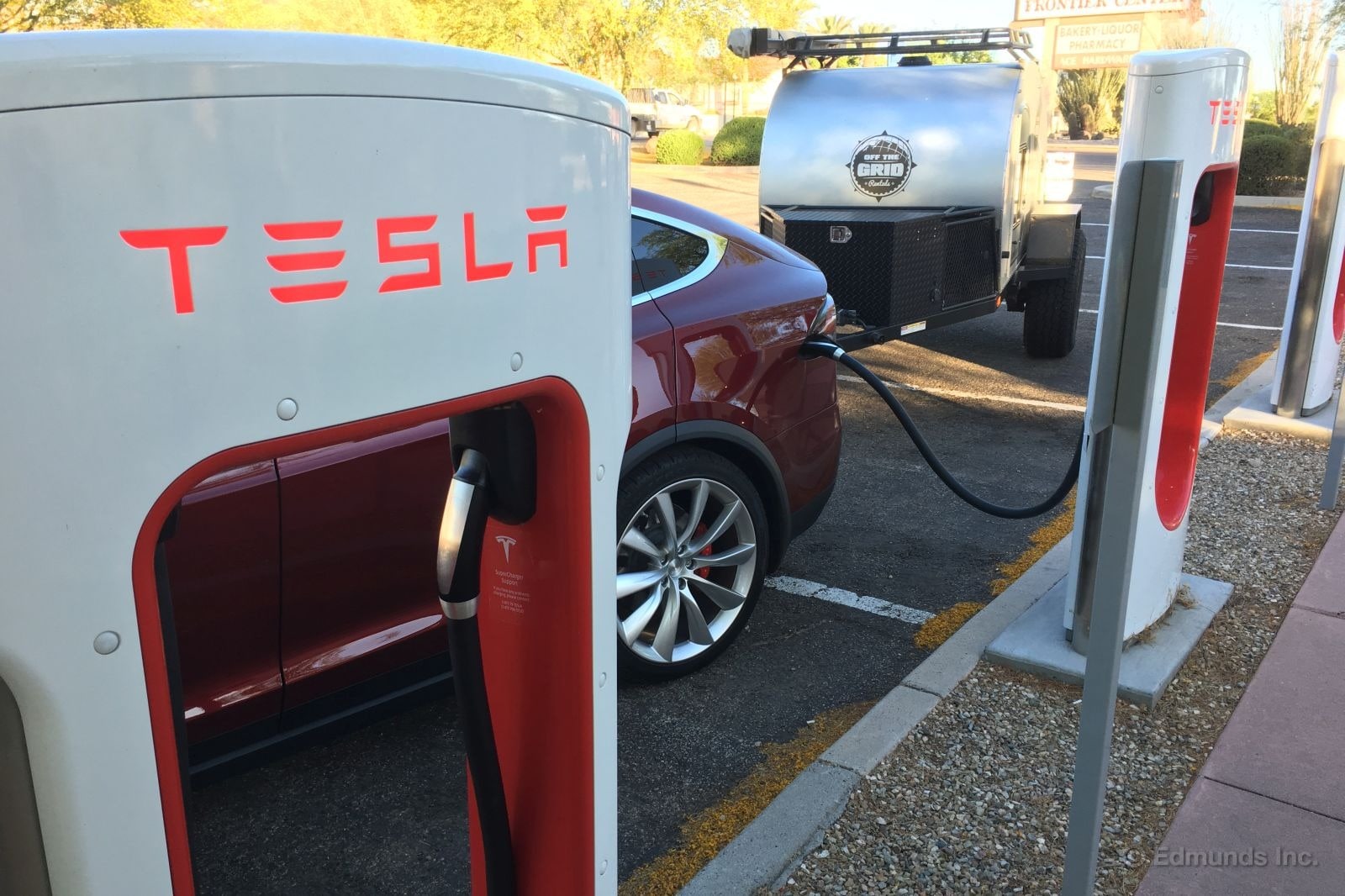
Wickenburg, Arizona
Miles since last charge: 105 miles
Average energy: 678 Wh/mile
Arrival Range: 21 miles
Charge time: 1 hour, 50 minutes
Departure range: 248 miles
The consumption meter looked even scarier on my way here, even when running at 53 mph on the deserted emptiness of highway 60 with the windows cracked and the A/C off. It was after 11:00 pm when I got close to town, so I stopped to camp for the night instead of immediately heading for the Supercharger. I used to live in the area, so I had no trouble finding a stunning undeveloped campsite in an isolated spot down a stony dirt path near Vulture Peak.
The sun woke me up before it cracked the horizon. Vulture Peak is a better sunset backdrop, but I still took advantage of the remaining pre-dawn light for a few photographs before heading into town to find the Supercharger and some breakfast.
There was one stoplight when I last lived here 20 years ago. Now there are three stoplights, two roundabouts and a six-stall Tesla Supercharger station in a narrow lot in front of City Hall. All of them are back-in spots. Adjacent non-Tesla parking slots gave me room to pull forward and hog just three of the Supercharger spaces this time. None were likely to see visitors this early on a Thursday morning.
I came back from the Horseshoe Cafe after burning up 1 hour, 50 minutes to find that our Model X was still not quite full. But the charge current had dropped below 10 amps at this point, a figure I decided to use as a "full enough" indication from here on out. Those last four miles aren't worth the 15 or 20 minutes required to get them.
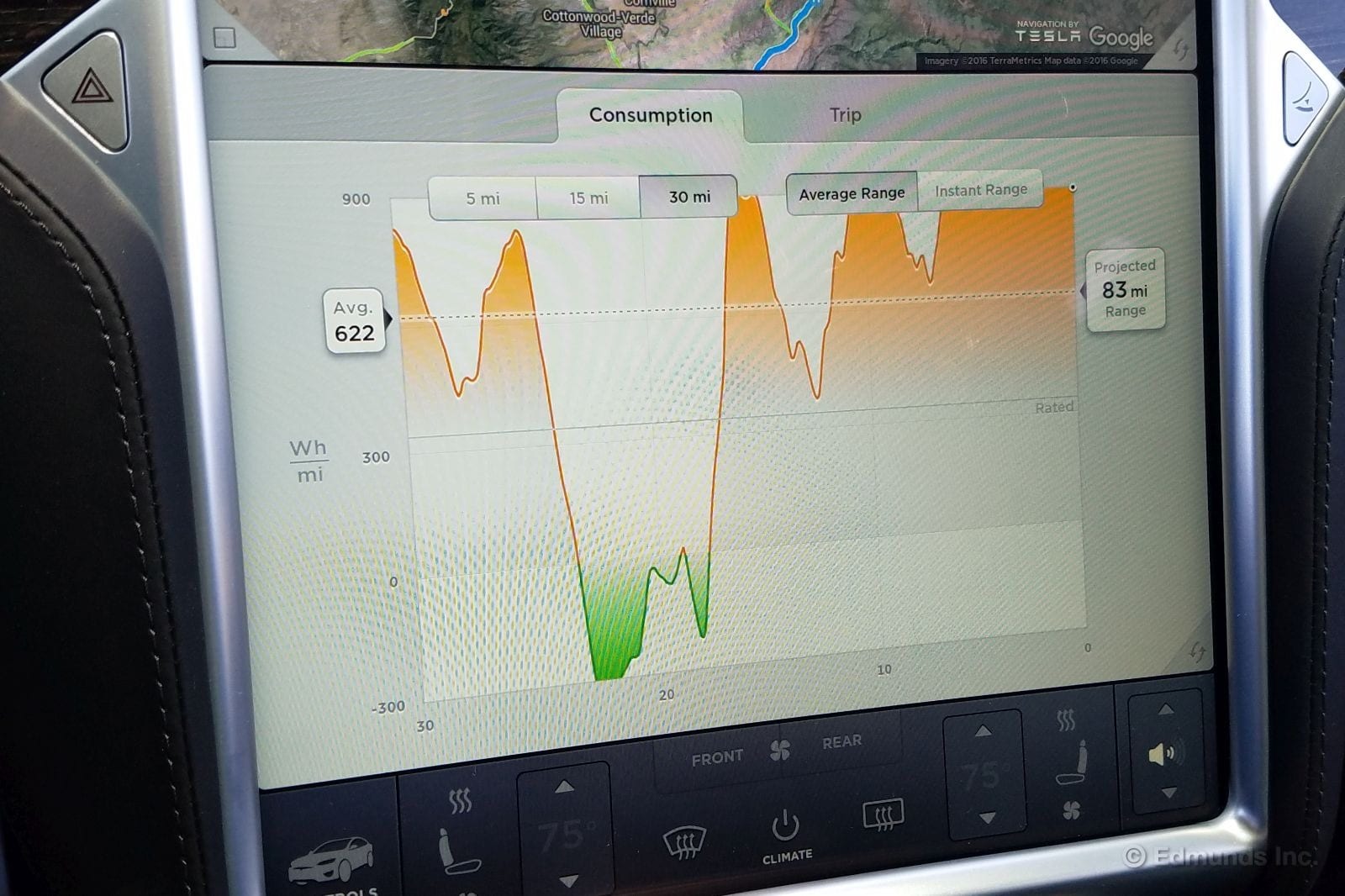
Cordes Junction, Arizona
Miles since last charge: 75 miles
Average energy: 635 Wh/mile
Arrival range: 97 miles
Charge time: 1 hour, 29 minutes
Departure range: 248 miles
Ever heard of Arosanti, that weird arts enclave? It is this exit's claim to fame. There's also fast food, a gas station and a six-spot Tesla Supercharger. All of them are back-in spots, with the last one tight against a curb. The best I could do without unhooking is hog four of them.
A Tesla Model S wandered up and took the last spot, leaving one more between his car and the butt-end of my trailer. We talked for a bit and he didn't seem bothered in the least by my questionable parking behavior. Quite the contrary, in fact; he was excited to see me towing, loved the Off the Grid Rentals trailer and wanted to see the Model X up close.
Then a guy in a BMW i3 with Colorado plates rolled up and squeezed into the last spot. He was driving the range extender version — the only one that could get this far — but was unhappy with his choice. He was here because he saw a YouTube video from "a guy" that claimed he figured out how to hack a Supercharger for use by i3s and other EVs. I was dubious. So was he. We'd both hate to see him fry his car. Thankfully, he was just looking.
The Model S that came after me left before our Model X was done charging. But at 1 hour and 29 minutes this wasn't a terribly long charge because, well, Wickenburg was only 75 miles behind me. For its part, Flagstaff was no more than 78 miles ahead of me, but I wasn't taking any chances because it's an uphill run from here to an elevation of 7,000 feet.
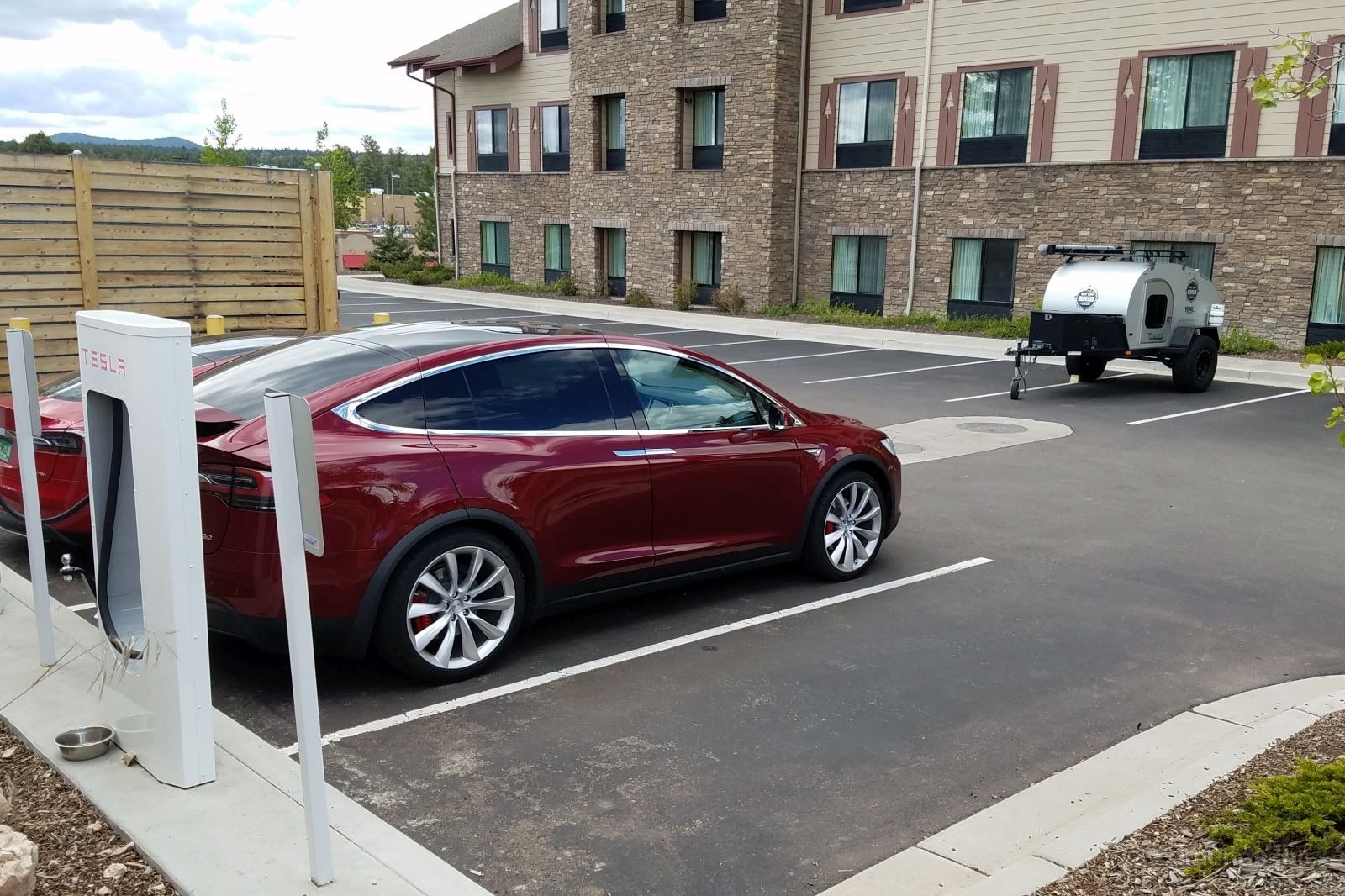
Flagstaff, Arizona
Miles since last charge: 78 miles
Average energy: 666 Wh/mile
Arrival range: 83 miles
Charge time: 1 hour, 16 minutes
Departure range: 244 miles
I had arrived at my destination, the halfway point of my trip, near the end of lunch hour on Thursday. So far, I had towed this trailer 501 miles in the space of 20 hours, 30 minutes of driving and charging time.
The rig would sit idle while I went off and attended to my work obligation. Since I wasn't needed until that evening, I had the option of filling the batteries sooner rather than later. I cruised over to the Flagstaff Supercharger to scope it out.
Once there, I realized it was critical that I recharge right now. This Supercharger is located in a Courtyard Marriott parking lot, and there are only four back-in stalls. The red Model S from Cordes Junction was in one of them, but even if it wasn't I'd be unable to arc across because of landscaping on one flank and the charging transformers on the other.
I needed to disconnect the trailer to recharge. Worse, this lot was likely to be parked up if I waited to recharge upon my departure on Saturday morning. And I'd not have a guaranteed spot for me to stash the teardrop while the Model X charged. And the charge stalls are sequestered in a dead-end row that doesn't begin to have enough room to turn this rig around.
Overstating my plight only slightly, it was now or never.
This was ridiculous. Flagstaff is the gateway to the Grand Canyon, Sedona and other nearby attractions. It's a busy place all summer. You'd want to tow your trailer here and camp nearby if you were a camping sort of person. But this Supercharger is a hopeless mess for any towing scenario.
I'd used a lot of juice coming up the grade, but not as much as I'd feared. The cool temperatures helped the charging time along. I was only here for 1 hour, 16 minutes... but that does not include the time to uncouple and recouple the trailer.
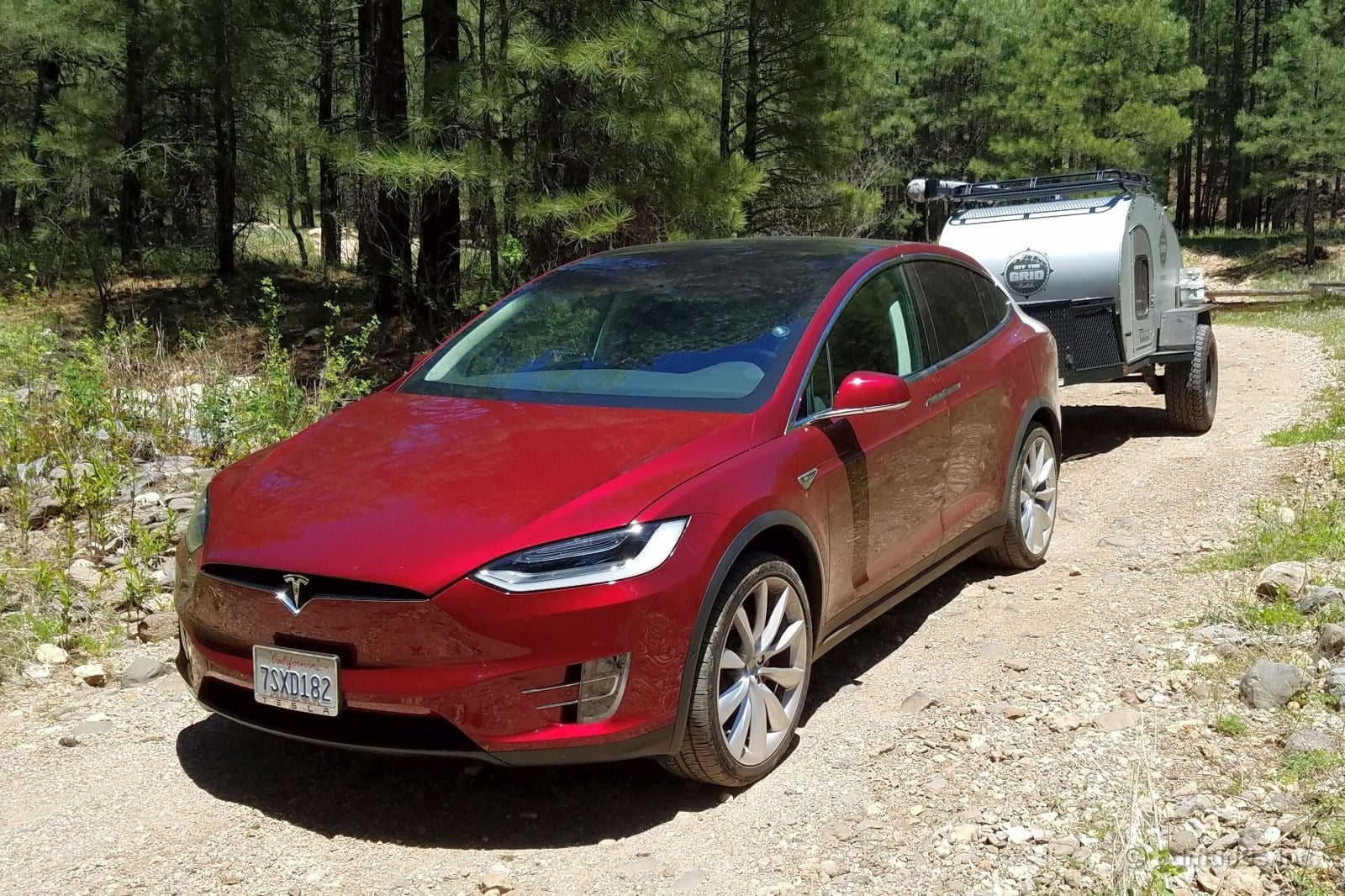
Cordes Junction
Miles since last charge: 89 miles
Average energy: 563 Wh/mile
Arrival range: 84 miles
Charge time: 1 hour, 20 minutes
Departure range: 251 miles
I was going home the way I came. The Supercharger stations are spread farther apart along the I-40 route, and I didn't think I could bridge the gap to Kingman, let alone a subsequent gap between Needles and Barstow. It might have been possible in perfect conditions, but the weather forecast was calling for strong headwinds all day.
Besides, I had plans. If I went back home via Cordes Junction I'd have had enough spare range to explore a dirt road that cuts between Kachina Village and Highway 89A. I could rejoin the pavement at the top of the twisty section and descend into Oak Creek Canyon and enjoy the drive through Sedona.
The wind was indeed strong, and it nearly negated the benefits of driving downhill. Though it wasn't as high as I'd seen, the Tesla's Average Energy reading was an unhelpful 563 Wh/mile. The Cordes Junction Supercharger lot was empty when I arrived, so I once again arced across four spots. Two Model S sedans showed up to fill up while was there, but no more. I didn't have to move for either of them, and the uniqueness of my towing exploits kept them pacified. That and copious demonstrations of the Model X's doors.
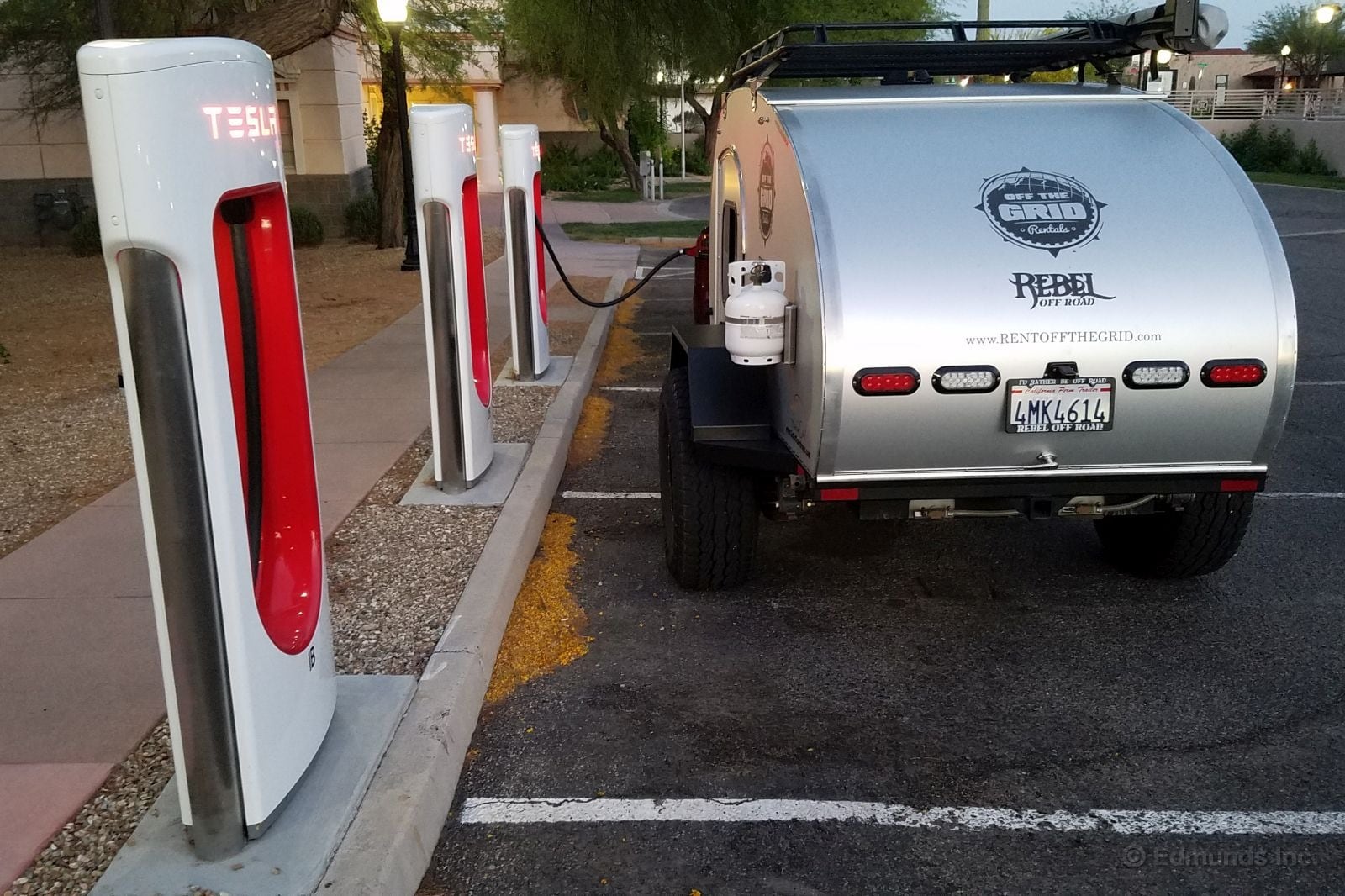
Wickenburg, Arizona
Miles since last charge: 76 miles
Average energy: 643 Wh/mile
Arrival range: 96 miles
Charge time: 1 hour, 42 minutes
Departure range: 254 miles
Half of the leg to get here was downhill, but the last half took place on flat ground more or less directly into the wind. The distance wasn't great enough for range anxiety to kick in, but it got me to thinking hard about the next leg to Quartzsite, a span that had been too close for comfort without wind a couple of days ago.
Some old friends still live here in Wickenburg, and I was determined to see them this time after arriving too late and blowing through town last time. We met for dinner at Anita's Cocina, a Mexican food place I love that is — like nearly everything else in this town — within walking distance of the Supercharger. I'd manage to position my rig so I was only taking up two Tesla spots this time.
We all took advantage of the fact that I needed a full charge and lingered over the unpaid check. That the wind would die down as the sun set didn't hurt, either. We eventually parted ways and I unplugged after 1 hour and 42 minutes, some 15 minutes longer than the battery probably needed.
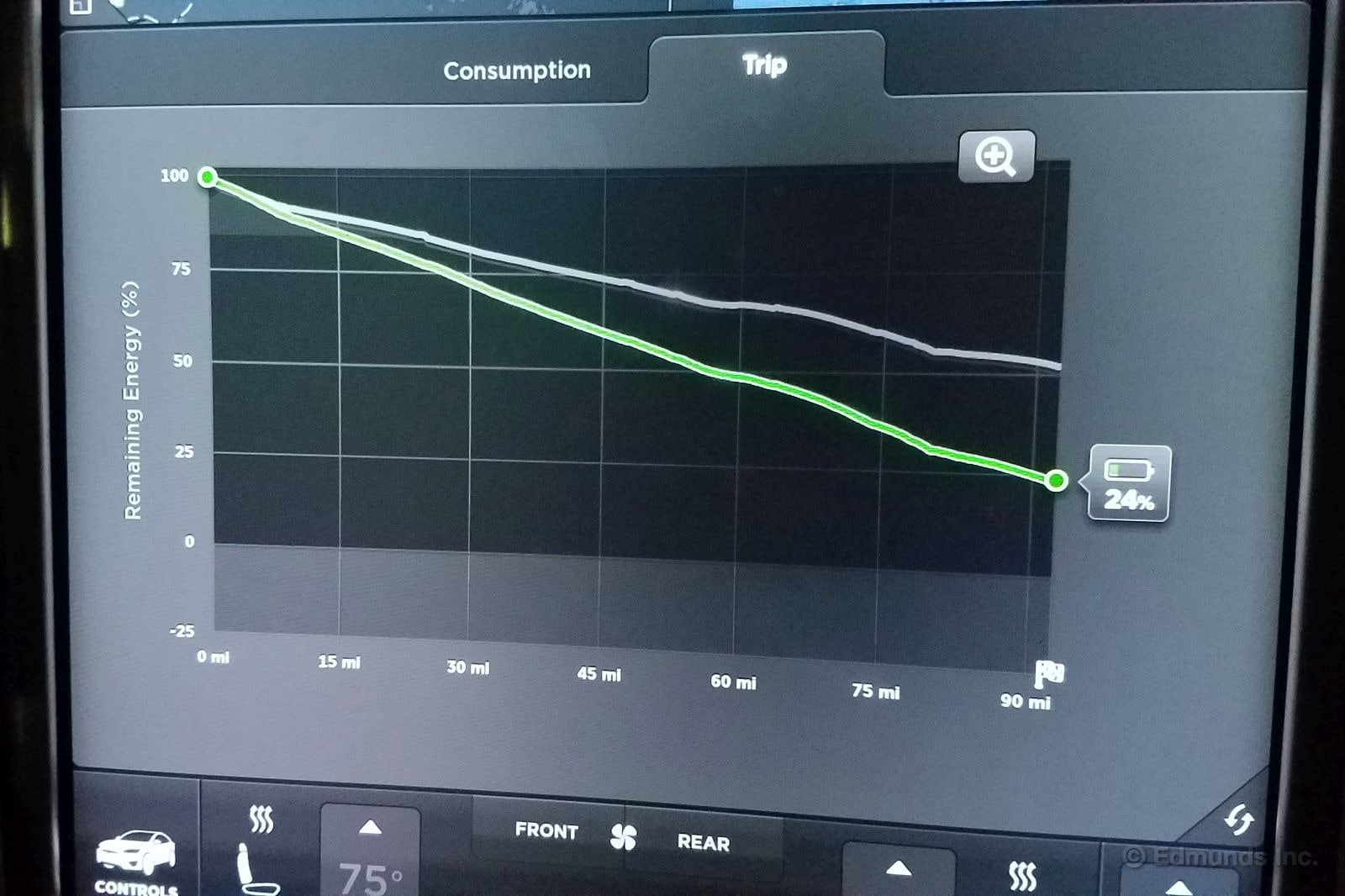
Quartzsite, Arizona
Miles since last charge: 93 miles
Average energy: 657 Wh/mile
Arrival range: 61 miles
Charge time: 1 hour, 31 minutes
Departure range: 252 miles
Waiting was a good move. The headwind had calmed down from its peak, but it still played a big factor and took a significant bite out of my range.
How big a bite? This was the leg I started playing with a new predictive battery use screen our Model S didn't have. It plots a navigation route's predicted energy use on a graph and overlays real-time actual use updates as you drive. It knows the terrain, and Tow Mode tells it there's a trailer attached. But it cannot predict the rather alarming level of extra consumption caused by the wind or heat. It figured I'd arrive in Quartzsite with more than 50 percent of my battery left over. As I rolled into the lot, it was down to 24 percent.
It was a few minutes before 10:00 pm as I cut across my four preferred spots and plugged in. No one was there except a couple of Nissan durability engineers on a coffee break. They wee standing next to a pair of Titan pickup prototypes that had their badges taped over, one of which was pulling a heavy box trailer. I recognized it as the 2017 gasoline V8 half-ton version that isn't yet for sale.
This wasn't a particularly long leg, but the magnitude of the wind effects I observed on the way here had me more than a little nervous about the next leg, which I would tackle the next day after stopping and crawling into the trailer somewhere to sleep. It would be the longest leg of the trip, the headwind was supposed to be back in full force and there was a long summit to climb. I probably didn't need a full charge in Wickenburg, but I certainly needed one here.
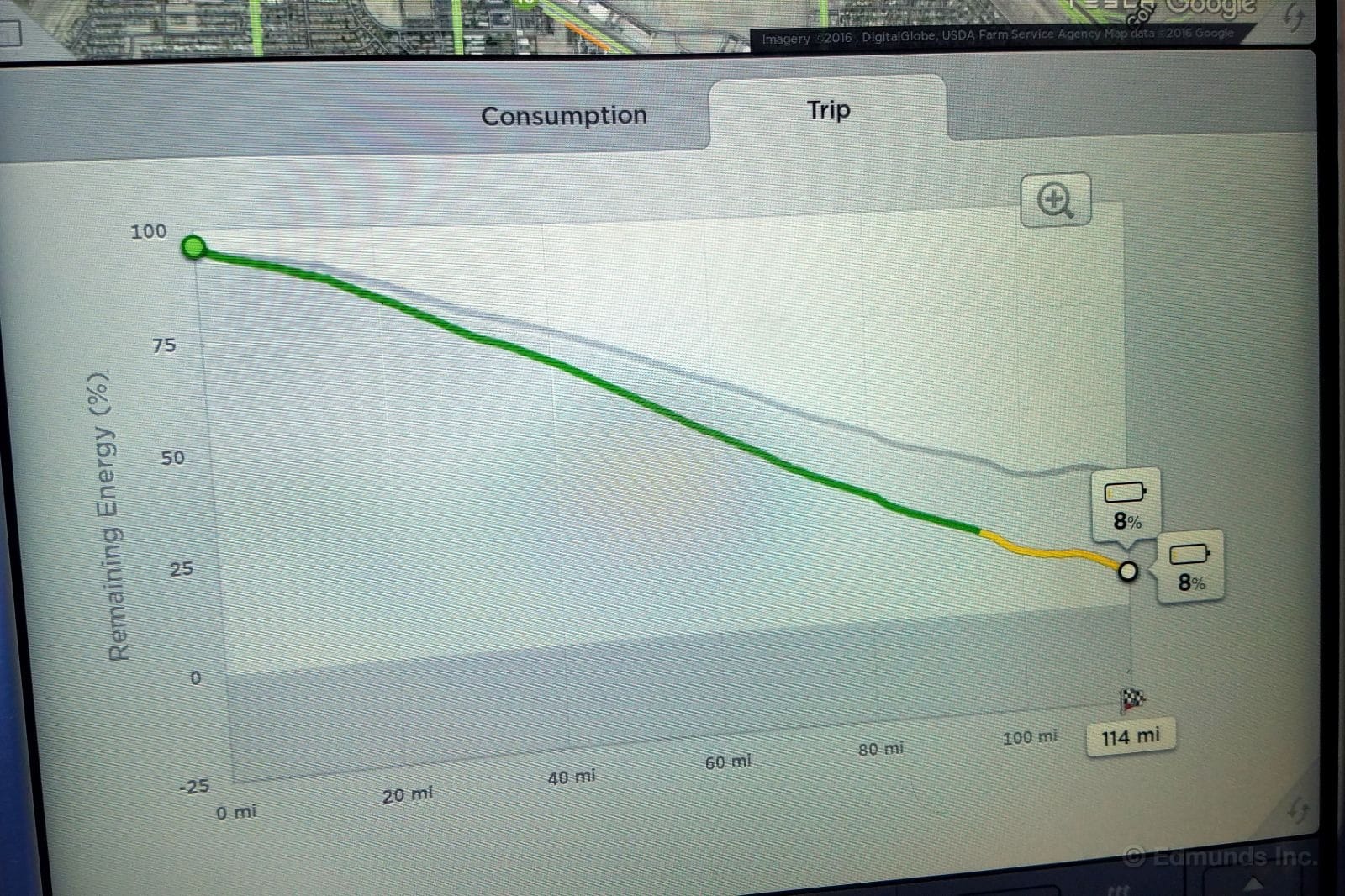
Indio, California
Miles since last charge: 118 miles
Average energy: 612 Wh/mile
Arrival range: 21 miles
Charge time: 1 hour, 31 minutes
Departure range: 252 miles
I made it, but it was a nail-biter. The wind was up, the terrain was up and down, and I trundled along at 53 mph with the A/C off much of the time.
The graph showing actual energy use kept deviating more and more, which pretty much matched the trend of my anxiety level. In the end I arrived with 8 percent battery left and a low battery warning.
The headwind was fierce here, about 30 mph. This isn't unusual in this part of the desert, though. I pulled into the same nose-in spot I used before, grabbed a coffee and sheltered in the car with a book while I waited for the battery to take on more juice.
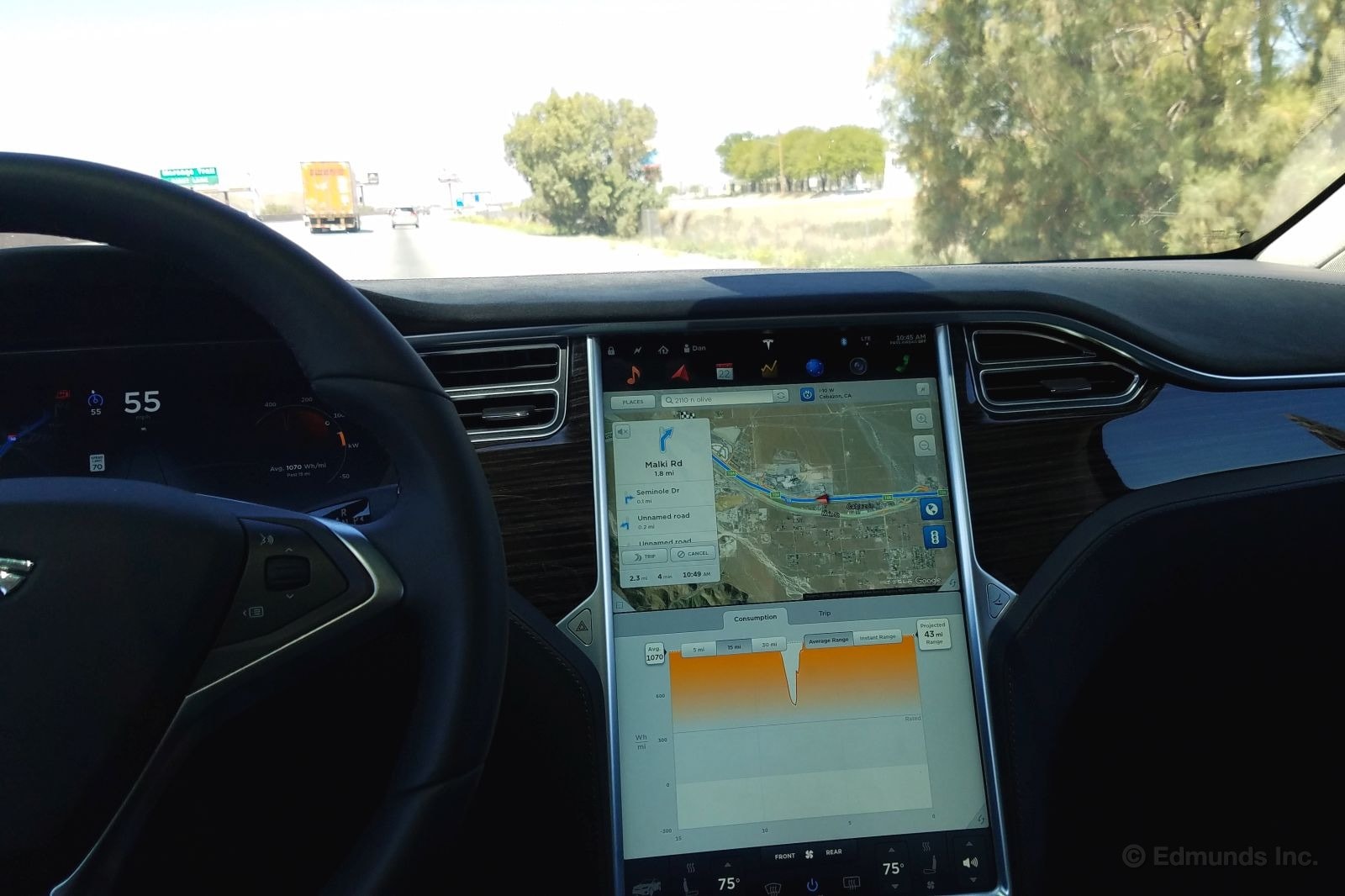
Cabazon, California
Miles since last charge: 40 miles
Average energy: 923 Wh/mile
Arrival range: 134 miles
Charge time: 1 hour, 16 minutes
Departure range: 253 miles
You're right: I didn't stop here on the way out. But there's a significant grade to climb out of Palm Springs and Indio, and the windmills that line the grade were spinning madly.
How bad was it? The Tesla's real-time range prediction dropped well below the minimum necessary to get home, never mind tomorrow morning's trips to return the trailer and recharge at the Fountain Valley Supercharger. I knew the grade would soon let up, but would the wind? I wouldn't know until I was well past the Cabazon exit. I had to stop.
The numbers were staggering. Over the last 39.8 miles my average energy was an alarming 923 Wh/mile. I'd used about half my battery since leaving Indio, but I was only a third of the way home.
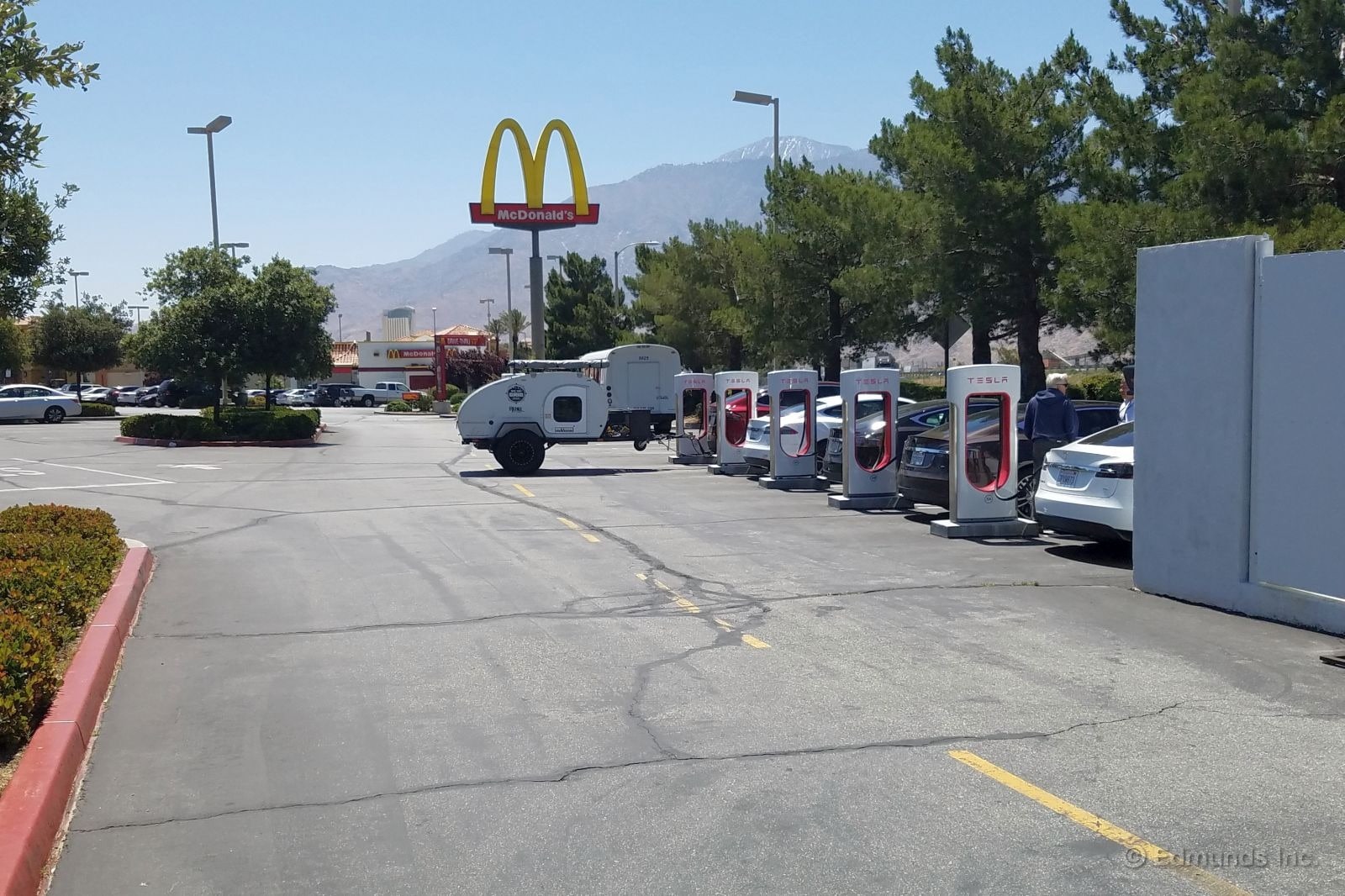
The Cabazon Supercharger is a 10-stall affair in the corner of an outlet mall parking lot. All of them are nose-in spots — which is great — but only two of them were accessible to me and my trailer because of a curb that made it impossible to maneuver into eight of the spots without completely blocking a main parking lot artery and trapping at least one charging Tesla.
Nine of the spots were occupied, but I was in luck. The lone open spot was one of the two I could access. The trailer stuck out, but there was plenty of maneuvering room because of an adjoining aisle. But I got dirty looks because most of the cross-traffic consisted of unsympathetic non-Tesla owners headed for the McDonald's and the outlet mall.
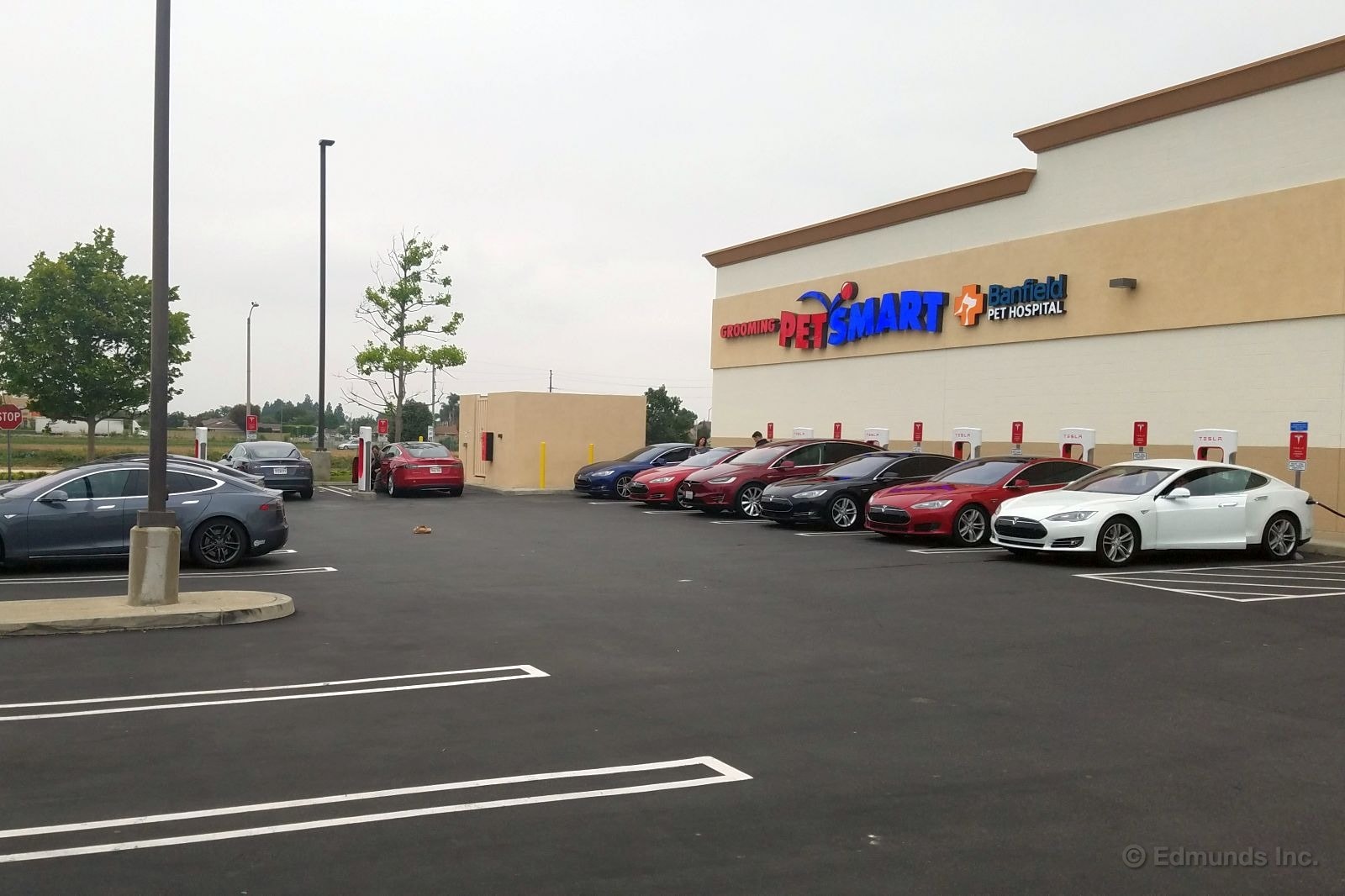
Fountain Valley, California
Miles since last charge: 104 miles (15 non-towing)
Average energy: 484 Wh/mile
Arrival range: 90 miles
It was over. The last leg was fairly calm because the Cabazon fill had given me enough extra range to cover all contingencies. The winds slacked off, the terrain sloped down and the usual Sunday afternoon inbound traffic bottlenecks kept my speed down.
I dropped the trailer off 15 miles ago, and I was back here because I want to record the stats using the same start and end points. Strictly speaking, I had enough juice to get me back to the office without stopping here. I didn't have pull into a spot and plug in.
But I did anyway, if only to remind myself how painless the Supercharger experience can be when not towing anything.
I could use any spot. Head-in, nose-in; it made no difference. There was no trailer to get in anyone's way or to disconnect.
I didn't have to fill it up. I was no longer concerned with cross-country travel, the distance to the next Supercharger, the drag of the trailer and the possible deleterious effects of grades or headwinds. I could sit here as long as I like.

Total trip stats:
Towing distance: 1,003 miles (1,033 total)
Number of Supercharger stops: 11
Average stop time: 1 hour, 34 minutes
Average Energy consumption: 612 Wh/mile
Travel time: 40.25 hours (23.02 hours driving, 17.23 hours charging)
Average travel speed: 24.9 mph
Just look at that travel time. That boils down to two 10-hour travel days to cover the 500 miles to Flagstaff and another two to get home. That's a ton of road time for such a short trip.
More familiarity might allow me unplug a bit sooner and save time. But I can't assume there will never be headwinds, and I'd really like to be able to use my air conditioning or drive closer to Arizona's higher towing speed limit. I don't think I could permit myself much less margin.
The Model X might do better with a low-slung street-oriented teardrop, but the Off the Grid Rentals trailer is far from worst case. It's not the culprit here. Could you imagine trying this trip with a 5,000-pound or even a 3,500-pound square-fronted camping trailer with stand-up room? I can't.
None of this fixes the Supercharger network, which is woefully incompatible with the act of towing. I was fortunate that the stations I visited were uncrowded when I arrived with my trailer in tow. I'd have had to unhook if I had arrived to see even one car charging at Quartzsite or Wickenburg or Cordes Junction. It was solely dumb luck that the nose-in spots at the Indio and Cabazon Superchargers were unoccupied when I arrived.
Besides, hogging spaces and sticking out into driveways is simply not a sustainable mode of operation. Next time (if there is one) I need to plan on disconnecting the trailer at every single stop and locking it to something while I go off somewhere to eat, wash up and wait. And it's not just the seven locations I visited on this trip. None of the three or four dozen other Superchargers I've used in the past have been set up any better.
Bottom line: the Tesla Model X is not something I'd recommend if you plan on towing. Any other vehicle with a 5,000-pound tow rating would be a less painless and ponderous alternative that wouldn't chew up nearly as much travel time.
As for the Off the Grid Rentals teardrop, I could definitely go for towing one of these again. But next time I'd rather pull it behind something like our 2016 Toyota Tacoma TRD Off-Road and take it much farther off the grid — and by that I mean far off the Tesla Supercharger grid.
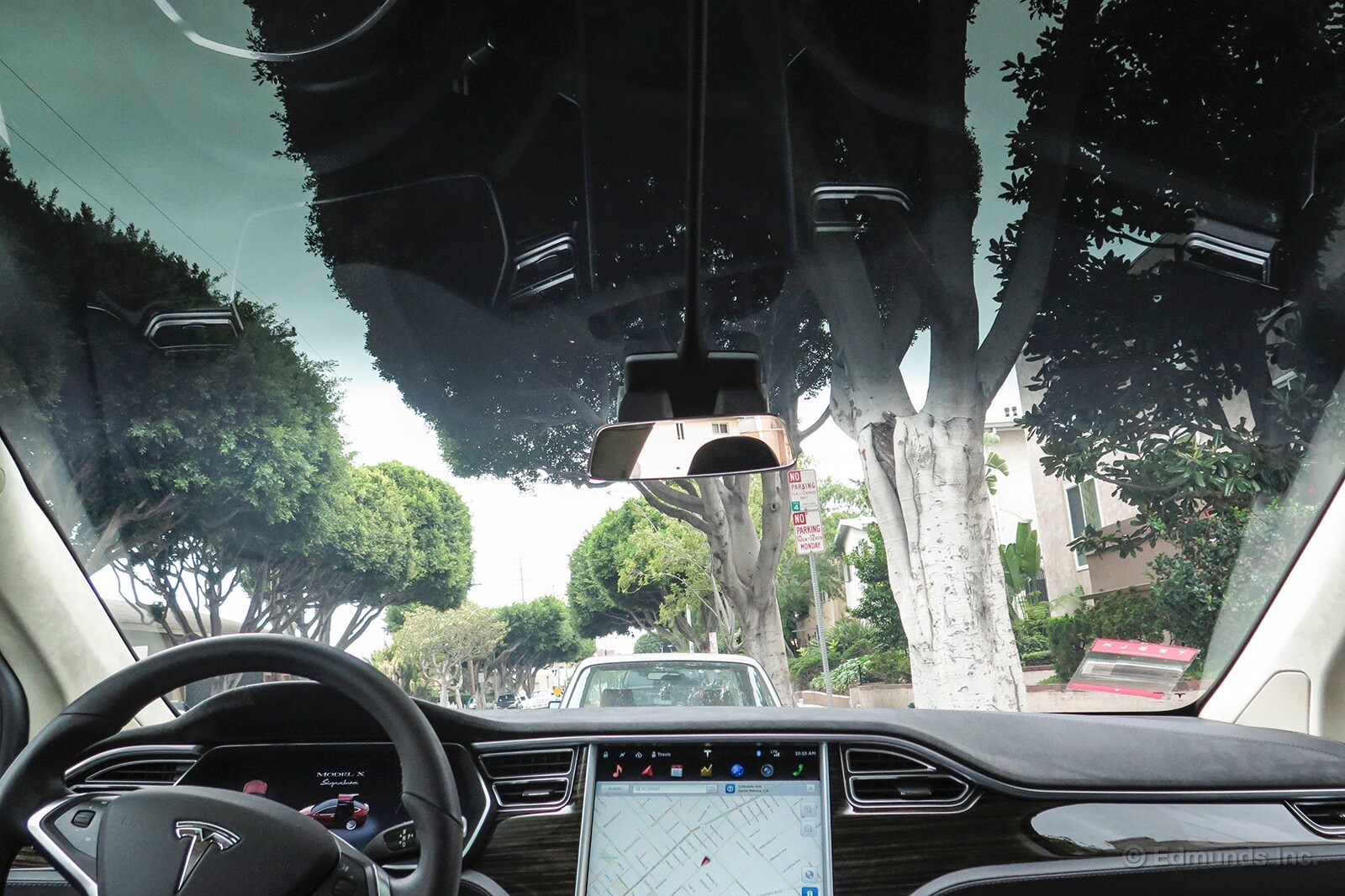
The windshield in our long-term 2016 Tesla Model X is really big. It's so big that it comes with a sun-screen-thingy to keep direct sunlight off your noggin. Even though the upper glass on the massive receding-hairline windshield is tinted, it doesn't protect you 100 percent from the midday sun, so included with the purchase of the Model X is a collapsible sunshade.
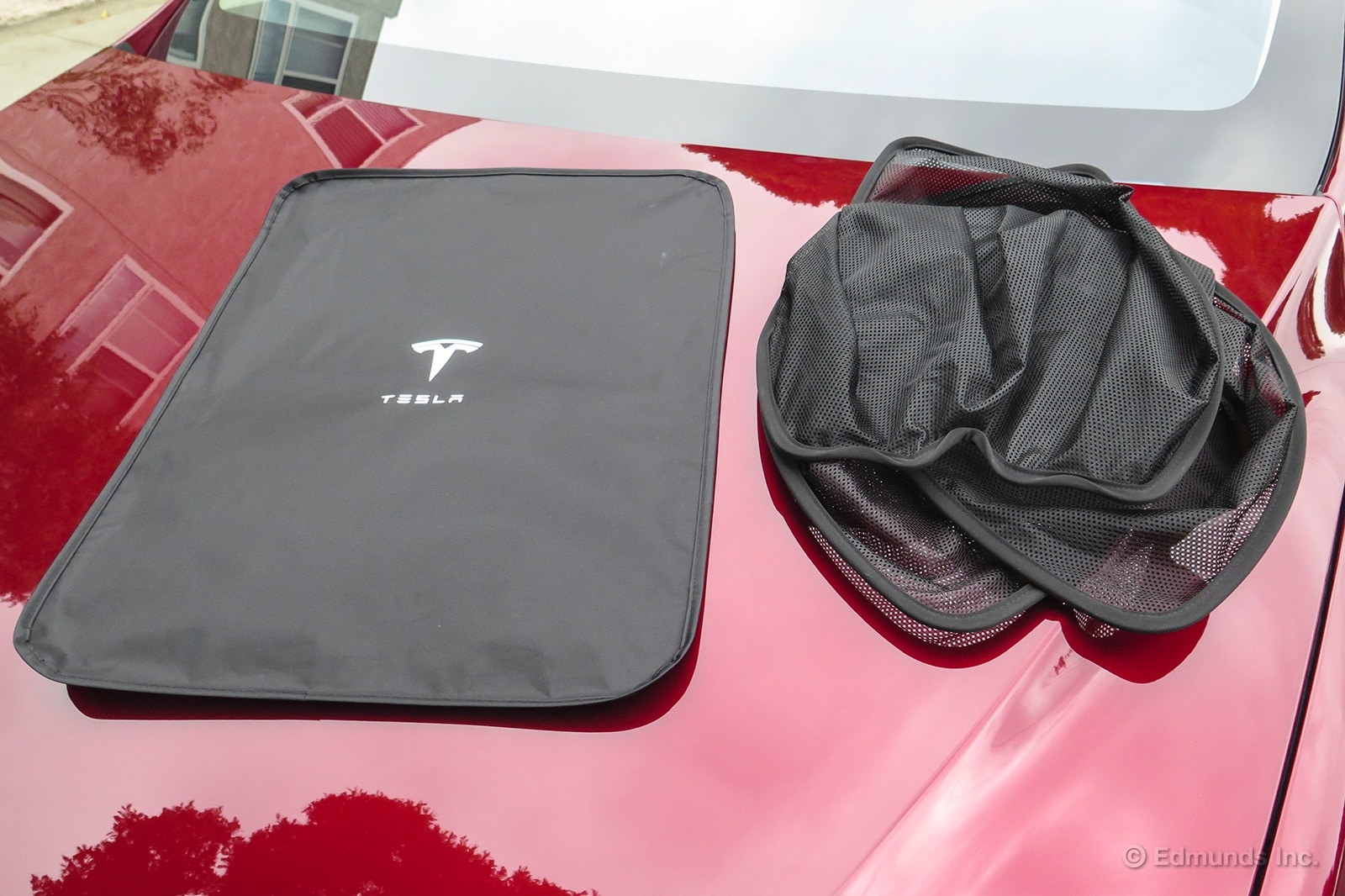
Unfortunately, this part is not some sort of elegant leather or suede solution that rolls out from one spot in our $145,000 luxury crossover. Instead, it's a simple mesh screen that comes off as something you picked up at Auto Zone for your 1995 Chrysler Town & Country.
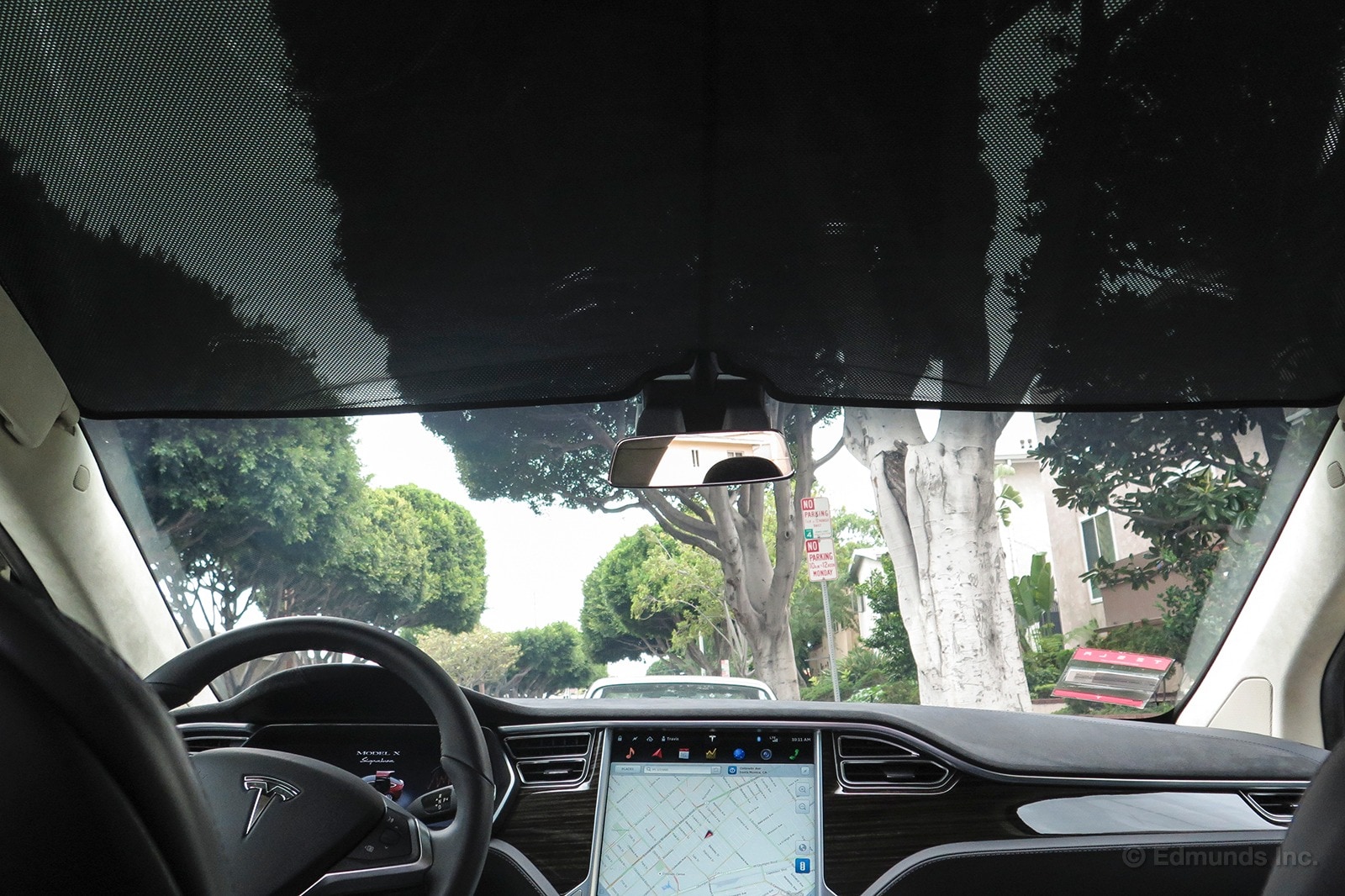
For installation, you simply unfold the shade, and then wedge it between the three sides of the windshield and the rearview mirror.
If there are clips or magnets or latches to hold it in place, I couldn't find them. It's easy enough to pop open and install, and it stayed in place all weekend (even during a "Ludicrous" launch) but I still don't like it.
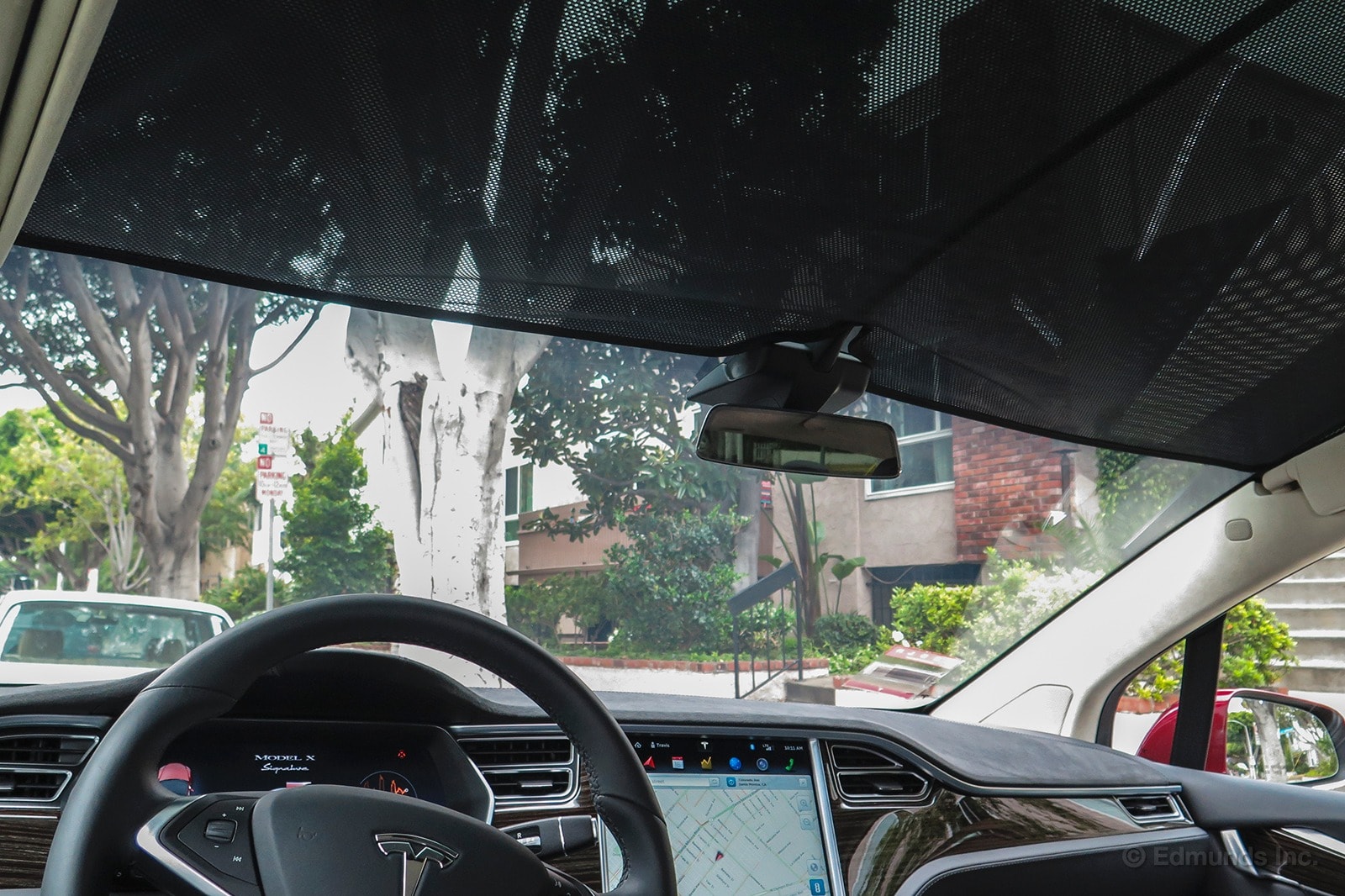
Sure, the sunshade does its job. It keeps direct sunlight off your face and likely keeps the cabin cooler. But it's an eyesore and comes off like a cheap afterthought. As a result, I would leave this piece folded up in the rear seat until my front passenger started to complain. And even then, I might pretend I forgot the shade at home and just crank up the air conditioning.

We got an early dose of summer in Southern California this week. Sure enough, parking our long-term 2016 Tesla Model X outside my local gym resulted in a big increase in cabin temperature. Cue the app.
Before I left the gym, I pulled out my phone, started the Tesla app and checked the cabin temp on the Model X. It showed 110 degrees. Hot, but not unbearable. But why suffer? I set the cabin air-conditioning to "LO" and went about my business, packed my gym bag and chatted with a few friends on the way out. Eleven minutes later, I got to the car, with the interior temp on its way down, right past 70 degrees.
Chilling the cabin sucked up about 3 miles of the Tesla's range. In my mind, that's a tiny price to pay for such a big difference in comfort.
The app has a couple other cool features like summoning it from a tight parking spot, checking on the progress of a charge, flashing the lights and honking the horn (that combo works well finding the car in a big parking lot), but this is probably a favorite of mine.
I hate getting into a hot car and sweating on impact with scorching leather seats. This feature solves that problem and that's why I would use it any time I didn't need to squeeze out maximum range. It's like remote start, but smarter.
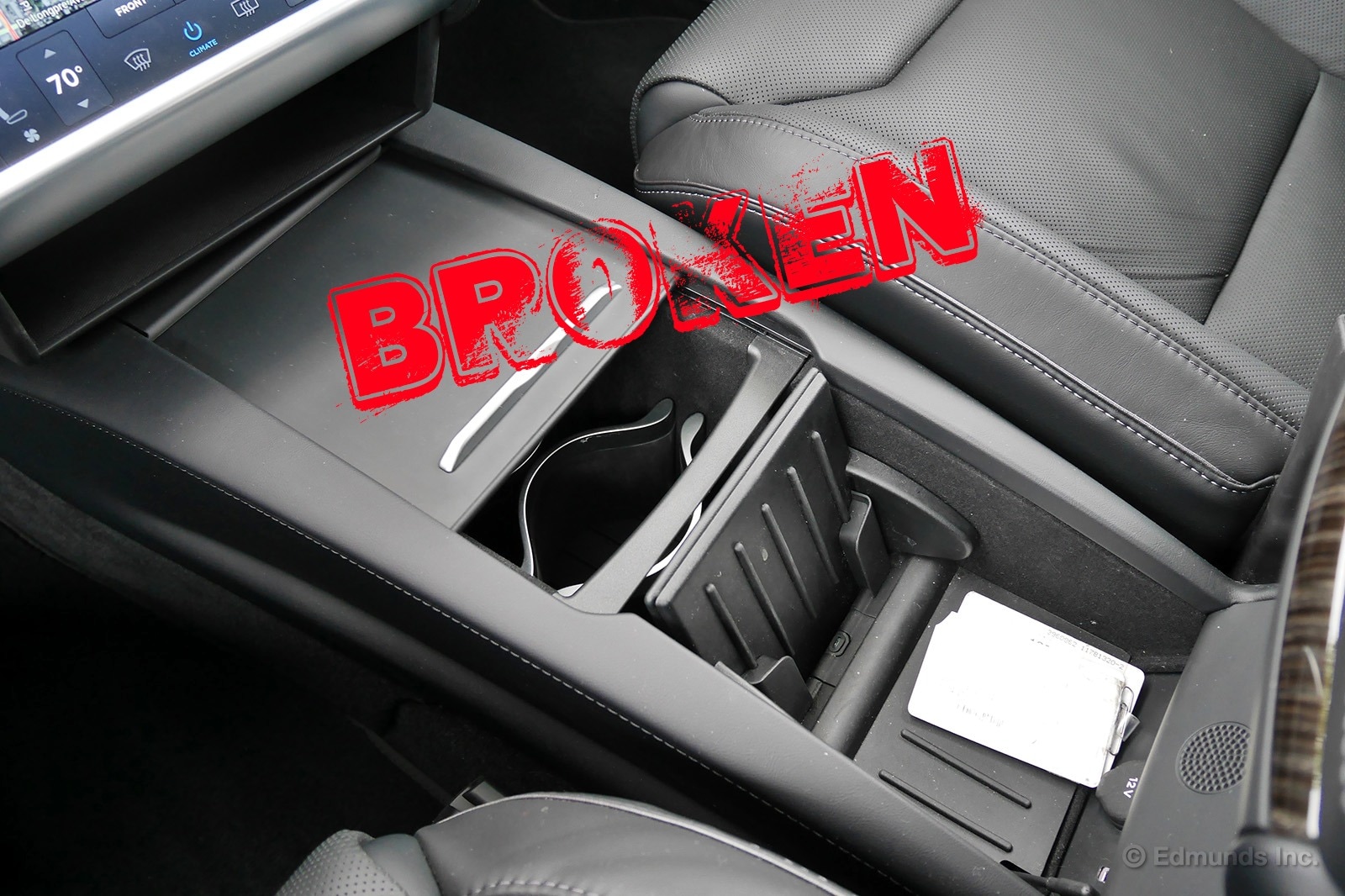
The sliding door that covers our 2016 Tesla Model X's main center console bin is broken. You can slide it forward all you want but it just slides closed again as it was when I took the above photo. Want to use the clever cupholders below? Too bad.
The aft bin, which does stay open, also feels a bit broken as one must awkwardly press on its forward edge through a rough detent to open it. However, I think that's just how it's supposed to work. Overall, I'm unimpressed by the Model X's interior quality. Still, when functioning at least, I like this center console better than our Model S' weird center gutter.
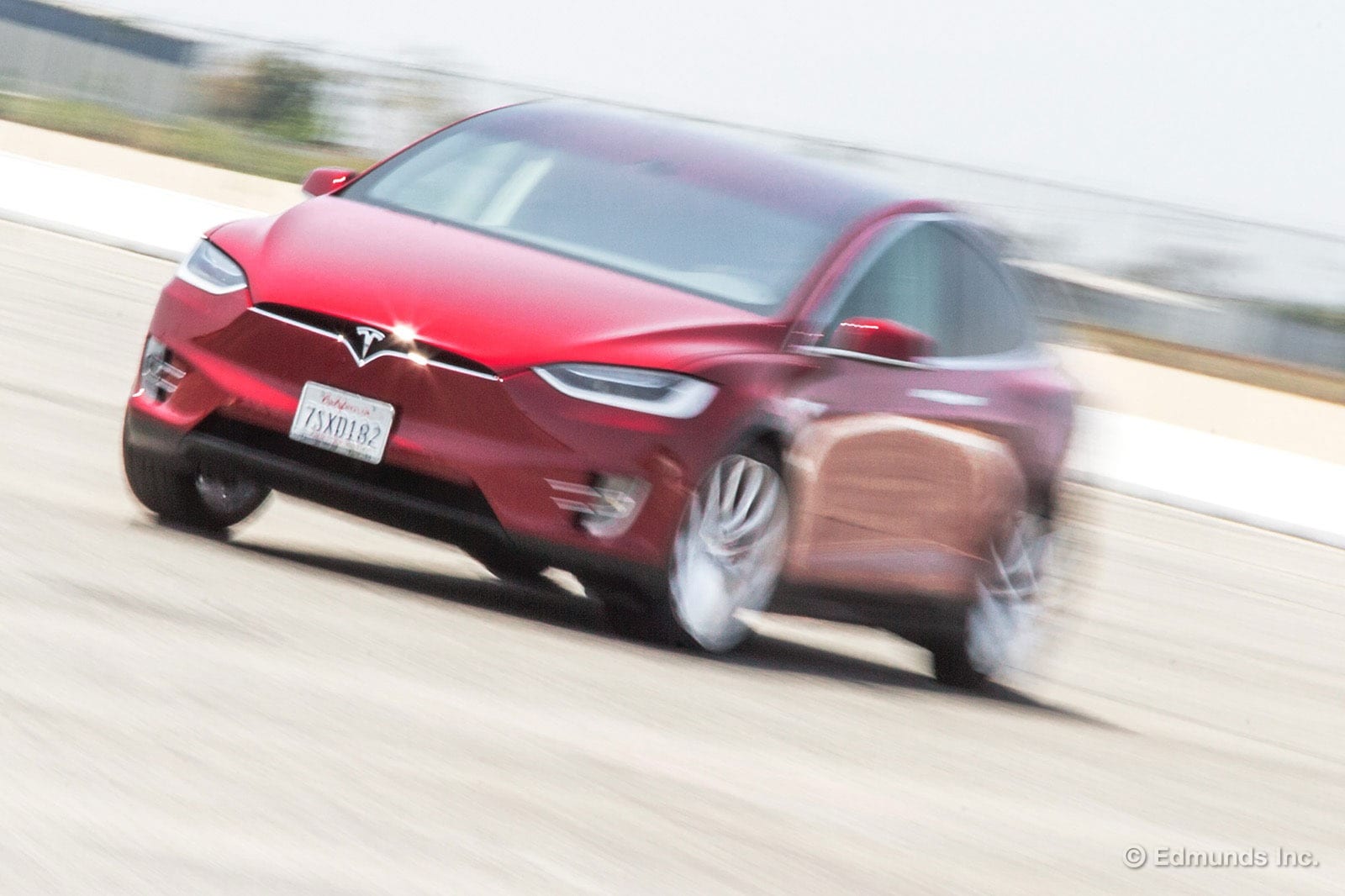
We took our 2016 Tesla Model X out to see how it would perform on our test track. Take the jump to see how fast Ludicrous Mode really is.
Vehicle: 2016 Tesla Model X Signature P90D
Odometer: 3,927
Date: 5/31/2016
Driver: Jonathan Elfalan
Price: $144,950
Specifications:
Drive Type: All-wheel drive
Transmission Type: Direct-drive
Engine Type: Electric motor
Battery Capacity: 90-kWh
Brake Type (front): One-piece ventilated discs with four-piston fixed calipers
Brake Type (rear): One-piece ventilated discs with four-piston fixed calipers
Suspension Type (front): Double wishbone with coil springs
Suspension Type (rear): Independent multi-link with coil springs
Tire Size (front): 265/35ZR22 102W
Tire Size (rear): 285/35ZR22 106W
Tire Brand: Pirelli
Tire Model: Scorpion Zero
Tire Type: Asymmetrical summer
Test Results
Acceleration:
0-30 (sec): 1.5 (w/TC on 2.3)
0-45 (sec): 2.3 (w/TC on 3.6)
0-60 (sec): 3.5 (w/TC on 4.9)
0-60 with 1-ft Rollout (sec): 3.3 (w/TC on 4.6)
0-75 (sec): 5.0 (w/TC on 6.7)
1/4-Mile (sec @ mph): 11.8 @ 113.6 (w/TC on 13.1 @ 108.6)
Braking:
30-0 (ft): 28
60-0 (ft): 111
Handling:
Skid Pad Lateral acceleration (g): 0.87 (0.85 w/ESC on)
Comments
Acceleration: Though not ludicrously quick, the key-up run in the regular "Sport" mode is still plenty quick and actually prolongs the feeling of acceleration compared to Ludicrous mode, which delivers quick stomach twisting thrust for a second or two (up to about 35 mph), before it begins to drop off significantly. In fact, a macro look at the data shows that the Model X catches up to itself in terms of longitudinal acceleration at approximately 60 mph.
If you've ever experienced the Six Flags Superman ride, which uses electromagnetics for the powerful propulsion, then you'll have an idea of what the model X is like in Ludicrous mode. It's nearly the same sensation, except you have to steer.
The Model X leaves the line in any mode without any mechanical drama. No wheelspin (even with "slip start mode" engaged), no fancy launch control or slipping of clutches or drivetrain shock. It. Just. Goes. And contrary to what some people think of electric cars, the Model X is not completely silent. There are whirring sounds from the electric motors, and of course the road noise generated from the tires. Accelerator response is instant and provides all the thrust you'd ever need. Yes, really.
Braking: Under hard panic braking, the pedal feels heavy but not stiff. I say this because it eventually goes through its entire stroke which is longer, like a traditional SUV. The Model X tracks dead straight with no steering corrections, it exhibits very mild nose dive, significantly less dive than many SUVs and has an almost imperceptible amount of noise from the ABS system. It's a very calm and stable experience from within the cabin. Heavy regenerative braking occurs when you lift off the accelerator pedal (in normal settings), which means the brake pedal actually feels pretty natural and easy to modulate when you use it for stopping, instead of transitioning through the weird regen-to-mechanical braking phases. Braking distances are consistent, solid and stack up well in the class, especially considering how heavy the model X is. No odor was detected after all runs were performed.
Handling
Skidpad: There isn't much feedback but the steering feels precise and you get a pretty good sense of when the tires have lost grip because you can hear them scrubbing (because electric car). Max torque output is limited when the wheels are turned, much like how the standard ICE systems operate. ESC cannot be defeated, but remains fairly transparent and unobtrusive around the skid pad. In transient handling, the X feels planted with the CG equivalent of a sport sedan, albeit a heavy sport sedan. Only in the "very high" and "high" suspension settings does the car roll more like an SUV, but these suspension modes are limited to 25 and 35 mph respectively, so once you're up to speed the standard height is dialed in. In "very low" mode, the suspension loses some of its compliance and will even skip over bumps and rough patches, but there is a noticeable gain in handling prowess as shown in our skid pad numbers.
The AWD system behaves pretty nicely as well, the front tires don't scrub or stutter under power, and the Xs stiff chassis doesn't shake or oscillate if it hits bumps mid corner. It's a solid vehicle. There are 3 steering assist modes as well; Comfort, Normal, Sport, which provide mild but progressively heavier steering effort. This doesn't provide the driver much benefit and would likely be overlooked by most. - Jonathan Elfalan
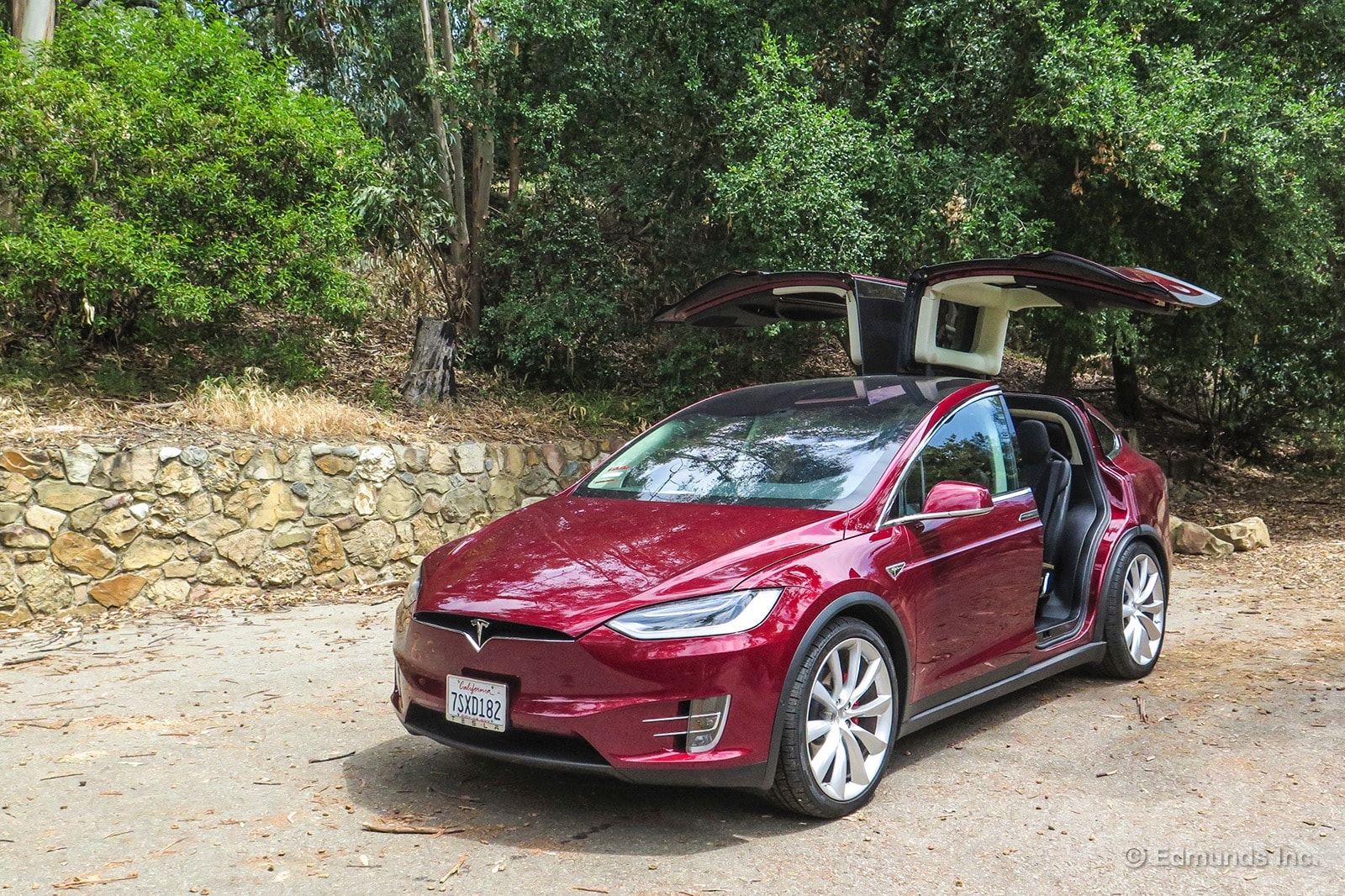
Aside from being inconvenient, cumbersome, slow to operate and just downright silly (all issues that Jay pointed out earlier along with several others), the doors on our long-term 2016 Tesla Model X are dangerous. More specifically, the automated functions of these doors have caused physical harm to at least two human beings (including myself) in my presence.
Here's how it happened.
The first time, I was standing between the open front passenger door and the car. Unbeknownst to me, fellow editor Mike Magrath pressed the button to close the door. The top corner of the glass (the front door is frameless) slammed into the back of my head. Ow. Sure, you could say this is an atypical use case. But it happened. I have the bump to prove it.
The second injury occurred when I was walking past the driver-side rear door as it was closing. The sensors didn't spot me and the door smacked into my arm. My pride took a bigger hit than my flesh, but I was still more-than-miffed. I promised myself I wouldn't let the Model X abuse me further.
Occassion number three didn't involve any bodily harm to my person. Another driver got out of the front seat as the rear door was closing. Big mistake. The corner of the rear door hit him in the head. Hard. That one required a bag of ice.
Can you accidentally slam your fingers in the door of any other car on the planet? Of course. But this is different. The Tesla's doors can cause damage remotely from and largely independently of the actor.
What's more, the car can be driven, at speed, with the doors wide open. As much fun as that might be (I absolutely didn't try that on a closed course, nope, not me, that totally wasn't what I did last weekend), it certainly isn't safe.
Also, the doors will straight-up crush a gym bag. I'm not willing to put my leg in there yet but they take serious resistance from my hand to stop from closing when the sensors don't sense them. If only a seven-seater EV with all the same benefits of the Model X existed, but with none of the drawbacks from these gimmicky party pieces... Hmmmm.
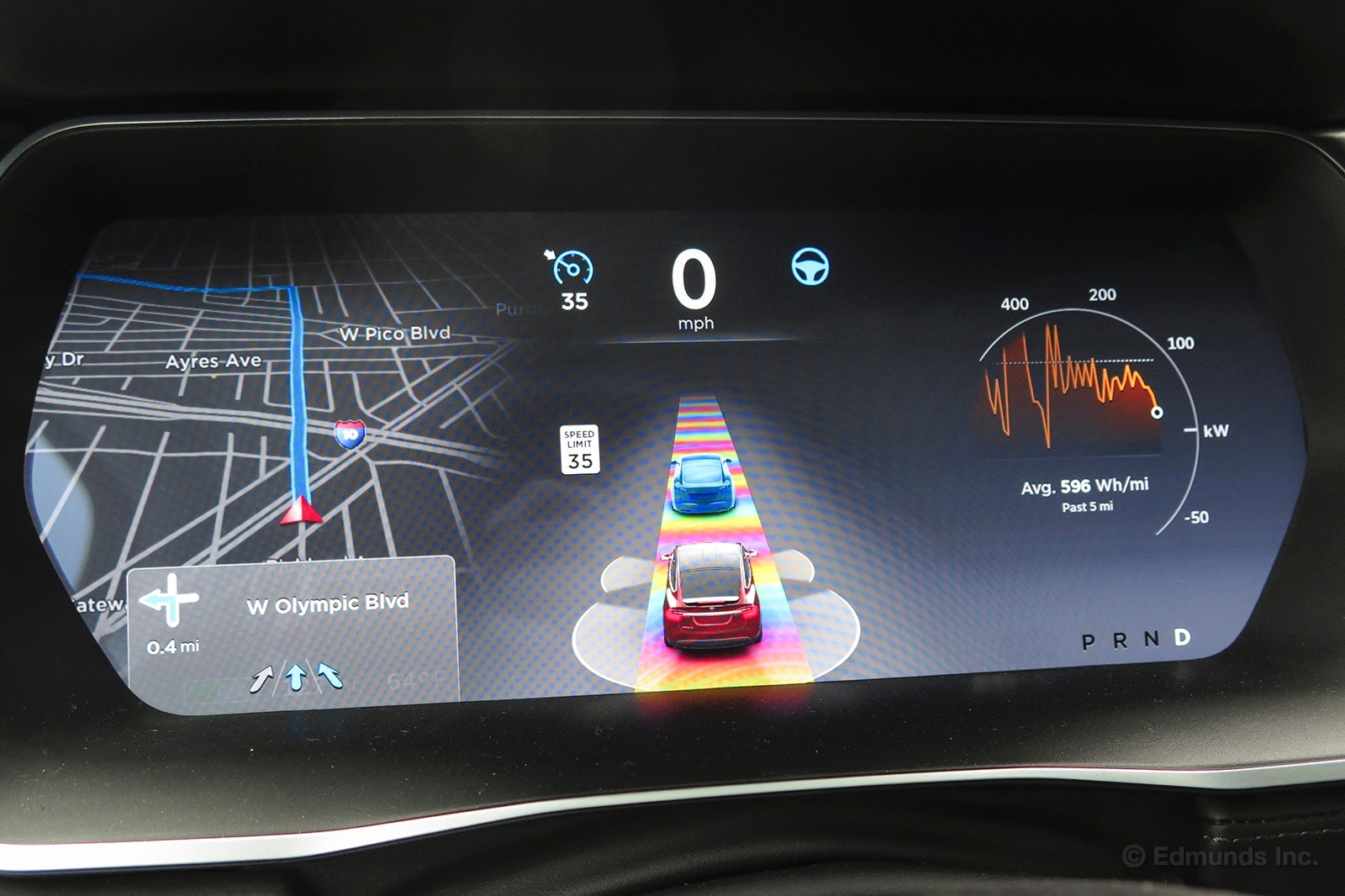
A few editors have tested the Autopilot feature in our long-term 2016 Tesla Model X and have generally spoken its praises. Office musings of the Model X's "best adaptive cruise system currently available" and the potential of a hands-free commute is pretty enticing. Clearly, I wanted to test it out for myself. So, with four passengers on a short trip to and from Dodger Stadium, I set the Model X loose.
The trip to the stadium was in daylight among heavy traffic. I engaged the adaptive cruise control (ACC) and eventually the Autopilot feature (tap the cruise control stack four times quickly and you get Autopilot plus the cute Mario-Kart-rainbow-road display/easter egg).
The ACC worked well, keeping the Tesla centered in the lane and impressing my passengers. One of its foibles, though, was a tendency to stop a bit late when traffic came to a halt. The Tesla would hit the brakes hard when it realized it had been following too close, thrusting passengers forward in their seats.
Increasing the ACC's following distance was an easy fix. I moved it from a one-car distance to a three-car following distance and braking became much more gradual. Unfortunately, lots of LA drivers take advantage of that space and cut you off. It's hard to find a good middle ground, but all things considered, the system worked really well. I'd use it for that kind of thick, daylight traffic every day.
On the way home from the baseball game, though, things were much, much worse.
At night, the Autopilot system becomes confused, wayward and pretty much useless. It drifts the Tesla into other lanes (especially around curves) and doesn't spot pedestrians or curbs well. I felt I had to intervene several times to avoid bodily injury or property damage. Then I decided to completely turn the system off so the car wouldn't cut off another driver or creep over into another lane.
ACC and Autopilot worked much better with more cars around and I imagine that's because of the light they cast on the road and the reference frames they provide. But with less traffic, the Model X seemed to be driving a bit blind, unable to see what was ahead and clearly unable to react to what it couldn't see.
Autopilot is not a "take your hands off the wheel and let the car drive you home" system, especially in the dark. It can do an acceptable job of getting you from on-ramp to off-ramp on roads with good markings, during daylight hours. But that's a lot of conditionals. Based on my experience, I'm leery about relying on this system on the freeway at night.
Is it impressive? Absolutely. Is it finished tech? Nope.
Using the Trailer Hitch To Haul Bicycles

I understand that you're tired of hearing about the so-called "Falcon Wing" doors on our 2016 Tesla Model X. I'm equally tired of harping on them, quite frankly, but those doors are liable to stand in the way of it being named the official car of the US Ski Team or any pro cycling team.
The need to carry such things as bikes, snowboards, kayaks, surfboards and roof storage pods is a fairly basic SUV requirement. But with the Model X's roof off limits, its factory tow hitch is the only way that cyclists and skiers can tote their gear. The way forward for kayakers and families that need extra road-trip storage is less clear.
Tesla painted themselves into a corner with those doors, in other words, and the hitch was their way out. They simply had to provide one, and the towing shortcomings I uncovered during my recent tow test supports my growing suspicion that actual towing may not have been the prime motivation.
But I digress.
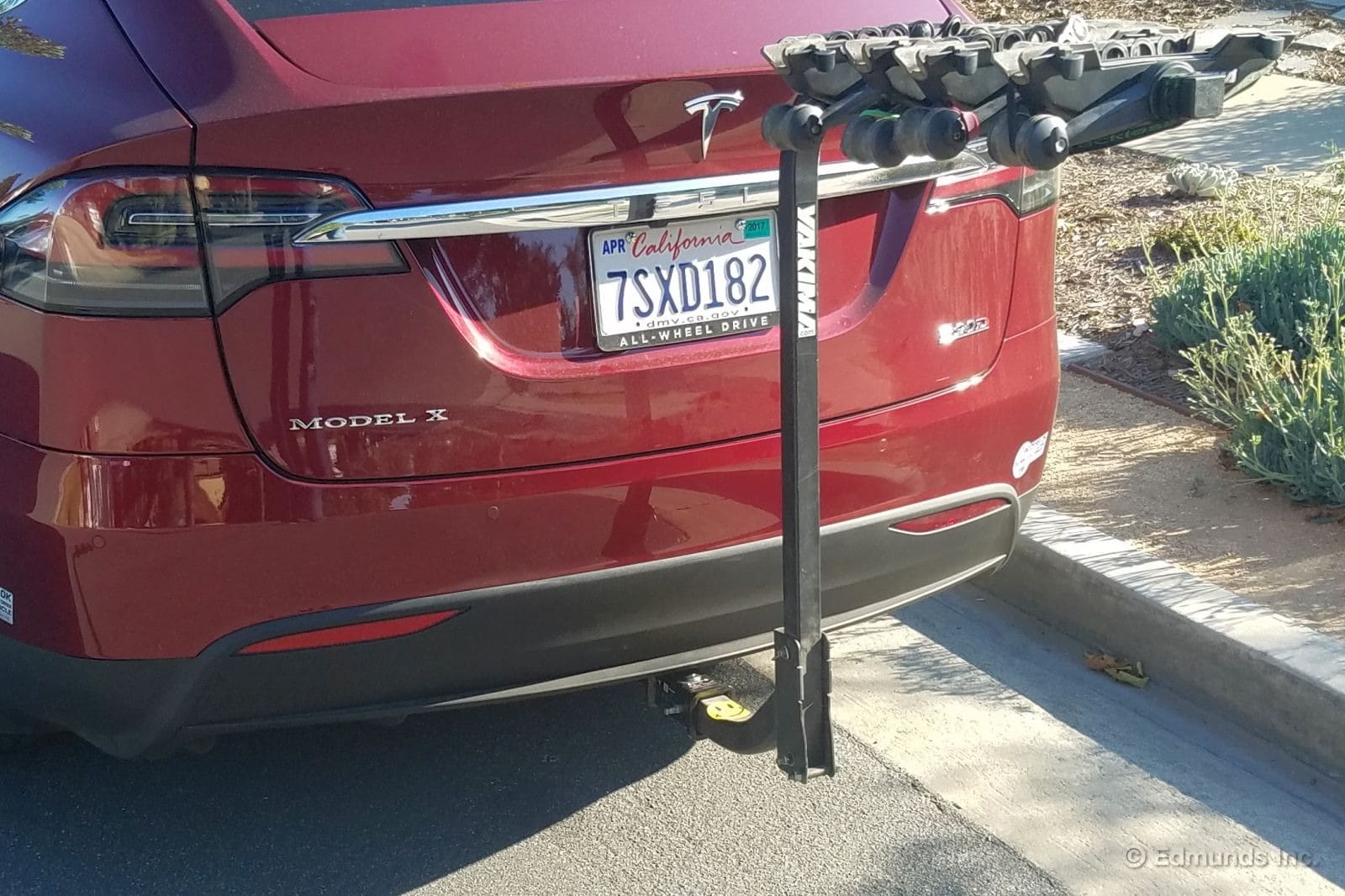
I've had this Yakima four-bike rack for more than a dozen years. It plugs into a standard 2-inch receiver-style tow hitch, and there's a pin that allows it to hinge down to ease access to the hatch. But that's not practical when bikes are attached, so I have to plan it so they're the last items I load and the first things I unload.
That's the thing about hitch-mounted racks — they prevent access to the main cargo compartment.
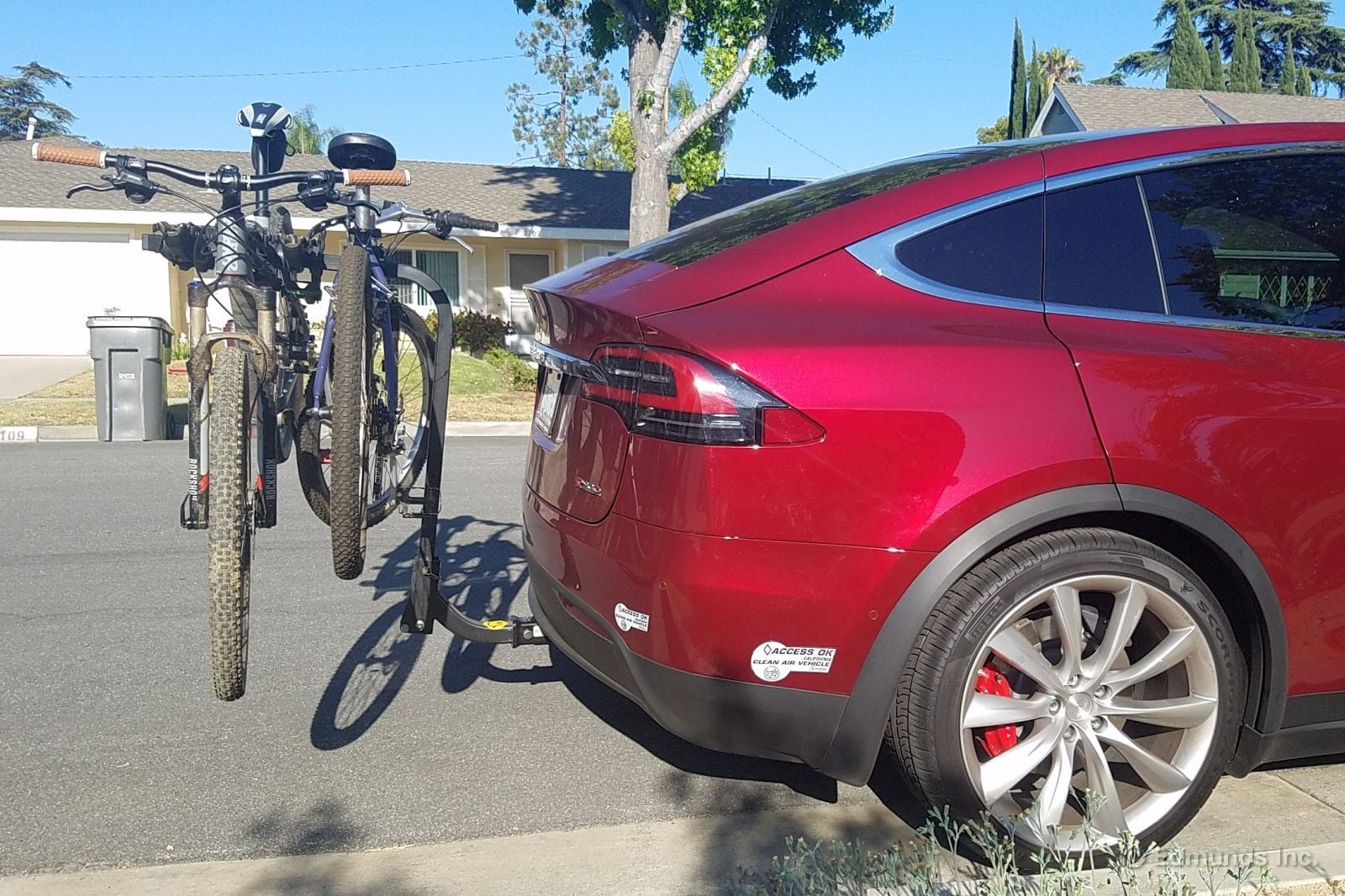
The bikes hang far off the back, but here they don't block the high-resolution back-up camera too much. However, it is necessary to engage tow mode to turn off the rear sensors so the car won't constantly think I'm about to back in to something.
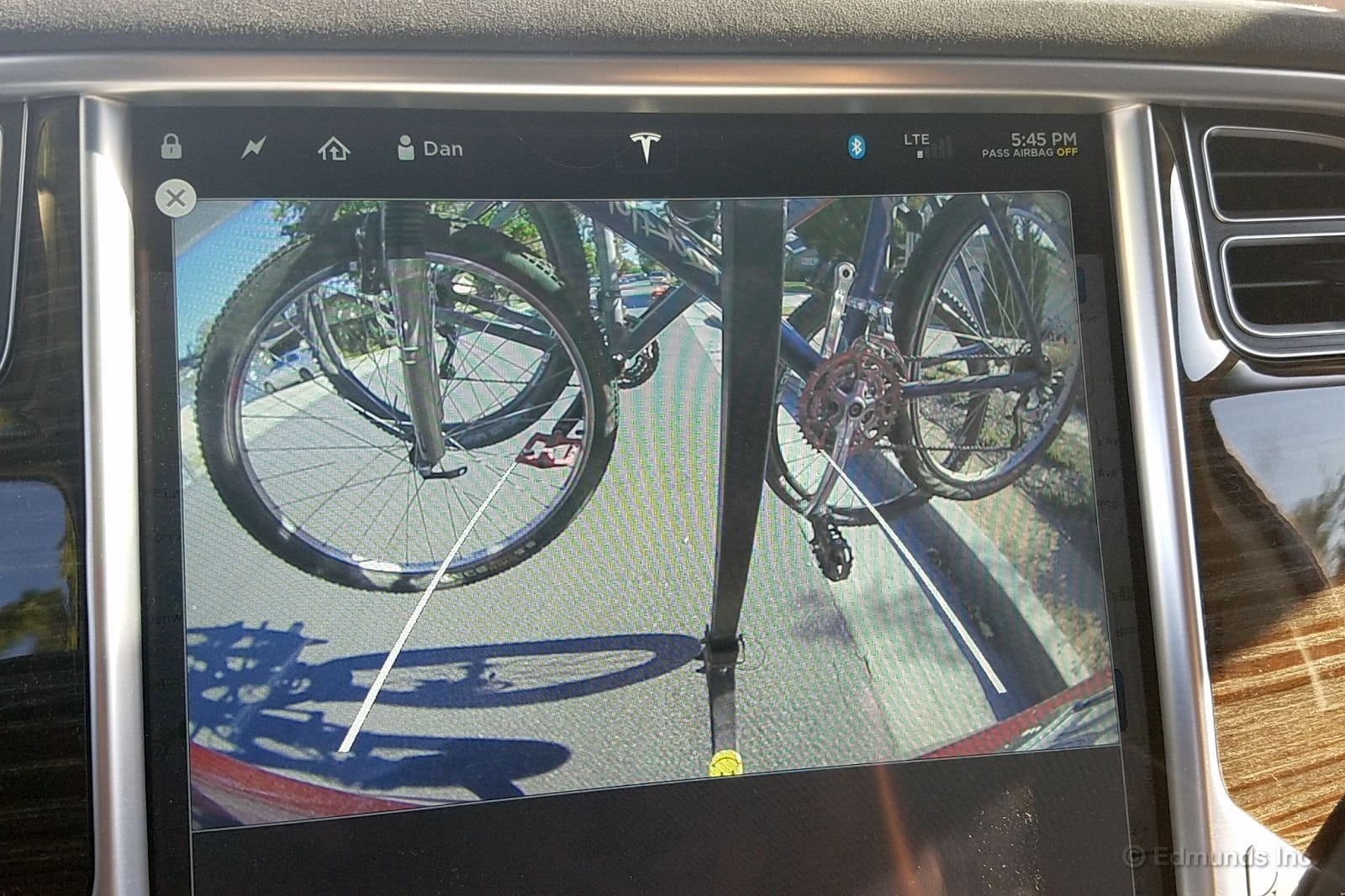
This use case is why the trailer hitch on the Model X needs to exist. The decision to bless it with a tow rating seems like an outgrowth of its mere existence, a necessary move along the lines of "If you build it, they will tow." But in my view they should have stopped at 2,000 pounds (or less) and called it a day.
If any pro cycling team figures they can deal with the issues of a Tesla's charging and range, they'd be better off with the Model S instead. It does not have (or need) a hitch, thanks to its conventional roof with built-in rack tie-in points that can support a bike rack — or a ski rack, a kayak rack, a surfboard rack or a roof storage pod.
In many ways the Model S is a more flexible cargo-carrying machine than the Model X because it has not been saddled with those silly you-know-what doors. Just sayin'.
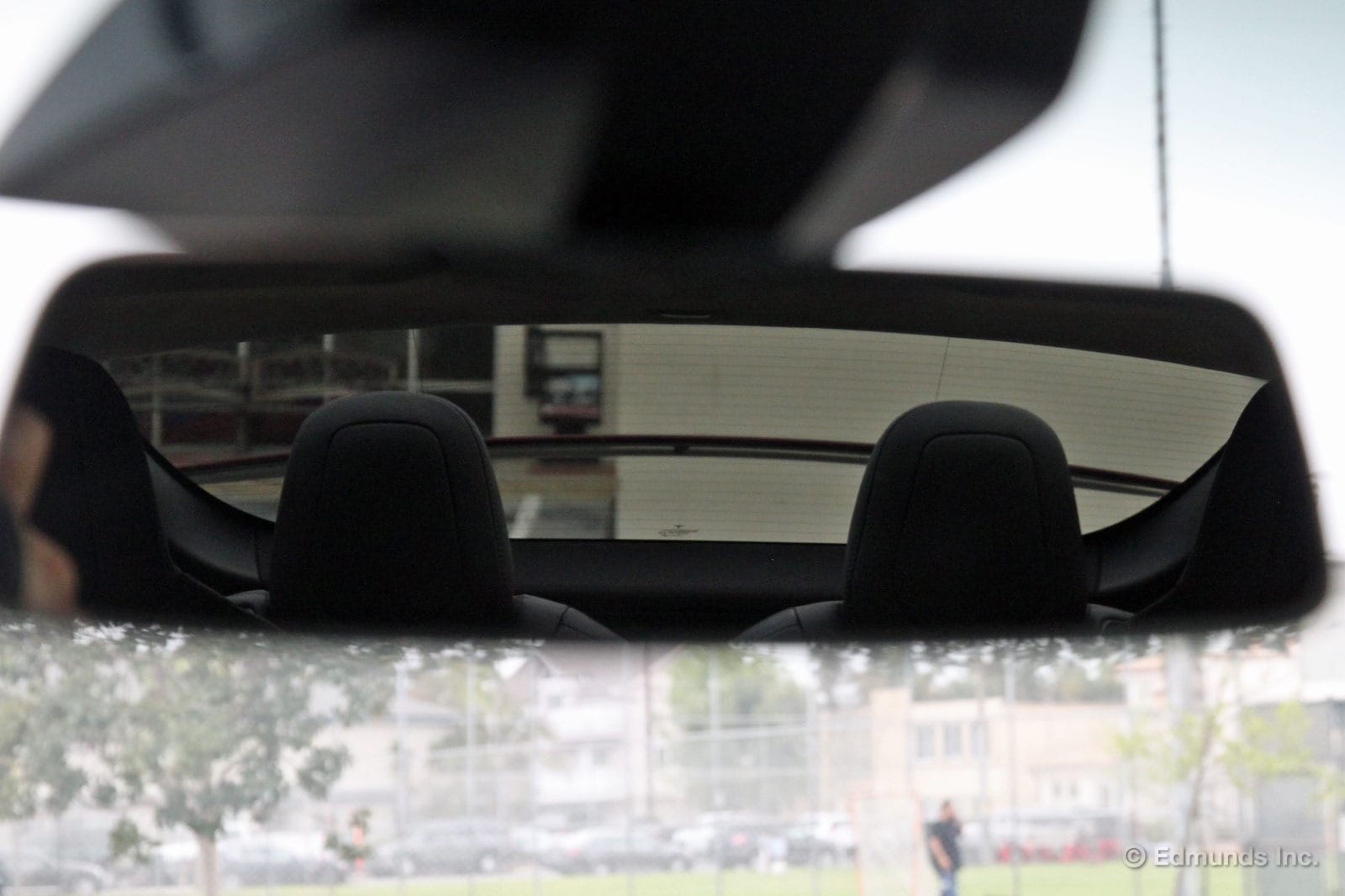
Every time I get behind the wheel of our 2016 Tesla Model X I'm surprised by its lack of rearward visibility. Looking into the rearview mirror is like peeking through some window blinds, which is surprising given how this SUV looks like a rolling greenhouse from the outside.
I'm not sure if it's just an illusion made by the rearview mirror's relative size compared to the windshield or not, but the Model X's rear mail-slot outward view makes me nervous when I glance up to get an eye on traffic behind me.
Folding the third-row seats would help a little although that's not very practical on a daily basis. Looking closer, it's the steep rake of the rear glass that makes the daylight opening appear so small. Not much you can do about that.
My First Supercharger, and Autopilot Inconsistencies
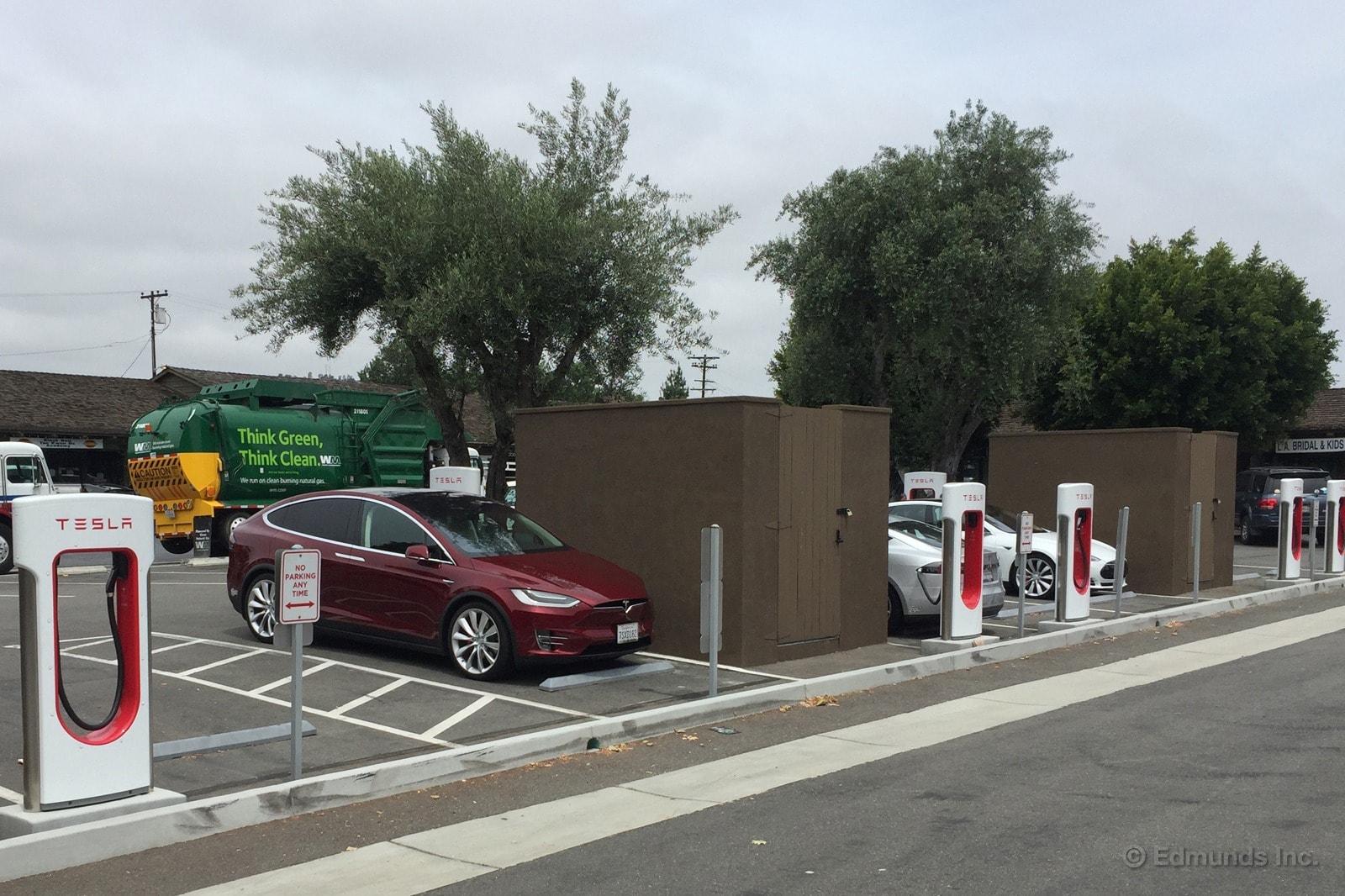
A couple of weeks ago, I attended the U.S. launch event for the 2017 Fiat 124 Spider in San Diego. From the Edmunds office in Santa Monica, my hotel was a straight shot south on Highways 405 and 5. I decided to make the trip in the 2016 Tesla Model X for a couple of reasons. I wanted to test the Tesla's Autopilot function on the highway as well as use a Supercharger station for the first time.
I unplugged with the Model X in its 250-mile extended range mode. The 104-mile trip from the office to my hotel took 2 hours and 40 minutes, with my average consumption at 371 Wh/mile. The estimated range remaining was 122 miles, so the Tesla's initial calculation was off by 24 miles. Even with afternoon traffic in Los Angeles, I rarely stood still in the HOV lane and even when traffic cleared up I stuck to the speed limit. I don't know how much more gingerly I could have driven the car to match its expectations, especially considering my consumption was one of the lowest recorded since we got the car.
I left the Model X at the hotel's valet stand, and picked it up a couple of days later with the estimated range now at 121 miles. The 39-mile trip north to the Supercharger station in San Juan Capistrano knocked off 42 miles of range.
I pulled into a small strip mall and parked next to several Model Ss also using the seven-charger station. I plugged in, walked to a Starbucks across the street and set up camp with my laptop. I got carried away with work and an hour passed before I took a quick look at the Tesla iPhone app and realized the Model X was fully charged and ready to go. I packed up and headed home.
I used the Autopilot functions extensively throughout the trip. For the most part, the automated driving system works well and doesn't jam on the brakes when a car merged into my lane from a reasonable distance away. The ping-pong effect that Reese described in his post still applies, as the Model X exhibits difficulty staying centered in its lane when the road curves. There were two or three times when the Model X began to drive over the lane markers and I had to guide it back into place.
I don't know if there's been an update to the Autosteer software since Reese's post, but it does seem to now require the driver's hands to be placed on the wheel intermittently. Apparently, if this is not done quickly enough, the automated steering and adaptive cruise control systems deactivate. I know this not because I was inattentive or distracted, but twice the system shut off despite my hands firmly gripping the wheel. Nothing wakes you up more than regenerative brakes kicking on and slowing the car down about 10 mph before you realize what's happening.
Technical glitches were not limited to Autosteer. The center screen locked up once while playing a podcast. The audio stopped and the screen froze. I had no intention of pulling off the freeway in an attempt to fix the screen, so I waited it out to see what would happen. After five minutes or so, the screen shut itself off and restarted. I reconnected my phone and everything went back to normal. It never happened again that weekend, but this bizarre incident will be communicated to our advisor next time we bring the Model X in for service.
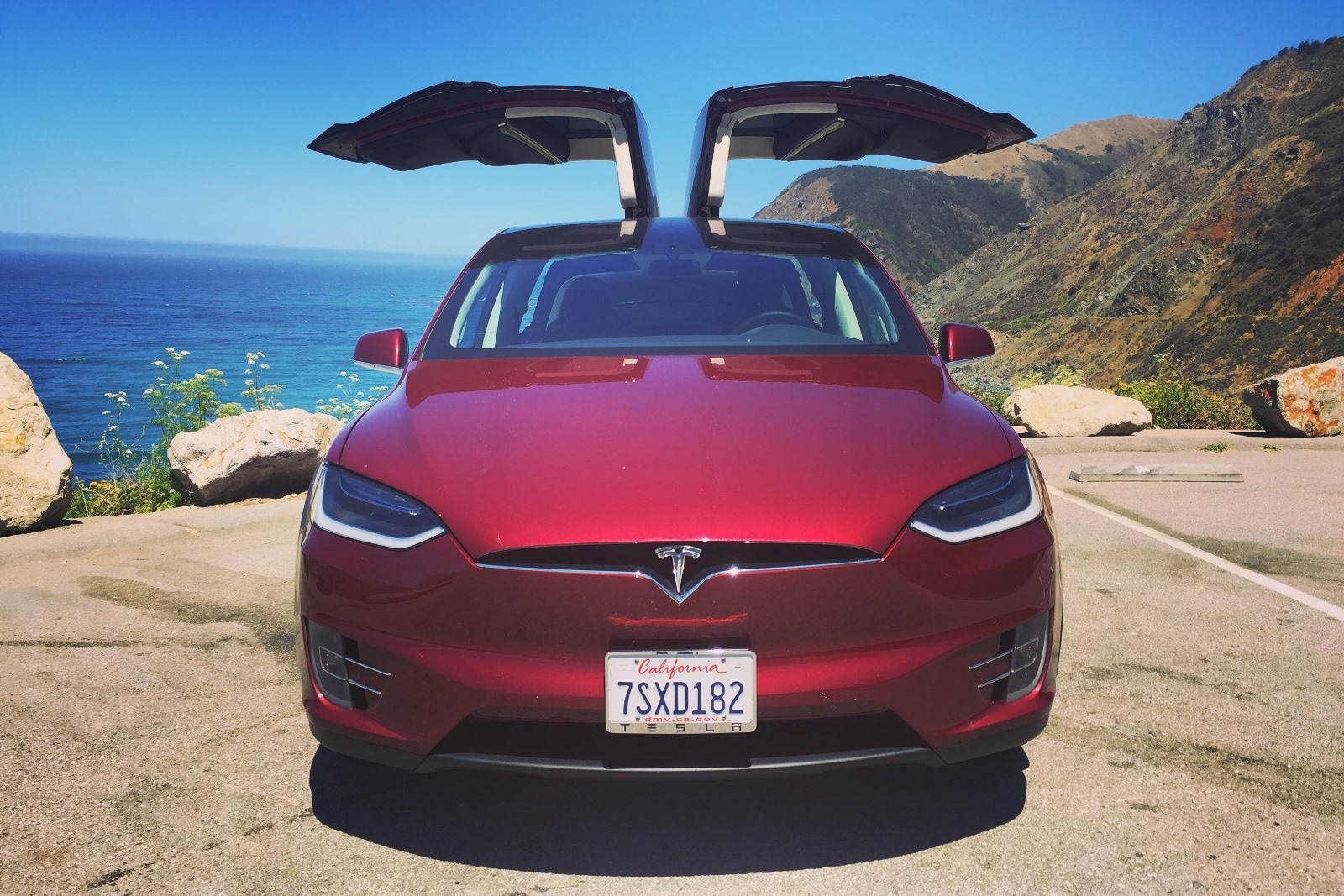
When I signed out the 2016 Tesla Model X for the weekend and realized I had no plans, I did what any reasonable car nut would do.
Checked the Supercharger network and headed for Big Sur.
Why? Because a major selling point of the Model X, like the Model S before it, is range. Real, usable, road-trippable range. Pump in a maximum charge and the Model X's battery display says 245 miles to empty, or sometimes a few more.
And the drive along Highway One past Big Sur is pretty much the best road trip in the world, so it just seemed like a sensible idea all around.
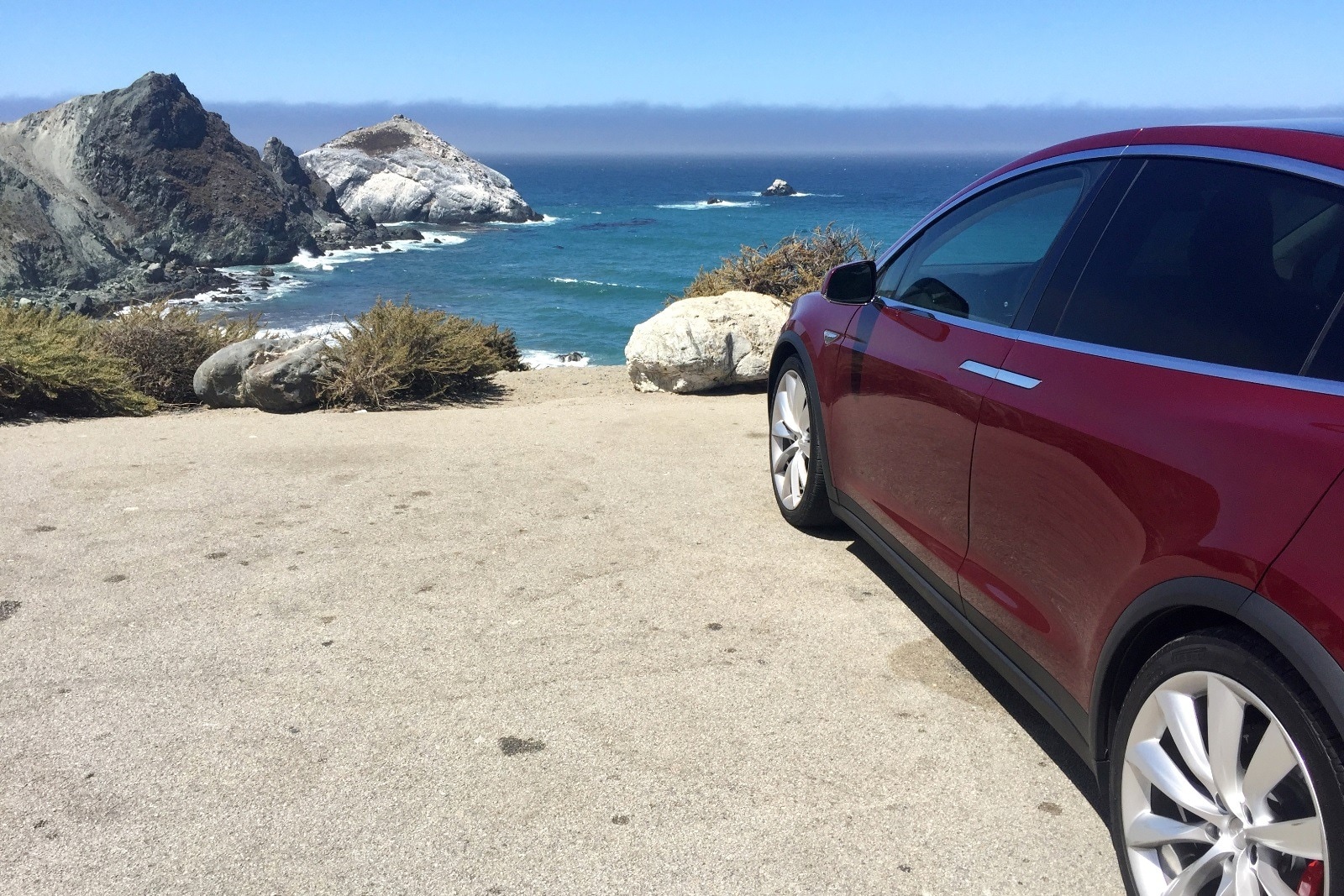
My Supercharger-limited itinerary took me from Oxnard to Atascadero, then west on the 46 and all the way up Highway One to Monterey (technically Seaside), then to a friend's place in Fairfax (north of San Francisco), then back to L.A. via San Mateo, Atascadero (skipping Big Sur on the return) and Oxnard.
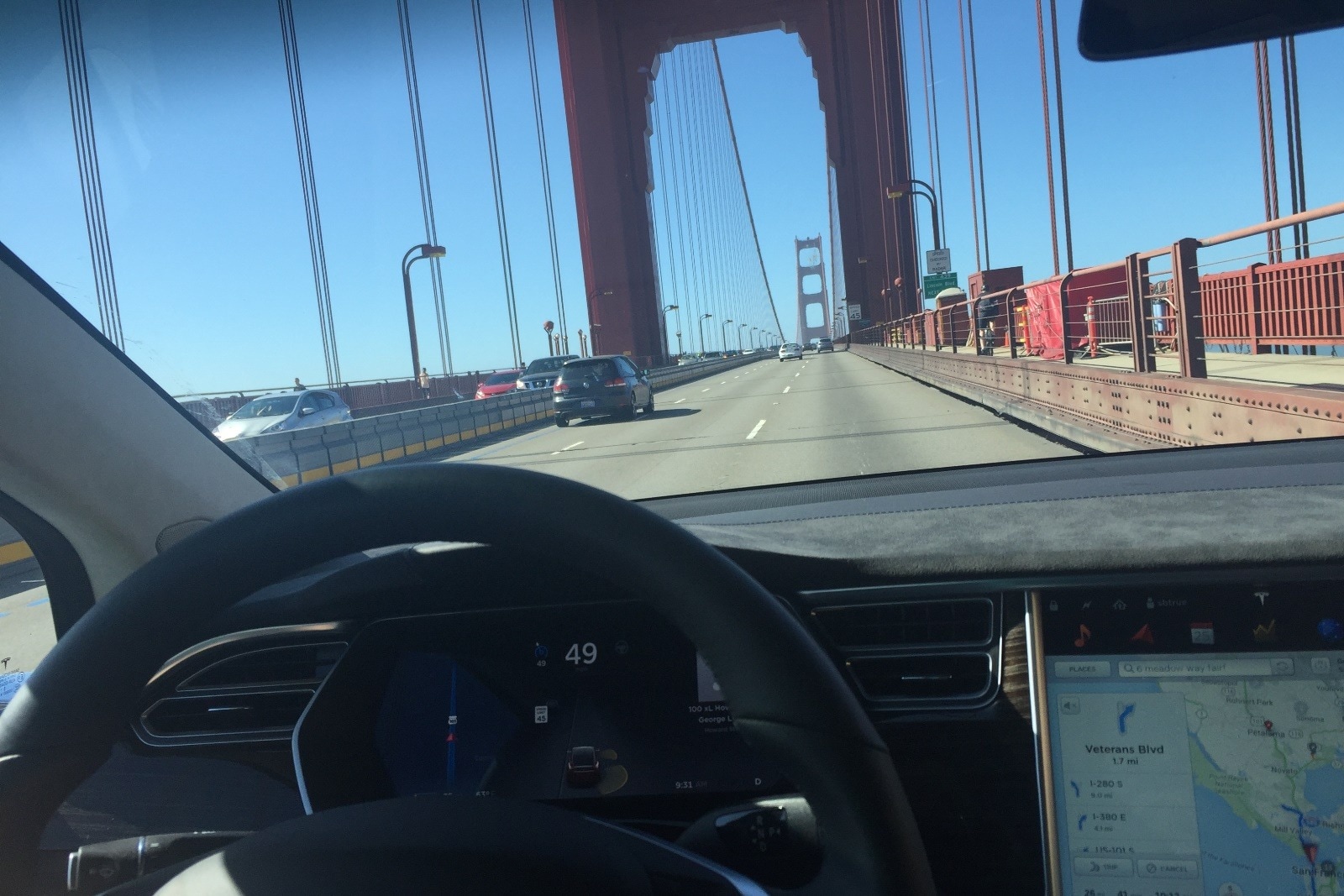
In terms of range and charging, I'll give you the blow-by-blow in a separate post, like Dan did. For now, I can tell you that I never really came close to running out of juice, and the range anxiety decreased as the trip wore on and I got to know the car. Still, I couldn't do better than 195.3 miles on a single charge despite having thoroughly de-leaded my foot for this experiment, and I had to stop at six Superchargers over the course of 1,000 miles, averaging an hour-plus per charge with one 2.5-hour outlier.
Translation: You can road-trip a Model X up and down the California coast if you feel like it, but I would advise budgeting twice the usual amount of time to be safe.
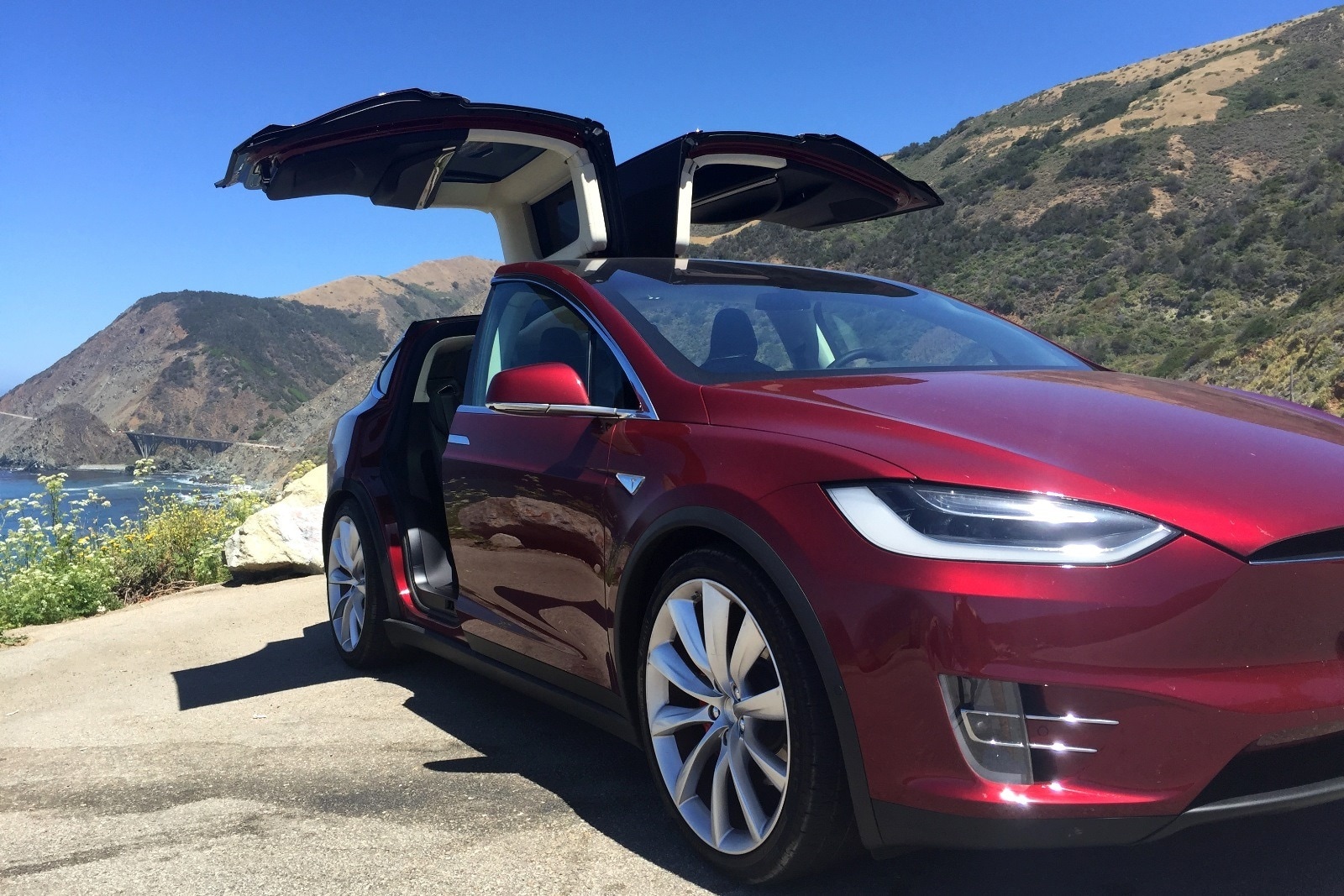
I'm not knocking it, though. Frankly, I'm amazed that this 5,600-pound jellybean full of batteries, built by a company still in its infancy, can accomplish this mission and also carry three rows of adults in comfort, get you to 60 mph in 3.5 seconds and handle more like a nimble sport sedan than a nearly three-ton people hauler. Haters have been heckling the Model X from the get-go, but to me, it's another astonishing achievement by a remarkably innovative American company. The trip had its annoyances, sure. But overall, it's an honor and a privilege to drive this car.
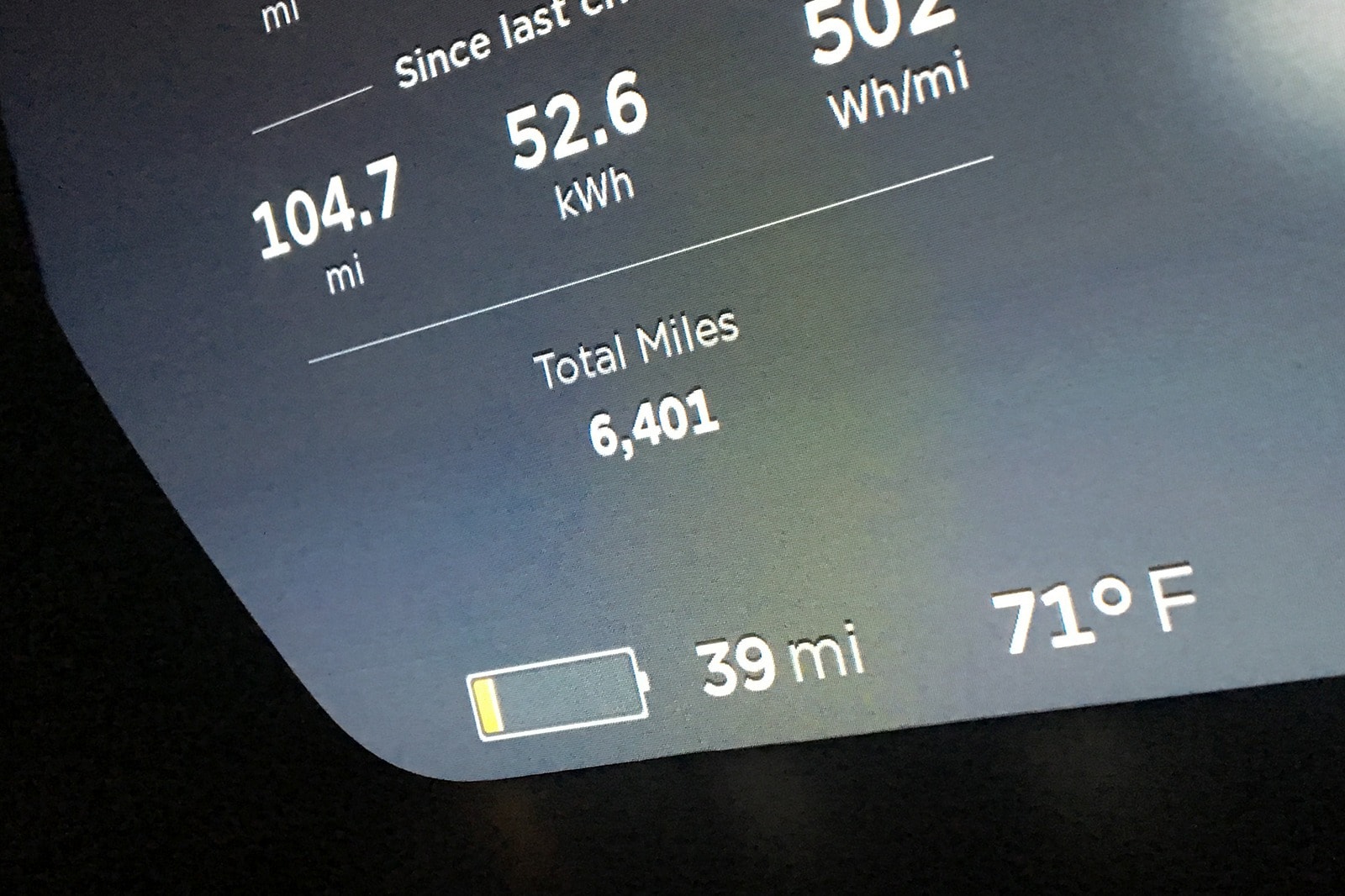
Batteries will slowly deplete themselves without powering anything, this is a fact of life. Our 2016 Tesla Model X is no different. I spent five days with it and between the time I parked it at night until I dragged myself out of the apartment the next morning, I noted a slight decrease in range.
The Model X consistently showed about seven fewer miles in range every morning than the night before. Since I'm not prone to Ambien-induced excursions, that loss is only attributable to the slow trickle of power to keep the car minimally powered. Something to keep in mind if you're short on range when turning in for the night.
Knowing that I only needed to drive a few miles into the office, I wasn't worried about having only 40-plus miles left the night before. That also meant that if some sort of emergency popped up, I'd probably have to swap cars or grab an Uber.
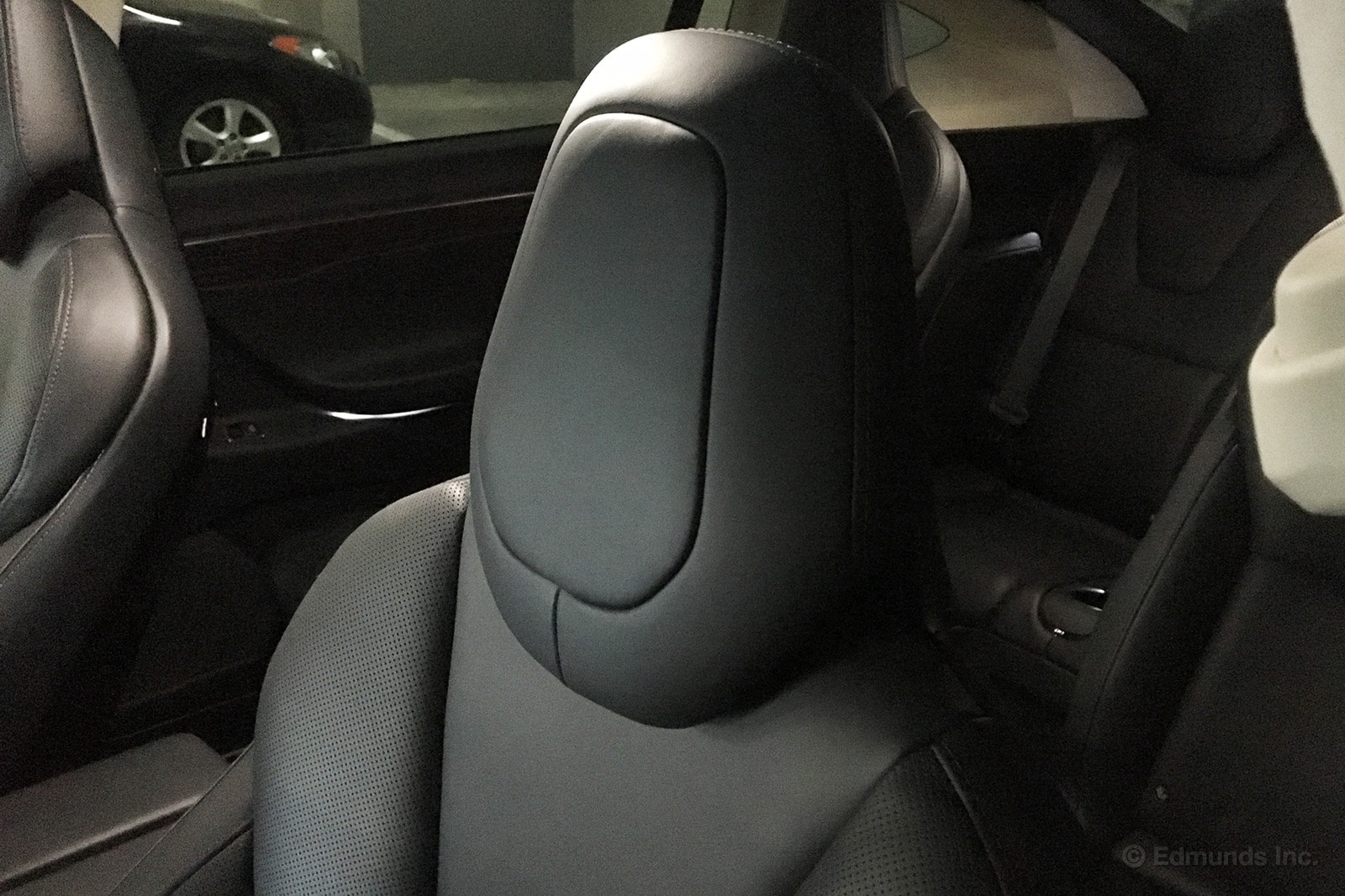
Unlike our old Model S, the 2016 Tesla Model X has headrests that move up and down. The problem, at least for now, is that we don't have any control over it.
The headrests move up and down according to the travel of the seat adjustment. Taller people move the seat further back, so the headrests rises. For me, the bottom of the headrests hits me right at the base of my neck, almost between the shoulder blades. It's not ideal.
There is hope, though. According to some Tesla forums, headrest adjustability may be part of a software update that will add some buttons to the seat adjustment menu. We'll keep you posted.
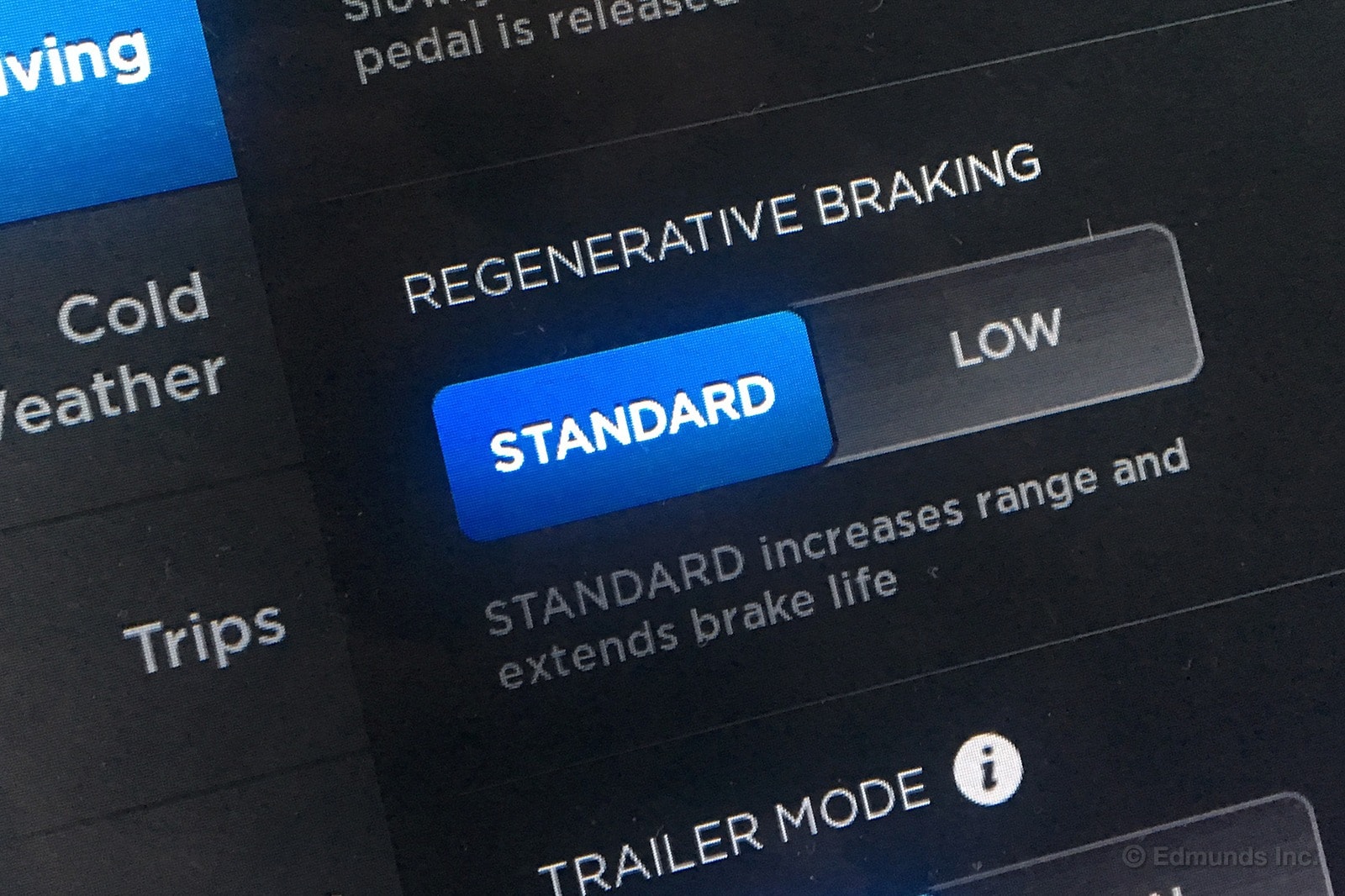
Heading into a long weekend, I decided to give our long-term 2016 Tesla Model X a full charge rather than the usual 90 percent. Once on the road, the regenerative braking system was clearly feeling the effects.
I've gotten used to rarely touching the brakes in the Tesla, as simply taking your foot off the accelerator can bring you almost to a full stop. But I'd never driven the car with a full 250 miles of range showing. Within a block of leaving the office, I lifted off the throttle, expecting that distinctive parachute-like deceleration. Instead, the Model X coasted along like a regular car.
Thankfully, there weren't any cars in front of me and I wasn't driving very fast. Plus, muscle memory had me hovering over the brake pedal anyway.
After about 10 miles, the brake regeneration came back, and this all makes sense. If the battery is at capacity, it can't accept more juice, so the car effectively bypasses the regen system. Something to keep in mind for the next extended charge.
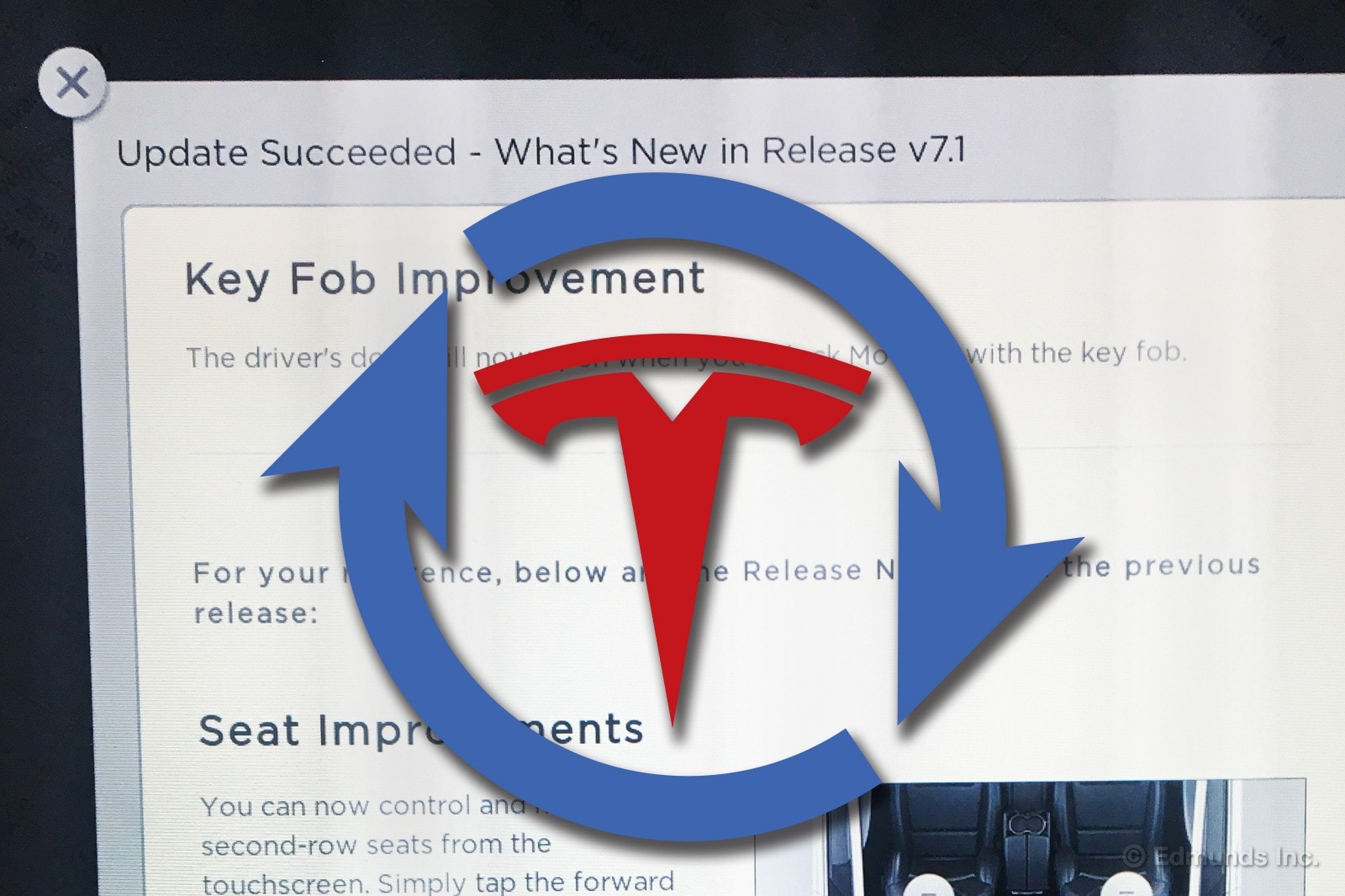
Buzz went my phone and instead of a text, it was a message from the Tesla app. A software update was available for our 2016 Tesla Model X, and I could specify a time to install it. I selected 1:00 a.m. that night.
The next morning, I got in the Model X and was greeted by a screen detailing the changes.
First up is an improvement to the Falcon Wing doors and rear hatch. As before, sensors will detect if obstacles are present and open them only partially if so. Now, however, there is an option to override the sensors and open them fully if you're certain you'll clear the obstacle. There's also a new "Always Open Fully at This Location" button that will remember to do just that.
The next update opens the driver door when you unlock the Model X with the key fob. I tried it, and it works as specified, without bashing into whatever is next to it.
Sadly, there's still no update for the headrests, but I hope they're forthcoming.
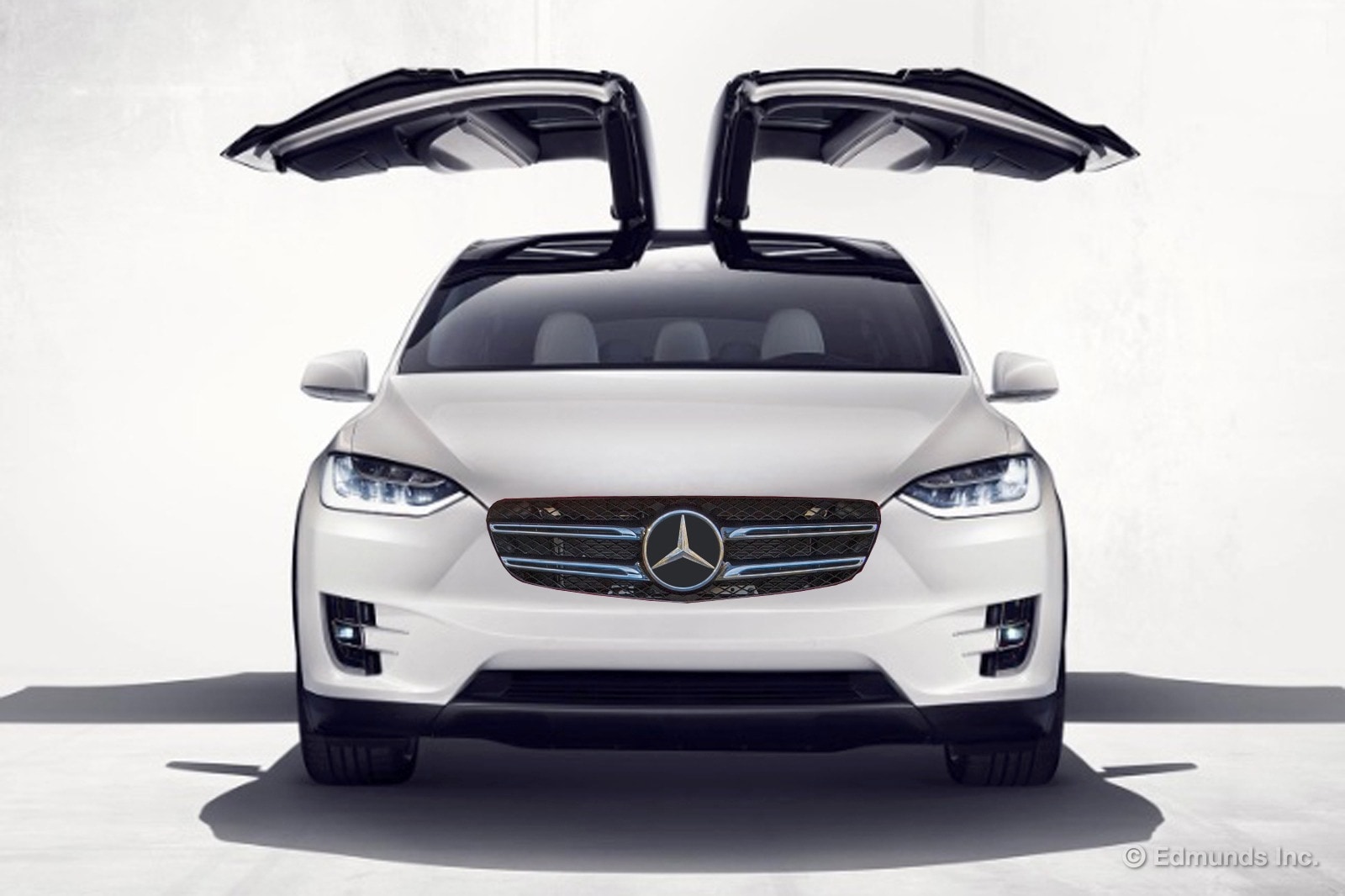
No, this isn't a post about the Falcon Wing doors evoking the Gullwing 300SL. As one of the Edmunds editors, I switch in and out of cars on an almost daily basis. By my reckoning, it's been about seven years since I've regularly driven one car. But we recently moved our offices, and in the time between spaces, I had the rare opportunity to live with our 2016 Tesla Model X for almost two straight weeks.
In my time with the Tesla, I developed some habits that took a few days to break. This can largely be attributed to Tesla's use of Mercedes-Benz hardware, most notably the gear selector. Drive, reverse and neutral are all selected via the right-hand stalk coming off the steering column. You push the button on the end for park.
I got used to it very quickly, so my next test car — the Jaguar F-Pace — proved to be somewhat vexing. I kept activating the windshield wiper when making three-point turns, or turning on the windshield washers when I parked.
Most Tesla owners probably have another vehicle or three in the garage, so in a very "first-world problem" kind of way, I'd suggest they fill out their fleets with Mercedes-Benzes. The similarity in gear selectors could prevent some potentially frustrating or embarrassing moments. Considering the wealthy demographic for both brands, I'd guess there's already plenty of overlap.
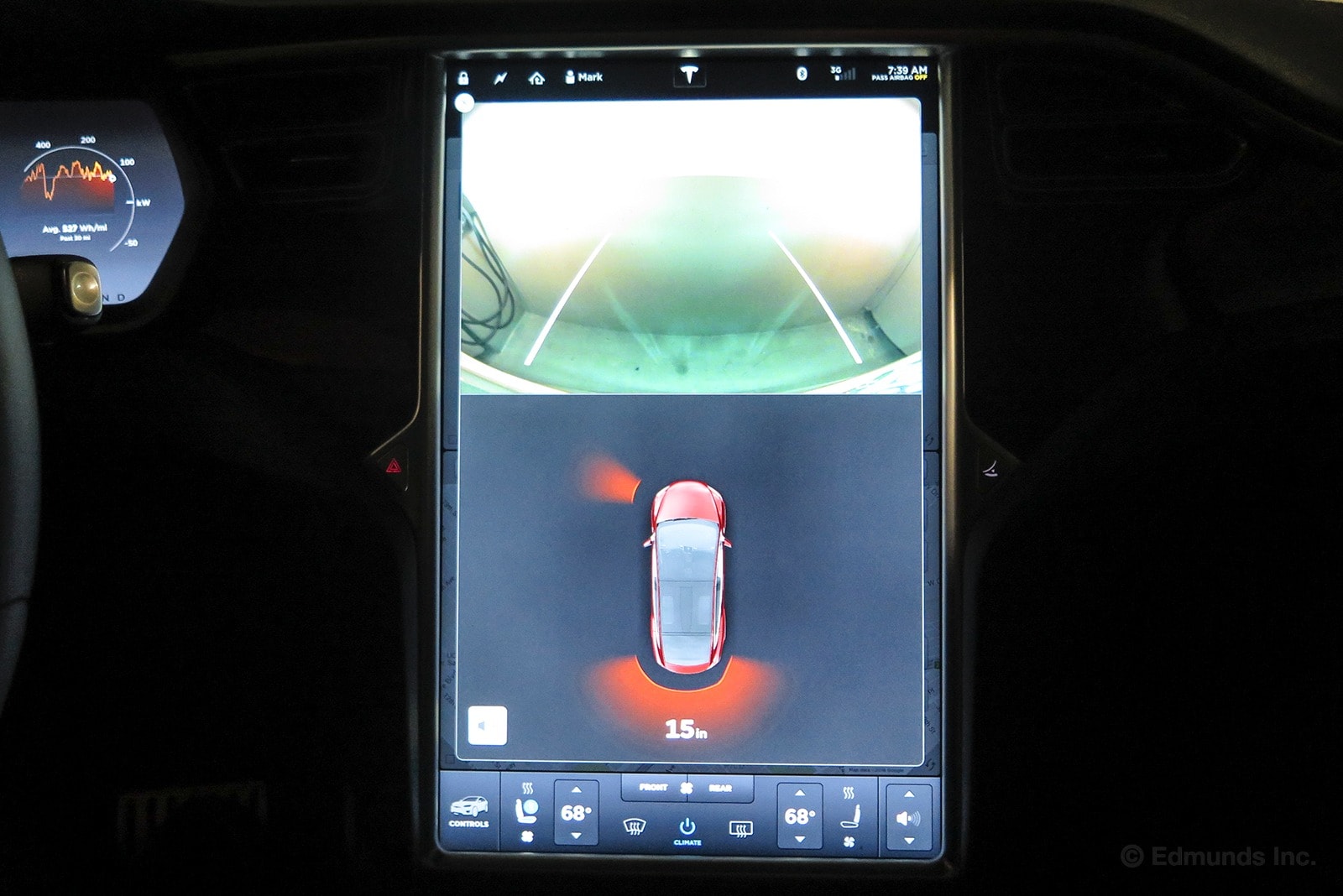
Our long-term 2016 Tesla Model X shares a lot of traits with the Model S, and one of them is the giant center screen that controls about 90% of the cabin activities. That screen is responsible for the rearview camera display, and since the screen is like two jumbo iPads stacked on top of each other, there's plenty of space to see what's going on behind you.
The screen is crisp and clean, and the camera can see just about everything. Even in a poorly lit parking garage (pictured above) or bright light, both camera and screen perform exceptionally well.
The Model X does lack the 360-degree (think bird's-eye view) camera that some competitors have, but the hyper-accurate parking sensors help alleviate this problem by allowing you to get within inches of a wall or parking pole.

I drove our long-term 2016 Tesla Model X home for the first time in quite a while. That's when I spotted a couple of gremlins.
The first one was observed when I went to close the driver-side rear door. I pressed the button on the B-pillar and walked away. The articulating door began its leisurely closing process. About two-thirds of the way closed, it stopped and sounded the beep-beep-beep as if it was being blocked. I walked back over. Nothing was in the door aperture other than fresh air and late-afternoon sunlight. There wasn't a tree branch or a hedge or really any object at all within fifteen feet of the door, parked as it was on the street. I pressed the button again and the door closed normally. Slippery little gremlin.
Later that evening, I hopped back into the Model X and began driving. At a stop light roughly a quarter-mile from where I departed, I activated the turn signal and then attempted to use the central touchscreen. None of the functions responded to my touch. I tried about eight different sites on the screen. Nada. Frozen.
After maybe ten seconds, the screen unleashed a mad flurry of activity, catching up with a least some of my previous inputs. I noticed that the turn signal's metronomic clicking sped up, too, once the flurry commenced. I canceled the turn signal and turned it back on. It was back to its regular click-clack frequency.
Hmmm.

With our last long-term Tesla, we went with a dark blue or as Tesla calls it, "Deep Metallic Blue." It was good-looking, no doubt, and certainly better than all the boring beige sedans on the road today, but it wasn't my favorite. With our long-term 2016 Tesla Model X we opted for a fantastically deep red. The red looks good at night and even better in sunlight. Tesla calls it, drumroll please... "Red Multi-Coat." OK, so the name isn't exactly a charmer, but boy, does the paint look good.
I've seen several Model X's in Los Angeles, in varying colors like black, white, black, gray and black. If we're being nitpicky, none of those are actually colors, they're more like shades. Tesla sells the Model X in two different shades of black, two different shades of white, a silver metallic (gray) and a color they call Titanium Metallic (also gray), but all these other shades pale in comparison to the Red Multi-Coat.
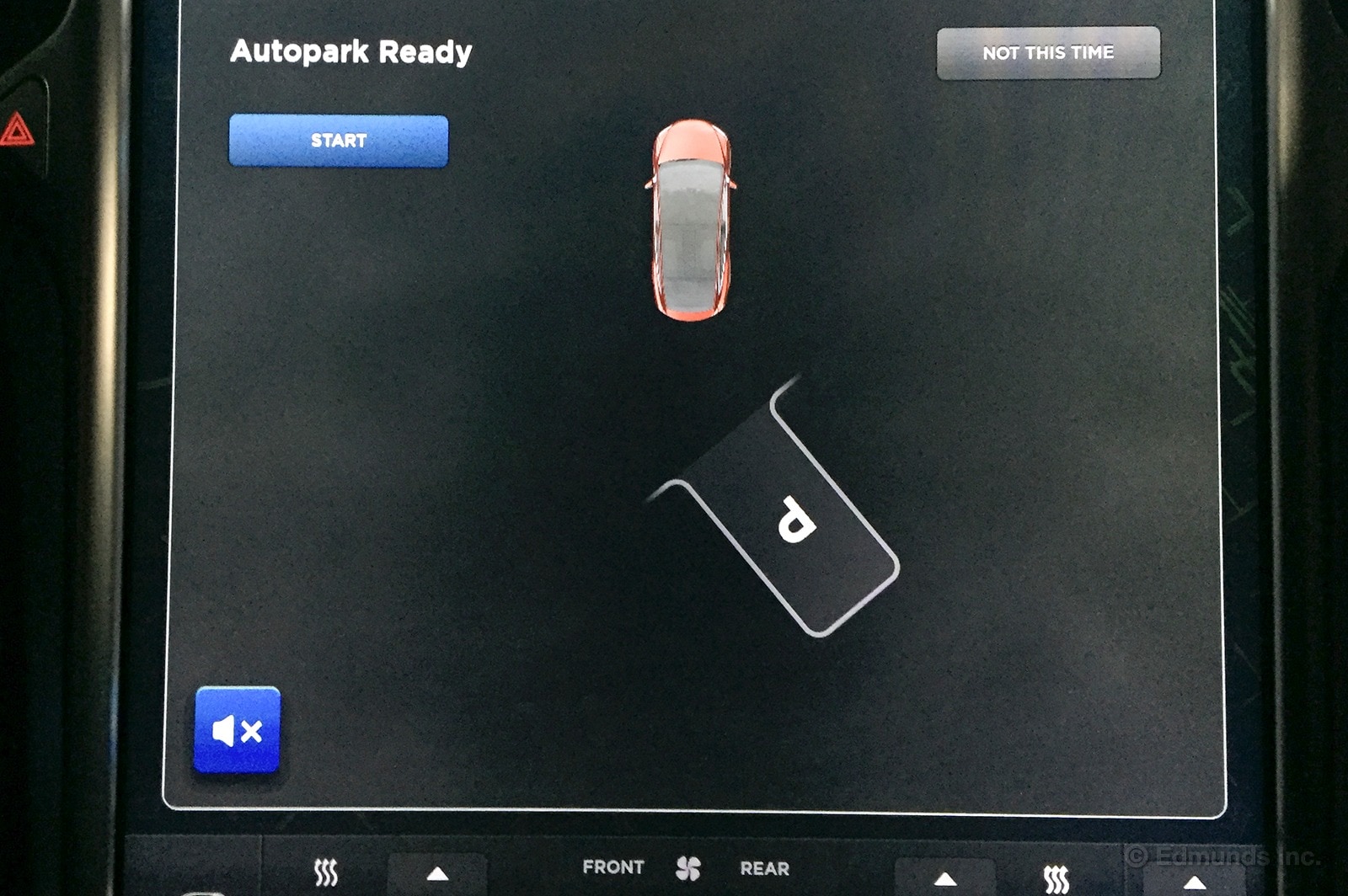
On my fourth day heading home in our long-term 2016 Tesla Model X, a new display popped up on the center screen that I had not seen before. 'Autopark Ready' the screen read. "How nice, it knows I'm home and it wants to park for me. Sure, why not?" I thought. So, I gave the Tesla the reins. It didn't go as well as I'd hope.
Supposedly, you let go of the wheel and the Tesla's cameras will guide you into a parking spot. I've even seen YouTube videos that make it look faultless. Put the car in reverse, then just let it do the rest of the work for you.
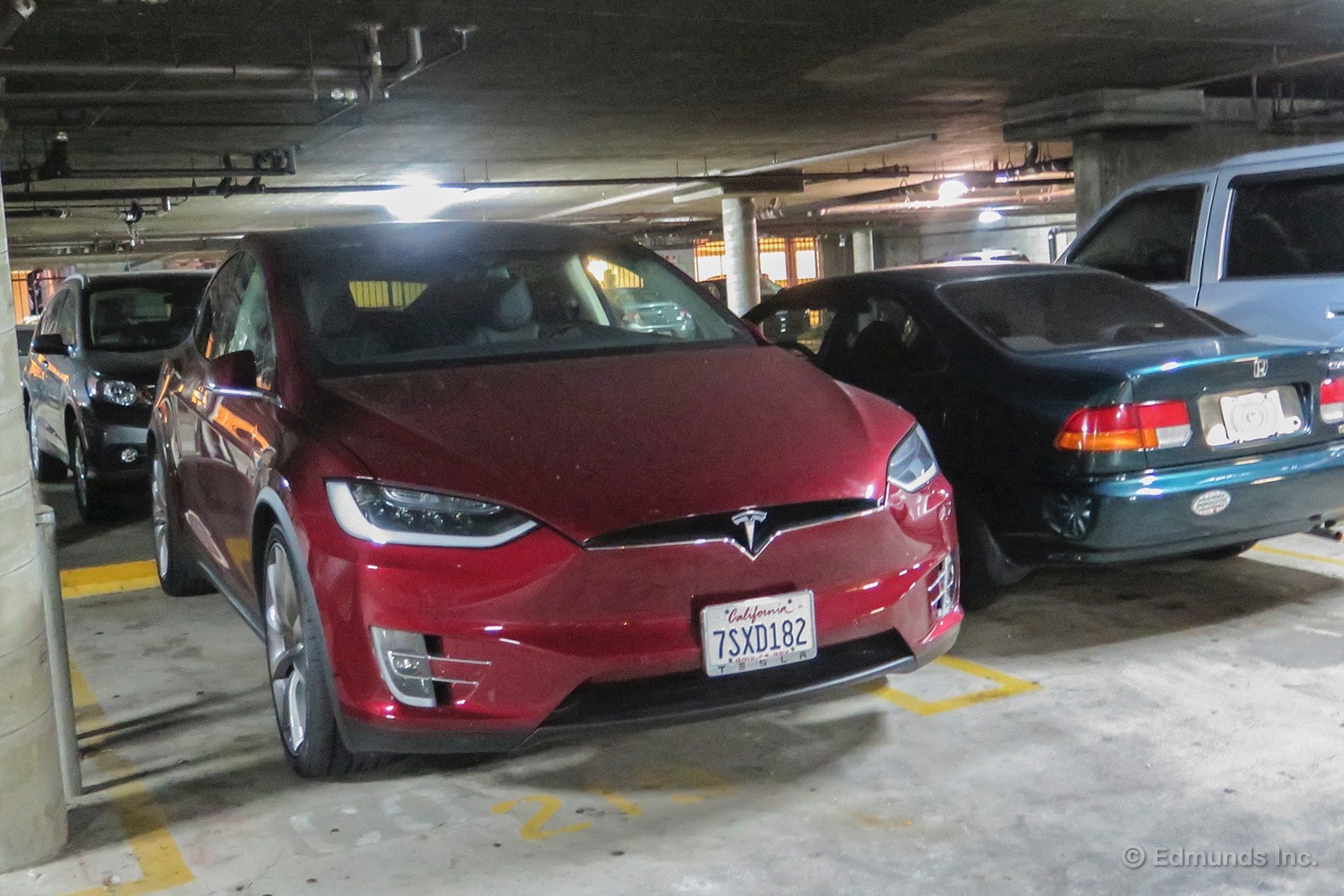
After three attempts at parking itself, this was the best position the Model X landed in. During those three botched attempts, the Tesla also continually bumped into the parking curb with its rear tires. And once I hit the brakes to stop the Model X from running over the parking curb, it stopped lending its assistance — apparently the car thought the job was done.
This, the best of multiple attempts, was too close to the car on the driver's side and too far from the parking pole on the right. It was over the line and angled poorly. It would've been pretty rude to leave the car like that and hinder my neighbor's entry into his car, so I jumped back into the Tesla and parked it myself.
I'll try this feature outdoors and in a better-lit parking lot next time, but for now, it's of no use to me at the place I park the most, my home.
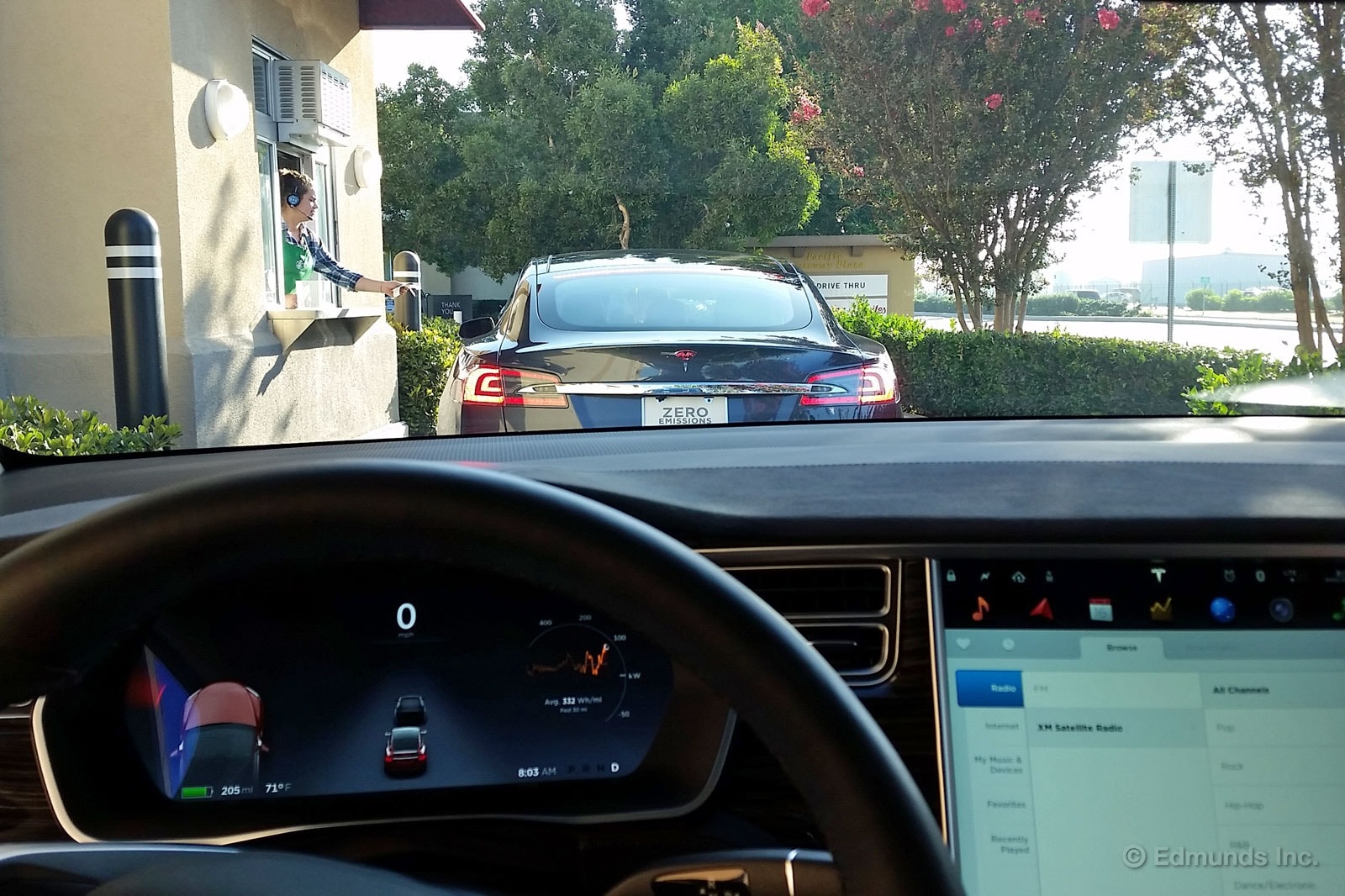
Looking out the window of our 2016 Tesla Model X and seeing another Tesla might seem like a rare occurrence. And in much of the country it would be. In Southern California, however, it's practically unavoidable.
Maybe it's the strong stock market that's fueling all these Tesla purchases, or maybe it's the allure of driving solo in the carpool lane. Any way you look at it, the sheer number of Teslas on the highways in and around Los Angeles is remarkable.
This should be a good sign for the still-small company. If you can convince people in California that your EV is cool, the rest of the country shouldn't be far behind. At least that's the usual thought process.

As I was leaving Edmunds HQ in our long-term 2016 Tesla Model X, I heard a strange noise coming from the steering column. It was sort of a murmur when I'd turn the wheel sharply. I took a video (see below; that's a screenshot above) so you can experience it for yourself. It's faint, so headphones may be in order.
It sounds a bit like Beaker from the Muppets if he were really depressed. Just a slow, muffled "meeeeep." Poor Beaker.
It doesn't seem to be affecting anything, so I'm assuming we'll just put it on our list of things to check out the next time the vehicle heads into the local Tesla shop.
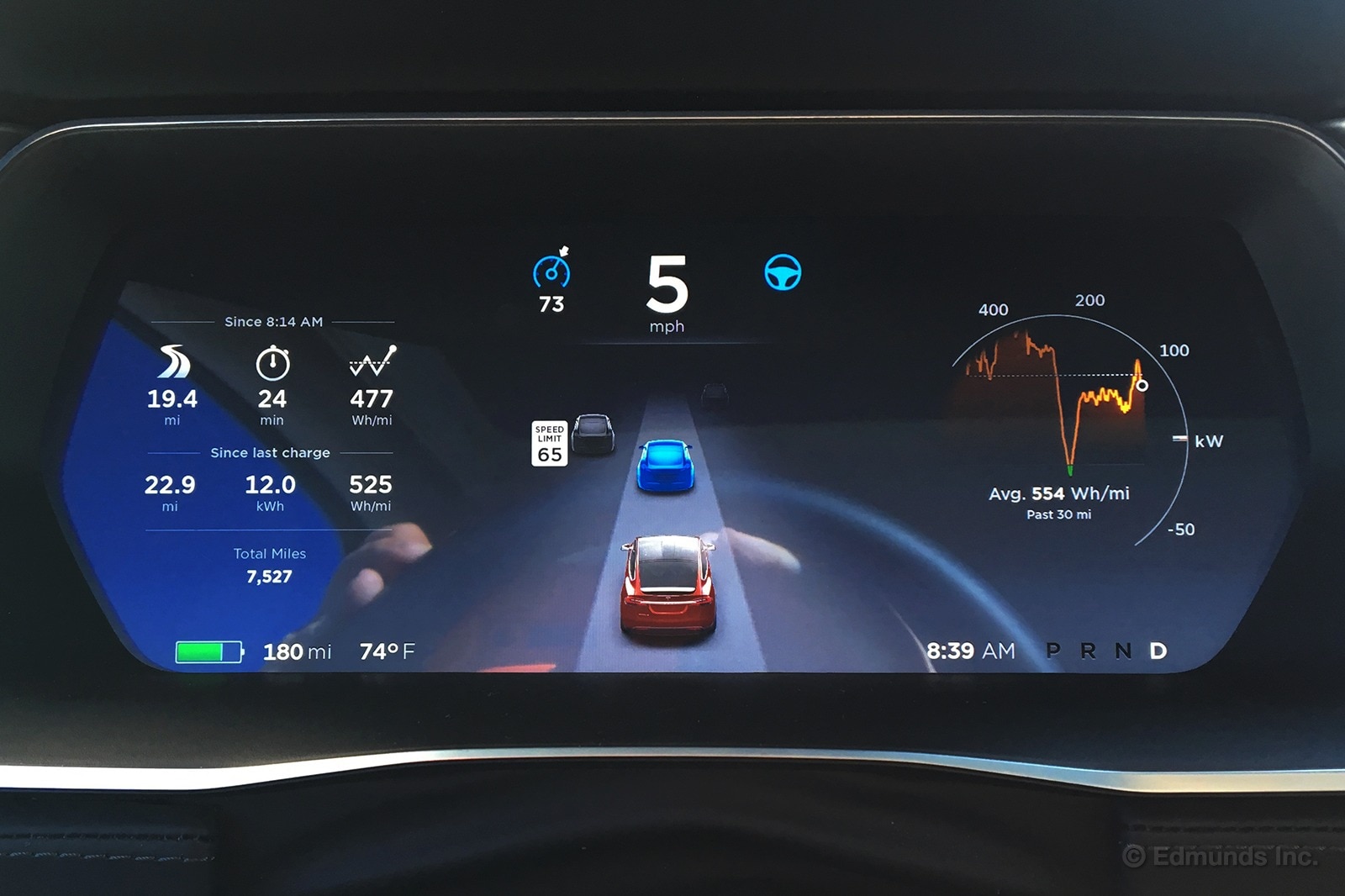
Our long-term 2016 Tesla Model X doesn't just detect when a vehicle is near, it also determines what kind of vehicle it is. Sometimes you'll see a motorcycle, a big truck or a standard car.
I got stuck in LA's notorious traffic and had an opportunity to see the system's real-time processing in action.
In the photo above, it shows that I'm following a regular car. In reality, I was following a car carrier loaded with Mitsubishis.

I'm guessing that the vehicle-identifying system relies partly on the forward-looking cameras, and in this instance it saw the Mitsubishi Mirage G4 more prominently. Insert your own joke here.
Once traffic came to a stop, which was often, and the Tesla crept up to the back of the carrier, the vehicle icon switched to a truck.
What does this mean? Probably nothing. I was bored in traffic, but these little touches make me like the Tesla more and more.
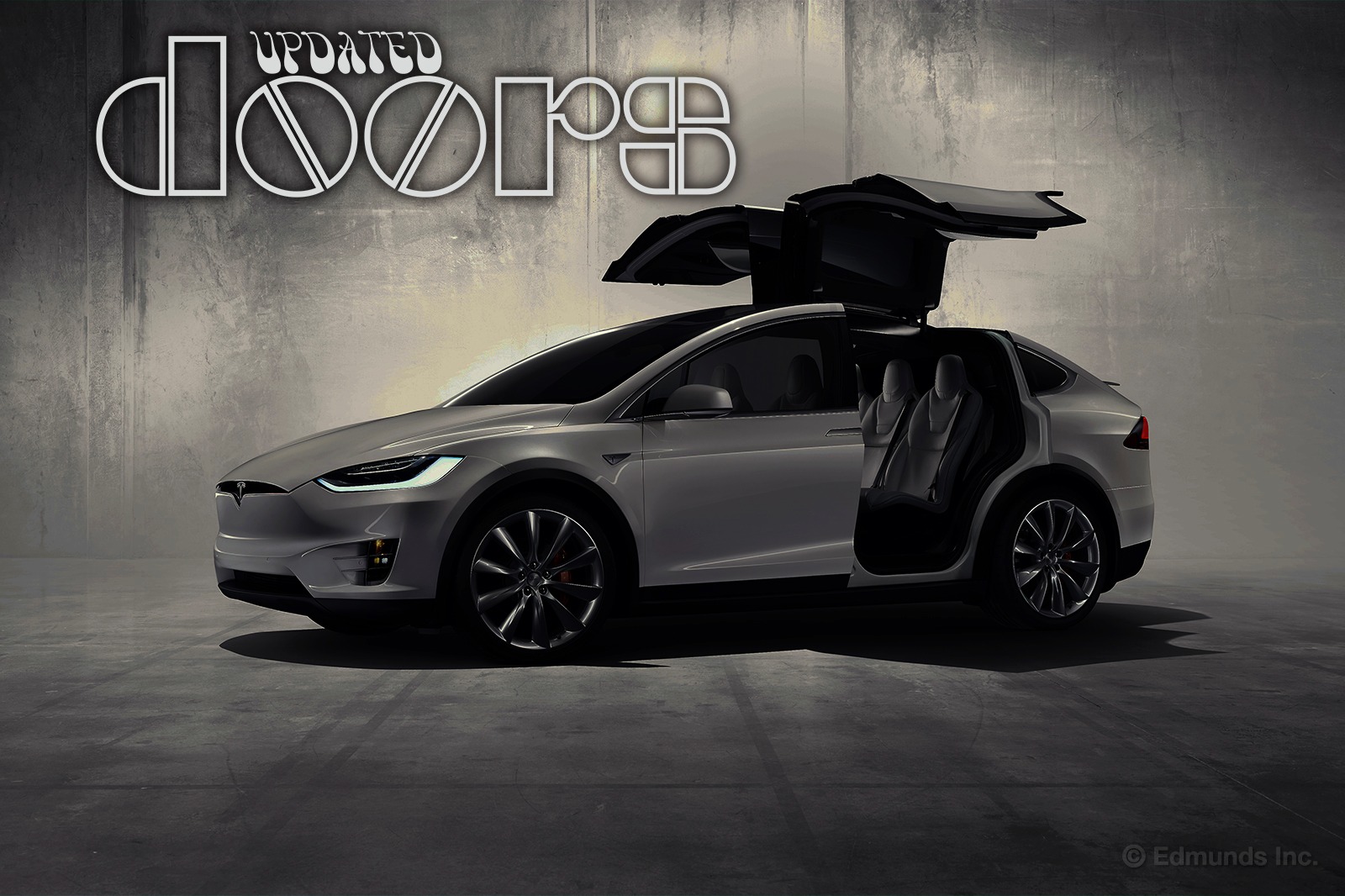
It had barely been a month since the previous firmware update for our long-term 2016 Tesla Model X when I received a notification to schedule the next one.
Somewhat confusingly, this update had the same name as the last one (v7.1), and it, too, had to do with the Falcon Wing doors.
After the update, the screen reported that the "Falcon Wing Door closing behavior has been improved" in that each door "will stop and open back up slightly if it encounters an obstacle while closing."
That's a good thing. Previously, I suppose, the door would just stop if it hit an obstacle, potentially trapping whatever it was. Ouch. Meanwhile, I'm still waiting for an update that fixes the headrests.
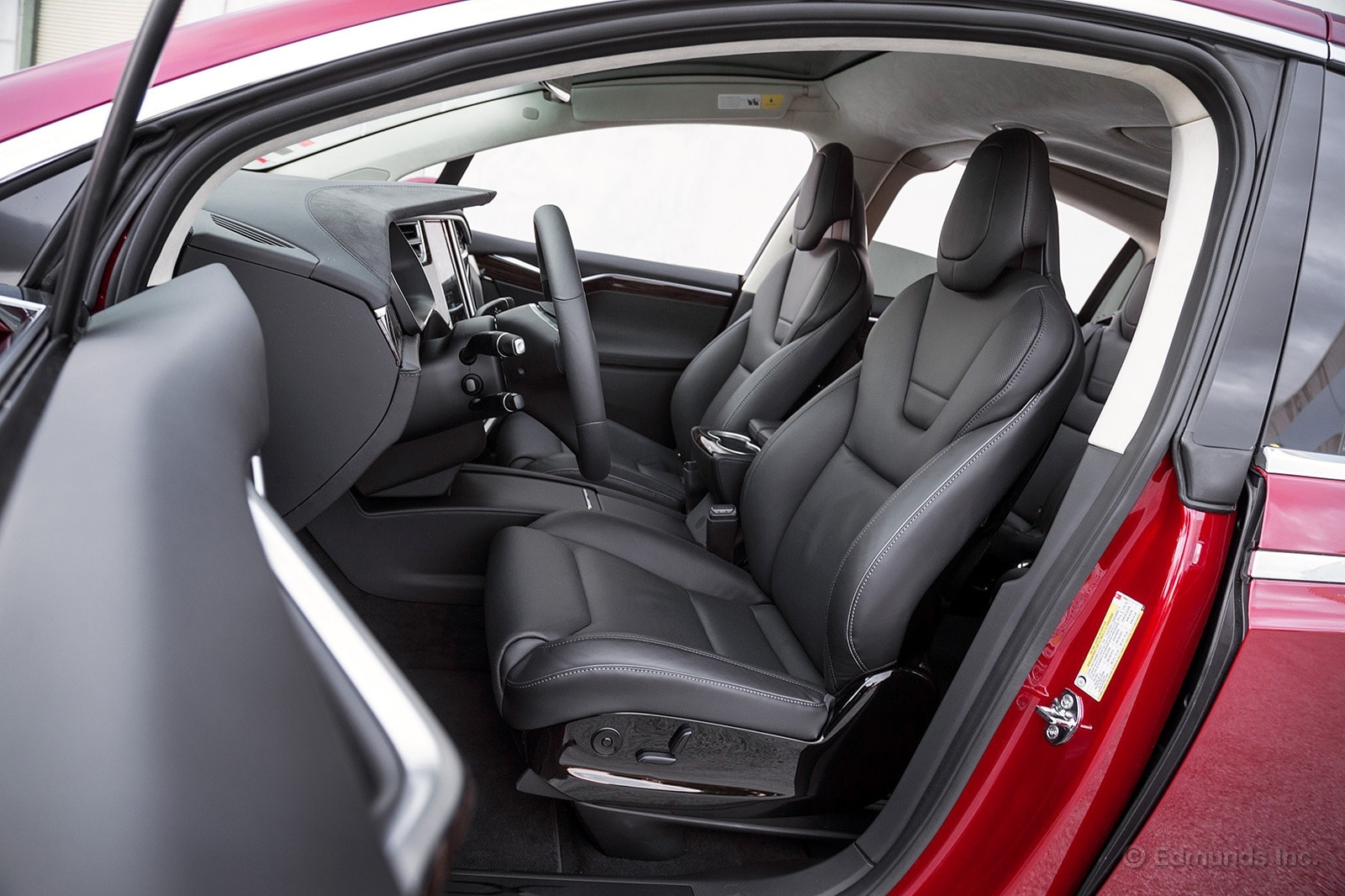
The Falcon Wing doors on our 2016 Tesla Model X draw crowds wherever you go. I mean, how many SUVs can pull up next to an SLS AMG and open their doors the same way? Crickets.
As enticing as those doors are, however, I think the drawbacks overshadow the cool factor. As Jay explained, the list is long.
And because of all the attention the Falcon Doors attract, the nicely executed front doors get overlooked.
They open like normal doors, which might seem boring, but notice how I said "they" open. Buy a Tesla Model X and you can forget about opening and closing the door yourself. Just keep the key in your pocket, walk up to one of the doors and it pops. If you approach from the front, the door will wait for you to pass and then open, while approaching from the rear will give you a smooth, welcoming opening as you draw close.
And that's not all. Get in and press the brake, which starts the car, and the door closes for you. You actually don't ever have to touch the driver door. Some may say the rear doors are over-engineered and silly, and they may be right, but Tesla got it right with the front doors.

Cross-country travel in a car like our 2016 Tesla Model X is possible and practical because of the Supercharger network. And today's network is even stronger than it was two years ago, when we drove our 2013 Model S to New York and back in less than a week. As of today, the fansite supercharge.info says there are 296 active Supercharger stations spread across the USA, with 15 more under construction and 13 others that have received permits.
But Tesla's free charging network has another component. It's called Destination Charging, and it's not as well-known.
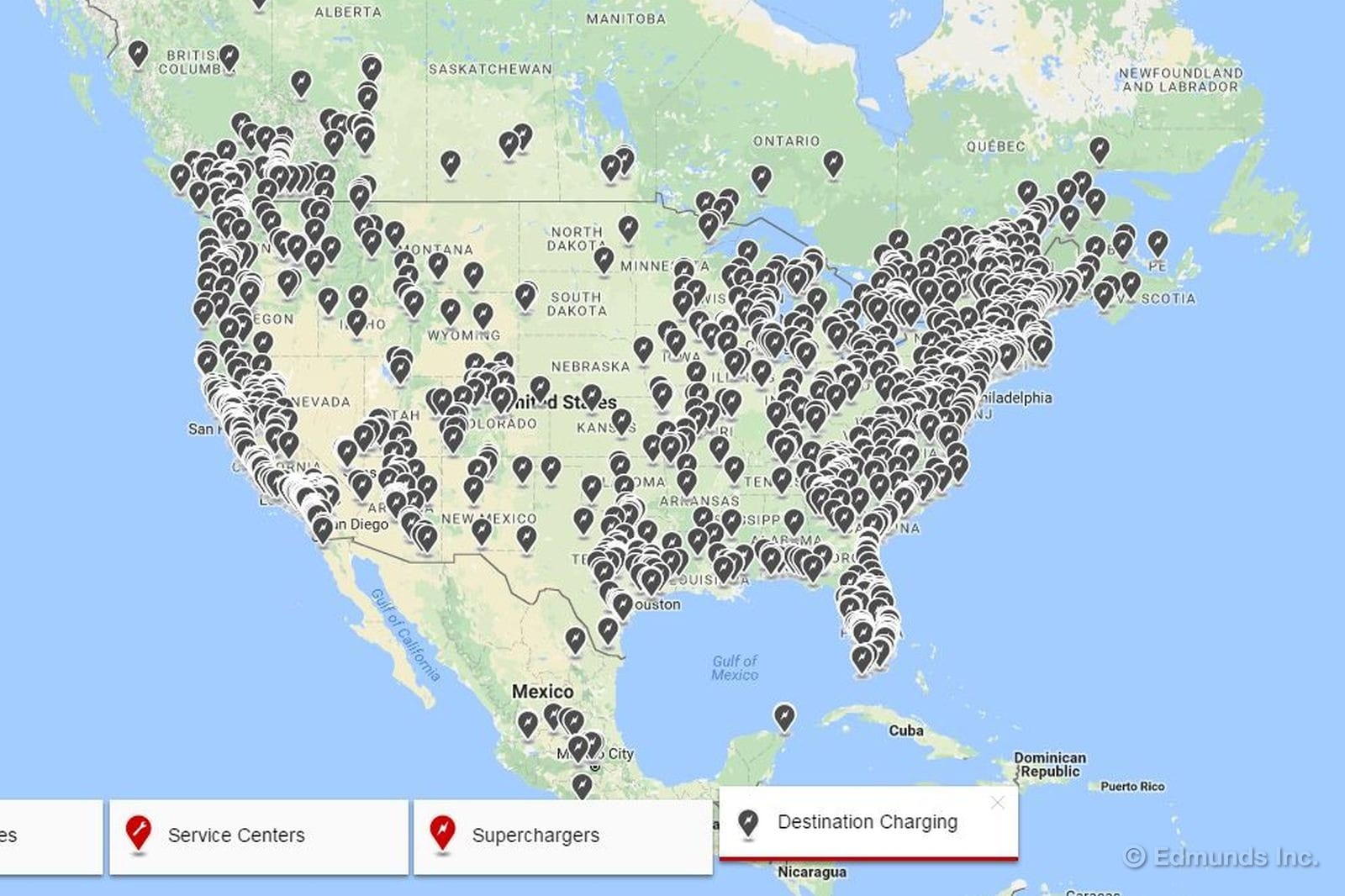
Destination Charging spots use the same High Power Wall Connector (HPWC) hardware we installed in our long-term garage, which means they're nowhere near as fast as a Supercharger. Destination chargers are essentially Level 2 power supplies, but with Tesla's proprietary socket design that is not compatible with other EVs. Depending on the power situation at the specific location — between 208 and 240 volts at 40 to 50 amps — they typically add range at something like 25 to 30 miles per hour.
And so refilling an empty Tesla battery at one of these is the work of hours, not minutes. The things they have in common with Superchargers are these: the locations are programmed into the on-board navigation database, and when you get to one you simply park, plug in and pay nothing.
You're most likely to see one in an upscale restaurant district or shopping center. Others are strategically located to facilitate side-trips off the Supercharger network to touristy locales. You know, destinations — places where longer charge times are no big deal.
I don't know the precise details of the arrangement, but Tesla will help set up a Destination Charging station and pin the location to the onboard network map if the proprietor can spare a couple of parking places.
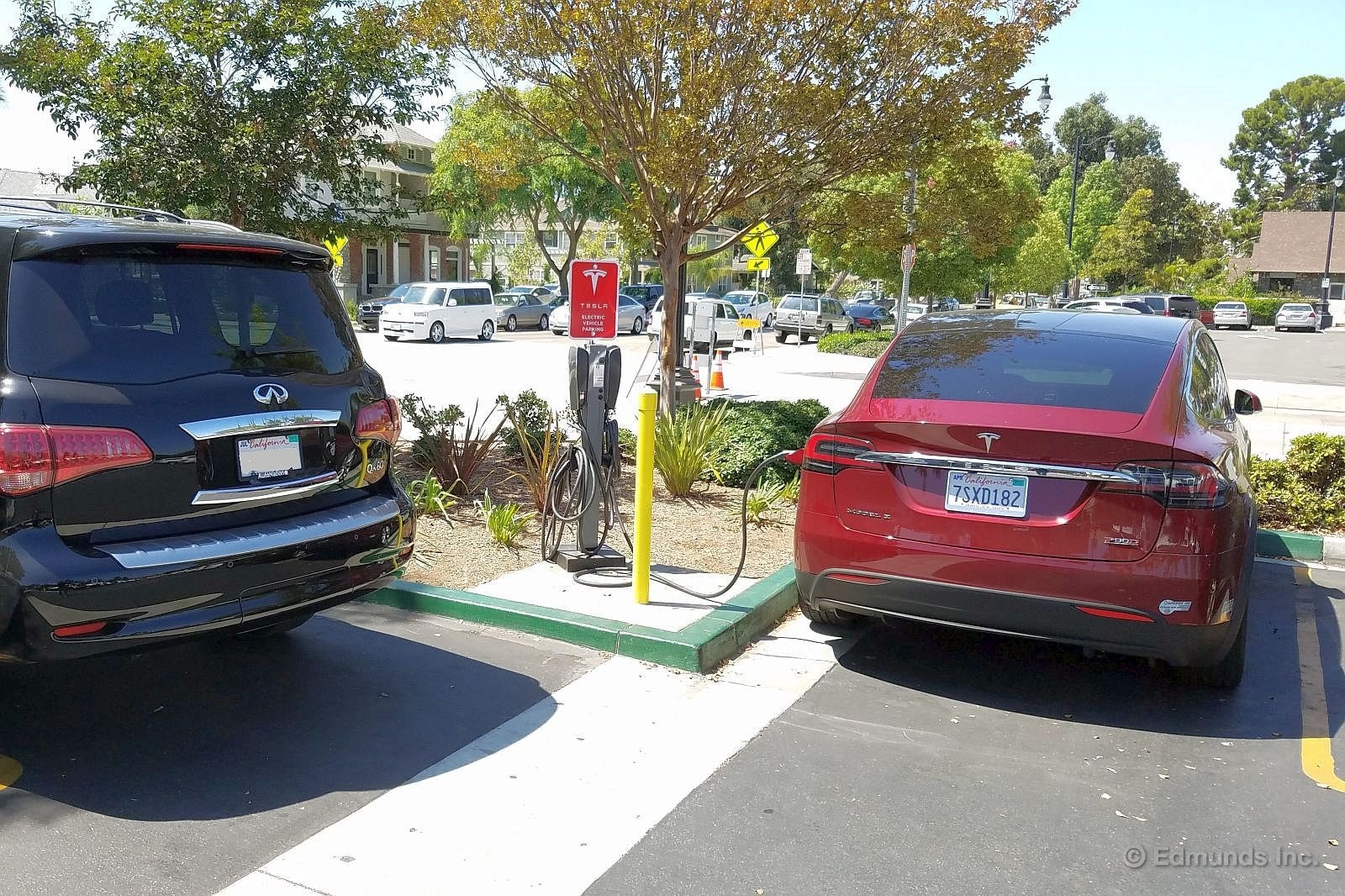
One of them recently showed up behind the hair place I use. It's in a historic downtown area, and several hip restaurants share the same parking lot. Thing is, this place is in high demand during business hours and into the evening, and nearly every time I cruise by I see non-electric cars in at least one of the two spaces. It's hard to blame them. More often than not I'm the Muggle in the gas-eater prowling that lot looking for a spot.
Last week I was driving the X on the way to an eye appointment a short block away. One of the spots happened to be open, so I pounced. I was gone a little over an hour and a half, and in that time the charger lifted the battery from 186 to 224 miles, which counts as full because our P90D Model X was set to Normal range mode.
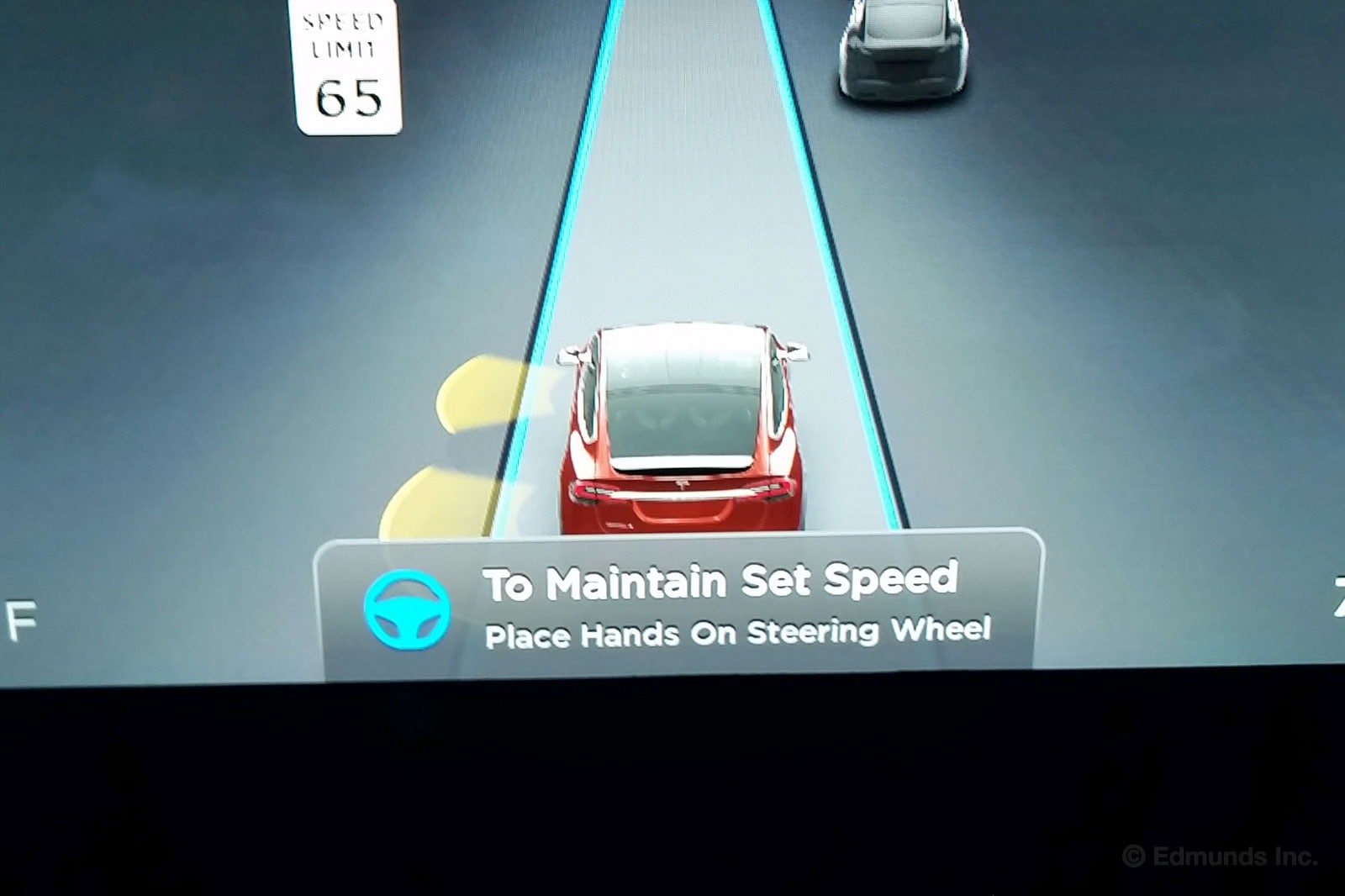
You might have heard that Tesla has updated the Autopilot feature offered on vehicles like our 2016 Tesla Model X. The company cited various reasons why the updates were made, but one major factor was that too many owners were putting too much trust in the system.
Now it works a little differently.
Before the updates, the Autopilot system would give you a warning to put your hands on the wheel every once in awhile, but that's about it. If you didn't comply, nothing happened. Now the system gives you a warning, and then another warning and finally a "put your hands on the wheel or this thing is shutting down" warning.
Sure enough, no steering input equals no Autopilot. In fact, it doesn't simply turn off, it actively starts to reduce the vehicle's speed. Clearly, the people at Tesla have seen enough videos of owners completely handing over the reins.
There are other upgrades as well, although I didn't notice any of those since they're basically aimed at improving the system's overall accuracy. When you're only bumping along at 10-15 mph on the freeway, it doesn't push the limits very often.
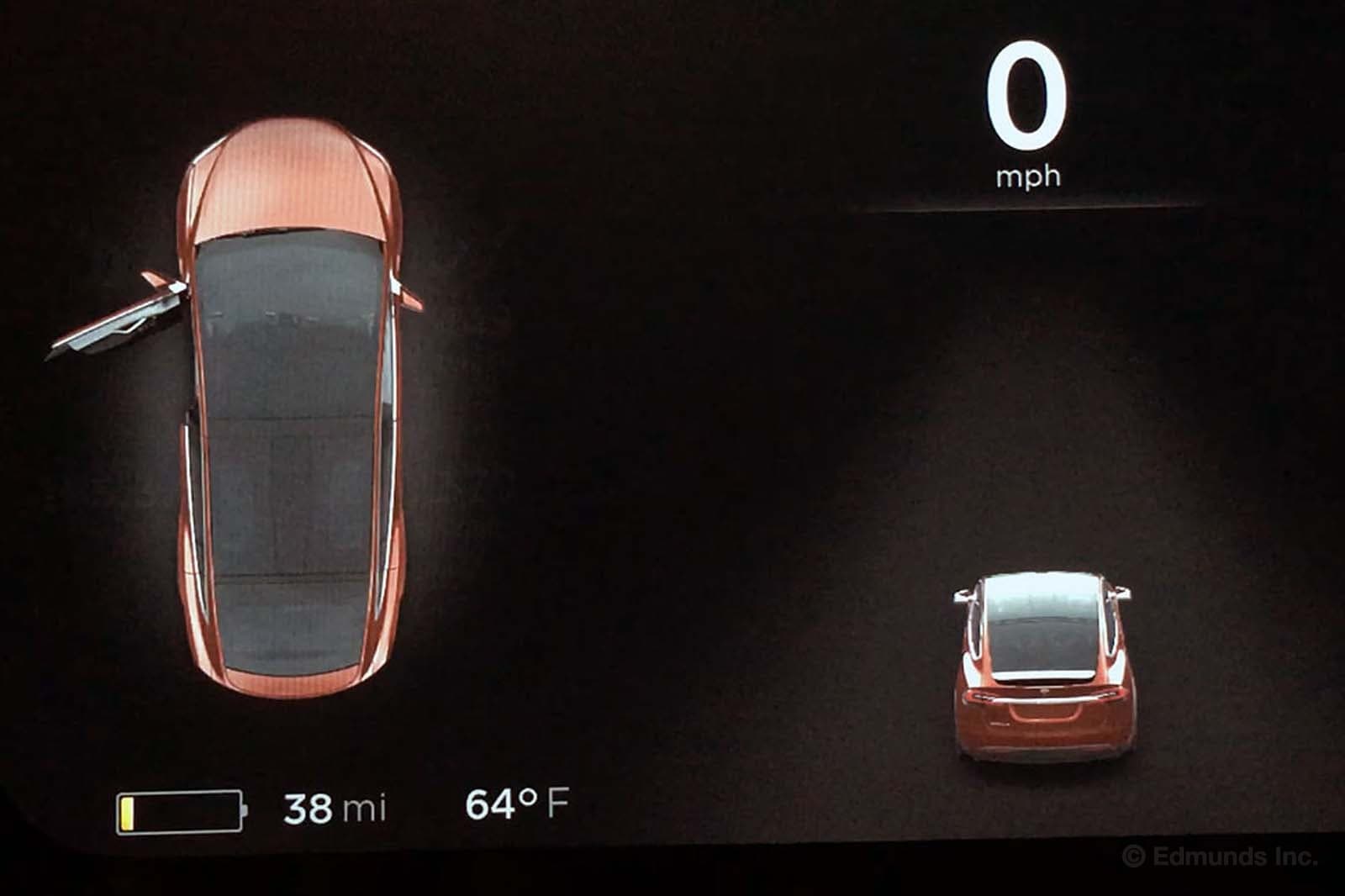
"Hey Mike. The driver window in our Tesla makes a funny noise. It doesn't happen all the time, but it happens a lot." That was the only information at my disposal when I drove our 2016 Tesla Model X home to try and diagnose the issue, or at least repeat it.
This is a weird one.
The glitch is real, and it comes in waves. It might be fine for 30 minutes, but then the window suddenly cracks open and then closes. At the same time, the open-door graphic flashes on the instrument panel and then disappears. On my morning commute, this cycle continued every three to four minutes for a time before disappearing completely for another 30 minutes or more.
Our best theory is that the car randomly thinks the door is open and cracks the window in response, because that's what the frameless windows do automatically when you open the door. Then it realizes the door is closed.
I caught it on video in the parking lot. It took several minutes of recording nothing before the magic moment. That noise you hear is the driver window lowering and raising. We will add this to our growing service to-do list.
Hydrogen Highway vs. Tesla Supercharger Network
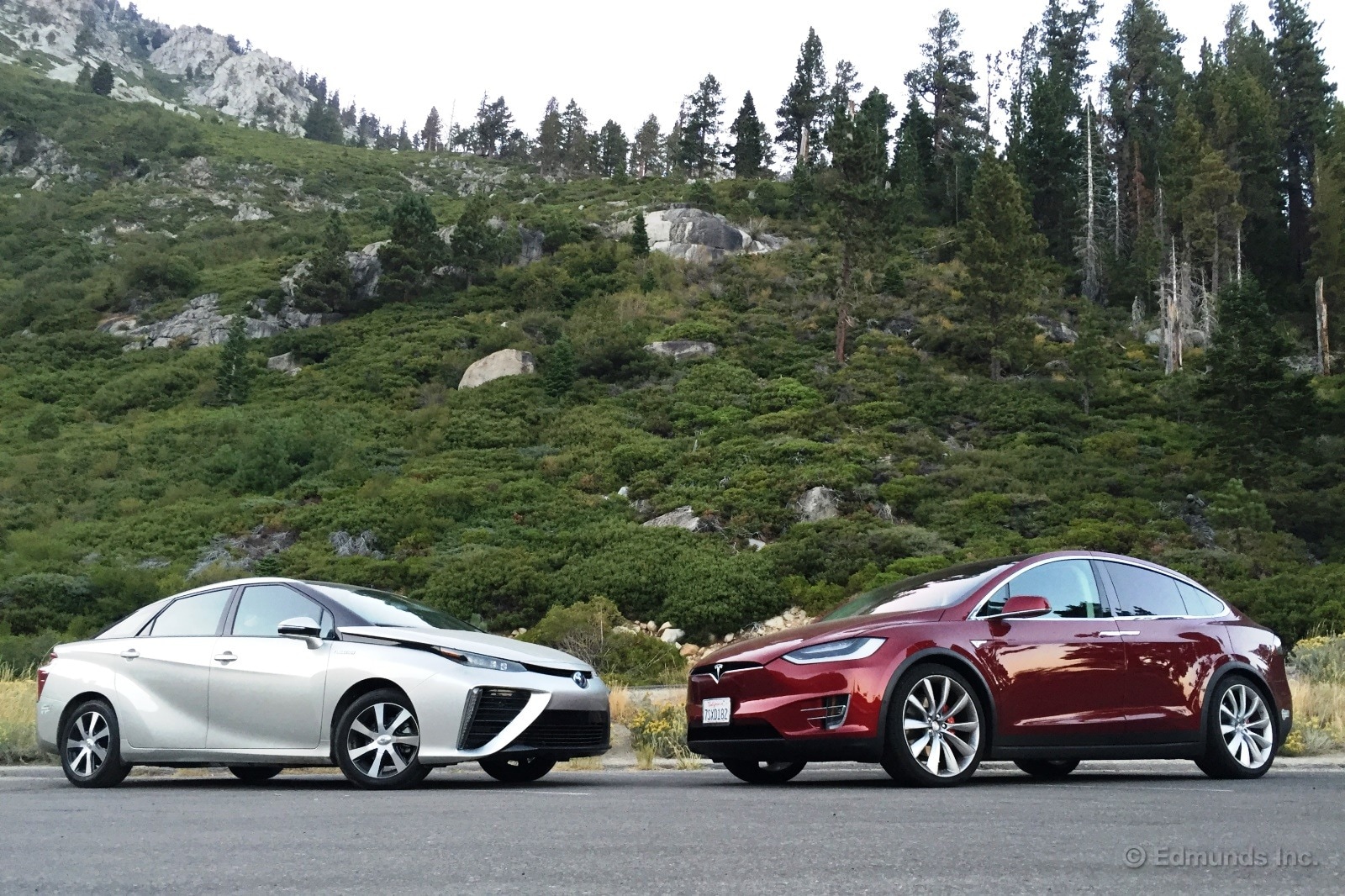
While the hydrogen refueling infrastructure for our long-term 2016 Toyota Mirai is currently in its infancy, it's strikingly similar to Tesla's Supercharger network of a few years ago. At least it is in the central California corridor.
This got Dan Edmunds and me thinking.
What if we took the same road trip in both our Mirai and our long-term 2016 Tesla Model X? Two totally different approaches to alt-energy motoring on one trip from Los Angeles to Lake Tahoe and back. Compare notes, watch clocks, that kind of thing.
So that's what we're doing: a 1000-mile (-ish) round trip, pitting electrons from afar against electrons from a gas. Dan's in the Mirai on the trip north and I'm in the Model X. Once we reach our Lake Tahoe turnaround point, we'll decide our next steps.
For sure, the Model X enjoys an ever-expanding Supercharger network, but it requires many stops, each of which might be lengthy. Our long-term 2016 Toyota Mirai has very few hydrogen filling stations at its disposal, but it can be refilled to max range in roughly the same time it takes to refill a gasoline car. That's one facet we want to explore.
Math, Befuddled Software and Chasing A Mirai to Lake Tahoe
I'm on my way north from Santa Monica in our long-term 2016 Tesla Model X, "chasing" (har har) Dan Edmunds in the Mirai. We're headed to Lake Tahoe. Same route. No combustion.
Things have changed. When I last road-tripped a Tesla, it was our old Model S a couple of years ago. At the time, not only was the Supercharger network less developed than it is now, but the on-board software wasn't as capable.
Back then, the onus was entirely on the driver (or passenger, if you are so equipped) to do the math of when to stop to charge, and for how long. If you're trying to minimize your downtime on a long trip, you end up constantly assessing your current rate of consumption and adjusting your driving style as needed so that you arrive at each Supercharger with as little juice in the tank as possible. This minimizes your time spent recharging.
But there's an element of stress at play. If you're playing this game right, you're rolling into each Supercharger with as close to zero miles remaining in the tank as your confidence allows. If you forget to, say, carry the two, you could end up stranded on the side of the road.
Today, it's easier. Or is it?
These days, if you program a destination into a Tesla's nav system, the car automatically does the thinking for you. It figures out all of your stops in advance. It plots your route among the relevant Superchargers and tells you how long to charge. It calculates how long it will take to charge given your current and estimated state of charge and attempts to minimize your time at each charger.
Crucially, it also knows how severe the terrain is en route to your next charging opportunity. For example, if there's mega-tall hill looming on the next leg, it'll make sure you stay at the charger longer to take on the extra juice you'll need to ascend it.
This all sounds brilliant, except I quickly find I can't trust the system. To wit, it wants me to make my first stop at the Buttonwillow Supercharger, even though I have enough range to skip Buttonwillow (125 miles from my origin) and still easily make it to the next Supercharger at Harris Ranch (another 75 miles). But I stop at Buttonwillow anyway, putting my trust in the system for the sake of science.
Ten minutes of charging at Buttonwillow is all it wants. Hmm. I continue on my way north on Interstate 5.
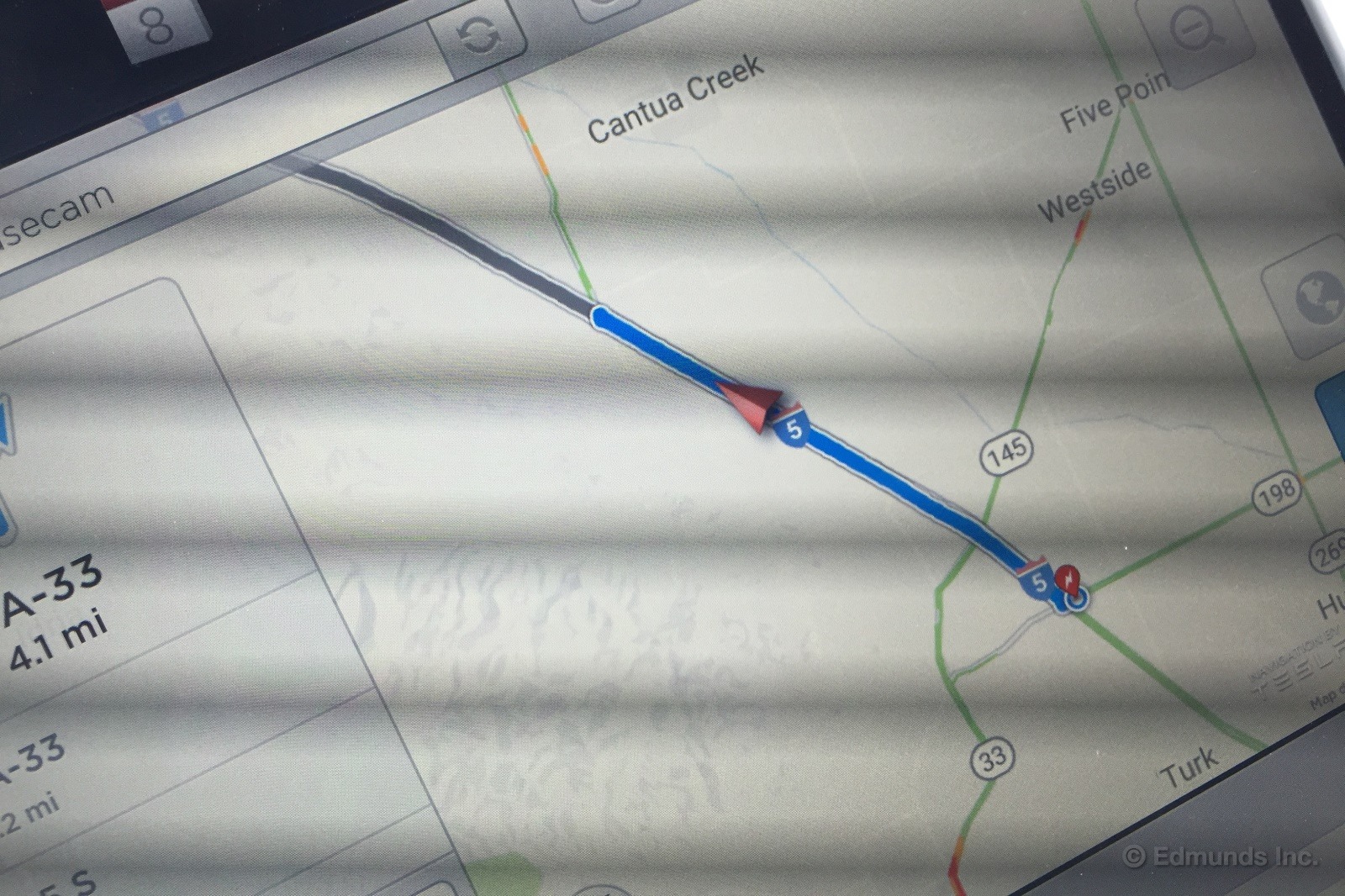
Within a mile, the nav system starts imploring me to turn around and recharge again at the Buttonwillow Supercharger. Yes, the one I just left minutes ago. Nuts. I stay the course on the assumption that it will figure out it's talking nonsense.
Eventually, it does figure out it's talking nonsense and instead plots a course to the Harris Ranch Supercharger. I recharge at Harris Ranch for thirty minutes and when I get back on the freeway, the nav system returns to nonsense mode, insisting I reverse direction and re-recharge at Harris Ranch.
For miles and miles it continues to insist I return to Harris Ranch, despite having plenty of range to reach my next Supercharger stop 133 miles away in Manteca. Finally, 68 miles out of Harris Ranch, it snaps out of its dumb insistence on going backwards and remaps the route.
Then it gets weirder. Instead of going to Manteca, it maps a route west through the Gilroy and San Jose Superchargers before heading east again. This would add 80 miles!
Yeah. I give up on the nav's instructions at that point.
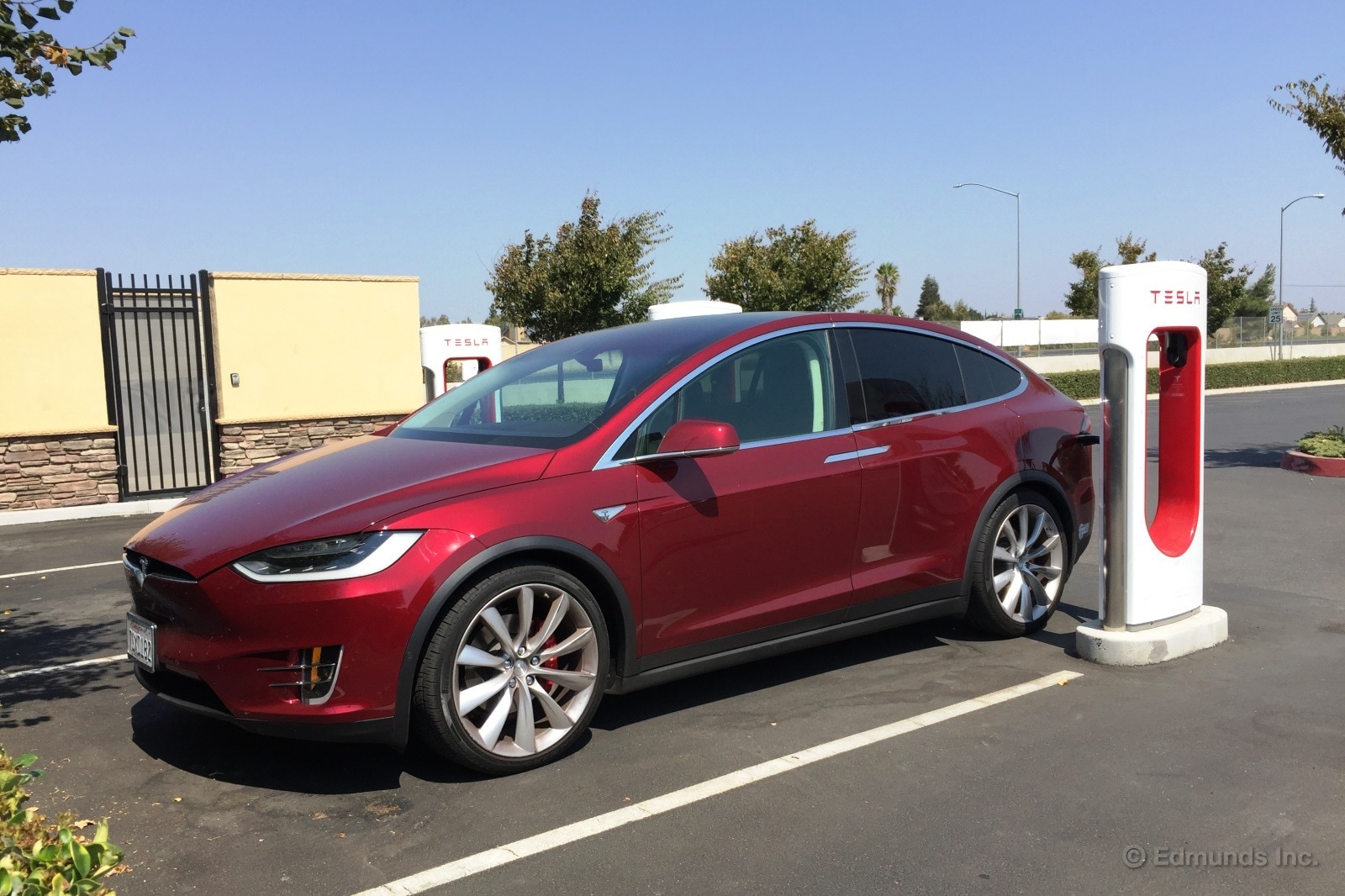
As for other road-trip observations, the Tesla's abundant power is nice on paper, but it's largely irrelevant on a trip like this. When you're trying to make time in a Tesla, going fast can actually be slower than going slower due to the additional time needed at the charger. You don't really have the luxury of going your desired speed, whatever it is. But, man, it sure is nice to have the reserve power in an emergency situation.
Let's talk Autopilot. It's a mixed bag. On these roads it tends to drop out with some regularity where the lane markings fade. It doesn't always respond to a lane change request, either, and tends to "carom" within the lane when traveling straight, constantly searching for the edges like an underdamped system. Autopilot is a neat parlor trick and allows for some variety (which can be refreshing on a long trip), but autonomous driving it ain't.
Needless to say, my "extra" stop at Buttonwillow was superfluous and cost me ten minutes of charging, plus the associated transit and parking time. It's pretty clear that Dan's going to sail to victory on this voyage anyway, based simply on the basics of range and refueling time for each car. But I want to minimize his margin of victory, and the Buttonwillow stop really sticks in my craw. Whinge, whinge.
At one point later in the trip, Dan texts me his location. He's in Silver Fork. Fifteen minutes later, I'm in Folsom. My hope for a gracious loss goes down the toilet when I look up Silver Fork on a map. It's 55 miles away. I still need to Supercharge in Folsom.
I pick up my pace for the last leg between Folsom and our destination (Basecamp Hotel in South Lake Tahoe), just to feel like I did something to minimize the drubbing. Besides, I don't need to conserve juice anymore. I can plug in at the hotel and the car will have full (or nearly full) range in the morning. Try doing that with hydrogen.
When I pull into the hotel parking lot and ask Dan how long he's been there, the answer makes me wince: "Ninety minutes."
Oof.
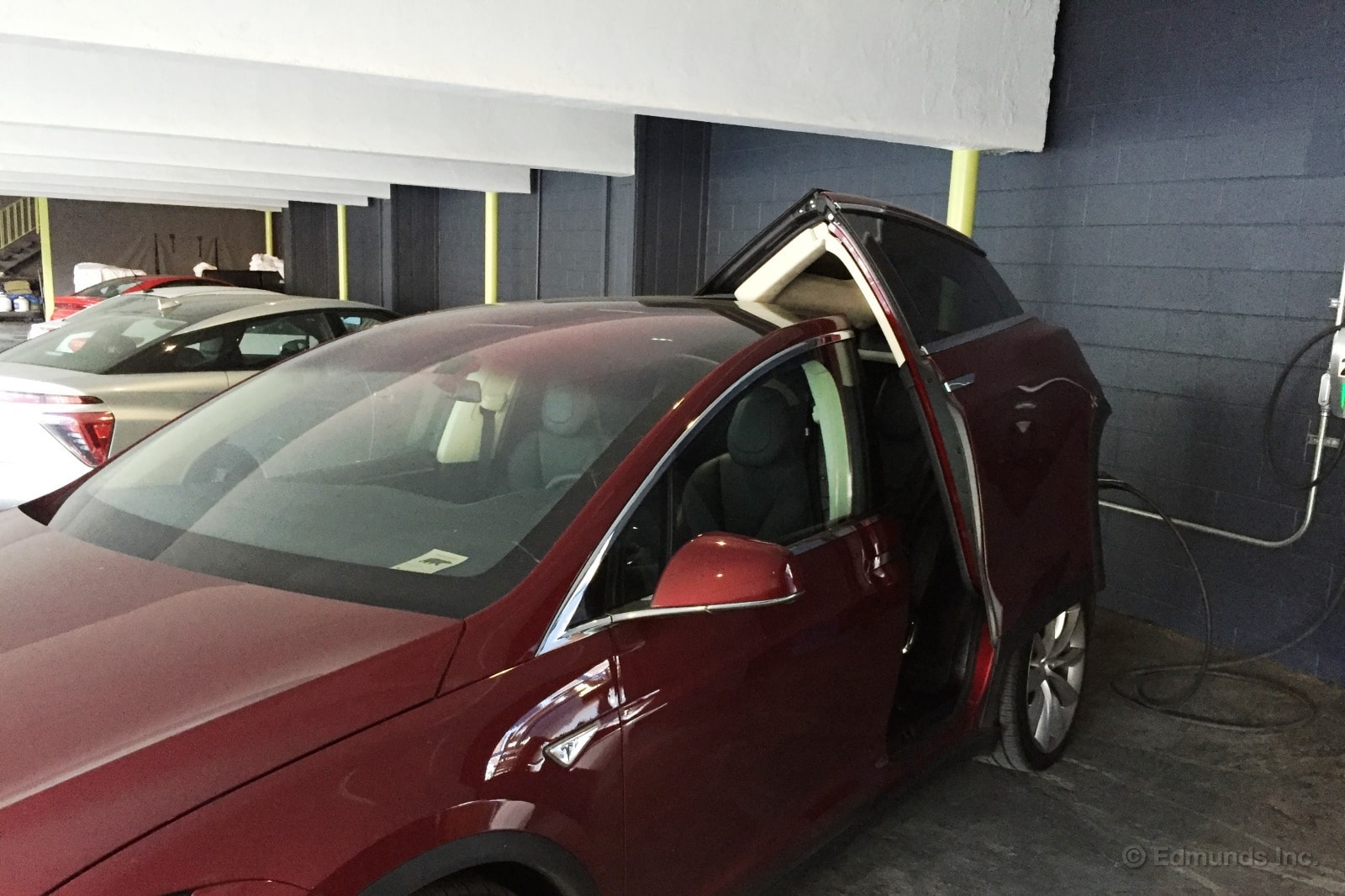
As if to rub salt in the wound, I went to retrieve my bag from the backseat area and was reminded of the Model X's worst "feature."
Supercharger Shortcut on the Return Leg From Lake Tahoe
I step around the power cord that juts from the rear flank of our 2016 Tesla Model X, pop open the hatch and arrange my bags in the luggage well. After unplugging our Lake Tahoe hotel's complimentary Destination charger, I click a ballpoint and note the battery's full status and new range — 248 miles — in the Tesla's logbook. Jay stands nearby tossing his gear into the trunk of his Toyota Mirai, which I know has less than half a tank of hydrogen because I parked it last night.
We exit the hotel lot together and line up at a red light, waiting to turn left. The border runs down the middle of the street we're on. I briefly consider opening my door and stamping my foot across the dashed center line so part of me can be in Nevada, but then the left arrow turns green and I drive my entire self into the state instead.
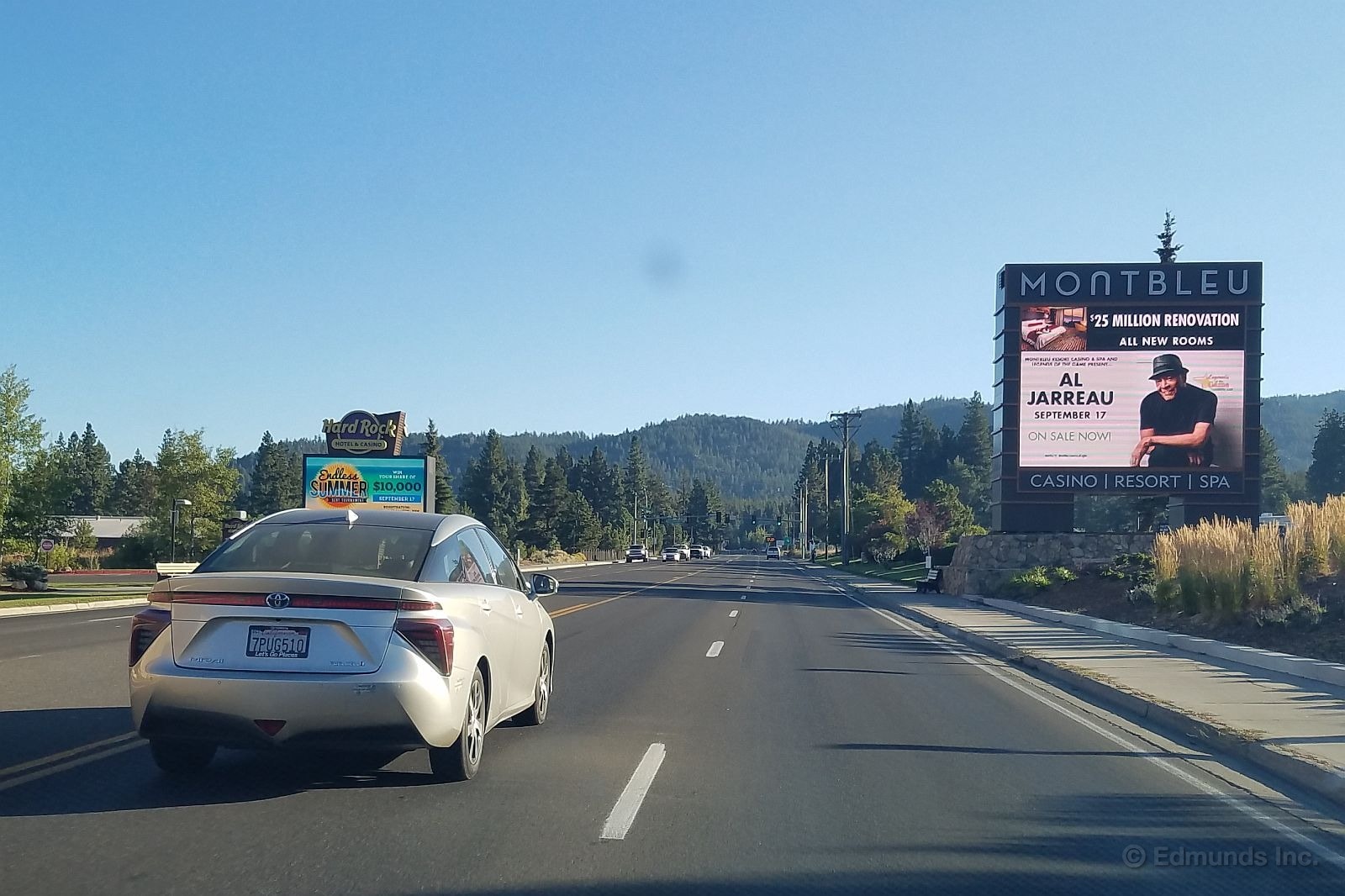
The landscape changes instantly. Our hotel in South Lake Tahoe, California had been typical of its neighbors — low, sprawling, no more than two or three stories. But now we're on the main drag of Stateline, Nevada, flanked by tall glass casino hotels. A large marquee announces that Al Jarreau is coming to town. Isn't he the guy that sings like a guitar? No, that's George Benson.
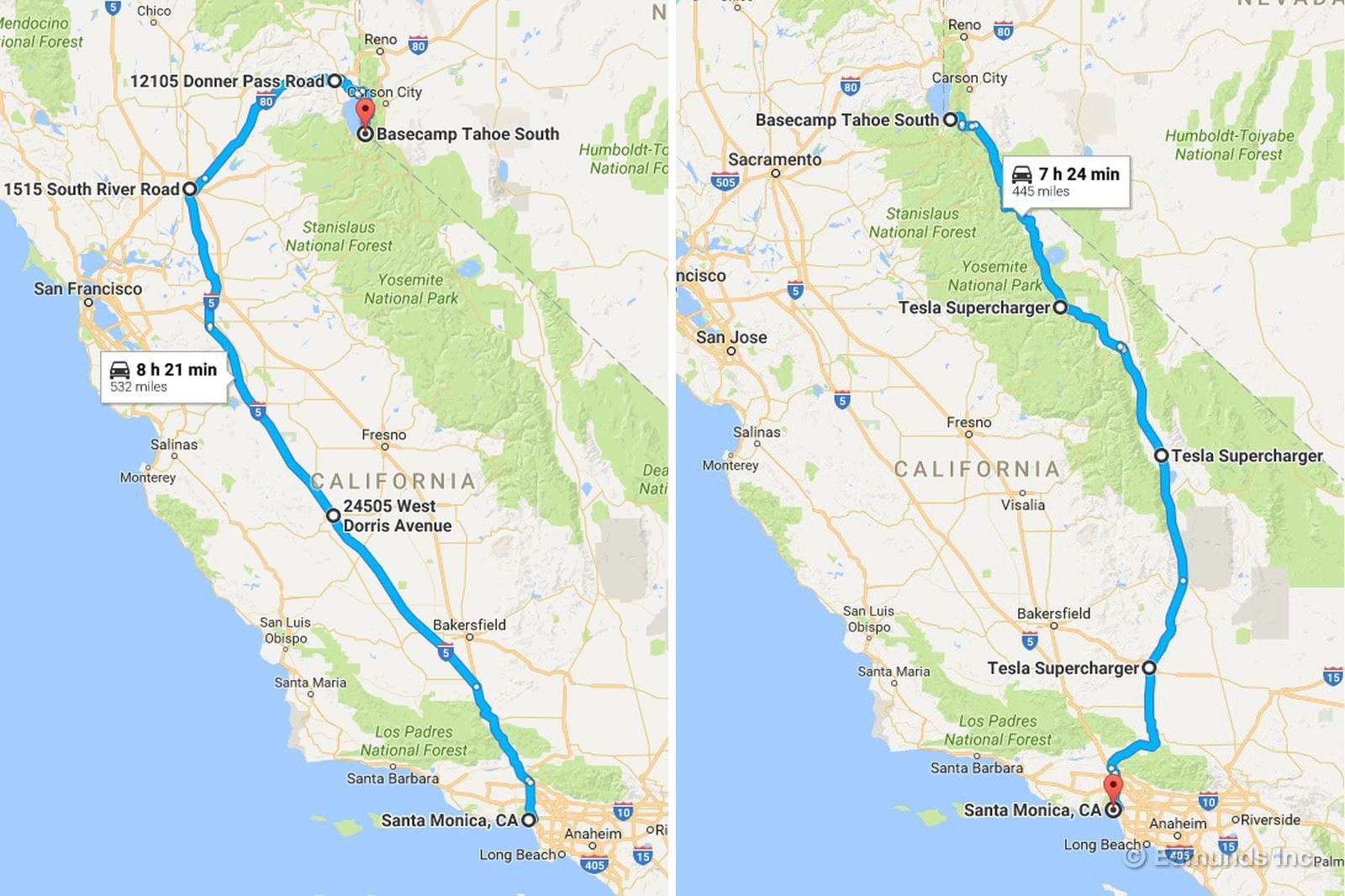
A half mile later we come to a T intersection. I line up to turn right and begin the fairly direct 445-mile route down the eastern flank of the Sierra Nevada mountains. Jay must turn left and head north to a town called Truckee near the Donner Pass (yes, THAT Donner Pass) so he can fill up with the hydrogen he needs to get back to Sacramento and finally head home along a 532-mile route.
My 87-mile advantage is today's test in a nutshell. Yesterday's same-route contest focused on refueling time; today we're acknowledging the actual state of each car's refueling network. Tesla has Destination chargers and a fairly extensive Supercharger network that offers me a couple of route choices. The Mirai has neither of those advantages.
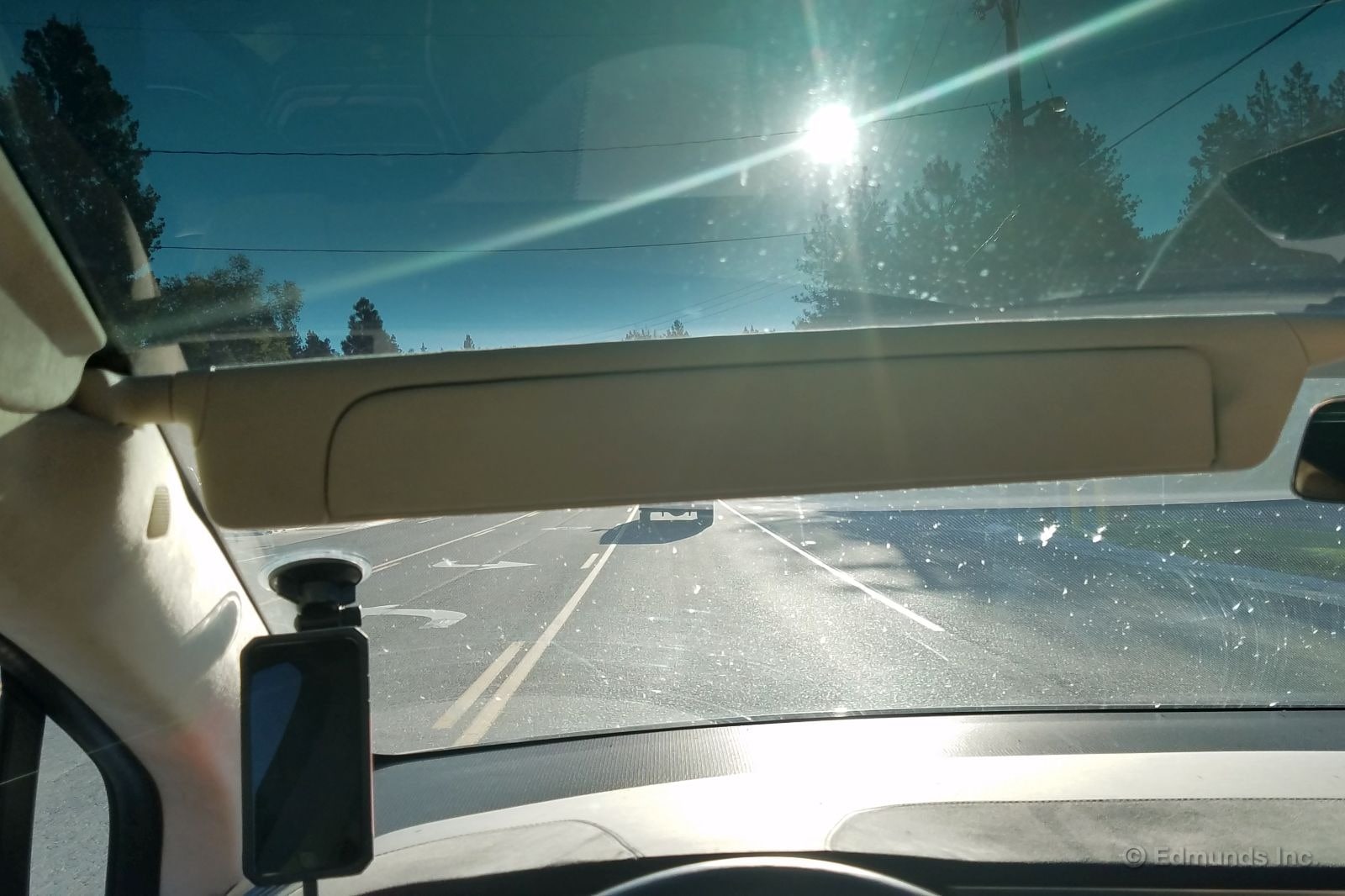
My hand involuntarily flies up to shield my eyes from the morning sun as soon as I make the turn. I fold the sun visor into position, but it's no use. The Tesla's helicopter windshield is doing me no favors.

Lake Tahoe is nestled in a natural basin, so my route snakes up to another summit. My progress is briefly impeded by a slow-moving semi that eventually moves over after a few impatient minutes. I quickly regain my pace and crest the summit, but soon after I get bottled up behind an even slower motorhome towing a Jeep on the sinuous downslope.
It takes a few miles before the kinks finally straighten and a passing zone emerges. The Model X squirts past easily. A couple miles later the navigation system tells me to turn left at the next four way intersection, which is odd because that's north. I do it anyway and loop up a mile or so to connect with southbound Highway 395 — the road I will be on much of the day — in a place called Linden.
Linden is one of those highway towns that are long overdue for a bypass. It's slow going until I leave the city limits, where the road narrows to two lanes and the speed limit goes up after a final red light. At mile zero I programmed my ultimate destination into the Tesla's navigation system, and it knows my battery has barely budged off the full mark — still at 238 miles — thanks to all the downhill running from Tahoe to Linden. Nevertheless, the car insists I stop at the Supercharger in Gardnerville, Nevada, just 18 miles ahead.
Ridiculous. The Mammoth Lakes Supercharger is only 116 miles in front of me. I ignore what Elon's software is telling me and roll onward.
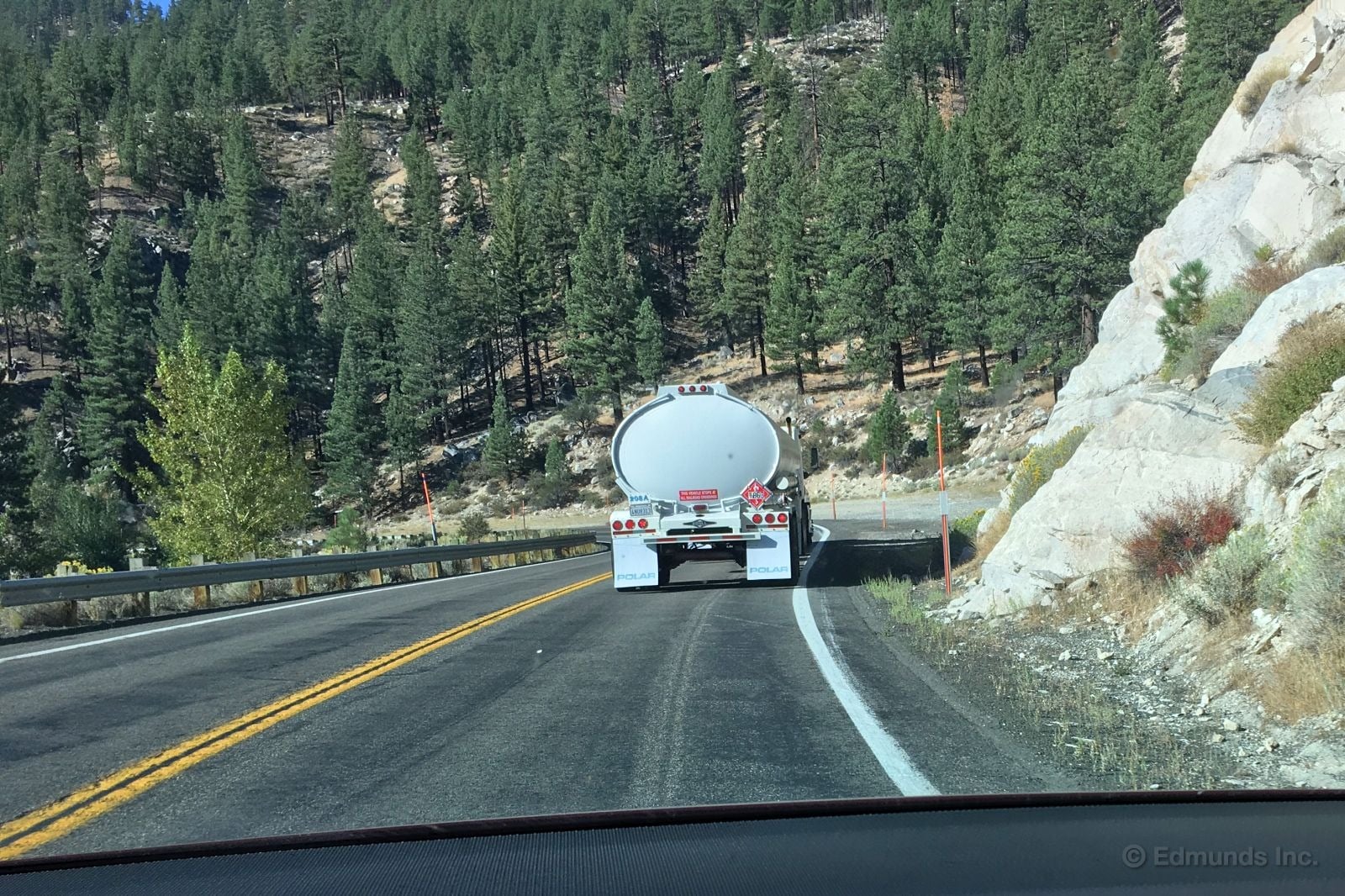
The road tightens and twists through mountainous canyons. It's beautiful, and many of my fellow travelers are dawdling tourists that are in no hurry whatsoever. A passing zone emerges and I sail past all but one of them: a tanker truck.
It's the motorhome scenario all over again until I finally find a legal way around him some minutes later. It's proving to be one of those days. Or maybe it's like this every summer day on Highway 395. Probably so.

Near Bridgeport, California, I start to encounter a string of small construction zones with flaggers where road crews have the highway necked down to one lane. It seems they're repairing last year's winter damage before next winter arrives. I get lucky most of the time and only get held up at two of them for no more than five minutes each.

With 80 miles of range remaining I arrive at the Mammoth Lakes Supercharger, some 2 hours and 42 minutes after I departed the hotel. It's an interesting layout, with pull-through spots stacked two deep. If the approach weren't so tight, I could see myself pulling the Model X through with a trailer in tow and only blocking one extra space.
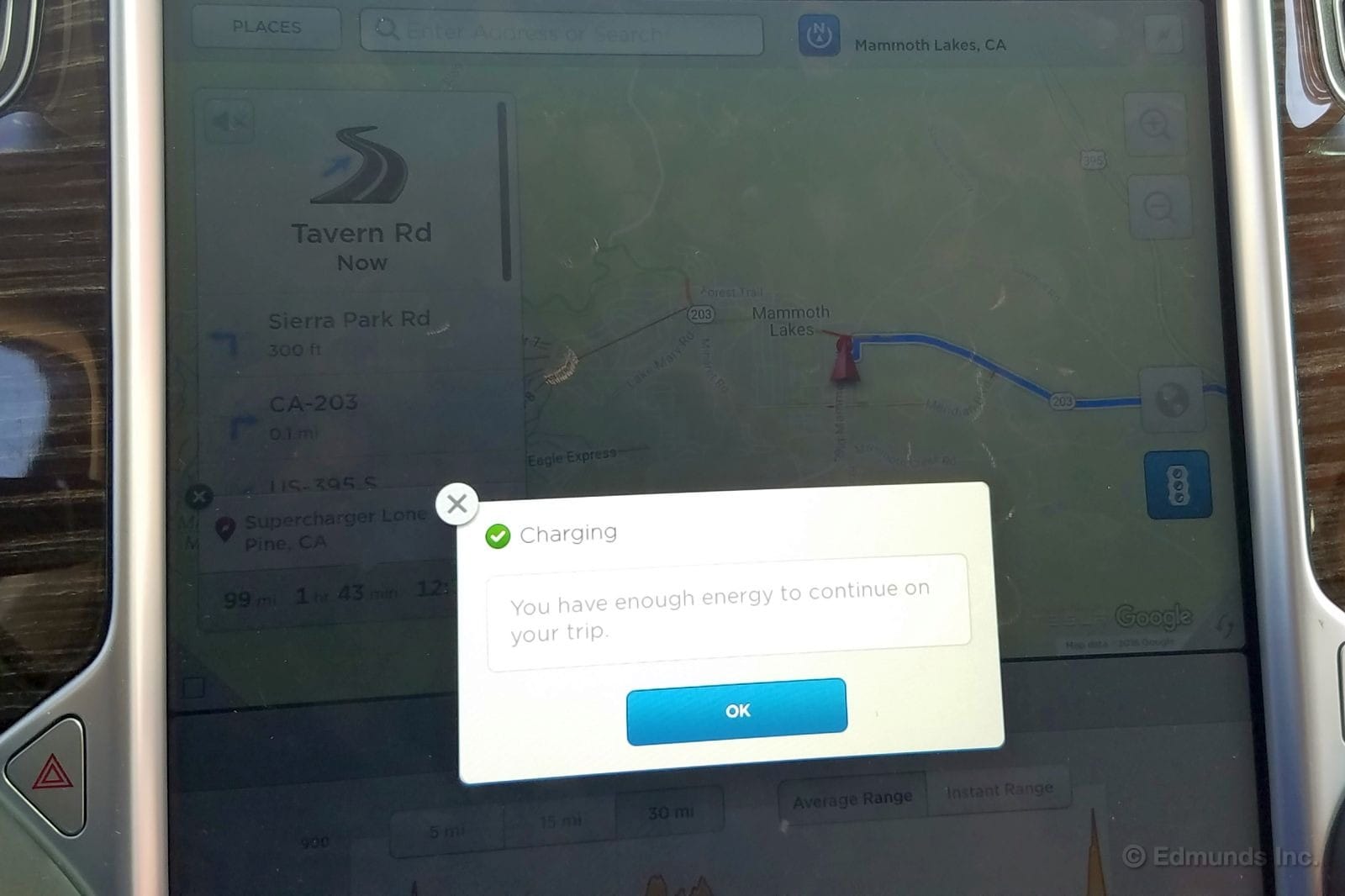
The Lone Pine Supercharger is my next target, and it's only 100 miles down the road. The computer says I can unplug and get moving after just 8 minutes with 118 miles in the battery. But the Mammoth station is a few minutes off the highway, so the total amount of time I've lost is something like 15 or 20 minutes.
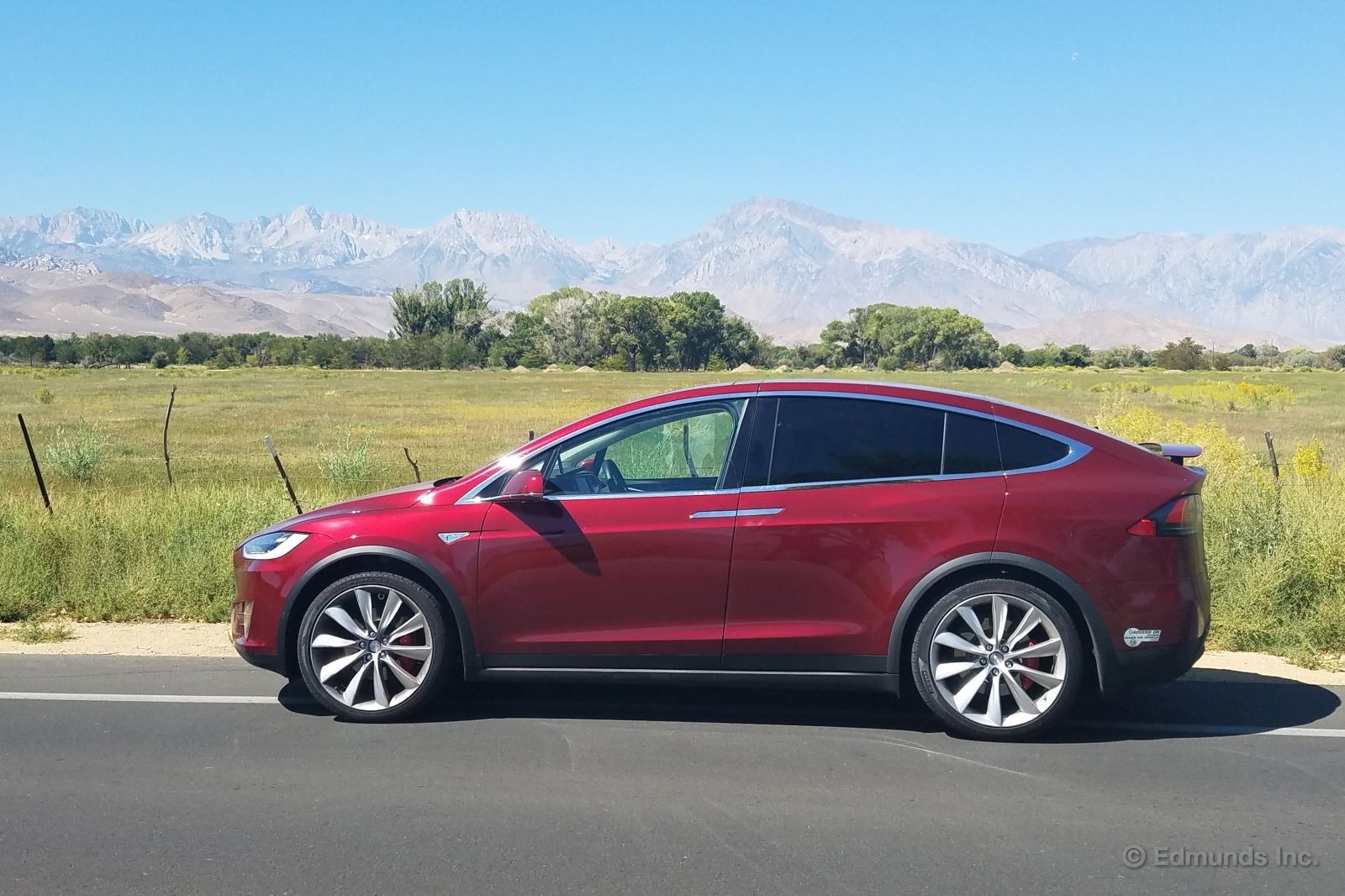
The Linden slowdown made me lose confidence in the shortcut-finding ability of the Tesla's navigation system. I've been running Google Maps on my phone alongside it ever since, and as I approach Bishop, California, it points out a 6-minute savings that avoids the downtown area altogether. Downtown is always a mess, and this route is a clear winner. It's scenic, too, and I stop for about 20 seconds to snap a quick picture.
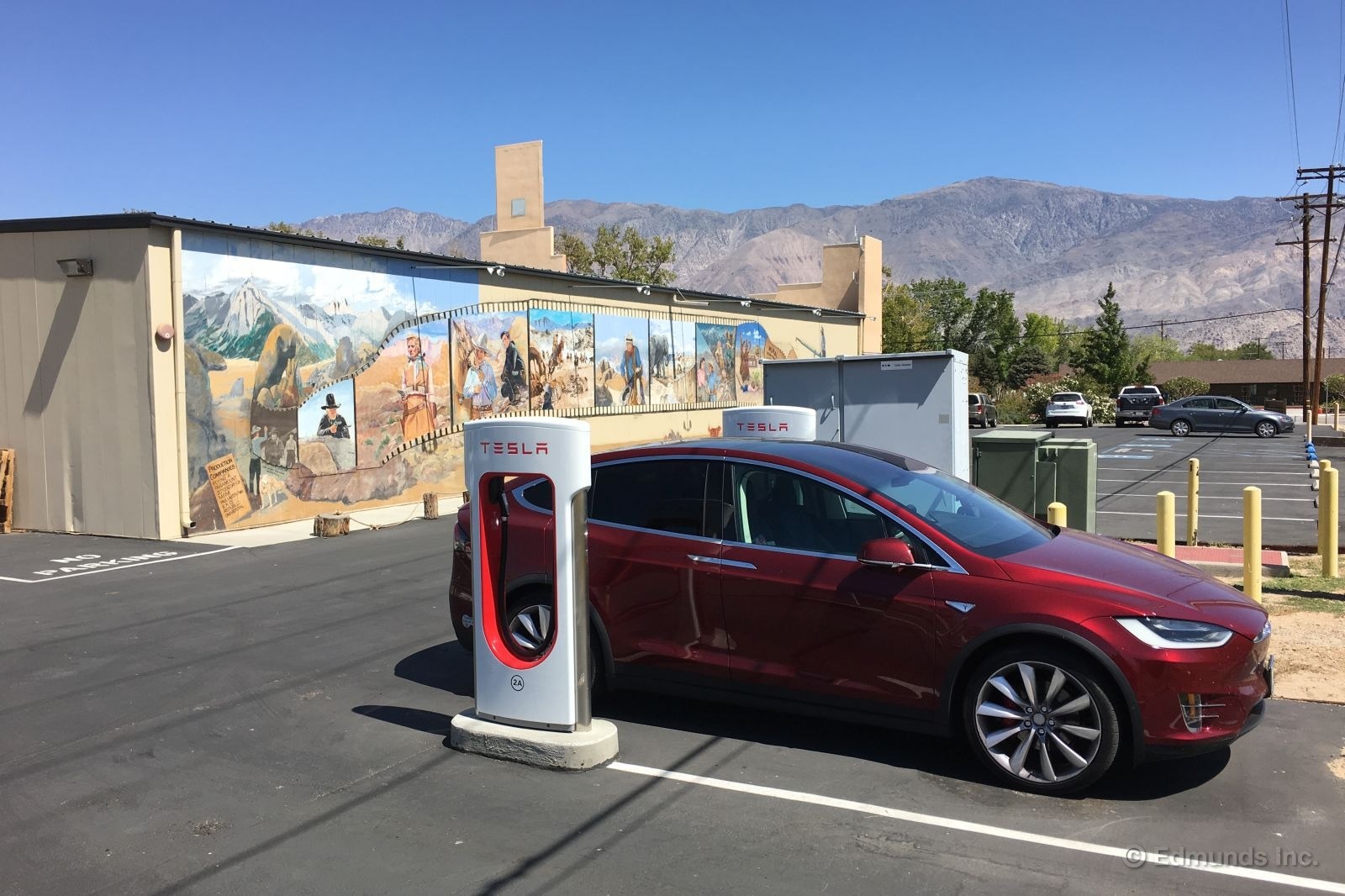
I've got 30 miles of range left when I arrive at the four-stall Lone Pine Supercharger, where parking is tight and maneuvering room is scarce. It's hidden on the edge of town, behind the film history museum that honors Hollywood's extensive use of the nearby Alabama Hills.
I wander off to find food. This will be a longer stop, but I only need to travel 113 miles to the Mojave Supercharger. The good restaurants are sit-down places that are a bit too far away on foot for my current "Beat Jay" mindset. I settle for a quick snack and an iced tea at McDonalds.
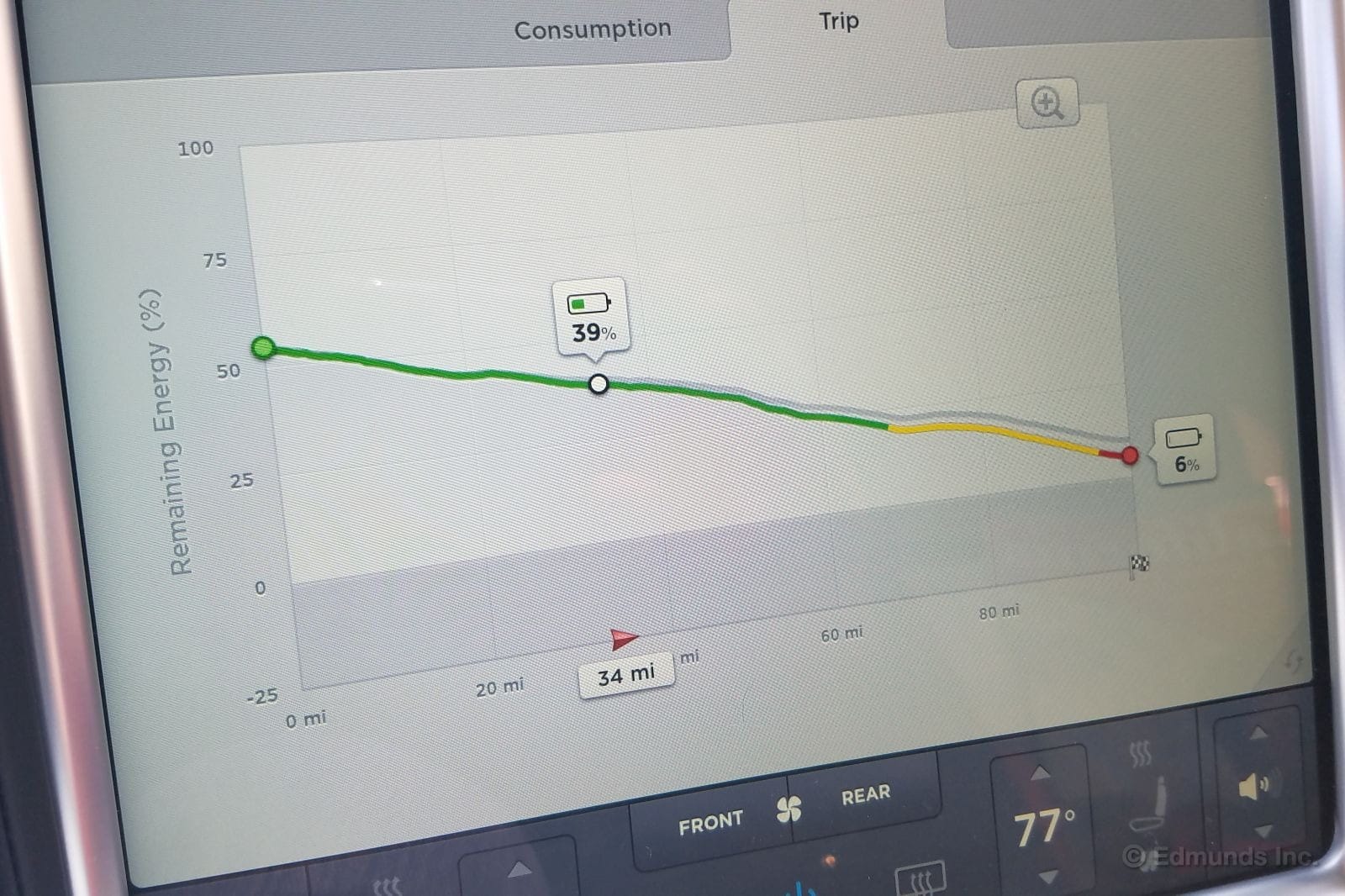
I unplug after 35 minutes with 155 miles in the tank, which seems like an adequate surplus. It's nearly 100 degrees outside, however, and the air conditioner has to work extra-hard given that I'm sitting under a humongous contact lens of a windshield. There's also a moderate headwind, resulting in consumption that's higher than I am comfortable with.

It's higher than the car would like, too, and it says so before I'm halfway to my destination by issuing a warning that advises me to keep my speed below 70 mph.
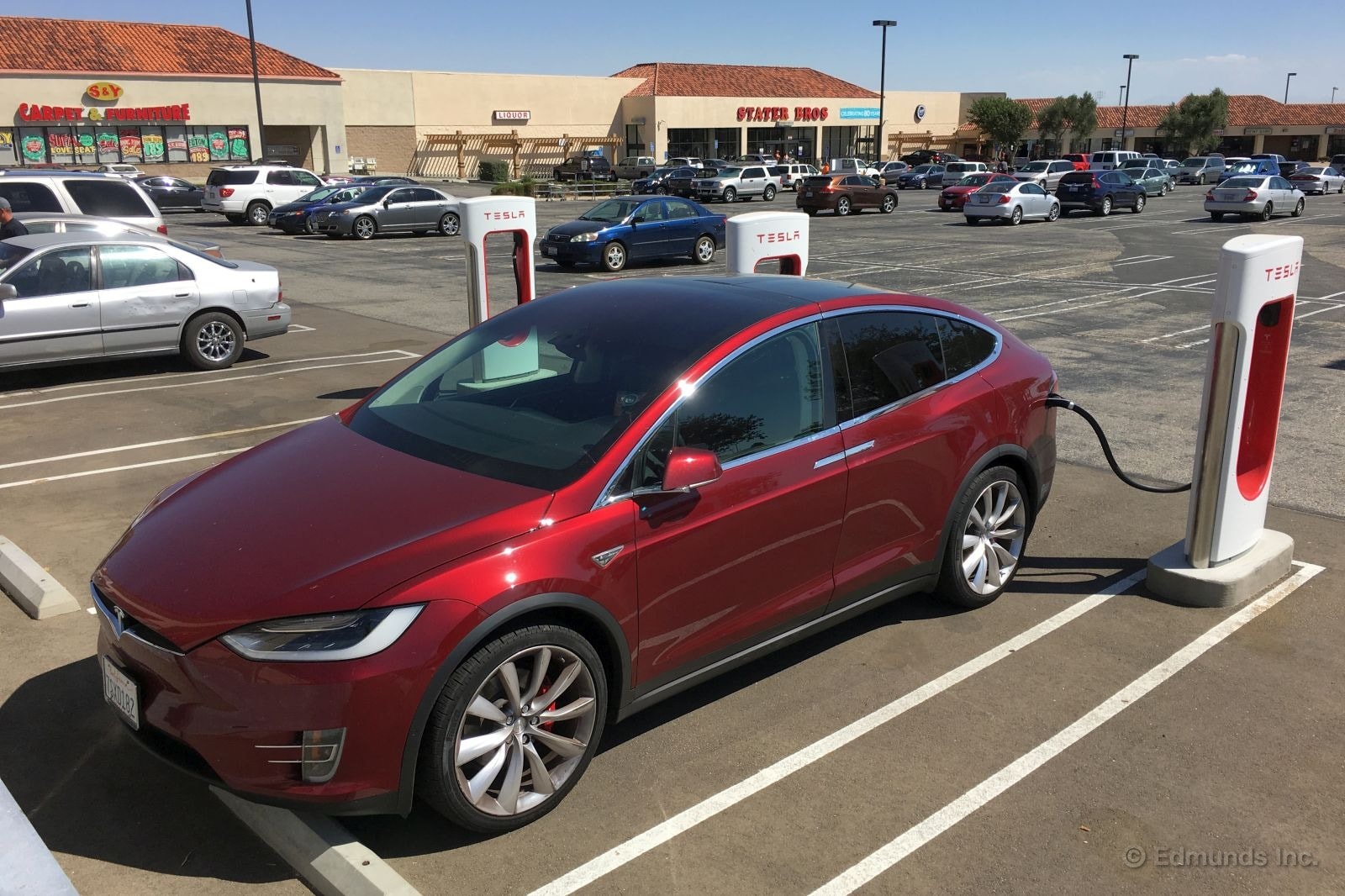
I roll into Mojave with 16 miles remaining. The Supercharger stalls are lined up in front of a Mexican food joint, so I plug in and order a burrito and some more iced tea. I have no idea where Jay is. Behind me, surely. But is he catching up and about to pass because of this final stop? I figure it could go either way.
A couple of white Model S sedans pull in while I'm munching away. One has a road bike mounted to a rooftop bike rack, while the other has a full-suspension downhill mountain bike stuffed into the hatch atop the folded backseat. Thank you for the material for a future topic.
Home is 95 miles down the road, but consumption was worse than expected on the last run and I know there's a bit of elevation change ahead. But I know the weather is bound to get cooler, too. How long do I wait? I pull the plug after 32 minutes with 126 miles showing on the range meter.
The rest of the ride is fairly straightforward. Traffic isn't bad, but it still dictates my pace. It gives me time to think about the two cars.
Our Model X is a rolling math problem, complete with charts and graphs and apps and decisions. I'm always factoring in hills and wind and traffic and heat, and I'm trying to predict these factors an hour or so into the future. I find myself thinking thoughts along the lines of, "If I stay plugged in 5 minutes more maybe I can drive 5 mph faster. Assuming I can drive 5 mph faster, which represents the bigger time savings?"
The Mirai, on the other hand, is a normal car in that there's no strategy involved. You just gas (and I do mean gas) and go. Every stop is a full refill, and it takes 5 minutes no matter what — unless you're a newbie at a station and have to watch The Video, in which case it's 8 or 9 minutes. You can eat whatever and wherever you want, because there's no pressing need to eat whatever food is within walking distance of your filling station. You've got time to play with.
There's no doubt that hydrogen station availability is a problem, but that will be solved in the fullness of time. The northbound leg results showed us just how much smoother, faster and relaxing a hydrogen fuel cell car can be on a long road trip if there are stations to support it.
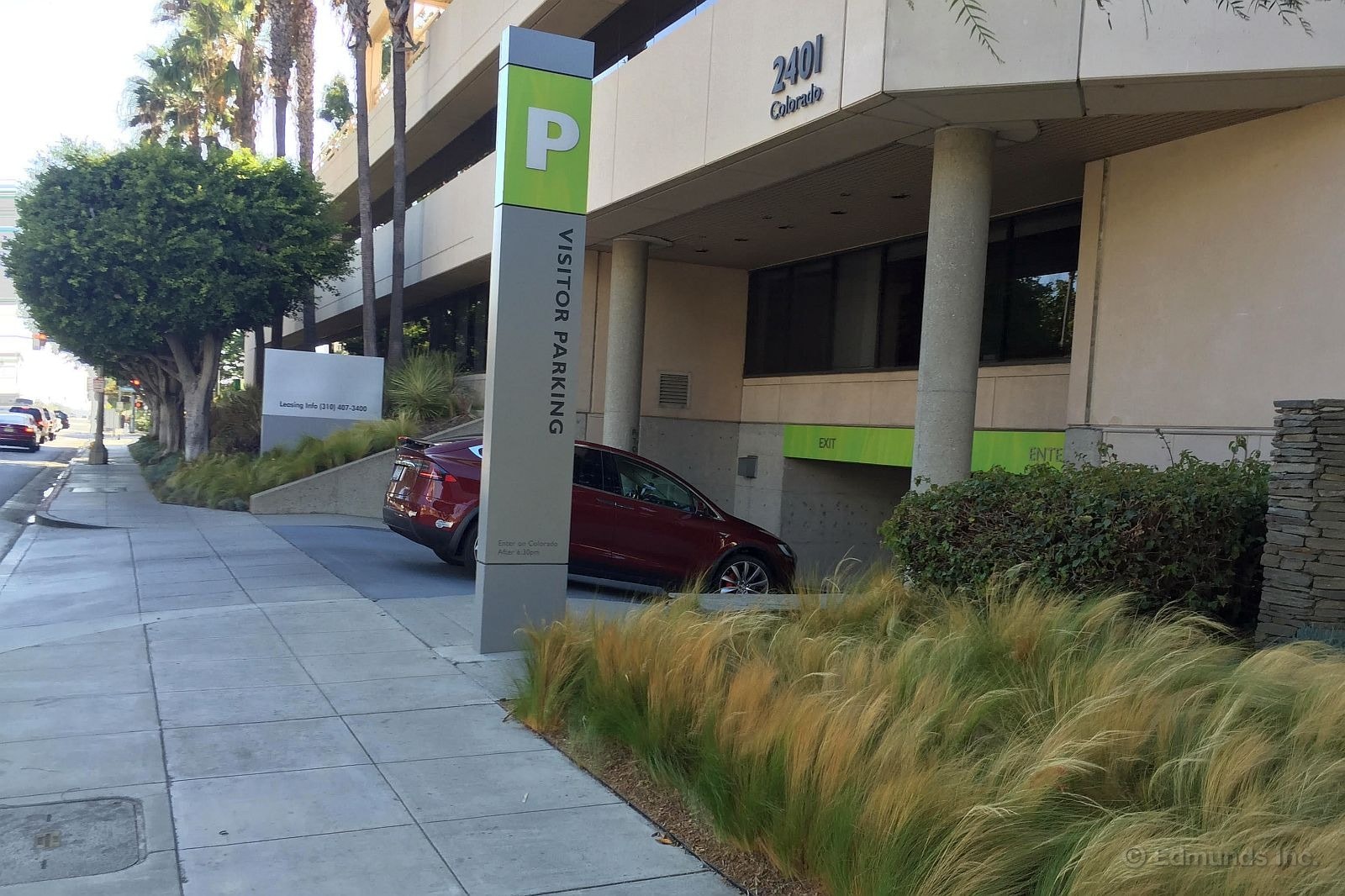
At 4:37 pm I pull down the ramp of the parking garage, 8 hours and 37 minutes after I set out. It takes a little time for my eyes to adjust as I guide the Tesla toward its parking spot. There are few cars in the editorial parking area on this late Friday afternoon, but one of them is the Toyota Mirai.
Jay walks down the ramp to gloat. He was standing on the sidewalk snapping the above picture when I nosed into the garage. We compare notes and figure he's beaten me by 10 minutes.
Close? Not in my book. I had an 87-mile head start with a full battery. Sure, I was held up here and there, but I'm sure Jay has similar stories. Fact is, Jay would have creamed me by two hours had there been a station in Lake Tahoe and just one other in Lone Pine.
Someday such stations will exist if this hydrogen concept has legs, which I'm thinking it does after this side-by-side road trip shootout. Build more stations in more places and I'm a convert. As for you automakers, do something about tank placement and trunk space. And let's put your best stylists on the case.
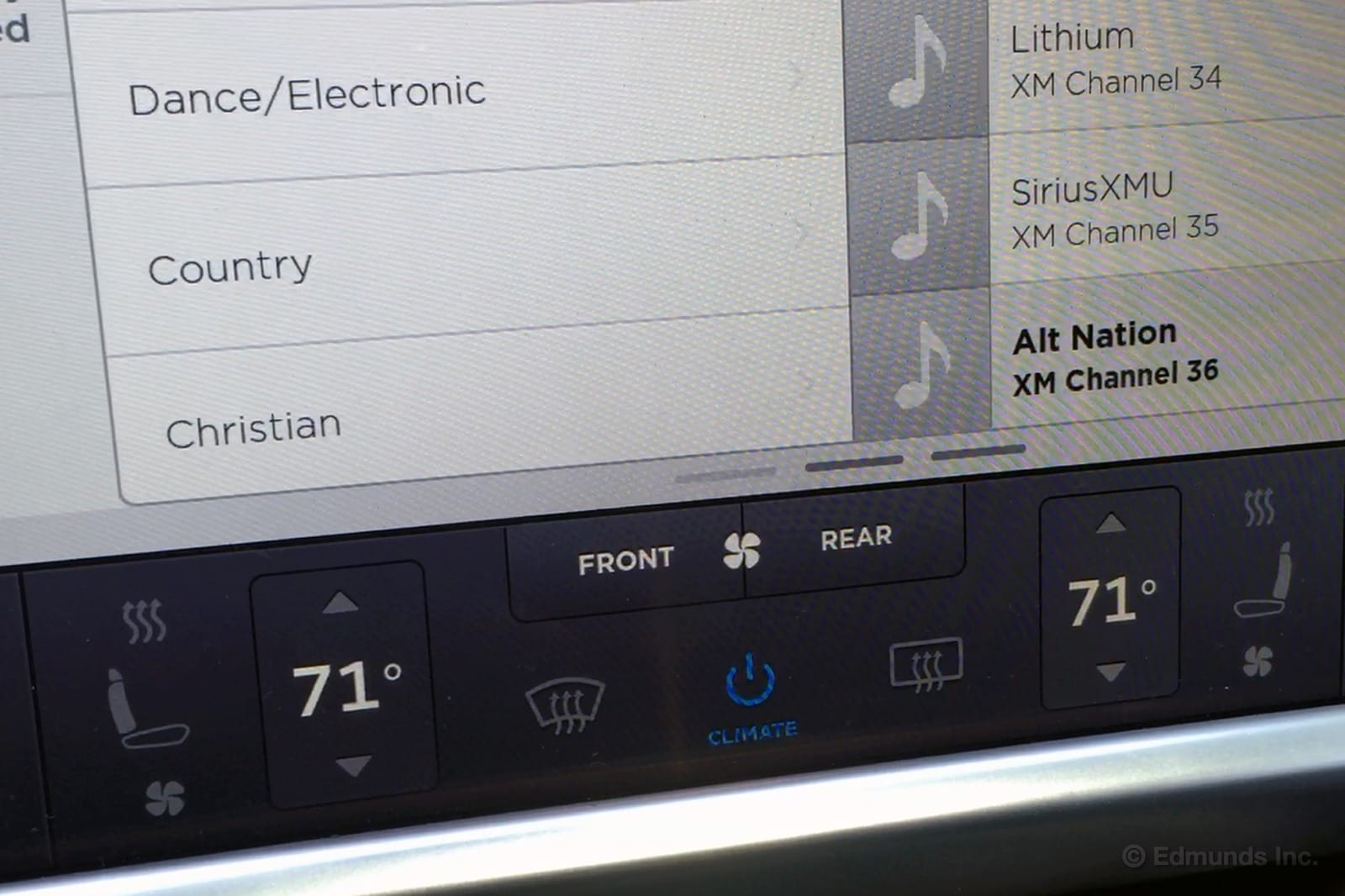
Another day, another funny noise coming from our 2016 Tesla Model X. I signed the car out soon after Mark caught the steering column making a sound like the Shoe who gets Dipped in Who Framed Roger Rabbit? I didn't know about the noise before I took it home, so when I heard something funny I notified keymaster Mike Schmidt. He informed me of Mark's observations, but this was something different.
And in less than 24 hours, I noticed two more distinct sounds emanating from our electrified SUV.
The first was a metallic grinding sound, which didn't exactly instill a sense of confidence. However, it was intermittent and seemed to occur only during light throttle applications. When I got home, I noticed the shroud in the front left wheel well was not as secure as the rest. I moved it around to secure it a little better.
The next morning, I drove to a nearby coffee shop and heard another noise in addition to the grinding. I can't explain why, but my first instinct was to turn off the climate control. Both noises stopped! I called Schmidt to share my discovery. The list of issues to be addressed at the Tesla's next service visit continues to grow.
Later in the day, the driver window squealed loudly while it powered down. Add one more item to the fix-it sheet.
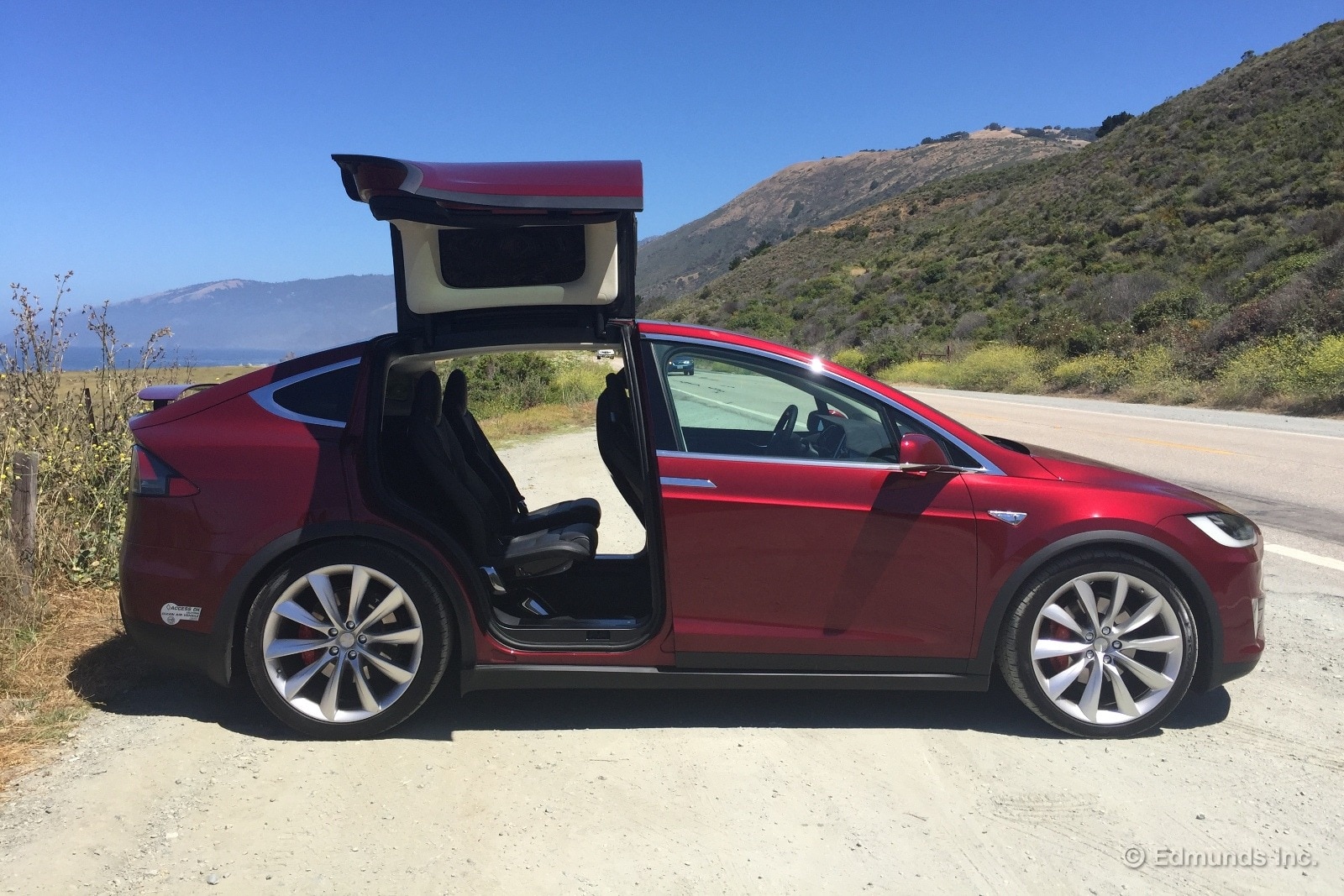
We've had a fair share of issues with our Tesla Model X so far, but most of them have been minor problems that didn't affect its overall roadworthiness. This latest annoyance falls into that category. It's a loud rattle that usually crops up when the air conditioning has been on for an extended period of time.
Since it's a little hard to explain, I just took this video to give you a taste. Hard to tell, but it could be the same HVAC-related noise that Cameron described as a moaning. Needless to say, we'll be asking our dealer to look into it the next time it's in for service.
Monthly Update for October 2016
Where Did We Drive It?
Following last month's Hydrogen Highway vs. Tesla Supercharger experiment, our long-term Model X has returned to its regular commuting duties. The big news for October was a service call to address 16(!) minor issues that had piled up. As fate would have it, yet another isolated issue arose after the service that may affect us on the few rainy days we get here.
Maintenance and Upkeep
According to Mike Schmidt, we let some minor issues pile up before taking our Model X in for service. It took the shop nine days to sift through our 16 line-item invoice. Tesla Santa Monica did an excellent job of keeping us updated on its progress and addressed all of our concerns. All work was covered under warranty.
The complete list of items:
1. Replace key fob battery
2. Reposition A/C condenser pipes and replace desiccant bag
3. Inspect front halfshaft (no replacement needed)
4. Adjust front door glass and belt seal to reduce wind noise (Service Bulletin 16-45-001)
5. Chassis and subframe inspection for reported shudder (no issue found)
6. Calibrate door drive units and update firmware to remedy door power-assist issue
7. Replace center console assembly to remedy broken cupholder door
8. Confirm reported HVAC rattle (considered normal)
9. Replace outer belt seal to correct window operation
10. Apply Krytox to remedy driver seat creak while long-term solution is determined
11. Replace trunk floor cover due to broken handle
12. Replace broken Apple lightning dock connector
13. Replace outer belt seal, which fell off
14. Perform an MCU diagnostic check following occasional screen freezes (system operating as designed)
15. Replace/calibrate right front window regulator after window reportedly would not go down when in open position
16. Replace applique seal on the side roof pillar and adjusted front windows to remedy report of excessive wind noise
Logbook Highlights
Miscellaneous
"Beads of rain on the back window made the rear wing freak out this morning. It wouldn't lower completely until I dried off the glass. Reminds me of that stretch when our Model S driver door used to open automatically when it got wet, except a lot less worrisome." — Mike Schmidt, Vehicle Testing Manager
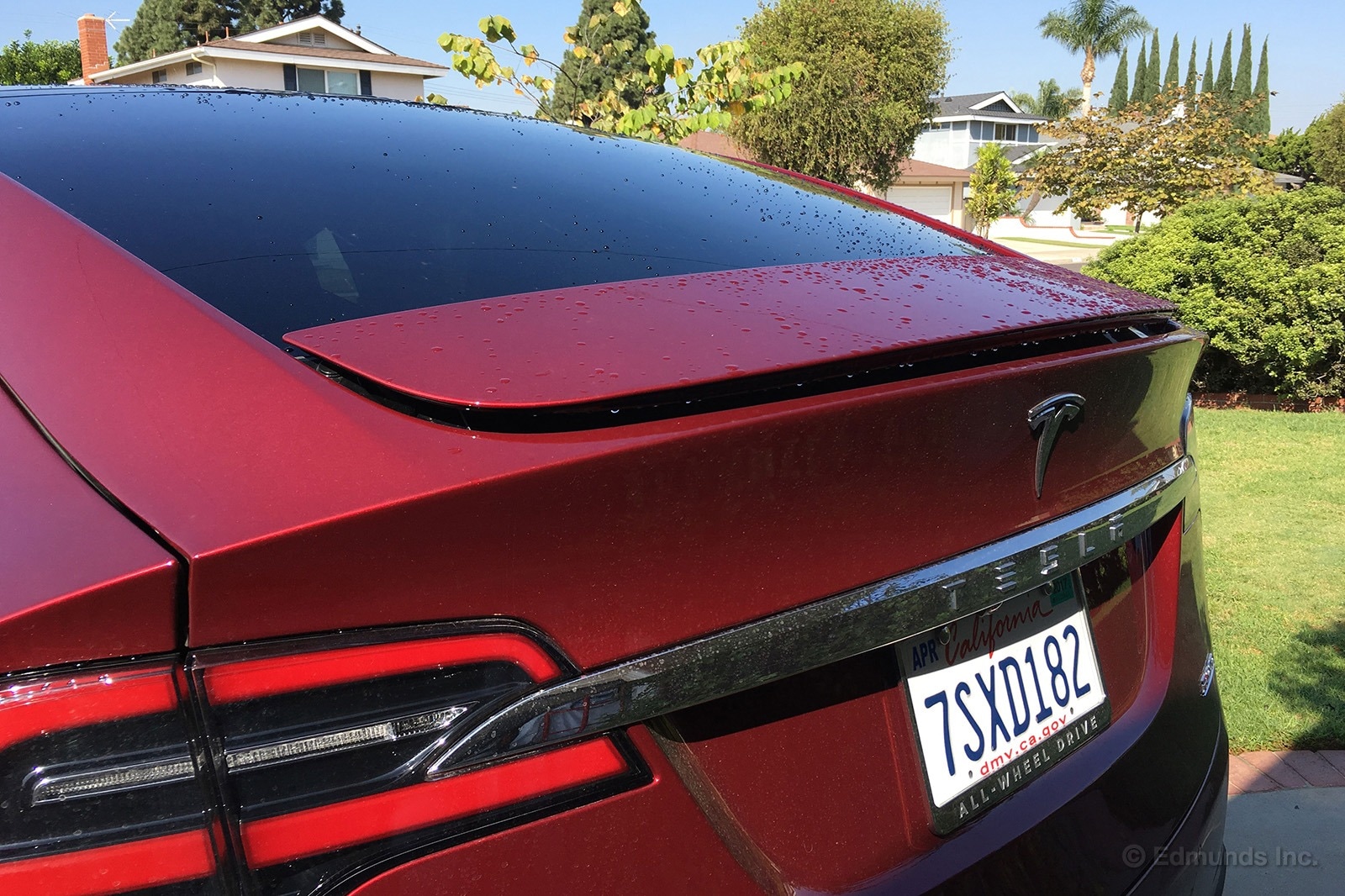
"I drove the Model X for the first time and it took me awhile to get the hang of not closing (or opening) the doors and letting the Tesla do the work. I was so paranoid about the falcon-wing doors that when I stopped at the grocery store on the way home I parked in the far reaches of the lot, with a space on both sides. (I posted the below photo on my personal Facebook page with the caption: "The 'don't come near the Edmunds Model X' parking job at the grocery store.") Thankfully I had no issues." — Kathleen Clonts, Copy Chief
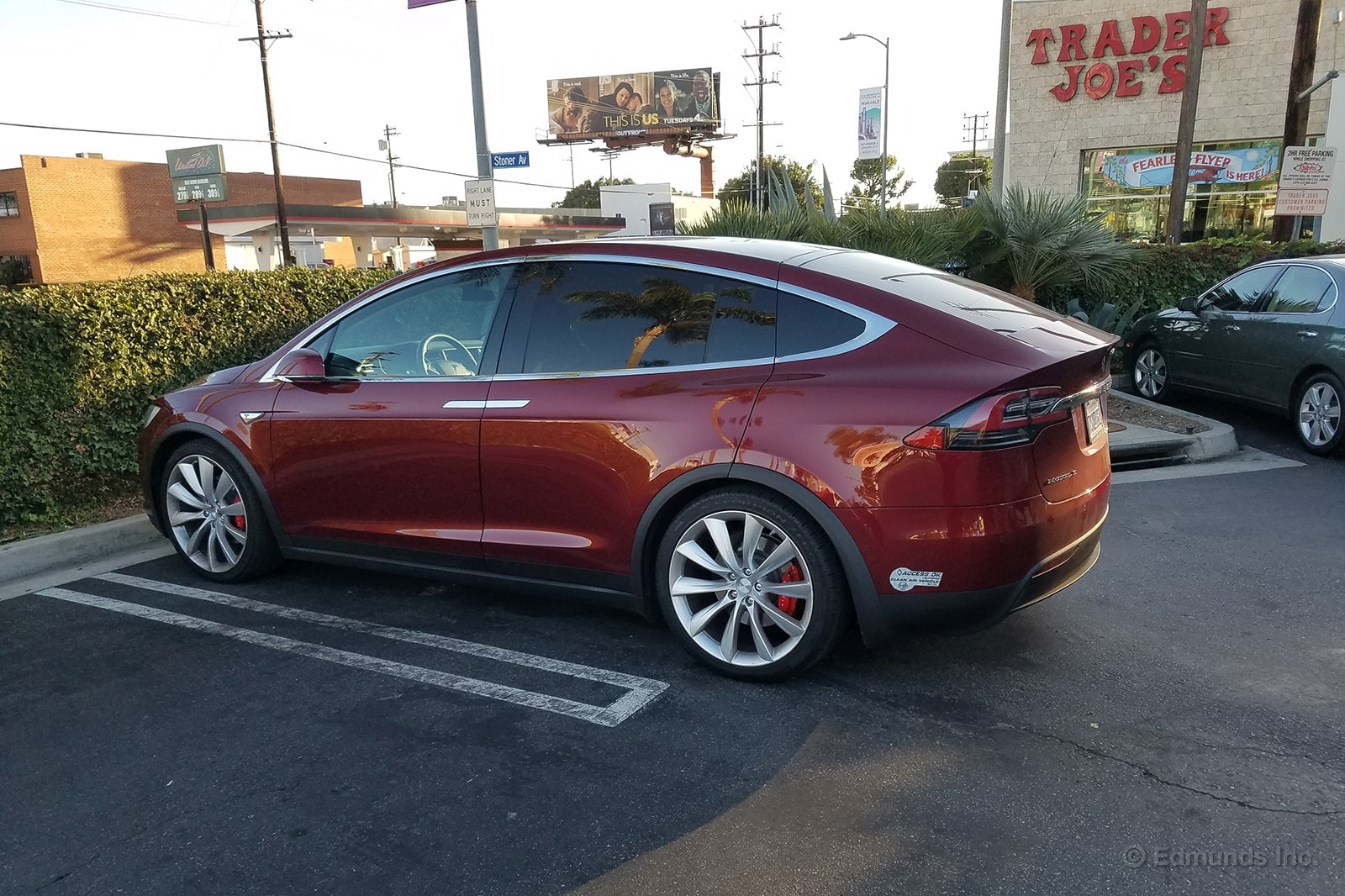
MPG
"This was my first time using a Tesla supercharger. It wasn't quite 7 in the morning on a Sunday, and already nine of the 10 chargers were occupied. I took the last one, lowered the bill of my cap and napped until the specialty doughnut shop across the street opened. It was a stress-free experience good for 100 miles of range and a serious sugar rush." — Mike Schmidt
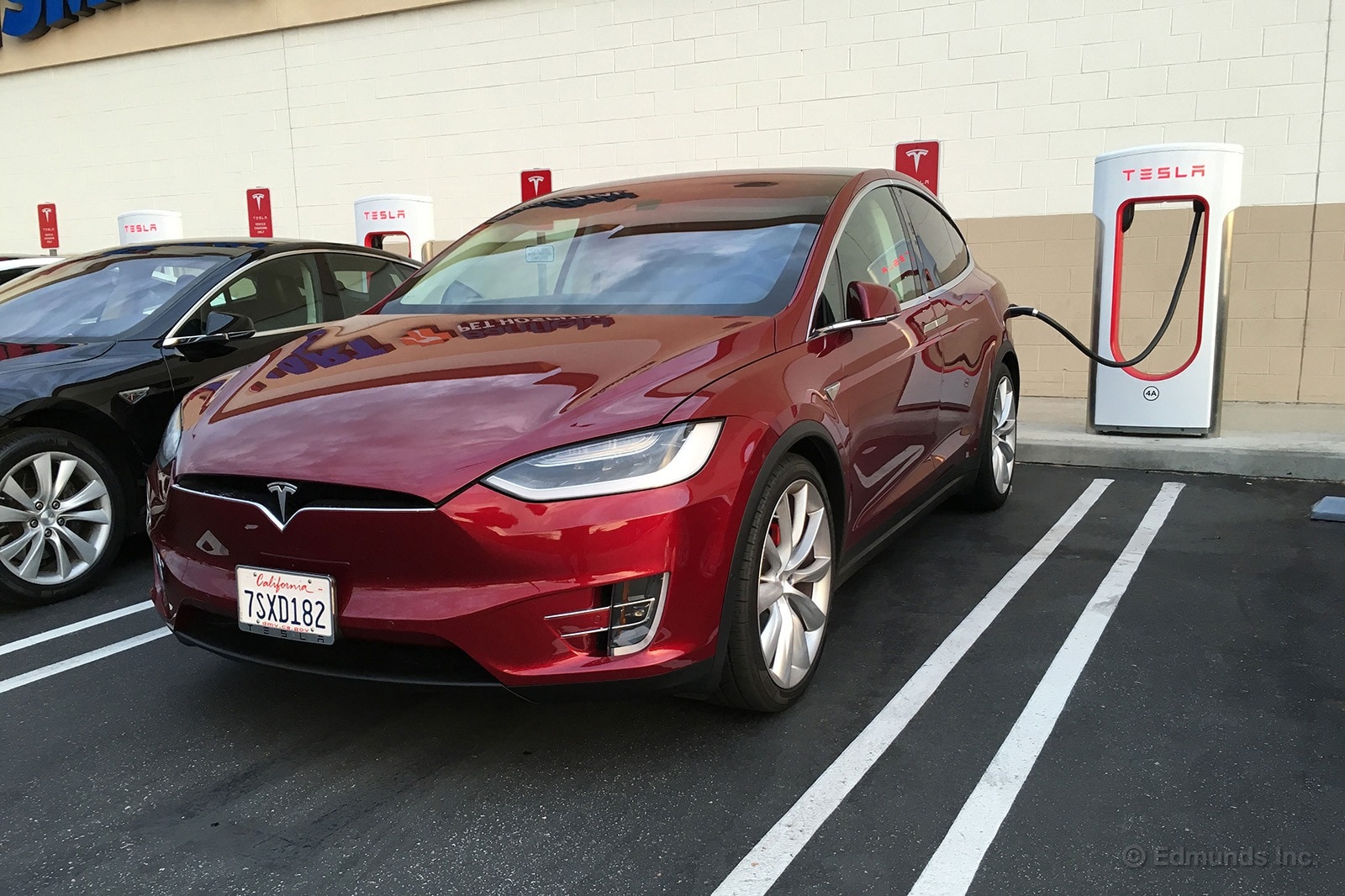
Monthly Update for November 2016
Where Did We Drive It?
Much like last month, our Tesla Model X was confined to commuter duty for most of November. It wowed kids in school parking lots, carried plates of food on Thanksgiving, and otherwise played the part of a typical family vehicle. Unlike last month, however, it didn't spend any time cooling its heels at the service center. We did see that a recall was issued for certain Model X charge-plug adapters, but our particular parts were not affected.
Maintenance and Upkeep
None.
Logbook Highlights
Interior
"As nice as it is to have a third row of seats, without easy access to them their value diminishes quickly. More than one carpool kid who was banished to the backseats complained of having to wait for the slow-moving second-row buckets to move out of the way. A simple latch to flip them forward is the norm here, so it's easy to see why the Tesla's seats seem so cumbersome." — Ed Hellwig, Executive Editor
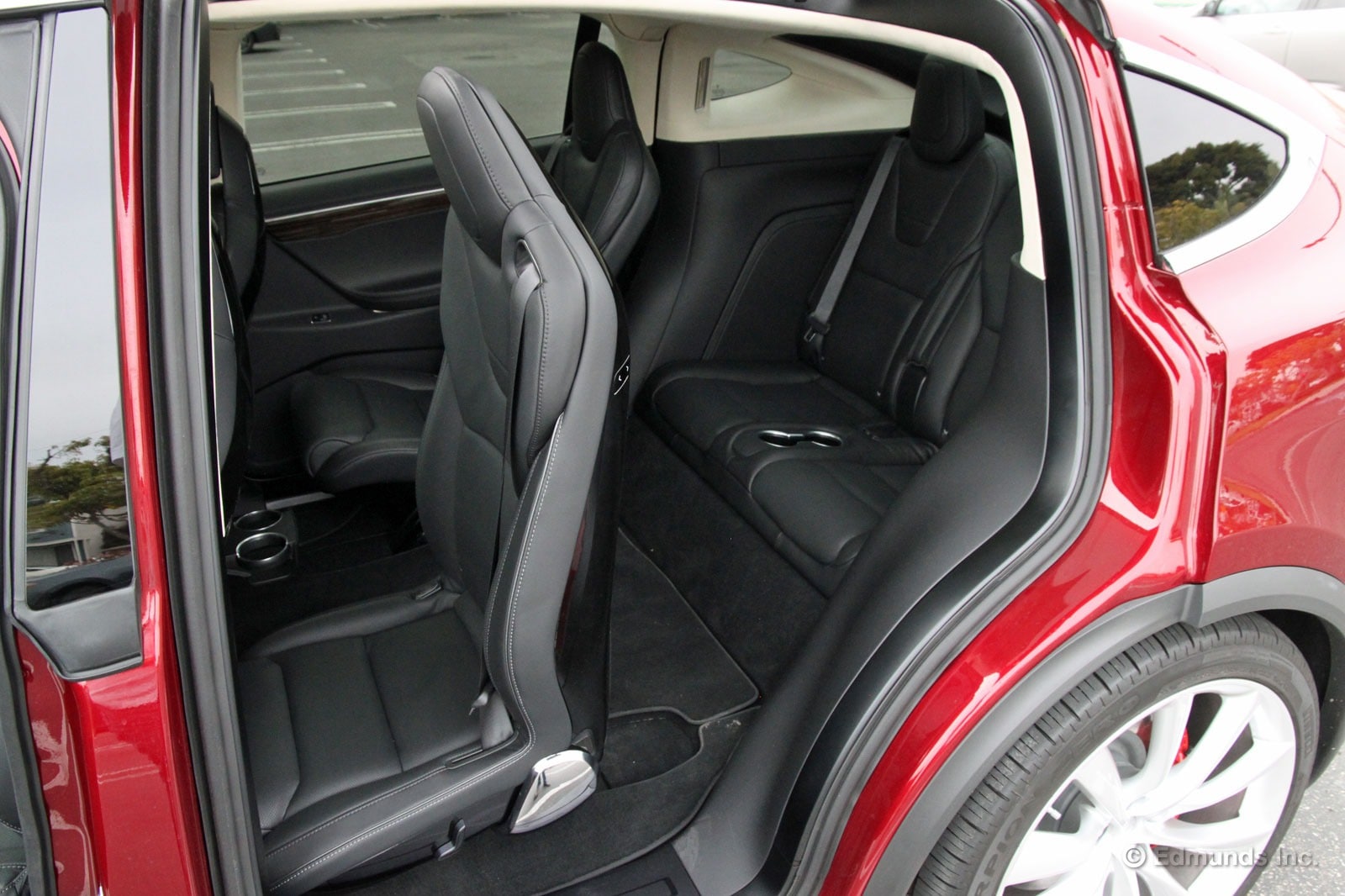
Cargo
"Having a cargo area up front helps make the Model X a far more usable family vehicle on a regular basis. The only problem is remembering that it's there. Most of the time passengers head straight back to the rear of the car if they want to throw a bag in before getting situated. I've started to pop the front cargo area right when I get in the car if I know other passengers are getting in with luggage or bags. Oftentimes I find that everything fits up front and I don't even need the rear cargo area." — Ed Hellwig
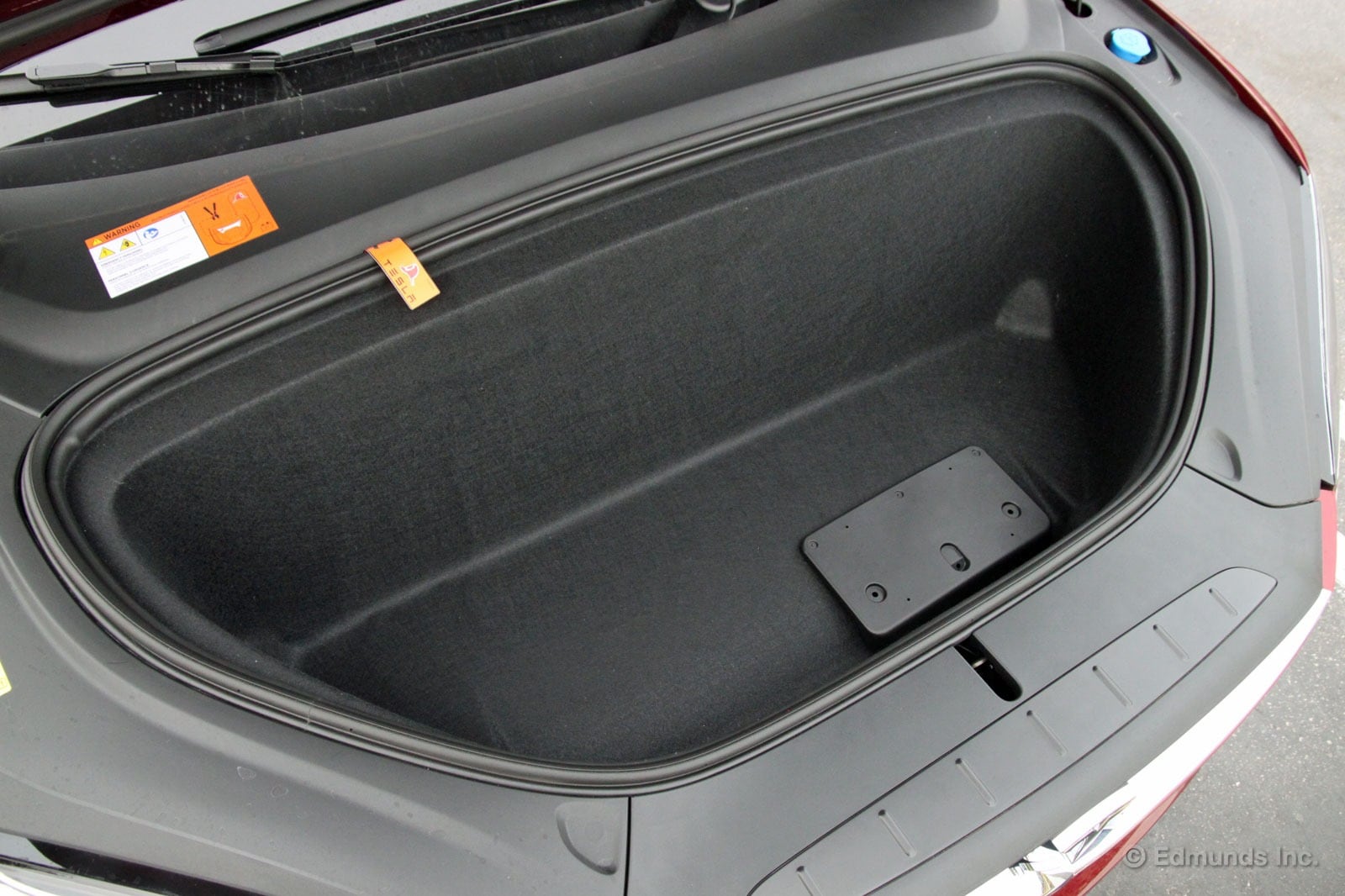
Technology-Audio
"I'll admit that Tesla's driver's assistance features work well. Better than most others I've tried, in fact. But after hundreds of commuter miles in bumper-to-bumper traffic, I still don't trust it. There are just too many situations where it 'thinks' for a little too long and I feel the need to take over. Other people might feel comfortable checking out and letting the Tesla do the work, but I'm not quite there yet." — Ed Hellwig
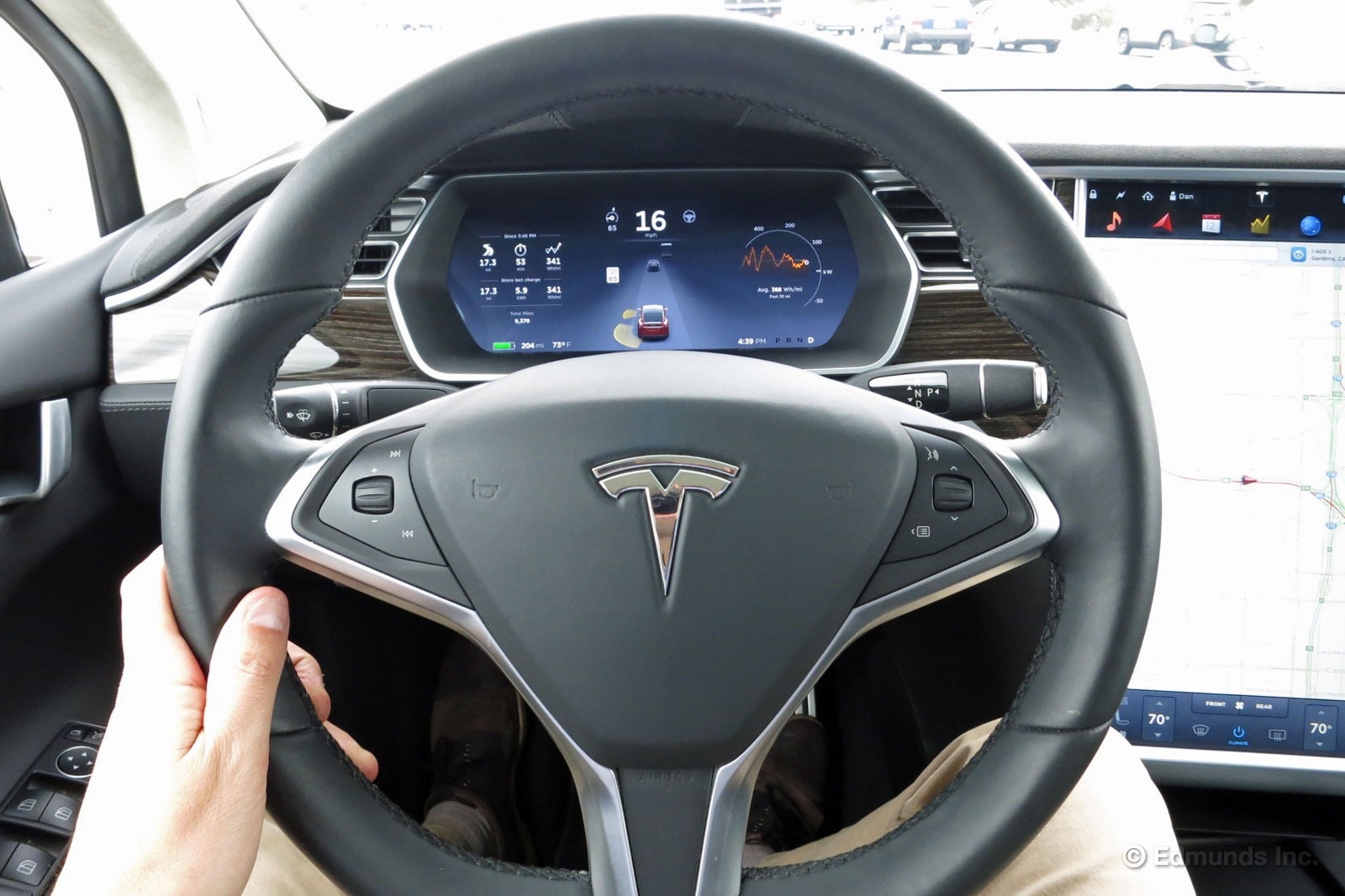
Monthly Update for January 2017
Where Did We Drive It?
As has often been the case with our 2016 Tesla Model X, we used most of its electrons in January to get us from our SoCal homes to the Edmunds office and back. In fact, my co-worker Ed Hellwig almost ran out of electrons while commuting to the office one day, which you can read more about in his comment below. I'm sure that was fun for him.
I did sign out our Model X for the last week of the month and drive it up to Fresno, which is about 250 miles north of Los Angeles. That gave me an opportunity to weigh in on what the Model X is like on the highway. I also took my family to visit Yosemite National Park in the Tesla. I'll be writing a separate entry about that trip.
How Much Electricity Did It Use?
I'll leave it to Director of Vehicle Testing Dan Edmunds to write a more complete report on our Model X's energy use at some point. But I will note that for the 465 miles I drove in January, which was mostly highway driving plus the road trip to Yosemite, the in-vehicle indicator for energy use averaged out to 423.3 watt-hours (Wh) per mile.
Watt-hours is the way the Model X displays its energy consumption. Think of it like this: If you have a 60-watt incandescent light bulb and you leave it on for one hour, it will use 60 watt-hours (Wh) of energy. If you left a 1,000-watt light bulb on for one hour, that would be 1,000 watt-hours or, as it's more commonly expressed, 1 kilowatt-hour (kWh).
Basically, the lower the Wh number in your Tesla the better. But is 423.3 Wh per mile "good"? Well, for our P90D model, the EPA estimates that it will use 38 kWh of electricity for every 100 miles driven, or 380 Wh per mile. So by that standard, no, it's not so good.
It's worth noting that my figure and the EPA's estimate aren't quite comparable, as the EPA includes recharging losses, which don't display in the Model X's readout. We can track those with our in-office High Power Wall Connector, but I wasn't using it for my drive. For what it's worth, the Model X's energy use in around-town driving trends lower and would be closer to the EPA's 38-kWh estimate.
I suspect much of the above is academic because presumably few Model X shoppers are looking for maximum EV efficiency. Still, I find it interesting. For comparison's sake, our new long-term Chevy Bolt gets a 28-kWh/100-mile estimate from the EPA.
Maintenance and Upkeep
Our Tesla wasn't due for any dealer service this month, but based on the following comments from our staff, there are outstanding issues that we might want to address at some point.
"I just got into our Model X after having not been in it for sometime. The steering wheel creaks when I turn it in either direction. And I just got a warning that the 'charge port door needs replacing.' Maybe that's why I couldn't plug the charge cord in." — Mike Schmidt, Vehicle Testing Manager
"It's been awhile since I was last in the Model X, so I kind of forgot what it was like to drive it. Maybe that's why I was so disappointed. This thing has so many squeaks, rattles and creaks that you would think it's 5 years old, yet it barely has 12,000 miles on it. If I had paid six figures for this vehicle new, I would be seriously unhappy with its current state." — Ed Hellwig, Executive Editor
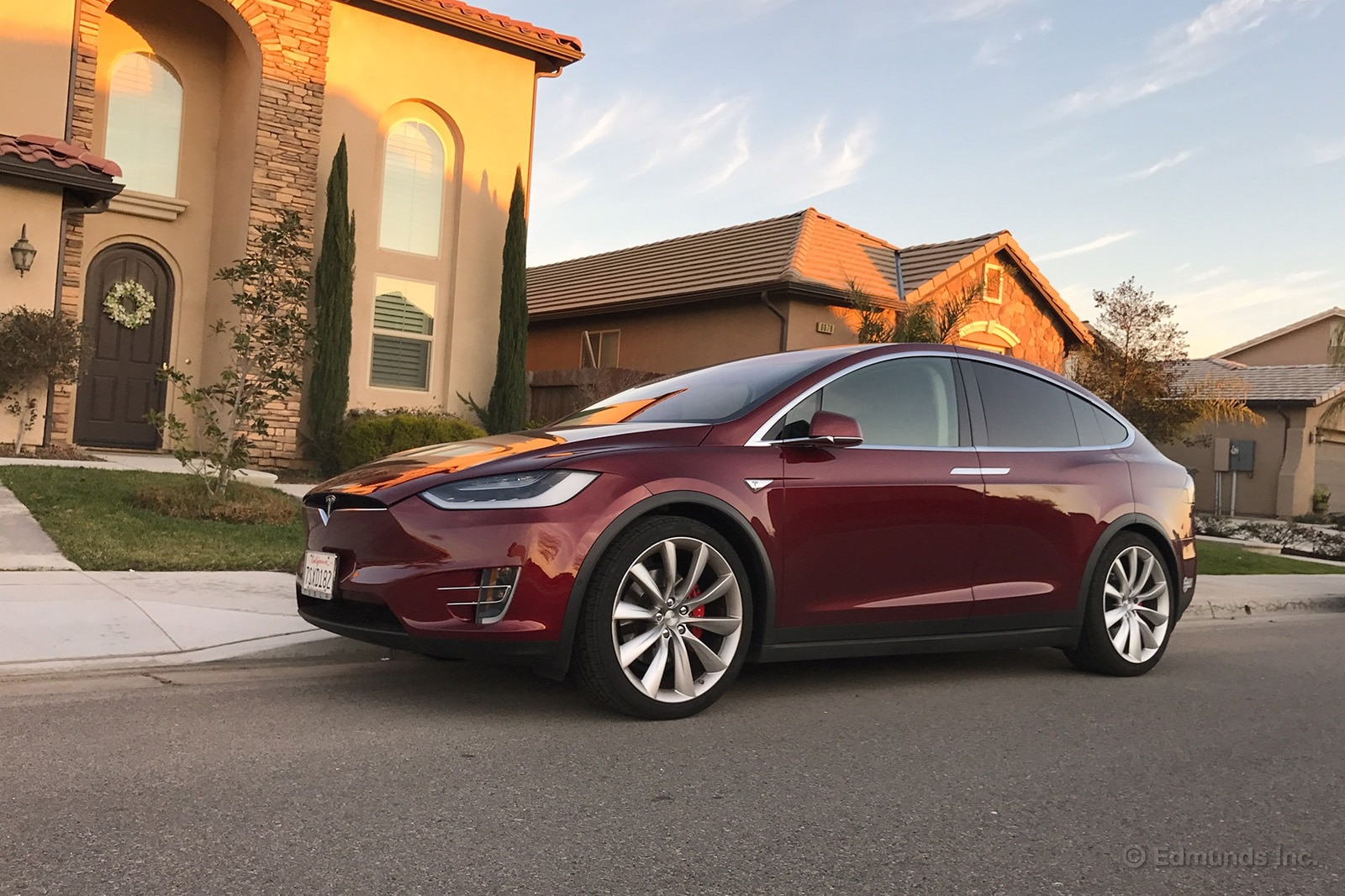
"I parked the Model X in my driveway for a few cold nights, and the falcon doors made some disconcerting creaking and cracking noises when opening in the morning. Overnight lows were around 32 degrees. The doors operate more quietly once they are warmed up." — Brent Romans, Senior Automotive Editor
"There's a vibration/shimmy coming through our Model X's steering wheel at low speeds. It's subtle, but it starts around 35 mph and lasts until about 40 mph. I don't know what's causing it. It seems worse when I first start driving, then gets better as the car warms up. Could a wheel be out of balance? I hope it's that and not something else." — Brent Romans
Other Logbook Highlights
Performance
"Whee! Put our Model X in Ludicrous mode, mat the accelerator and hold on for a wild ride. As noted in our performance test, our Model X Signature can rip to 60 mph in just 3.5 seconds. How many other three-row family haulers can match that? None, near as I can tell. Whether it's bragging rights over your (non-Turbo) Porsche 911-owning friends or just the ability to swiftly accelerate to highway speeds, the Model X crushes it." — Brent Romans
"After a weekend's worth of running around, I only had about 40 miles of range left. And this was after I had plugged into a 120-volt outlet overnight. With 35 miles to cover on my commute, I was doubting that I would make it to the office. I wasn't even halfway there when I pulled over to assess my charging options. Thankfully, I had enough juice to make to the supercharger station at Tesla's offices in Hawthorne. I ended up pulling in with an indicated 4 miles of range. After about 20 minutes on the supercharger, I had enough to get me to the office with power to spare. It was a good reminder that even with all the range available in the Model X, without a little planning you can easily be left high and dry." — Ed Hellwig
Interior
"I'm not keen on the second-row seating. I've been using our Model X as a mobile office recently and I've sat in back to get some work done while charging up at supercharger stations. It's not particularly spacious. I'm 5-foot-10 and there's barely enough legroom for me, even with the chair powered all the way back. There's suitable headroom, but only because of the skylights in the falcon wing doors. The height of the headliner is low. In general, I feel confined sitting in back. Seat comfort is lacking, too, because of the seat design. It reclines, but not independently of the seat tilt, and lacks an inner armrest. The door armrest isn't comfortable, either." — Brent Romans
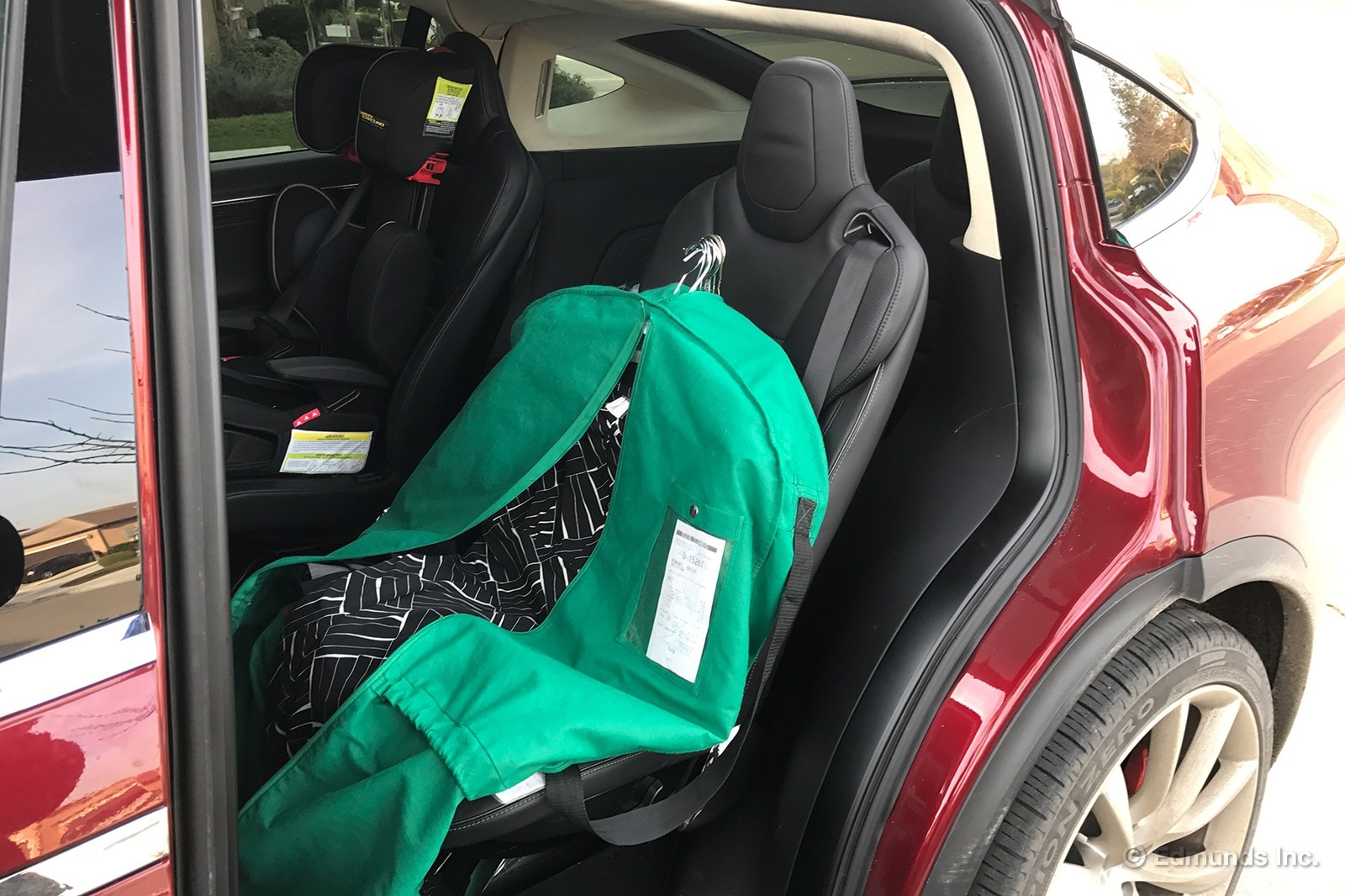
"Add this to the list of impracticalities caused by the falcon wing doors: There's nowhere to hang hangers for dry-cleaned clothes. In a normal car, there would be a hook or grab handle to use, but both are missing in the Model X. There's nothing behind the front- or second-row seats, either." — Brent Romans
Miscellaneous
"I will say this: The falcon wing doors are great entertainment and provide a sense of 'cool' that few other vehicles have. Example: I picked up my 'temporary' teenage daughter (foreign exchange student from France) from her high-school swim practice today. I pulled up to the building's entrance where a number of girls were milling around waiting to get picked up. As the door powered upward, the girls burst out with 'whoa!' and 'I'm flippin'!' I could have been David Copperfield conjuring Zac Efron from a top hat and not gotten a bigger reaction." — Brent Romans
"As was the case with our long-term Tesla Model S, I'm able to easily recharge our Model X at my house even though I don't have Tesla's High Power Wall Connector or a typical Level 2 home charger. My garage has a four-prong, 240-volt NEMA 14-50 power outlet. All I have to do is connect the proper adapter to the Model X's charger cord and plug in. It's a respectably quick charge, too." — Brent Romans
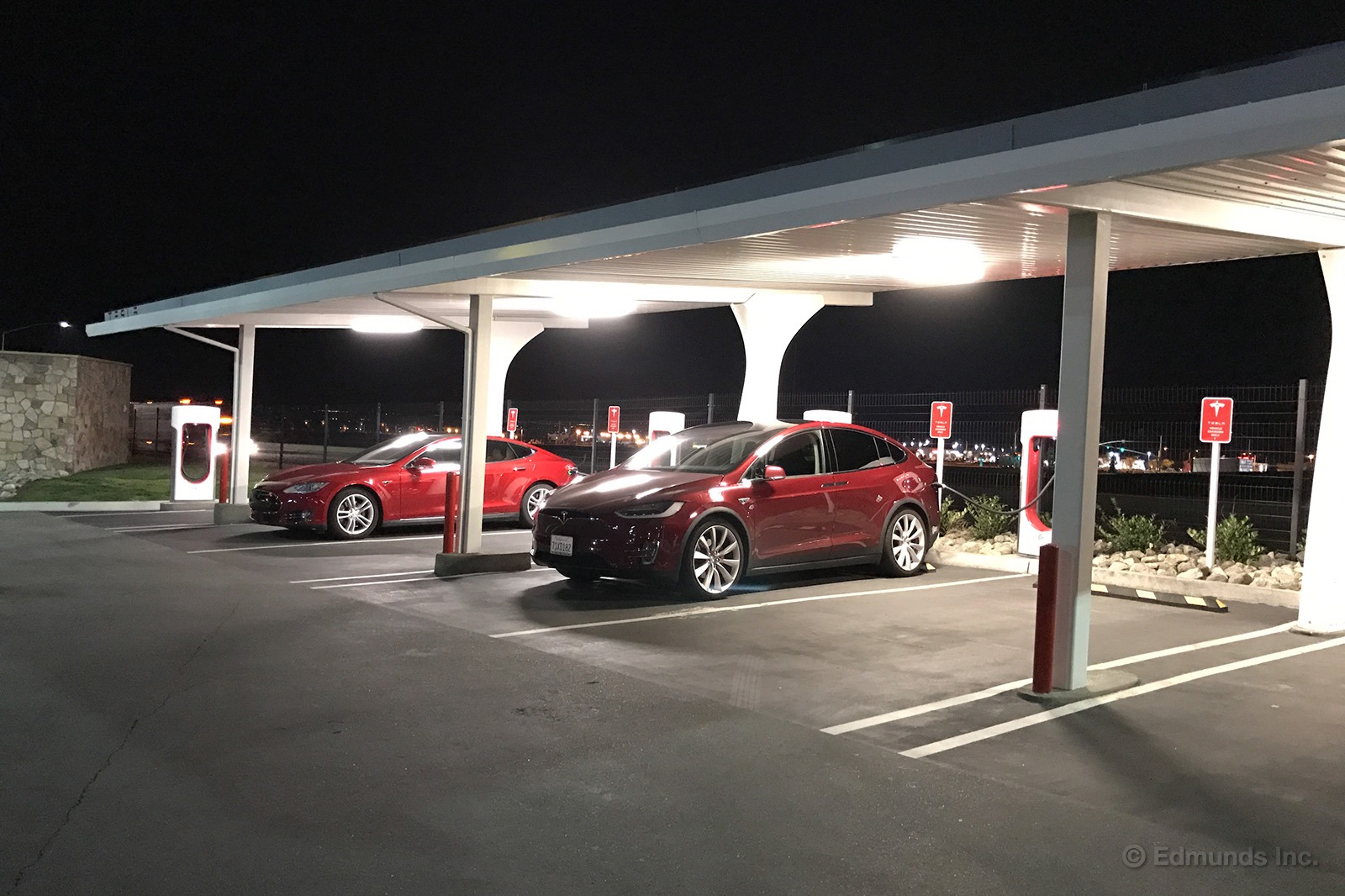
Taking a Family of 5 to Yosemite in the Winter
With all the storms we've had this winter, I've been itching to head up to Yosemite National Park and check out the waterfalls. A weekend in late January looked promising, and at the time I also had our long-term 2016 Tesla Model X signed out. I figured it'd be interesting to see how Tesla's three-row crossover would handle a day trip with my family of five.
Well, it was certainly interesting, though part of that was due to under-preparation and overconfidence on my part.
I left Fresno from the city's only Supercharger station, which is about 95 miles south of the park's main valley floor. I had a full charge (an indicated 240 miles). In theory, our Model X P90D could make the round trip without recharging, but going to Yosemite involves highway driving and big elevation changes. I researched Tesla's Supercharger map and found a charging station in Fish Camp, which is about the halfway point.
As we (my wife, our two young kids and our teenage foreign-exchange student) got closer to Fish Camp, I started seeing accumulated snow on the ground. My kids were excited about the snow. By the time we made it to Fish Camp, the long climb in elevation (5,288 feet) had taken its toll on the battery. After just 61 miles, the battery life indicator had dropped to about 50 percent capacity.
This is where the lack of preparation comes in. I hadn't bothered to find out where in Fish Camp the Supercharger station actually was, but the Model X's onboard nav system contains that information and directed us to a parking lot at Tenaya Lodge, a local resort. So far, so good. But my stress level shot up as we approached the lodge. The parking lots had been plowed after the recent snowfall, creating big mounds of snow along the outer edges. Uh oh. Typically, Tesla positions its chargers on the edges of parking lots, and you back into a charging spot to hook up.
I was worried that the snowplows had covered up the charging stations. It's not like Joe the plow operator was thinking, "Oh gosh, we better clear all the snow in front of these Superchargers for the hordes of Tesla drivers coming up to Yosemite in the middle of winter!" Without a Supercharger, my Yosemite trip would fall apart.
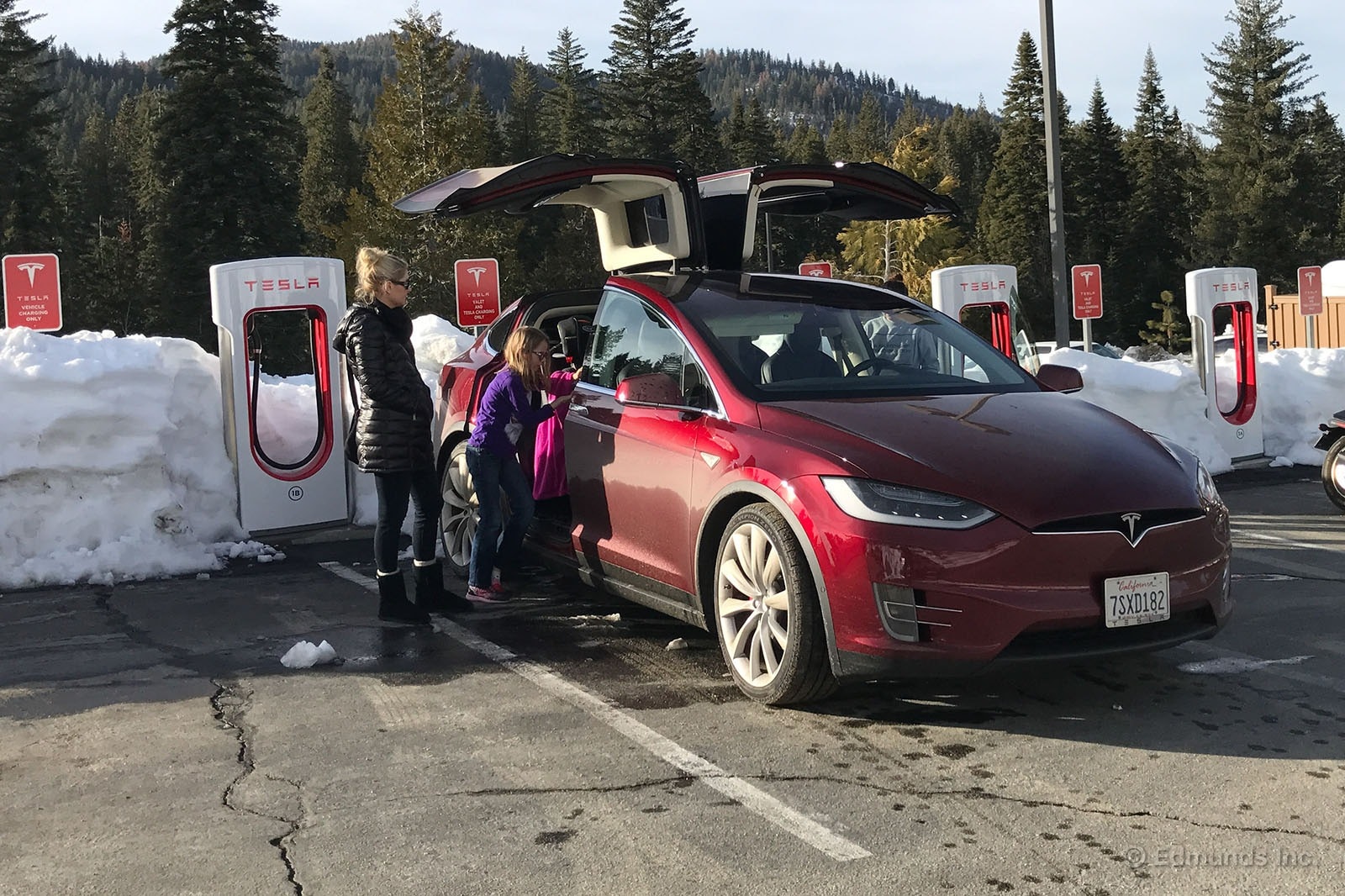
Thankfully, Tenaya Lodge had cleared the snow in front of the chargers. That was a big relief for me as we pulled up. I plugged in as my family took a bathroom break.
Now for the remaining drive into the park. I thought I was in the clear after the Supercharger episode. Wrong. Next up: snow and ice.
I knew that Highway 41, the road we were on, was going to have a chain-carry requirement at a certain point. It means you're supposed to have chains with you in case the conditions worsen. Usually snow tires are acceptable, too.
I had neither.
The massive 22-inch wheels on our Model P90X Signature are fitted with wide, low-profile Pirelli Zero Asimmetrico tires. Pirelli describes them as a "ultimate all-season" tire. The tread pattern looks very much like one from a summer-rated tire. According to the owner's manual, only the Model X's smaller 20-inch wheels are suitable for chains.
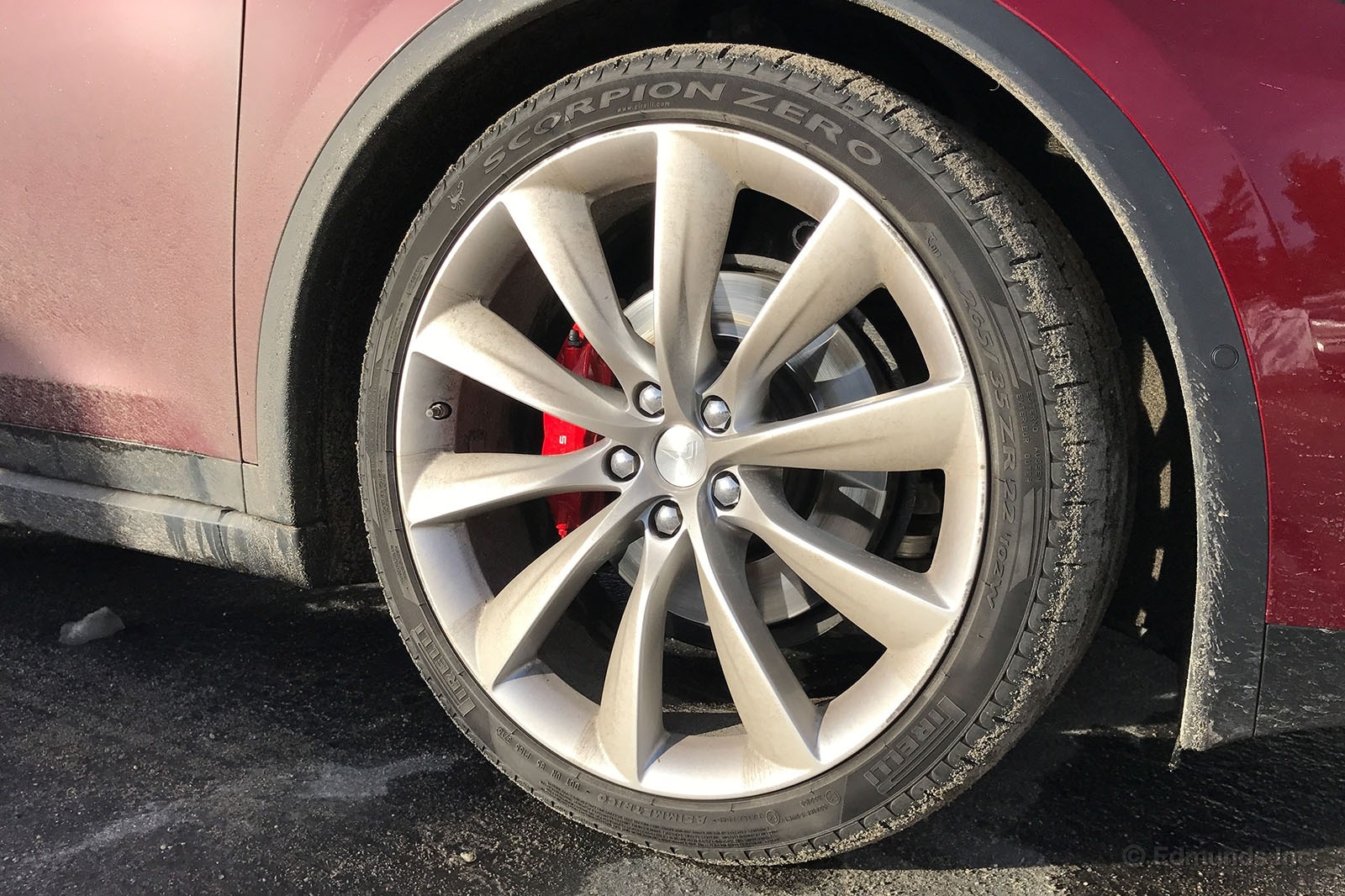
As we climbed higher into the mountains, I started encountering more patches of snow and ice. The outside air temperature hovered in the high 30s. Some motorists were pulling over to put chains on. I soothed myself with the knowledge that I had driven to Yosemite before in the winter. Also, I grew up in Denver, darn it. I know a thing or two about snow and ice.
My plan was to drive very cautiously on those patches. As you can infer from the photos and my continued employment here at Edmunds, it worked! We made it to Yosemite Valley and back. But I'll admit that my stress level was higher than I'd like.
Setting aside the Supercharger anxiety and the whole snow-and-ice thing, the Model X was great. The panoramic "receding hairline" windshield that we've previously complained about was ideal on this drive, providing a convertible-esque view of the snow, trees and mountains.
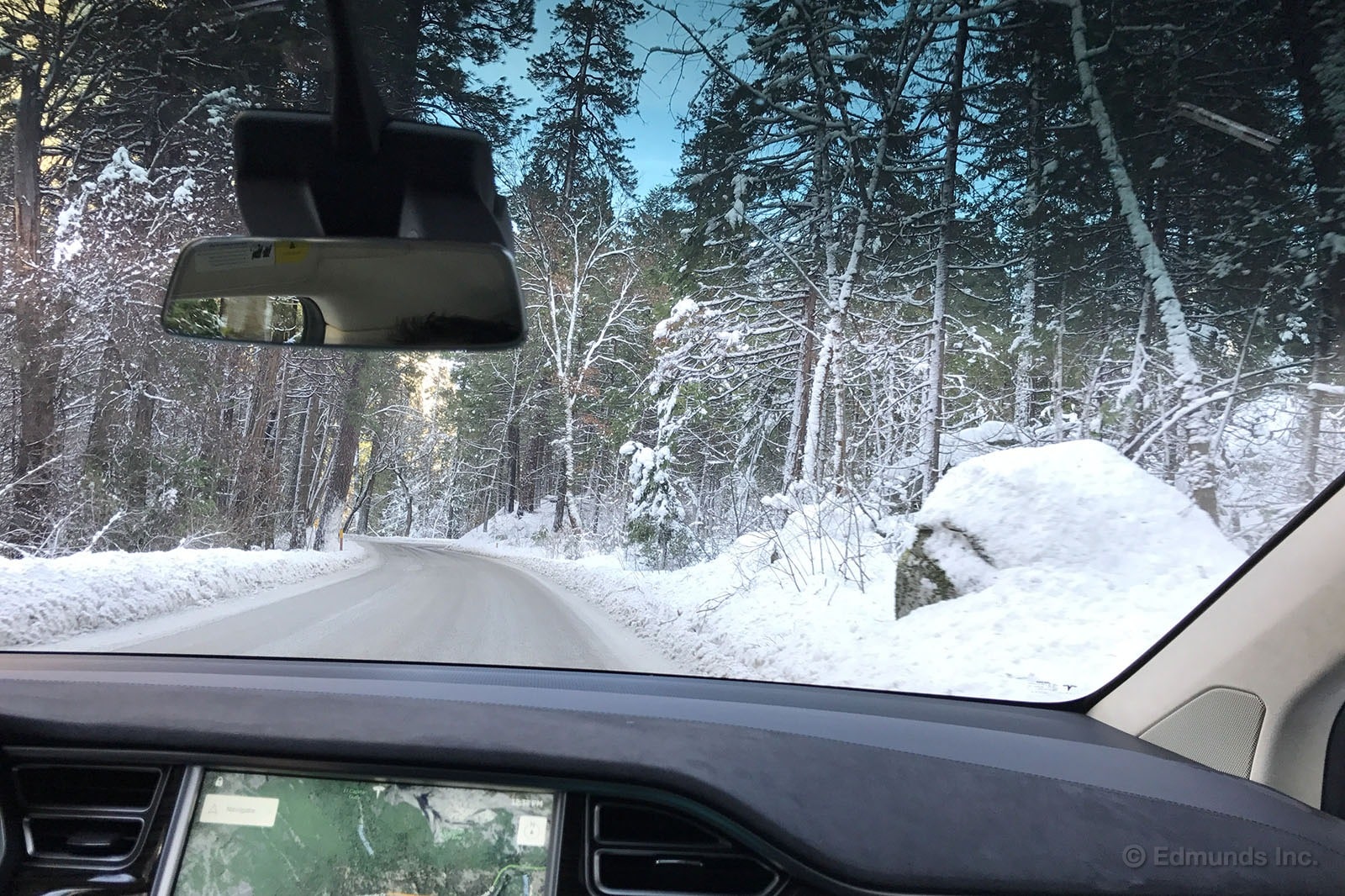
I enjoyed having electric power for my mountain drive, too. Though the Model X rapidly consumed energy on the way up, it was frugal on the return to sea level, often adding electricity back into the battery for long stretches. And unlike a non-turbocharged gasoline-powered vehicle, an electric vehicle is just as powerful at 5,000 feet or 15,000 feet as it is at sea level. Finally, the Model X's strong regenerative braking was ideal for driving smoothly on twisty mountain roads. I rarely had to use the brake pedal.
My family liked the Model X, too. Everyone was comfortable thanks to the three rows of heated seats. The falcon wing doors were, yes, popular. And though I wasn't fond of the access to the third row because of the slow-moving power second-row seats, that was more of an annoyance for me than my 5-year-old son.
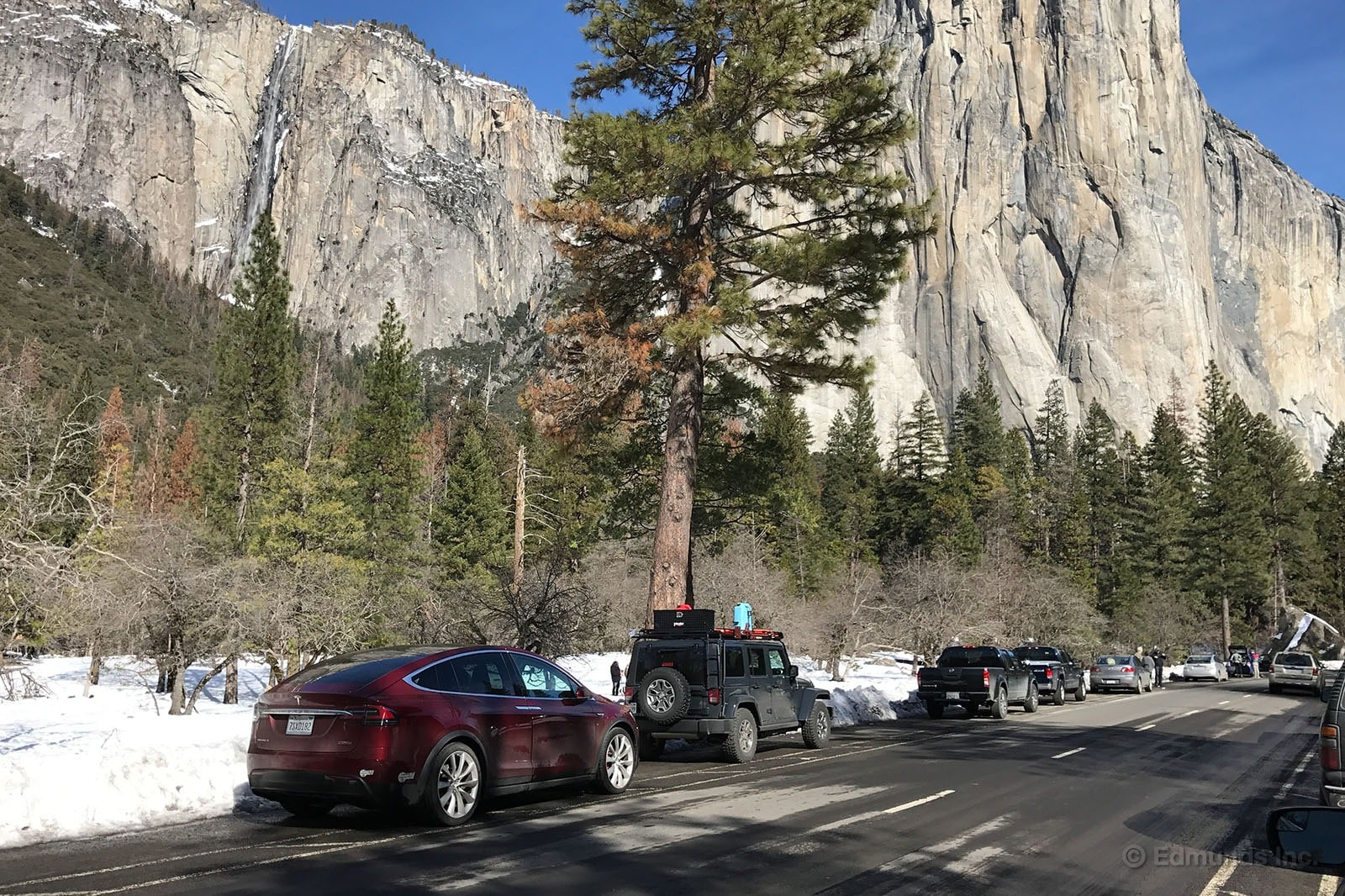
Driving any other crossover SUV on this trip would have likely been less stressful (on me), but it also wouldn't have been as special. That's part of the appeal to the Model X, I think. So many crossovers are the same, even at the luxury end of the spectrum. Having the Model X to drive made the weekend that much more memorable.
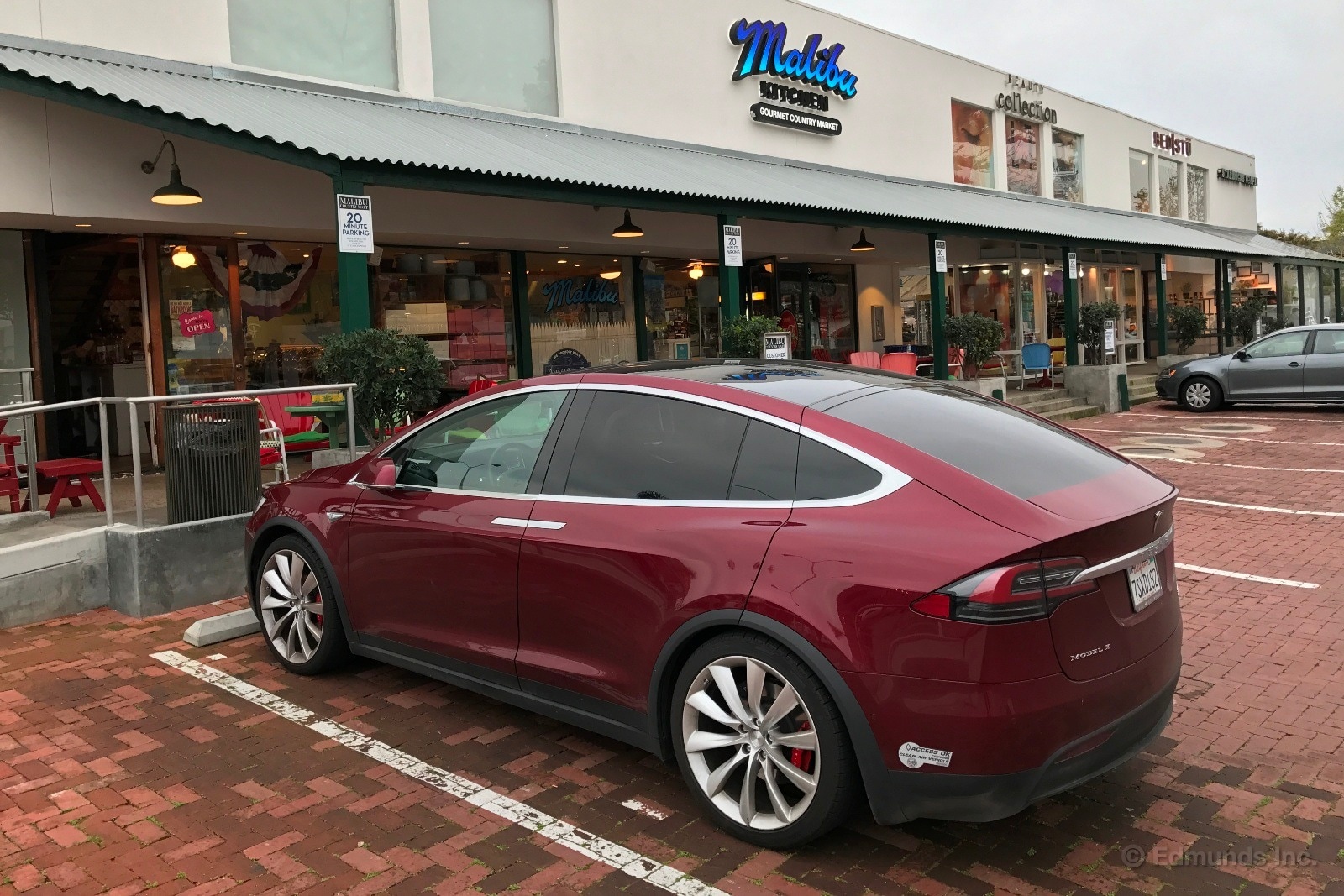
Where Did We Drive It?
The miles we put on our long-term 2016 Tesla Model X this month ended up highlighting some of its faults. SUVs are generally known for their squishy rides and flexible interior space, but the Model X suffers from the exact opposite. Also, the creaks and groans remain, as does the vibration upon acceleration.
After Editor Brent Romans' trip to Yosemite, our X primarily kicked around town on local trips, but we were able to stretch its legs on the highway, too. We're past the 15,000-mile mark now and the honeymoon phase is definitely over as the joys of instant torque and that massive touchscreen are getting overshadowed by everyday life.
Maintenance and Upkeep
None performed. We still need to replace the charge-port door, as the car keeps reminding us.
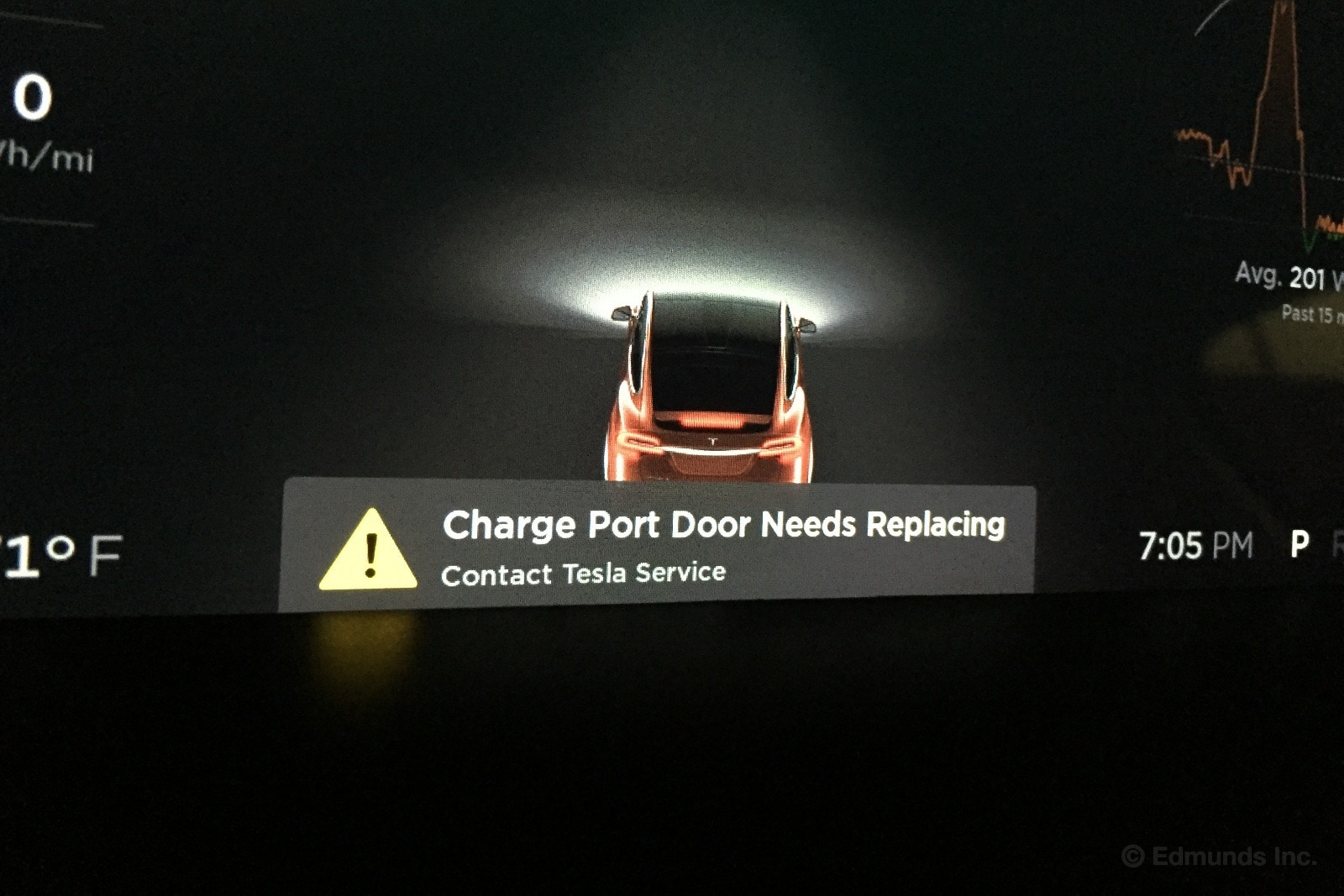
Logbook Highlights
Performance
"There's a drivetrain vibration that's particularly noticeable during hard acceleration when cornering. It's somewhat less prominent when accelerating hard in a straight line. The vibration is acceleration rate-dependent, not speed-dependent." — Jay Kavanagh, Engineering Editor
"Separate from all the hubbub about Autopilot is the Model X's basic adaptive cruise control. It works great in my opinion. It smoothly slows down and speeds up based on traffic and is effective at keeping gap distances. I also like how if you're stuck behind a vehicle on the highway that's going slower than your set speed, the Model X immediately starts to speed up when you click on your turn signal to pull out for the lane change/pass. It's as if the system is saying, 'Yeah, I know my sensor says you're still behind somebody, but I know we're going to pass him so I'm gonna start speeding up now anyway.' Just like you'd make a highway pass yourself." — Brent Romans, Senior Automotive Editor
Audio & Technology
"Our P90D came standard with the 17-speaker Ultra High Fidelity Sound audio system. I don't know what the base system sounds like, but this one's impressive. Music sounds balanced and accurate, with nice separation and staging. I'm not a crank-it-super-loud kind of person, but I did notice I had the volume up fairly high a lot of times. I wonder if it cranks up high enough for some people, even though you can turn up the volume to 11? Nevertheless, I've enjoyed listening to my music in the Model X. It's likely worth getting as an option on lesser Model Xs considering the reasonable price." — Brent Romans
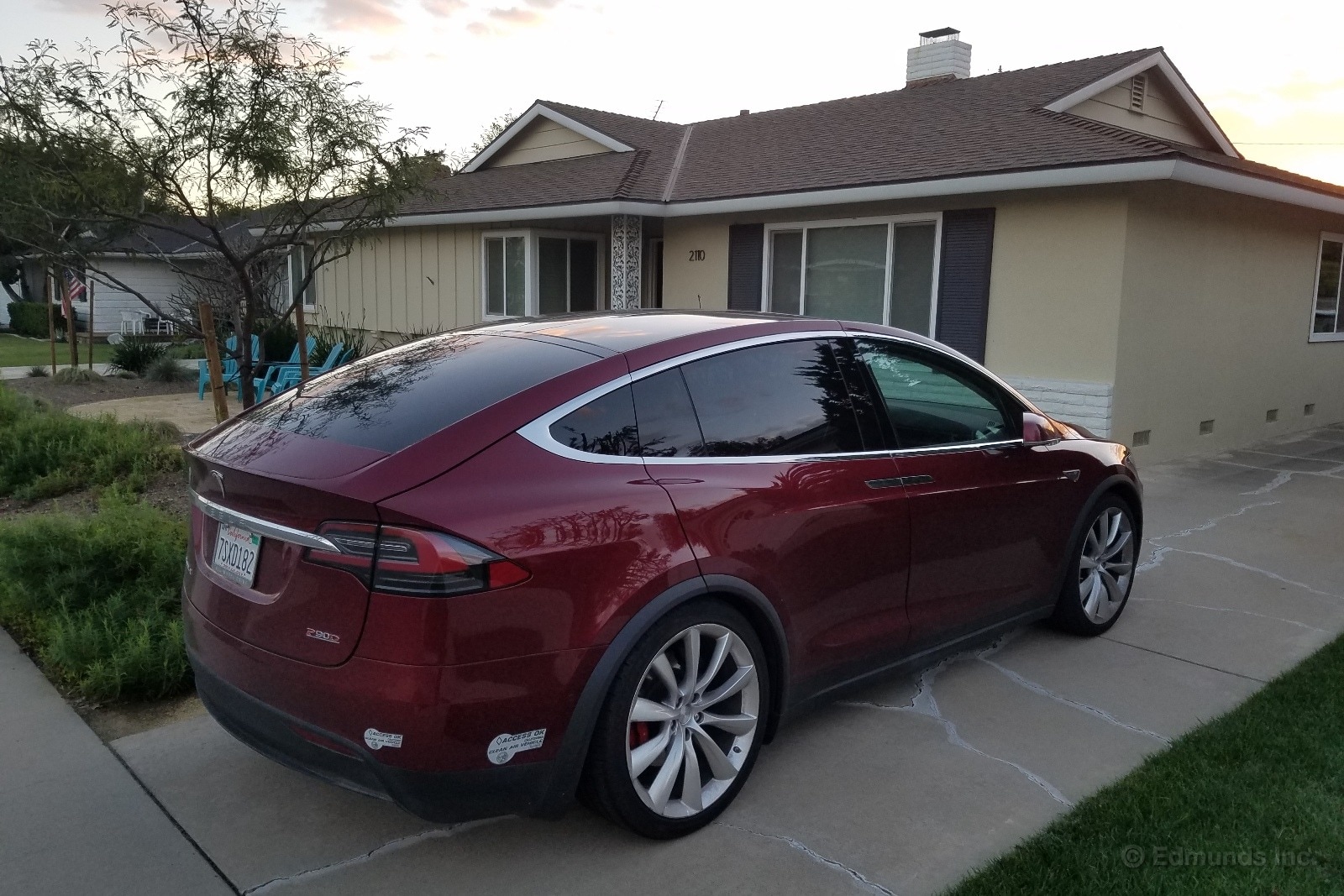
Interior
"I have mixed feelings about our Model X's interior. I do admire the simplicity of the dashboard design. There's just one button, which opens the glovebox. Everything else is controlled by the touchscreen. On the downside, though — and this is true of the Model S, which has the same general design — it's not richly finished enough for me, given the six-figure price tag. Even though our Signature trim has the upgraded upholstery, there's nothing here that wows me qualitywise. And because there aren't any buttons, I don't get to interact with the car as much. Touching the touchscreen is boring and sterile. Other luxury crossover SUVs provide a more gratifying tactile connection." — Brent Romans
Comfort
"This was my first trip in the Model X, and I have to say ... I don't get it. If I'd spent over a hundred grand on this car, I'd be feeling cheated. Yes, I appreciated the impressive and useful gauge cluster, and the tabletlike center console made finding a Leonard Cohen streaming station easy and intuitive. I also appreciated the excellent adaptive cruise control and the trick front doors. On the other hand, the driver seat proved uncomfortable for my 6-foot (and, charitably, broad-shouldered) frame, pushing my shoulders forward awkwardly no matter how I adjusted it. Tire noise was surprisingly noticeable, and the suspension let me feel every imperfection in the road surface." — Will Kaufman, Associate Editor
Miscellaneous
"Opened the albatross-wing side door and it proceeded to bang itself against the overhead air duct in the Edmunds parking garage. Fortunately I have no faith in these doors' ability to do anything correctly — I was watching it like a hawk at the time and immediately leaned on the door to arrest it before any real damage was incurred. Even in this position, the door opening barely allowed any access into the vehicle. Seems like every time I use these doors I'm reminded anew of their limitations." — Jay Kavanagh
Monthly Update for March 2017
Where Did We Drive It?
Our long-term 2016 Tesla Model X has been with us for nearly a full year, which customarily means we'd be running out of things to say about it. That is largely true for the month of March, especially when the bulk of the driving was limited to everyday commuting. No epic trips to Yosemite or record-setting cross-country sprints this time around.
Maintenance and Upkeep
At the moment this entry is being written, the Tesla has just gone in for service, so keep an eye out for a separate post soon. It may mean the end of "Sad Beaker."
Logbook Highlights
Performance
"I personally have driven many fast cars, and even with this background, found myself gasping for air as the trees became a blur as I charged along my neighborhood streets." — Edmunds Staffer
Interior
"My hand instinctively went up to grab for the sun visor above my head when driving the Model X west into a glaringly bright sunset one night. Whoops. With the Tesla's giant panoramic windshield, there's no place for the usual visor. But I quickly found one to my left on the front roof pillar; it swings out. As you'll see from the photo, the sun was still pretty blinding even with it deployed, but maybe that's a SoCal-only issue." — Kathleen Clonts, Copy Chief
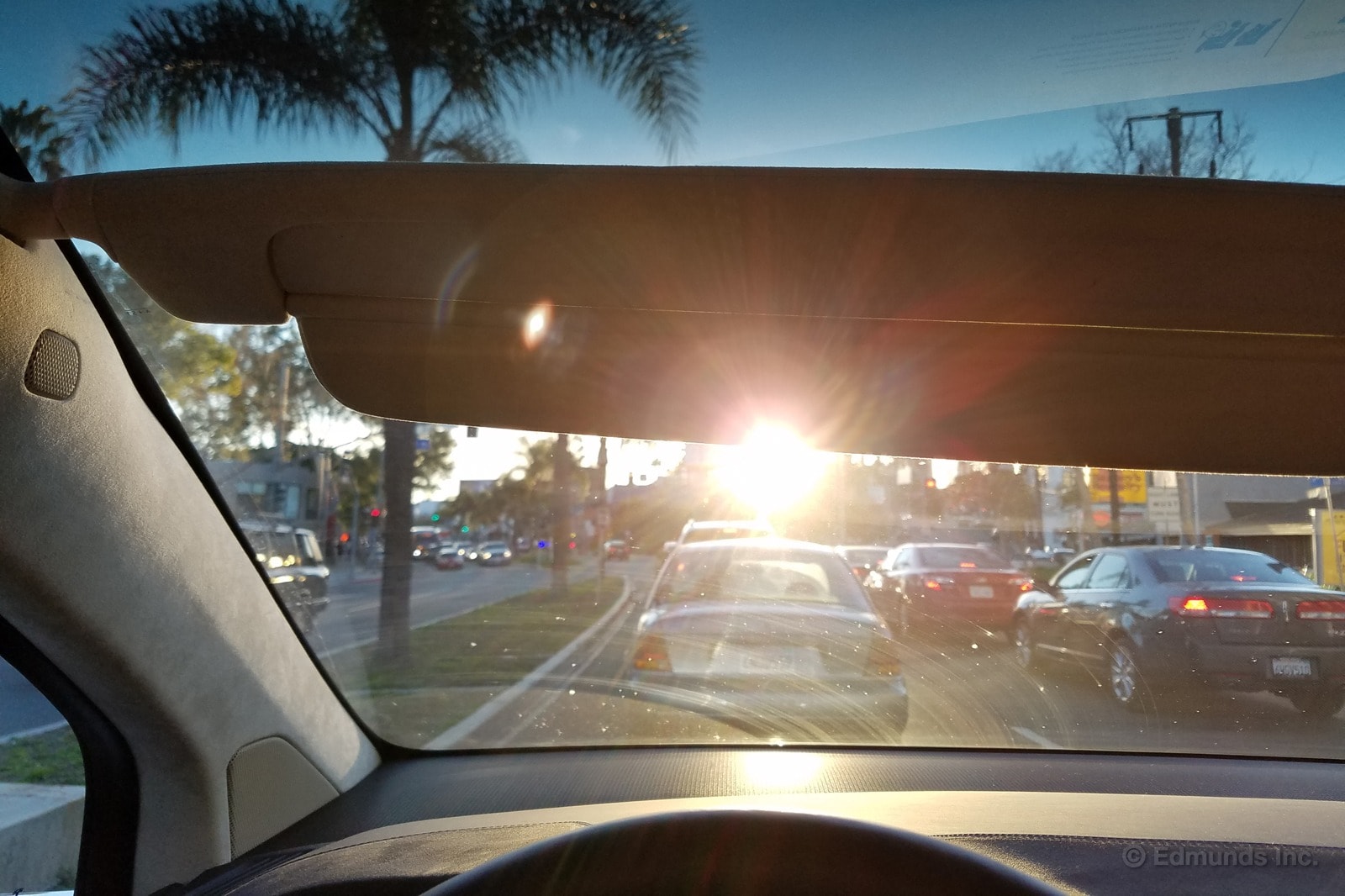
"Shortly after being bugged by the squeaking power window, I noticed that the graining on this panel to the left of the Tesla's steering wheel is slightly askew. The companion panel on the right looks perfectly horizontal. If you're going to spend this much on a car, you expect the details to be just right." — Kathleen Clonts

Maintenance
"I just walked down to the Tesla, charging in our parking garage. When I touched the charge cord, it was not just hot to the touch but it was so hot I couldn't hold it for any length of time. I think we have a problem." — Mike Schmidt, Senior Manager of Vehicle Testing
"Overall the car is big. When I took the time to hand-wash the car, I realized how wide and tall it is. I literally had to get a stepladder and stretch as I washed each side of the car. Obviously, the width of the car gives it an airy and roomy feeling.... The last complaint of the car is something minor but personally drove me nuts — the spoiler. The rear spoiler only retracts when the car is locked. You may ask, 'So who cares?' I do! The reason is that unless you have a hand car wash near you, you will have to wash the car yourself. Don't get me wrong; I actually find that washing a car allows you to really connect with the car, but not having the option to take it to your everyday car wash with machines is a pain in the butt." — Edmunds Staffer
Monthly Update for April 2017
Where Did We Drive It?
Our 2016 Tesla Model X had a busy month despite not traveling very far.
April opened with the car at our local Tesla shop to remedy a list of nagging concerns, including one that caused us to drop everything and drive straight to the service center. With a clean bill of health it returned to commuter duty. Just as the month was closing we had an opportunity to display the Model X at two impromptu car shows, where the SUV showed it still has a wow factor.
What Kind of Fuel Economy Did It Get?
The Model X traveled a total of 935 miles in the month of April. Of those, we recorded nine charges at our metered Tesla high-power wall charger, totaling 223.4 kWh of electricity. That was enough to take us 600 miles and equated to 37.2 kWh/100 miles. For the month we were a shade better than the EPA-estimated 38 kWh/100 miles for the P90D.
Two charges at nearby Tesla Superchargers accounted for the remaining 335 miles this month. Unfortunately we cannot track the amount of electricity ingested at those stations.
Maintenance and Upkeep
Our Tesla went to service twice this month. Tesla service centers all fall under the corporate umbrella, so the experience is supposed to be the same across the board. But April really opened our eyes to how different they can be. Three persistent items needed repair and one urgent matter required immediate attention. Below is a summary of the work performed.
First was a "Replace Charge Port Door" warning. It still opened and closed to allow charging, so this wasn't a priority initially. The door was replaced.
Second on our list was a rubbing noise caused when the passenger-side falcon door opened and closed. Additional lubrication was applied to both rear doors. That seemed to fix it.
Third was a groan coming from the steering wheel, especially evident at low speeds and when parking. It was a difficult sound to describe, almost like the Model X was crying. This problem required a return to the dealer (our second service visit) since the groan was back by the time we reached our office just a few miles away. Cleaning and lubricating the bash plate mating points quieted the noise for good.
Our fourth concern, unlike the four above, was an immediate priority. We walked out to the Tesla and grabbed the cord to unplug it. The cord was scalding to the touch. It wasn't then known whether the problem was with our charger or the car, but we needed to find out right away. As it turned out, it was our charger, and a new cord and fresh fuses did the trick.
Firmware updates were performed while the car was at the dealer, and all repairs were covered under warranty, including the wall charger.
Logbook Highlights
Maintenance
"I just walked down to the Tesla, charging in our parking garage. When I touched the charge cord it was not just hot to the touch, but it was so hot I couldn't hold it for any length of time. I think we have a problem." — Mike Schmidt, senior manager vehicle testing
Comfort
"Backing out of my driveway, not particularly steep by any means, the Tesla rear suspension just bottoms out. I assume that's partly due to dumb diameter wheels and lack of what the civilized world would define as 'sidewall,' but also crummy suspension and shocks.
"Among the Teslarati, the company gets a pass on this kind of thing. And hey, I like Tesla's story of American innovation — by way of a South African emigre no less — as much as the next guy. But at some point, you have to make a real car, not a gadget car. A car that doesn't bottom out when backing out of a normal driveway.
"I'll wager that Elon Musk sells the company before making his cars more drivable. Let someone else (GM? Toyota?) handle that." — Dan Frio, automotive editor
Interior
"I can't install my child seat in the second-row captain's chairs of our Model X. The tether that fits over top is the issue. First, the strap barely reaches down to the LATCH point at the base of the seat because the seatback is so tall. Some other car seats have long enough straps to reach, however, so results may vary. Second, the smooth, flowing shoulders of the seat don't give much of a surface to tighten the tether against. Combined, these two features make me uncomfortable using my child seat in the second row." — Mike Schmidt

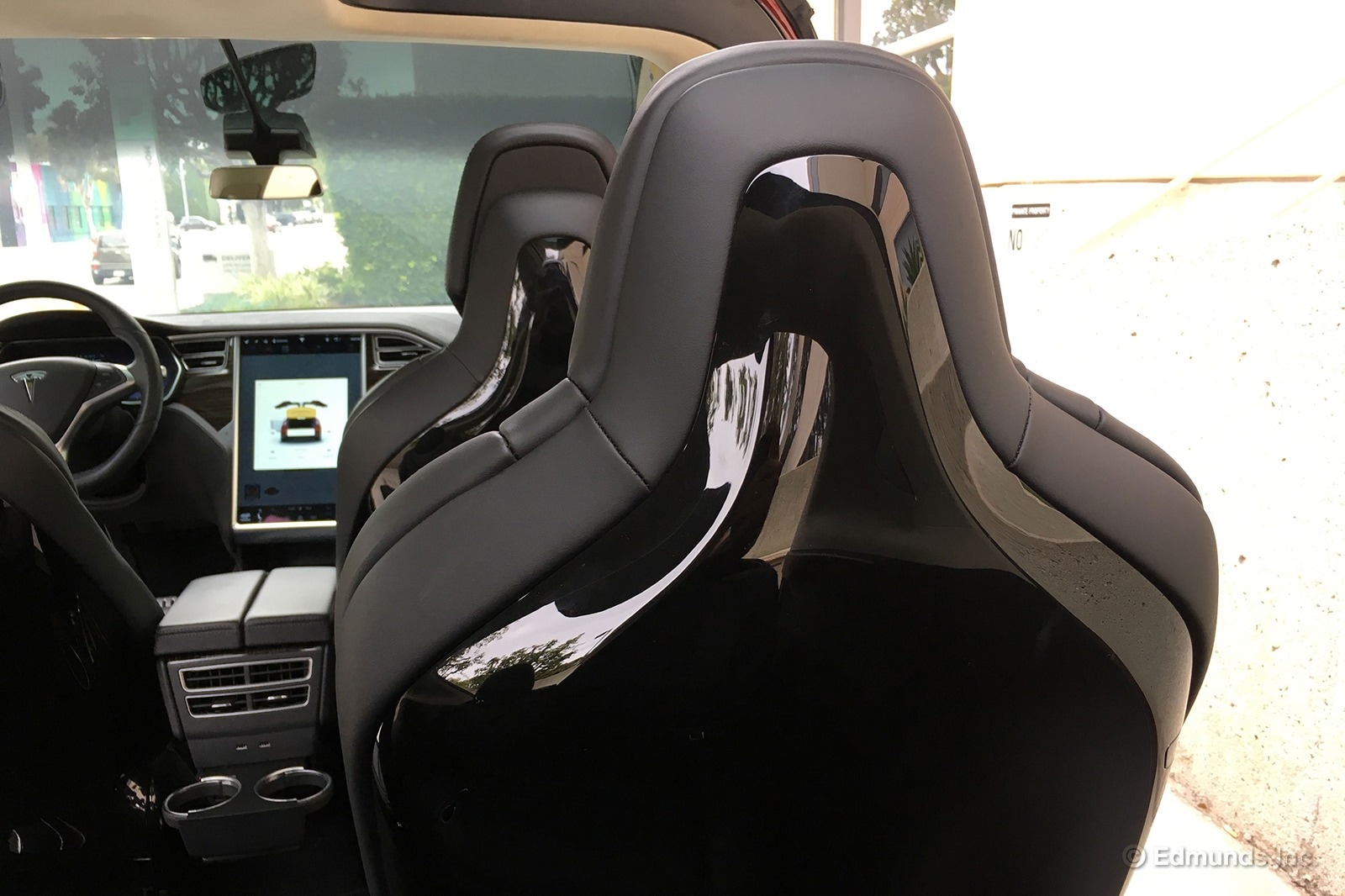
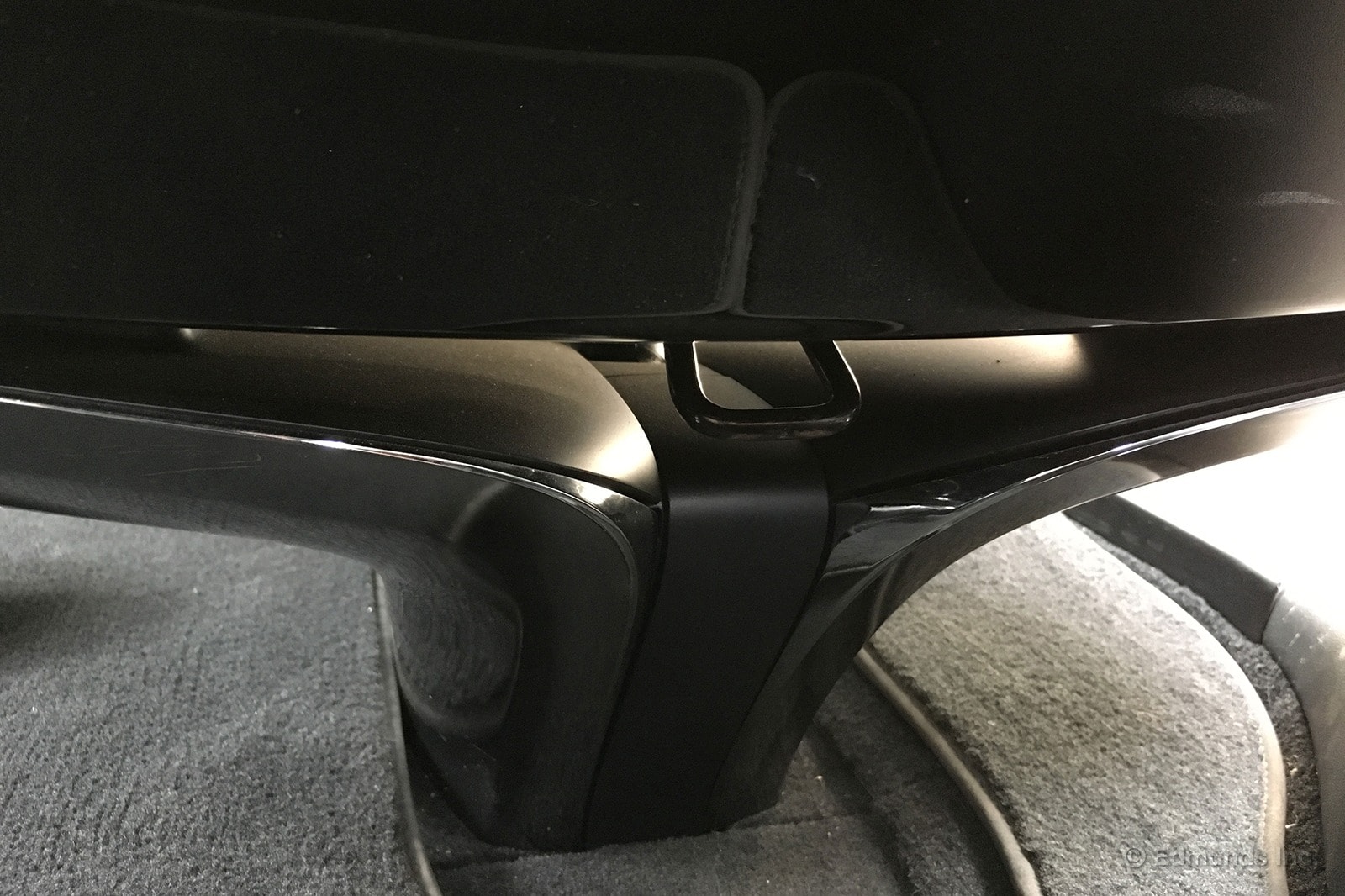
Miscellaneous
"We hosted mini car shows in the Edmunds garage for a group of fifth-graders yesterday and 11th-graders today. The Model X has such a flamboyant presence with its rear falcon doors open that the kids, and teachers, flocked to see it first." — Michael Massey, vehicle testing assistant
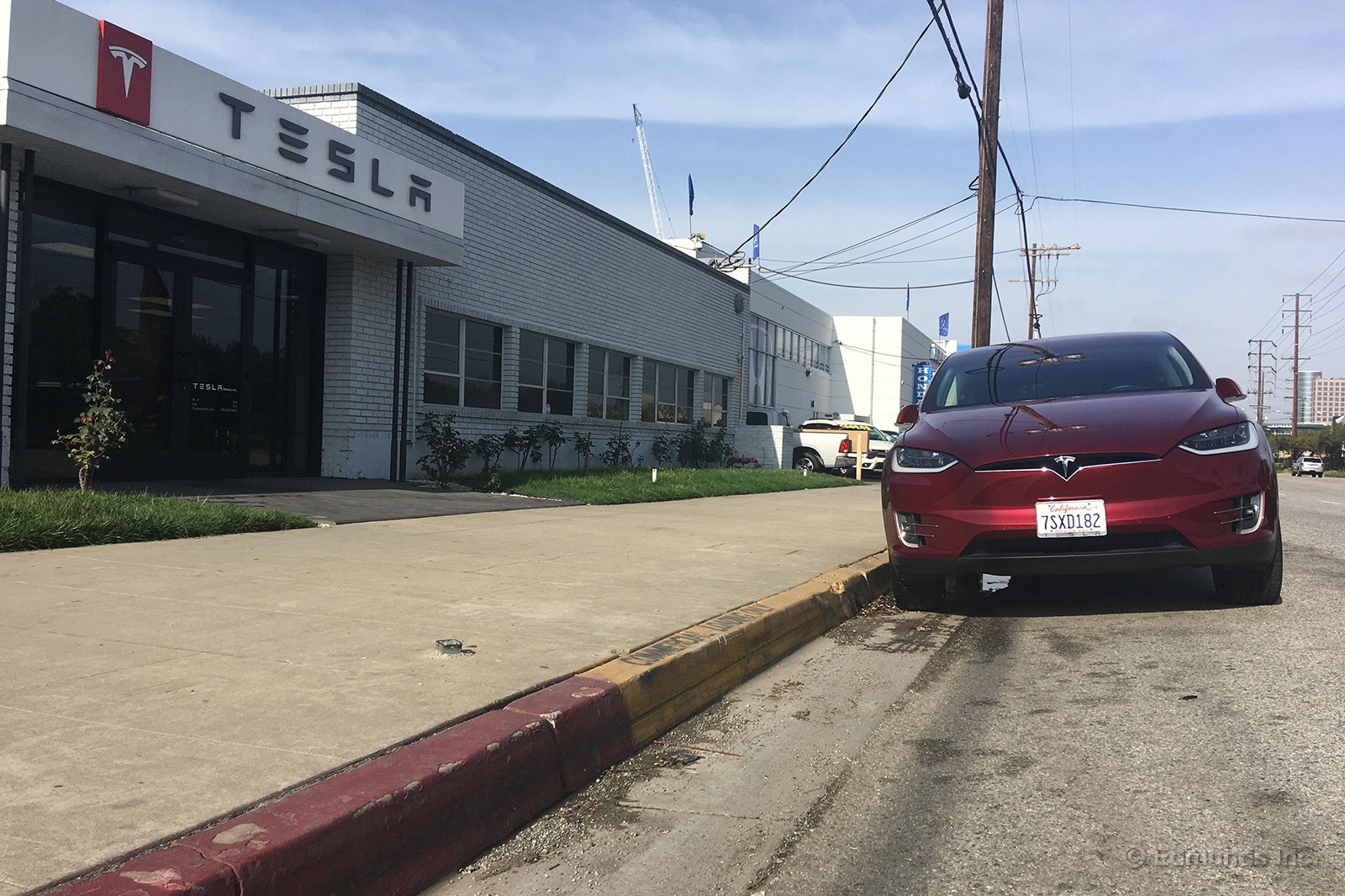
Mike Schmidt, senior manager of vehicle testing, and I were in the Edmunds garage discussing a "replace charge port" message on our long-term 2016 Tesla Model X. The port door would operate properly after multiple attempts, but not always on the first try. Our Model X was charging as we walked up to it, so I reached out to unplug it and found the cord alarmingly hot to the touch. That was the final straw; something was clearly wrong. With that in mind, I headed to our nearest Tesla service center.
Upon exiting the car, I was greeted with a smile and friendly hello from a porter at the West Los Angeles Tesla service center. I met with an adviser, listed our issues and emphasized our dire charging cable situation. I even expressed concern that I feared the cable might cause a fire. She acted empathetic and receptive to my concerns. Then she told me, "Without an appointment the best I can do is schedule you for service two weeks from now. We are just too busy."
In reaction to the now-defeated look on my face, she added, "The hot cable could be due to a charging station fault." It was a fair point that we had considered. Since the charging station in our garage was Tesla-branded, I asked if the dealer offered a service to troubleshoot it. She said, "I recommend that you hire an electrician."
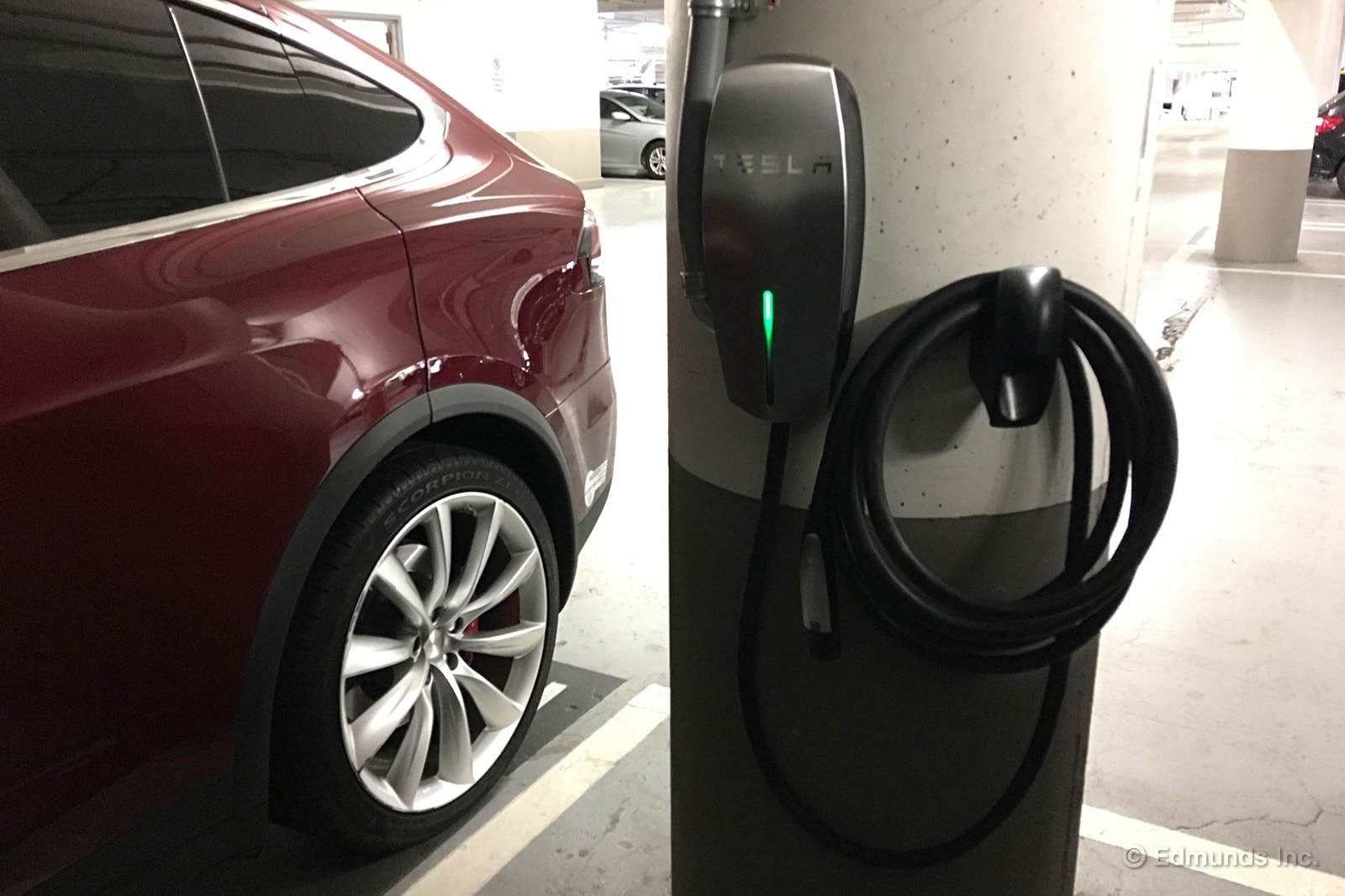
Further efforts here seemed futile. That was until my adviser asked the concierge to check a neighboring Tesla store for availability. "We can deliver your car to the other location and call Uber to take you where you need to go," she offered. But I declined, wanting to drive there myself. With one more parting apology, she sent me on my way.
As before, I was immediately greeted by a porter at the other location, which is 8 miles south in Westchester. "The service center is on lunch from 12-1 p.m., but I will try to find someone to help you." It was about 12:30 p.m., and despite my frustration so far, I didn't mind waiting. Moments later the porter was back at the Model X, checking it in.
Enter Mr. Karim Khan. Normally, I wouldn't call out an adviser by name but this is a necessary mention. Karim greeted me with a warm smile and apologized for the delay while the shop was on break. He noted my concerns, located the shop foreman and sent him with me on a ride-along to reproduce the issues we experienced. In minutes my expectations swung from a 30-minute wait to driving in the car with the foreman.
The items on our checklist were as follows:
1. Check charge port door warning
2. Passenger-side falcon door makes a rubbing sound
3. Steering wheel makes groaning noise when turning
Back at the shop, I asked Karim about our charging station options. "I will schedule a ranger out to take a look," he offered. We learned that rangers are Tesla-employed electricians who handle remote inspections for customers. Karim told me to text or call him with questions and assured me he would be in touch with updates as soon as possible. I left in an Uber with a pretty good feeling about the whole experience. I even received a call from Karim later that day confirming our charging station was still under warranty.
The ranger showed up on time and changed out the cable and fuses in about 25 minutes. Once he was done, I signed a no-charge work order. He also gave me his cellphone number and insisted that I call him immediately if there were any issues with the wall charger and he would come back.
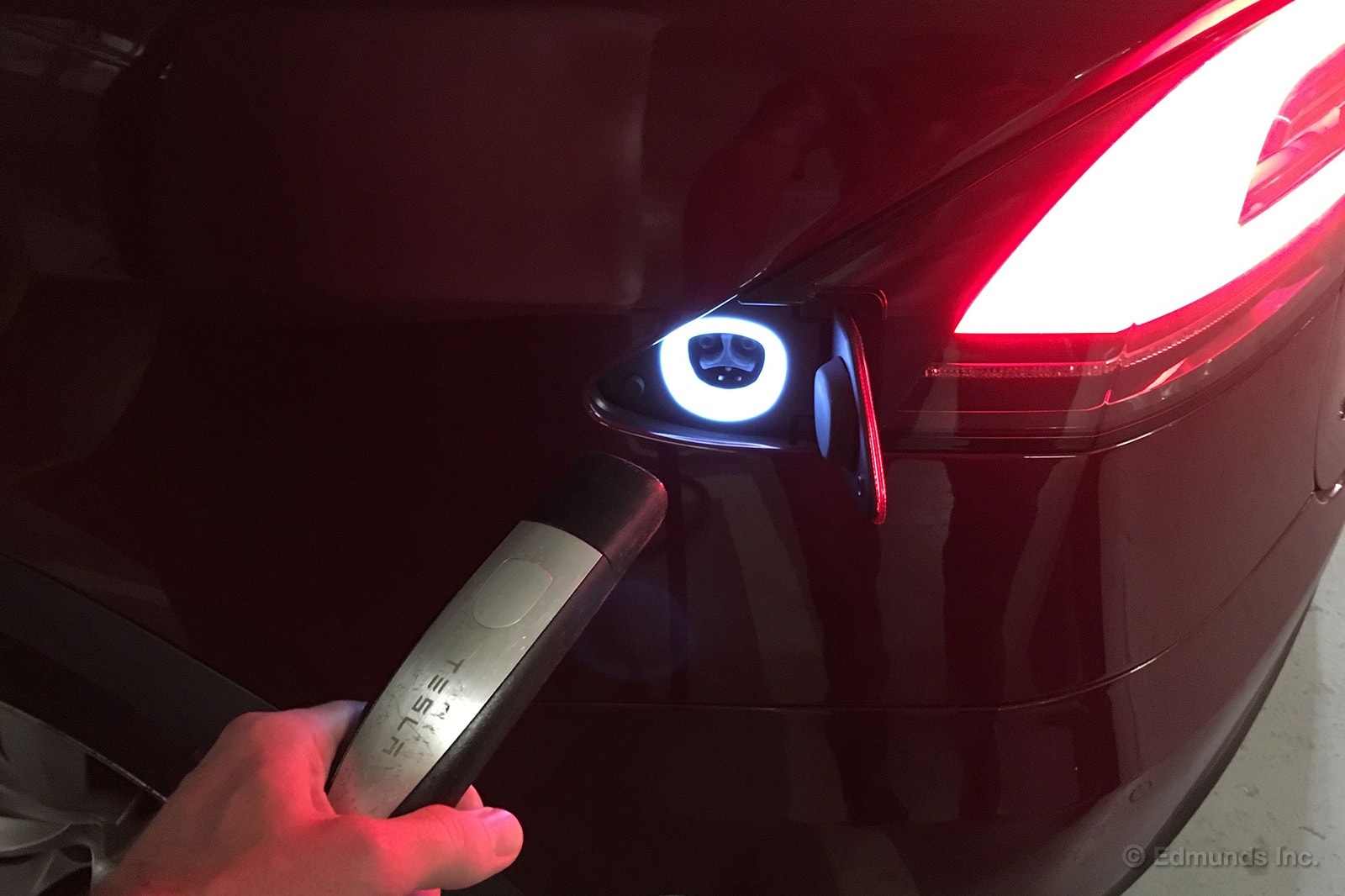
Karim texted me again the day the ranger was at our office. He updated me on the car's progress and he asked how the ranger visit went. Every communication with Karim made me feel like I was his only customer and I was never without pertinent information about our vehicle. I trusted things were getting done.
When I returned to the service center to pick up the vehicle, we went over the list of items that were resolved. Some were even fixed without us mentioning them:
1. Replaced front door latches
2. Replaced charge port door
3. Lubricated and separated trim pieces for both falcon doors to eliminate rubbing sound
4. Cleaned and lubricated mating points of bash plate, which caused the steering wheel groaning sound
5. Full courtesy inspection, which included firmware updates
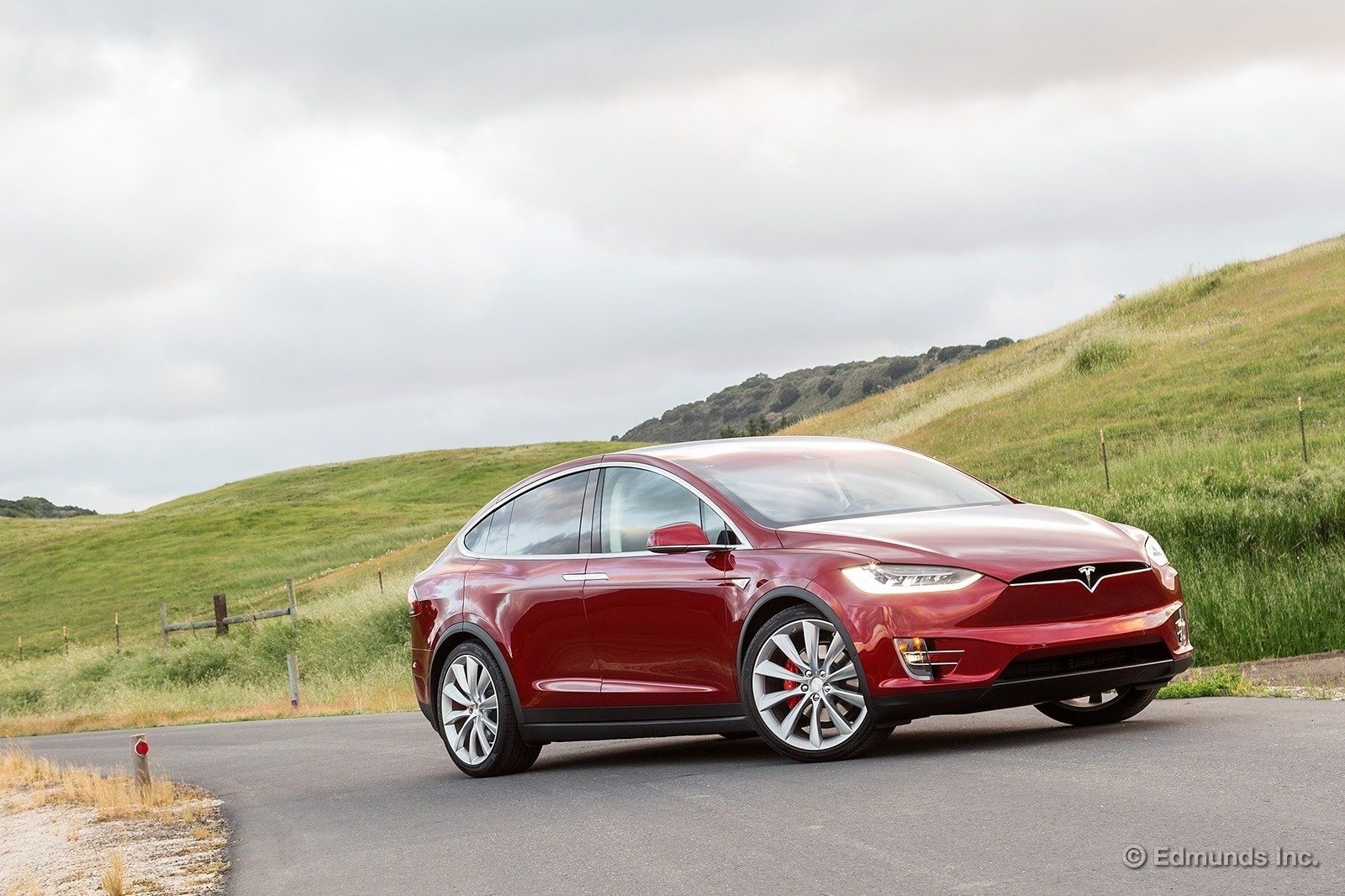
I drove the Tesla back to our offices feeling great about the three-day turnaround time, though it was longer than expected. As I pulled into the garage and maneuvered the Model X into its space next to the charge cable, the steering wheel groaned. I checked before leaving Tesla and it wasn't there, but here it was again. I called Karim and we decided to take it back the next morning.
Upon arriving at Tesla, I was met with a barrage of apologies and promises to immediately fix the issue. The technician who did the majority of the work on our vehicle even came out and apologized. There seemed to be genuine empathy for me having to make a return trip.
This experience painted a great picture of the differences between the two service centers. Even though I was disappointed by the West L.A. store, I see this as less of a negative experience there and more a highlight of the Westchester location. I can't imagine any service adviser wants to tell a customer the dealer won't get to his or her vehicle for two weeks. But in this case it worked to our advantage. Our car and charging station were fixed. And we found an adviser in Karim that we'll go to from here on out.
Monthly Update for May 2017
Where Did We Drive It?
While certain things like wine, classic cars and mint-condition superhero comic books generally get better with age, our 2016 Tesla Model X is not one of those things. Thank the brutality of city driving, but also maybe a little bit of excessive function creep. Problems stemmed from automatic door issues (and not the falcon-wing doors, mind you) and a substantial "sqwuank" noise from the brakes.
What Kind of Fuel Economy Did It Get?
We drove the car 1,180 miles during the month of May and charged it to full 13 times. Most of these trips were short, with 132.9 miles clocking in at the longest distance between charges. As you can see from our "fill" data, careful driving should allow you to just beat Tesla's maximum range figure of 250 miles.
Average lifetime kWh/100: 34.7
Best fill kWh/100: 21.1
Worst fill kWh/100: 71.9
Best observed range: 212.6 miles
Best projected range: 267.6 miles
Average projected range: 156.9 miles
Current odometer: 18,759 miles
Maintenance and Upkeep
We had two repairs this month, one related to the door and the other regarding the brakes. Both visits were planned, and both were repaired for no charge.
Logbook Highlights
Maintenance
"After two editors reported an issue with a door ajar alert, we made an appointment with our preferred service center and took it down there to see if they could help us out. According to the editors, the door ajar alert would beep at you no matter how you closed the door — though there was some success with forcing it closed. After verifying our concern, they completed the repair, a new passenger door latch, the same day. Total cost was nil because it was warranty-covered work. As always, they also performed a complimentary courtesy inspection — despite the Model X being there a month ago." — Michael Massey, vehicle testing assistant
"This is our fourth trip to the service center in one and a half months for the Tesla Model X. This time the suspension and brakes were making some sort of squeaking noise. After duplicating this issue with the Tesla service technician, they decided to replace the rotors and pads for the front and rear brakes. After new brakes all around, the Tesla is noise-free. For now. There was no cost for this, and the work was completed under Tesla's 'goodwill' policy." — Michael Massey
Performance
"Half full doesn't quite feel the same in an EV as it does in a traditional car. I had to drive home last night on my 20-mile commute to work. The Model X's battery indicator was half full, with an estimated range of 103 miles. I drove home, which included climbing a decent-size hill, and the meter indicated 73 miles remaining. In the morning, the estimated range had crept down to 68. I drove back to work, went down the hill this time and ended up with 51 miles of range remaining. It was more than enough to get me to work, but the fluctuating numbers take some getting used to." — Ron Montoya, senior consumer advice editor
Cargo Space
"Has anyone tried using the cellphone slot in the center console? It looks like a neat idea. There's a cubby to hold a phone and a cable at the bottom. I used my girlfriend's iPhone to test it out, but we ran into some issues. Problem one: The cubby is tight, so you have to take the case off your phone. But problem two, The Big One, is with the Lightning cable: It didn't line up with her phone. I wiggled it around a bit but couldn't line it up in a way I felt good about subjecting it to 'ludicrous' acceleration." — Carlos Lago, senior writer
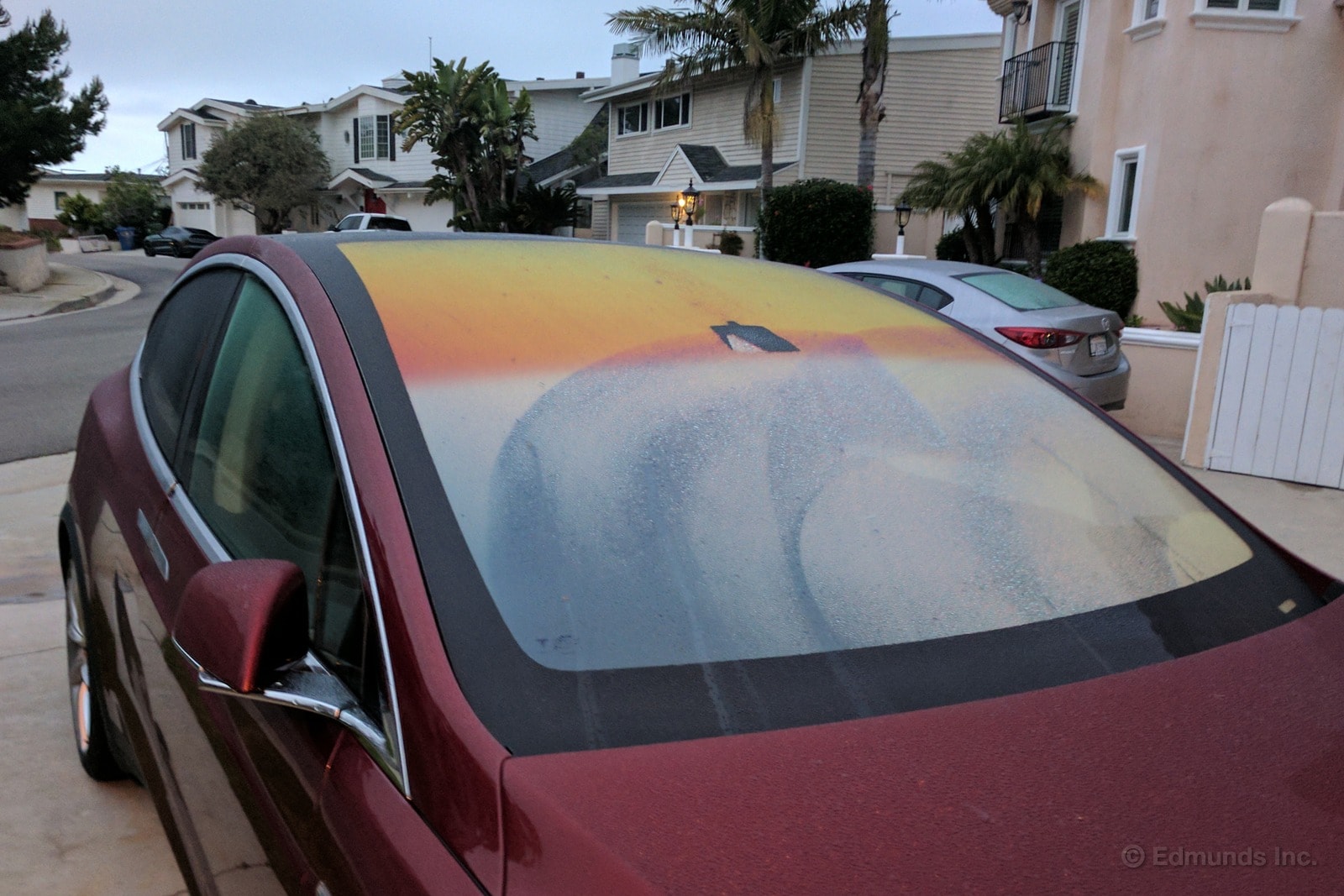
Miscellaneous
"Walked outside on a dewy morning and had another palm-to-forehead moment with our Model X's windshield. The extra glass from the 'fivehead' design presents a whole slew of cleaning issues. You can see the arc of the wipers on the glass. They cover two-thirds of the windshield, leaving a foot or two wet. What happens when you drive off? All that water runs down. Surely this is a minor annoyance, but there's a bigger problem for those who enjoy keeping their cars clean: hard water spots. Eliminating them is a nuisance. So you have to spend more time cleaning the Model X's windshield. But even that's difficult because the extra glass you have to clean is at one of the hardest parts of the car to reach. Sure, you can mitigate this by applying a water repellent, but again we have added complexity and work without an apparent benefit. What's the advantage of this windshield again?" — Carlos Lago
Technology-Audio
"Does the Model X's voice command actually do anything except cue up a Pandora-like radio station? I asked the car several times to do what I'd consider simple commands like 'navigation' or 'destination' or 'find supercharger.' Each time I was rebuffed with silence and a question mark in the gauge cluster. But when I asked the system to play a Stones song, or anything else, it responded on demand, played the song, then created a complementary station. That seemed about the only thing it could comprehend." — Dan Frio, automotive editor
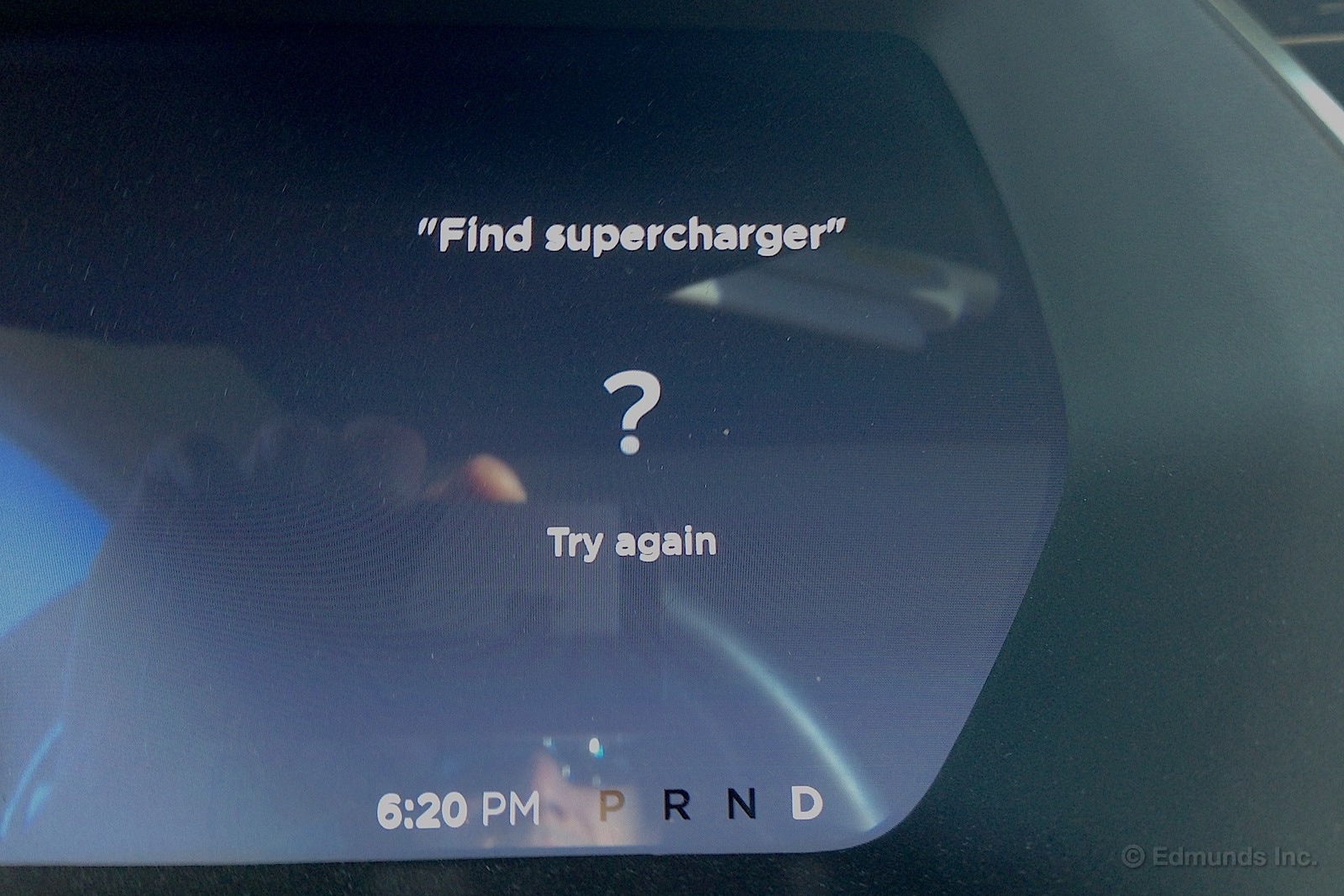
Monthly Update for June 2017
Where Did We Drive It?
We've crested the 20,000-mile mark in our 2016 Tesla Model X. Compared to May, our Model X was relatively drama-free. We say relative because, while the Model X didn't require a visit to any of the local service centers, a troublesome suspension noise did resurface, which of course will require a visit to a service center. So it goes.
Now that we've passed the 20,000-mile mark, it's time to prepare for the Model X's departure from our fleet. I'm not sure anyone will miss it terribly, least of all our fleet wranglers. The Model X has been a mixed bag of utility and gadgetry, seemingly more of the latter.
Ultimately the Model X still feels like a proof of concept, guided by the Reid Hoffman maxim that, "If you're not embarrassed by the first version of your product, you've launched too late." Lucky for Tesla, it still has a customer base willing to trade some product shortcomings for early adoption.
What Kind of Fuel Economy Did It Get?
We added 1,174 miles to the Model X in June, almost exactly the same number we added in May, and charged it to full 11 times. Most of our trips were short-commute hops, with our longest distance between charges coming in at 138.3 miles. Our best projected range was 196.6 miles, with our average projected range coming in at 161.4 miles.
Current odometer: 20,053 miles
Maintenance and Upkeep
None.
Logbook Highlights
Performance
"Torque is quite impressive. Slight push of gas pedal and off it goes without hesitation. The brake assist took some time to get used to, but it's a nifty feature. Smooth ride and good handling." — Sal Meda, imagery production specialist
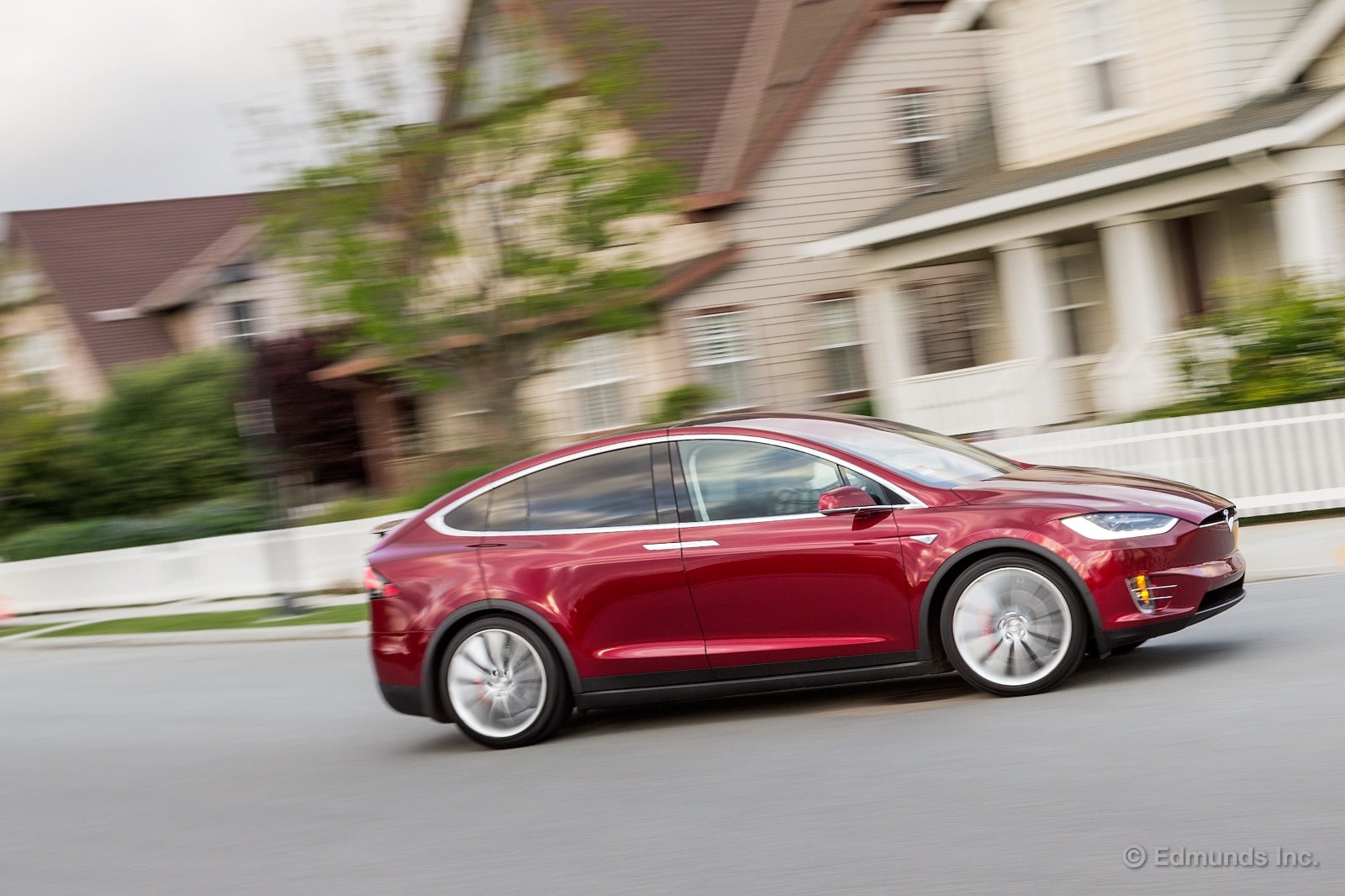
Interior
"Our Model X has a tiny rearview mirror, with a view obstructed by the tops of the rear seats and a spoiler that cuts across horizontally. Dark-tinted windows make things worse and are hard to see out of even on a bright day. And if you're wearing sunglasses? Good luck." — Ron Montoya, senior consumer advice editor
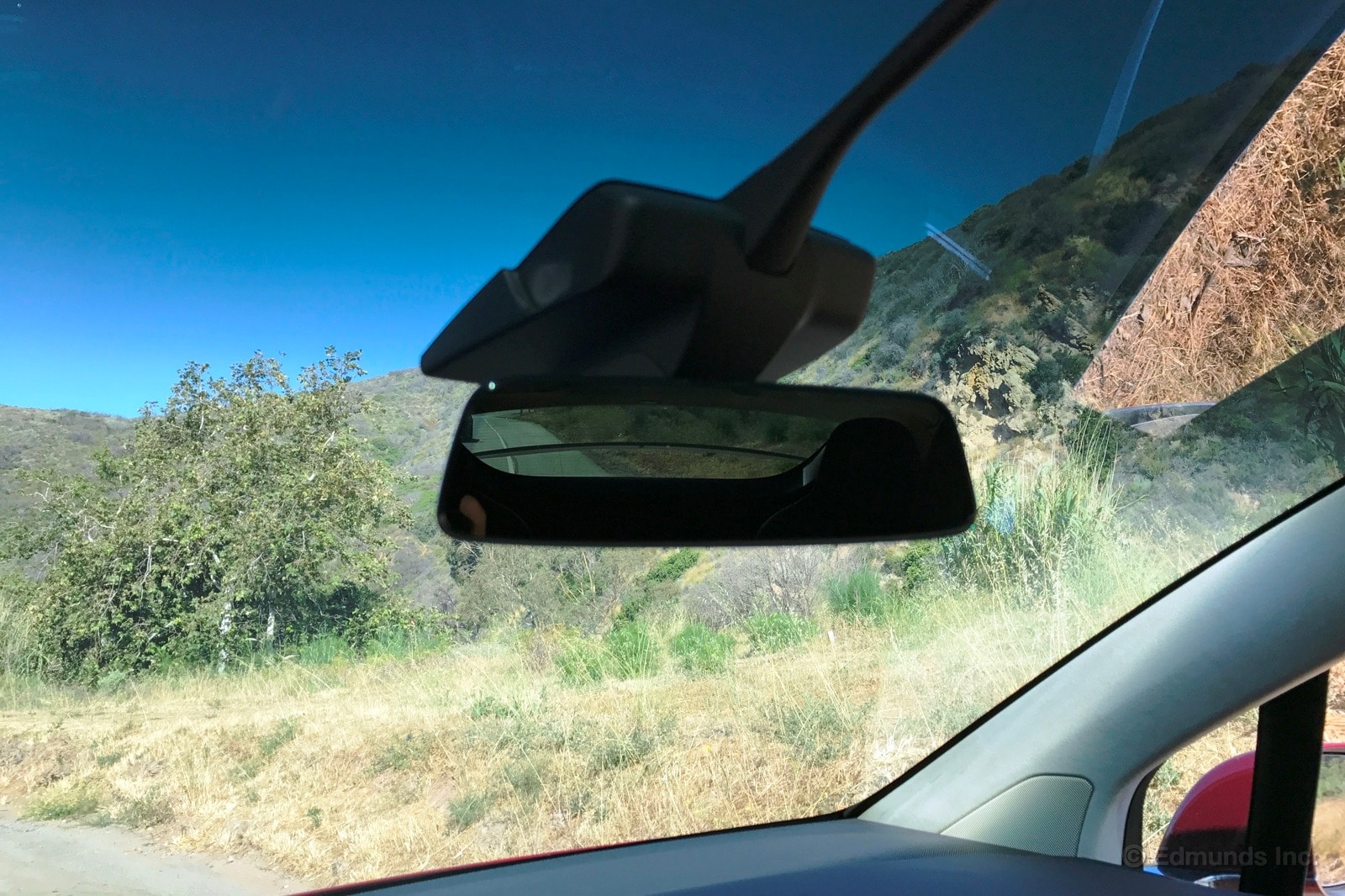
Comfort
"The comfort level far exceeded my expectations. The seats are so comfortable that you actually forget you're sitting on a vehicle seat. For me, this is a big plus because of regular hourlong commutes. I'm not a huge fan of leather seats because they tend to get really hot if the car is left in the sun. Wasn't the case with the Model X. The seats were a little warm, but not lava hot." — Sal Meda
Miscellaneous
"My everyday commute involves taking two highways, neither which offers an HOV lane in the sections I normally drive. But some recent atypical midday excursions necessitated taking a different route home on highways that offer HOV access to solo drivers in pure EVs like the Model X.
"I don't know how much time I saved by choosing the Model X over one of the gas-powered cars in the fleet, but the carpool lane was clear almost the entire way while traffic in the normal lanes was already clogged at 3 p.m. In these specific instances, driving an electric car was a boon to my commute.
"But other times, I've also left the office later in the day in an EV in an attempt to outsmart traffic patterns, and it doesn't work. At that time of day, the carpool lane is bumper to bumper, just like every other lane. At that point, it's easier just to take a normal car and grind through downtown L.A. and its HOV-less freeways to get home." — Cameron Rogers, automotive editor
Technology-Audio
"Yes, the oversized center display is breathtaking, but the instrument panel is impressive as well. I planned a trip to downtown L.A. from the Valley over the weekend. I punched in my destination and the navigation decides to take up the left-hand part of the instrument panel with a real-time 3D environment. It actually displayed the exit signs with directional arrows to follow. Thumbs-up!" — Sal Meda
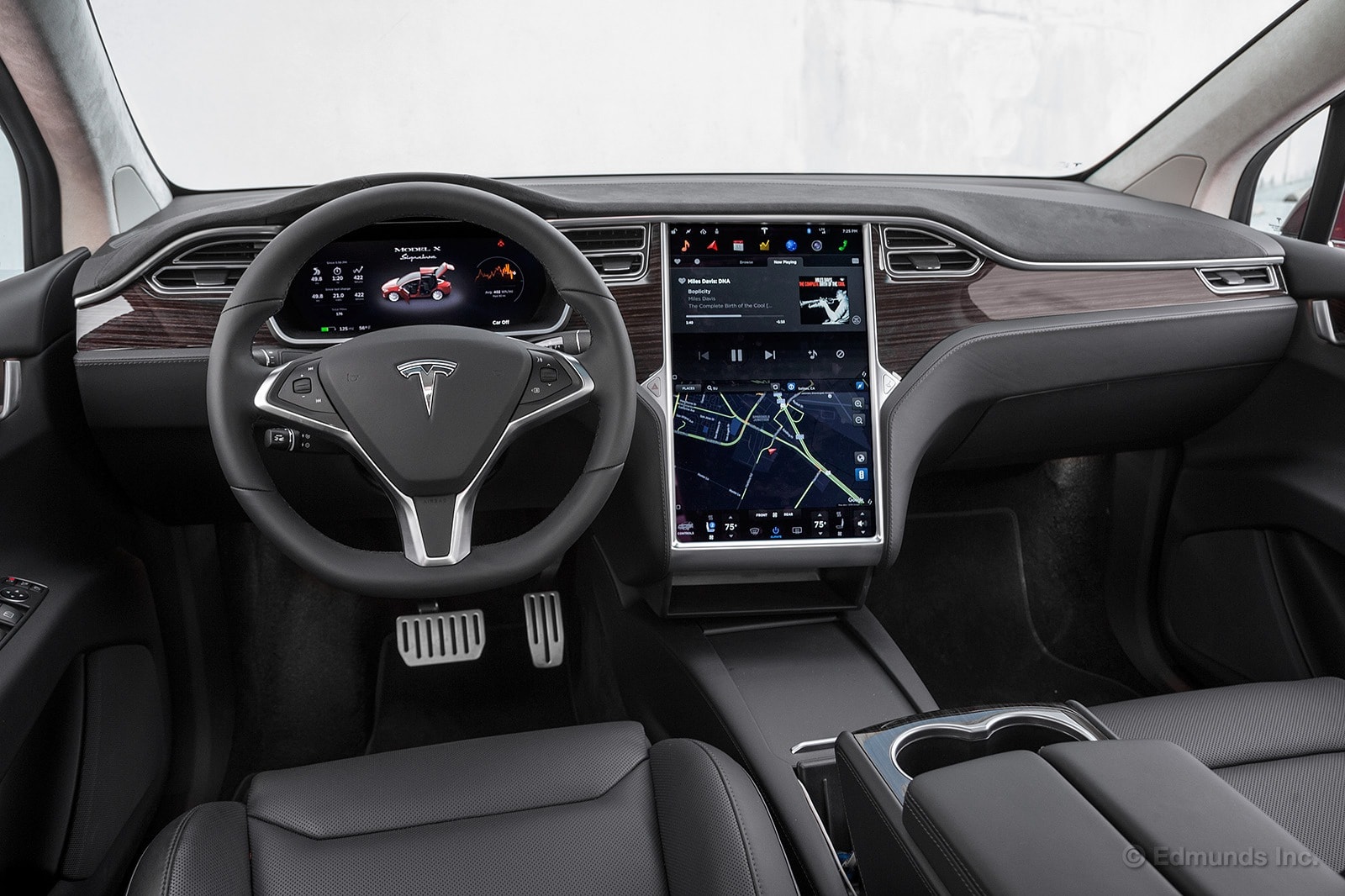
Interior
"Simple, elegant and roomy. Just the right amount of wood trim and a splash of satin metal to complement it. At night, the ambient lighting feature gives you the sense that you're on a cruise liner. The touch-activated dome lighting is also a cool feature as passengers don't need to hunt for the lever switch anymore." — Sal Meda

Monthly Update for July 2017
Where Did We Drive It?
Our 2016 Tesla Model X was a reliable commuter vehicle this month. We can't say it was completely incident-free, however, since there was an issue that necessitated a soft reboot of the Tesla's display systems. This issue is not found in the manual, and it required some Googling and reading through the Tesla forum for the Model X. Thankfully, it was a fairly easy fix and it did not require any downtime at a local service center.
The Model X's departure from our fleet is imminent. However, it also served as a constant reminder that the new Model 3 is just around the corner. There were multiple occasions while sitting at a supercharger where conversation came up about whether we ordered a Model 3. Our very own Dan Edmunds went to the Tesla launch event for the Model 3 and says that the vehicle seems promising.
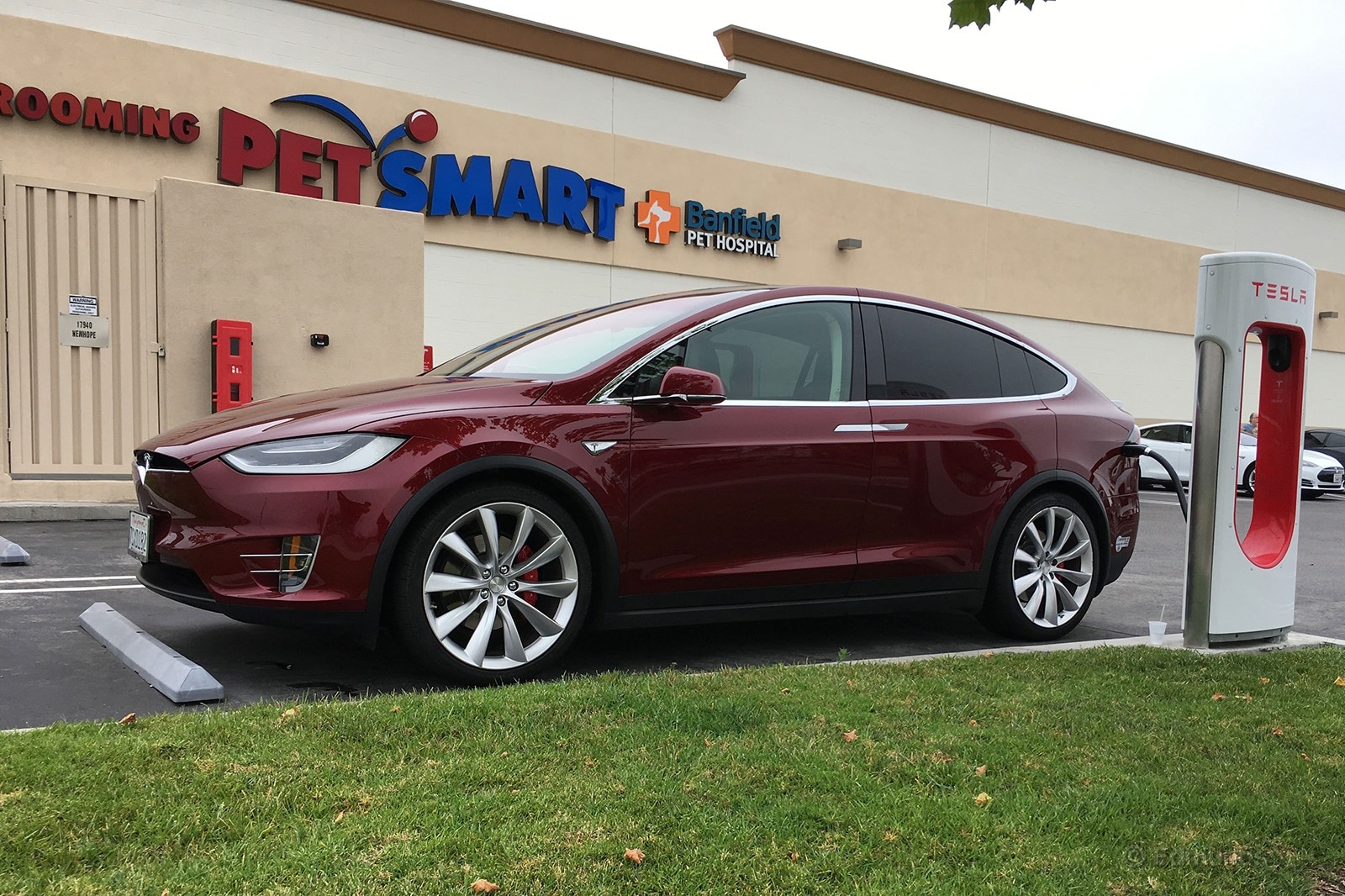
What Kind of Fuel Economy Did It Get?
We added 994.6 miles to the Model X in July, just shy of the 1,000-mile mark, and charged it to full 12 times. The majority of our trips revolved around daily commutes, with our longest distance between charges coming in at 118.2 miles.
Current odometer: 21,057 miles
Maintenance and Upkeep
None.
Logbook Highlights
Performance
"There are really only two things I liked about driving the Tesla this weekend: its acceleration and regenerative braking. Both made L.A.'s notorious freeway traffic a nonissue. The ability to out-accelerate anyone and slow down without touching the brakes actually made sitting in soul-sucking stop-and-go bearable and a little fun." — Caroline Pardilla, senior copy editor
Miscellaneous
"After spending a weekend with it, I missed regular-size windshields and sun visors, key fobs with lock and unlock buttons, doors with handles, and knobs for audio and climate. And sure, actual owners of this car will learn to adapt to these annoying idiosyncrasies, but like I said, how does any of this make life easier?" — Caroline Pardilla
"Warning to those using the touchscreen to open your driver's door for the first time: If you tap it before making sure there aren't any cars coming by, it'll give you a mini heart attack as it swings open. The screen only says 'Tap to Unlock,' not that it'll also open the door wide. So it's understandable to not expect such a proactive door. The invisible door sensors will pick up when there is an object near the door and open it according to the distance from the door. But there's no way to tell when a car is driving by." — Caroline Pardilla
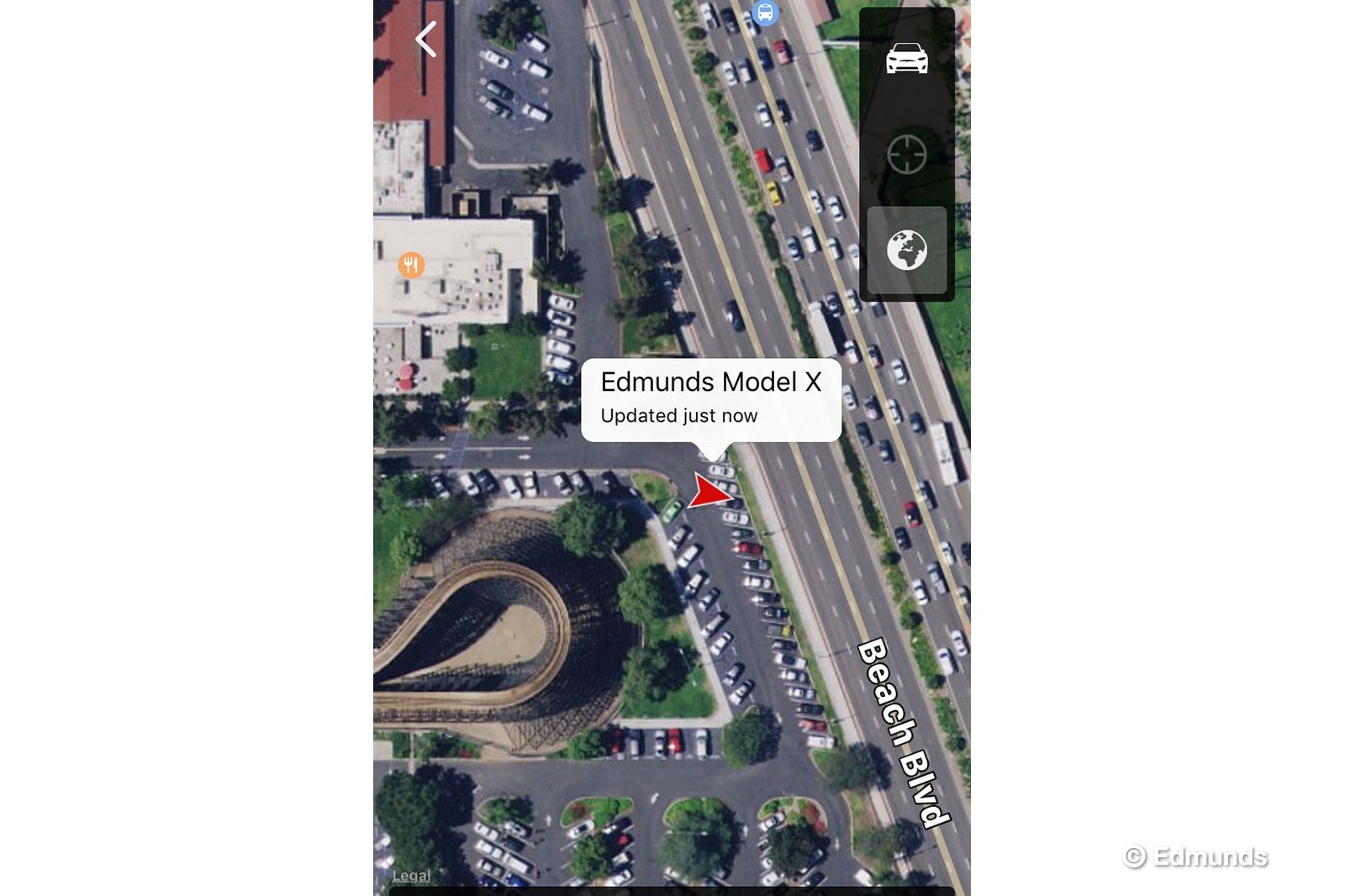
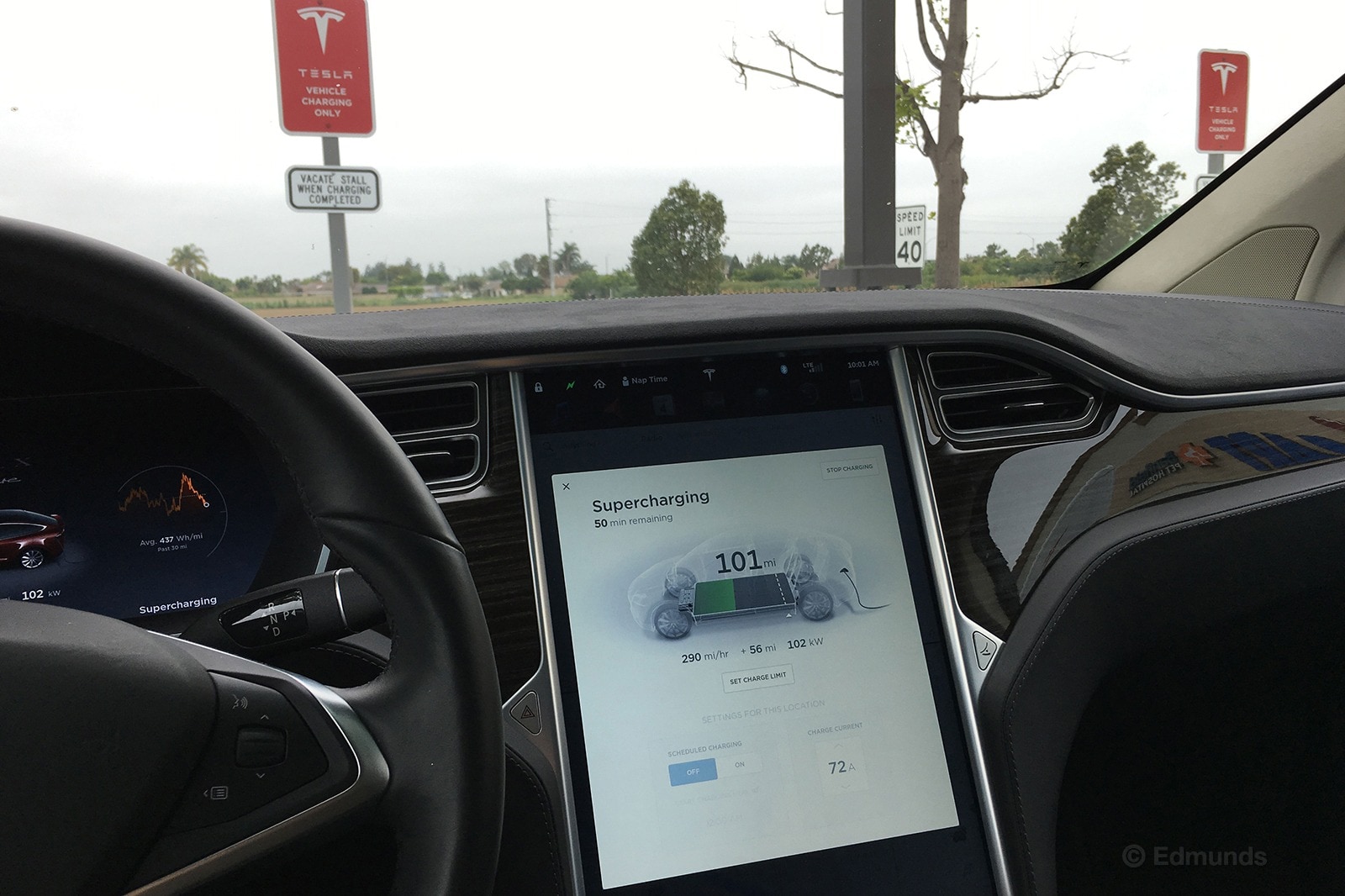
Technology
"The Model X surprised me twice in the past week. First, I was able to locate the Model X in a parking lot down to its exact space by using the Tesla app. Second, I stopped at a nearby supercharger for a top-off. There I watched the onboard charge meter climb to a rate of 290 mph. It wasn't sustained for the entire fill, but still. That's fast. I found both surprises to be neat and scary at the same time." — Mike Schmidt, senior manager, vehicle testing operations
"Well, consider the Tesla Model X confirmed as an early-adopter gadget. It just gave me the equivalent of Microsoft's 'Setup couldn't start properly. Please reboot' screen. You'll know you have this issue by not only seeing that message in your center IP, but your main display will be dark (not working at all). I had to Google the text on this screen and read through the Tesla Model X forum/blog to find the remedy.
"Here is the CliffsNotes version: Unplug the USB dongle, press and hold down the two steering wheel dials, then the displays should work and you're as good as new." — Rex Tokeshi-Torres, vehicle testing technician
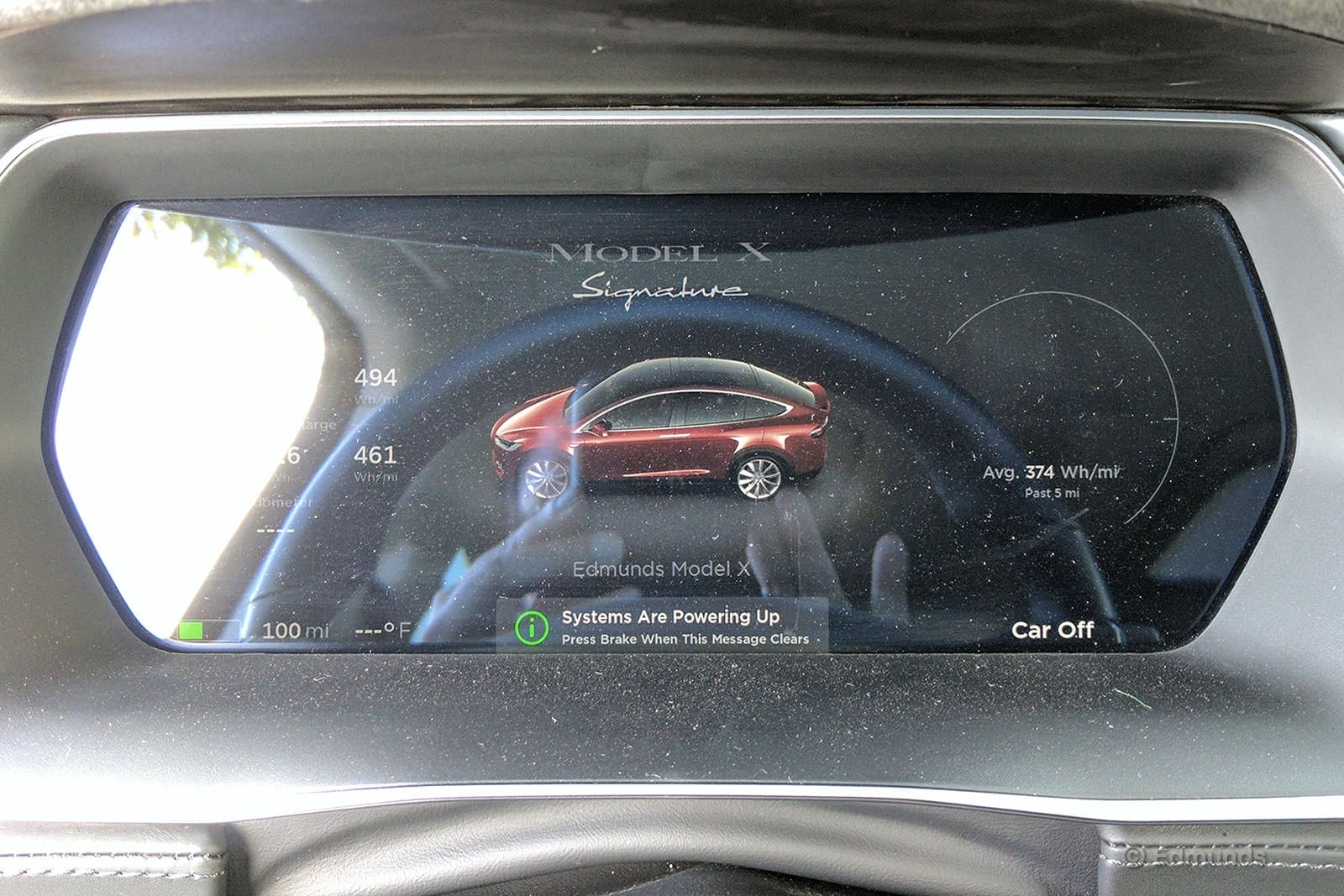
Monthly Update for August 2017
Where Did We Drive It?
We drove our 2016 Tesla Model X 1,957 miles this month, including a long, 1,046-mile road trip up the eastern flank of California's Sierra Nevada mountains.
But no new records were set this month because that road trip was a four-day tow test with a small, single-axle Happier Camper trailer latched on behind. The remaining 911 miles amounted to local commuting miles and a trip to Disneyland, where the main guest parking garage has 100 spaces equipped with metered 240-volt ChargePoint stations.
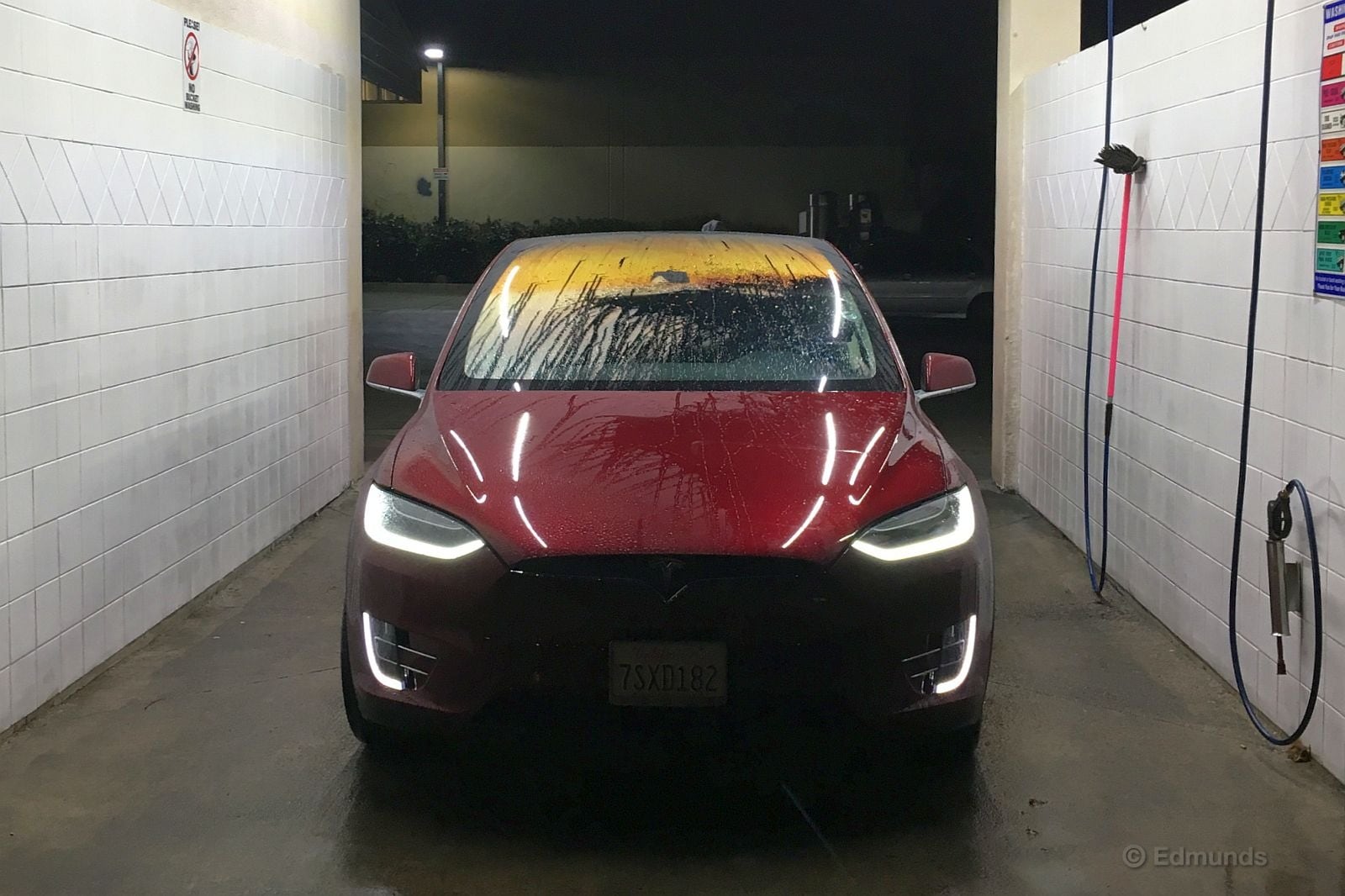
What Kind of Fuel Economy Did It Get?
Over the course of the month, we recharged our Model X no less than 23 times. Only six of those utilized our own metered Tesla high-power wall connector, and one other occurred at one of Disneyland's 240-volt metered ChargePoint stations. The remaining 16 stops were at Superchargers, and 12 of those were associated with the towing trip to a small lake near Donner Summit.
Superchargers are great because they do not cost us anything. But they're a record-keeping nightmare for us because they don't display how much electricity they dispense. Sure, the car indicates how much the battery used during the preceding stint, but that's not the number that defines an electric vehicle's true consumption. That's because charging losses are part of charging a battery, and they're significant — upward of 20 percent or more.
At home (or at metered public stations such as the one at Disneyland), this higher figure is vitally important because that's the number of kilowatt-hours (kWh) for which you will ultimately be billed. Such losses are a fact of life as far as your utility meter is concerned, and indeed they are part of an EV's officially rated range and consumption as shown on the window sticker.
The point is somewhat moot in our case because Supercharger use is free for our early Model X. But Model 3 owners won't be so lucky, and even for us this lack of critical data means we cannot calculate consumption whenever a Supercharger is used.
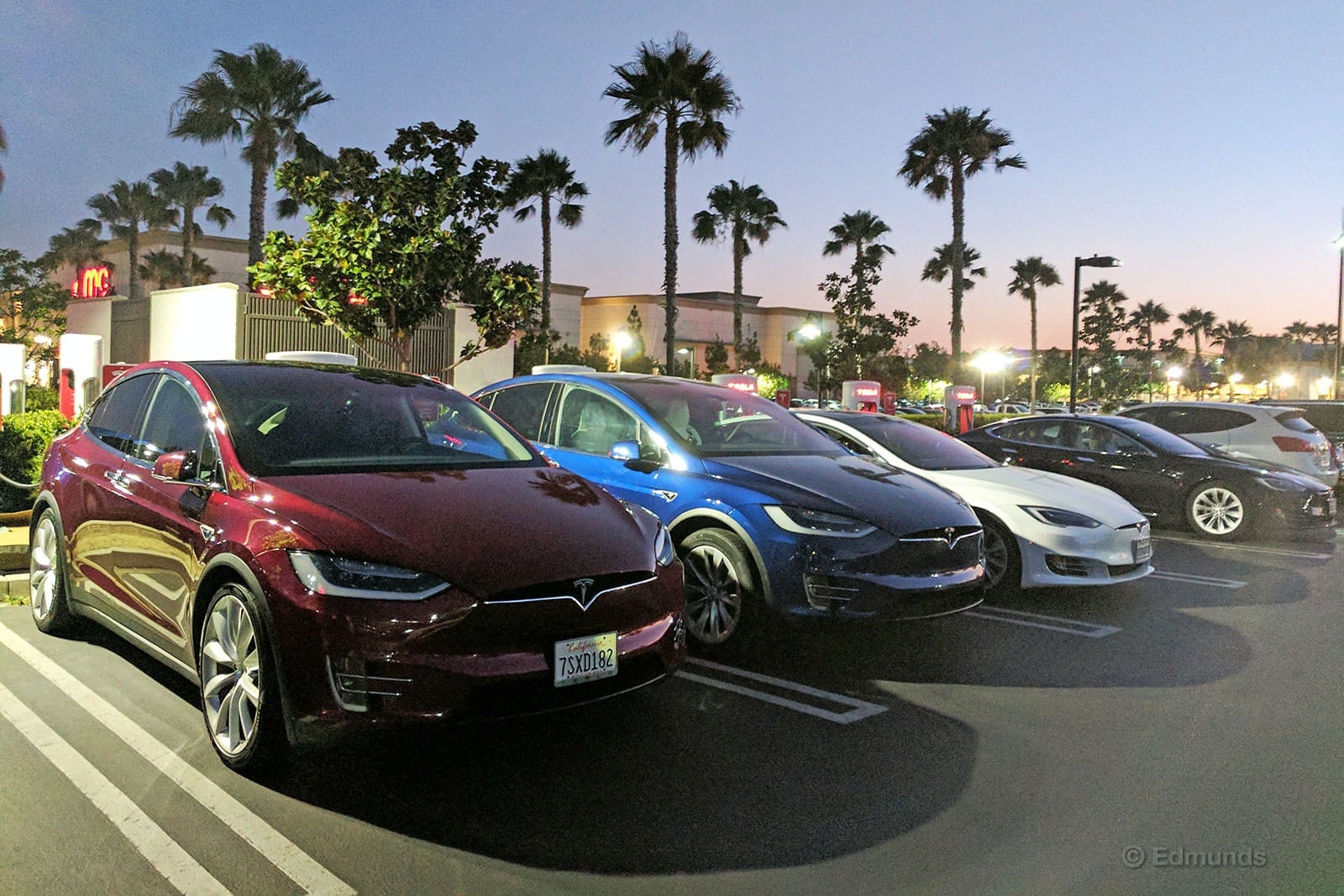
With 16 such freebie stops, this month's data was heavily affected. Only 419 of August's miles are usable to calculate consumption, none of them towing miles. The knowable portion of this month's average consumption works out to 52.4 kWh per 100 miles, which compares poorly to the Tesla's EPA rating of 38 kWh per 100 miles. Prefer to think in terms of miles per gallon equivalent (mpg-e) instead? Our Model X averaged 64.3 mpg-e over what amounted to 419 commuting miles, which falls far short of its 89 mpg-e rating.
Miles added this month: 1,957
Miles with complete data: 419
Consumption over those 419 miles: 52.4 kWh/100 miles (64.3 mpg-e)
EPA consumption rating: 38 kWh/100 miles (89 mpg-e)
Best lifetime observed range: 212.6 miles
Best lifetime projected range: 267.6 miles
Average lifetime projected range: 168.2 miles
Current odometer: 23,014 miles
Maintenance and Upkeep
Nothing this month.
Logbook Highlights
Read the upcoming two-part account of the tow trip to see the bulk of what we learned this month.
Tow Test Reboot With a Happier Camper Trailer
Part 1 | Part 2 | Video 1 | Video 2 | Video 3
Unlike any other electric vehicles on the market, the 2016 Tesla Model X is able to tow a trailer. The maximum Model X tow rating is 5,000 pounds, but any Model X fitted with the optional 22-inch wheels, such as ours, is limited to 3,500 pounds. The bigger wheels come with ultra low-profile tires that aren't able to bear as much weight because it's the air volume inside a tire that carries the weight.
But we know from experience that these numbers don't tell the whole story. Towing on electric power is complicated by the realities of range and recharging, two critical factors that are ignored by the official tow-rating process. Last summer these issues made for such an unpleasant first experience that, after it was all over, I wrote, "I'm not sure I ever want to do it again."
For various practical reasons the trailer we'd borrowed from Off the Grid Rentals was a specialized adventure trailer intended for off-road towing behind a Jeep or Land Rover. We appreciated the trailer in its own right, but its combination of huge off-road tires, massive jutting fenders and exposed external equipment made us wonder if some unseen excess of aerodynamic drag and rolling resistance had been especially hard on the Tesla. It has been a nagging question.
So we're doing it again. But this time we're using an enclosed fiberglass camping trailer from Happier Camper. Just looking at it, the HC1 model is a much more obvious and compatible partner to the Model X. But will it make a difference? Will the Model X do better with a more conventional trailer in tow?
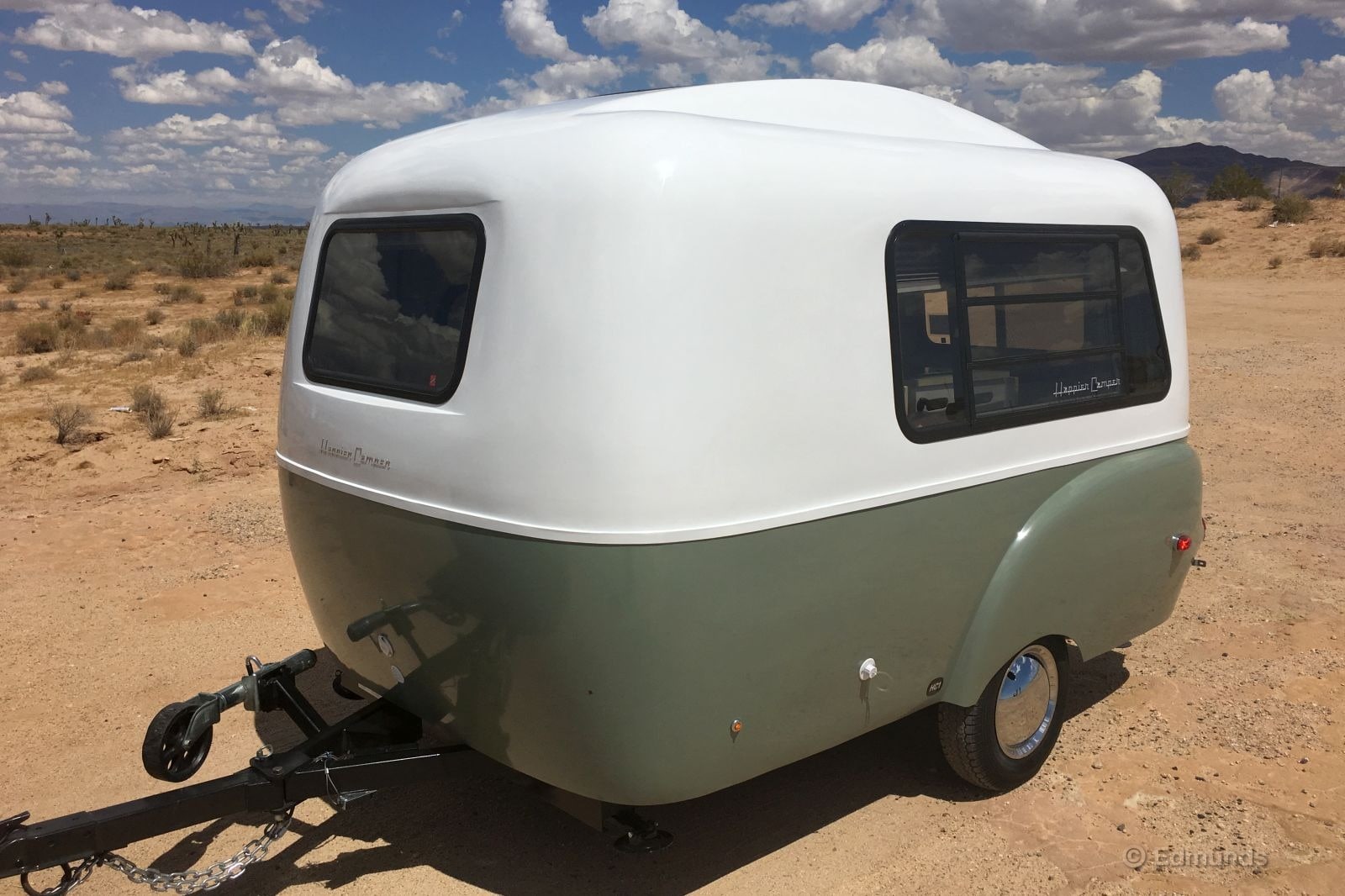
The Happier Camper
Happier Camper's HC1 is a compact single-axle hatchback trailer that's reconfigurable by the user to function as a camper, an enclosed bicycle/motorcycle hauler or both at once. Its empty weight ranges between 1,300 and 1,500 pounds, depending on equipment, and its maximum loaded weight is 3,500 pounds. And unlike in the high-clearance adventure trailer, the HC1's tongue height matches up exactly with a standard ball mount plugged into the Model X's receiver.
It's also narrow enough that extended tow mirrors are neither legally required nor remotely necessary to see down its flanks. It also has front and rear picture windows that are strategically located so we could use the Tesla's center mirror to look through the HC1 and clearly see traffic directly behind. Unless you've towed before, it's hard to appreciate how truly unique and reassuring this is. So far so good.

Less of a Drag? Do I Hear More?
The HC1 is decidedly more cube-shaped than the teardrop-style adventure trailer we pulled before, and the base size of the HC1 is 17 inches taller and 22 inches wider. It's only 3 inches wider at the base, though, because it has internal fenders, not the protruding external fenders of the teardrop. It's not a large trailer in an overall sense but, compared to what our Tesla pulled last time, the HC1 nevertheless punches a bigger hole in the air because it does have more frontal area.
On the plus side, it has stylishly rounded corners, subtly raked contours, and small, 13-inch trailer tires that are tucked neatly within the shape. There are very few protuberances, and it generally looks far smoother and friendlier to the passing air than the adventure trailer ever could. In aerodynamic parlance the HC1 appears to have a much lower coefficient of drag (Cd) than the adventure trailer.
At a given speed, the drag force generated by an object is directly related to its drag area, which in this case is the trailer's frontal area multiplied by its Cd. Our cute little trailer has more of one and less of the other, but it was impossible to know which factor would have more influence because a trailer rides in the slipstream of the vehicle that's pulling it, and that makes the math go all wonky. We didn't know which way it would go.
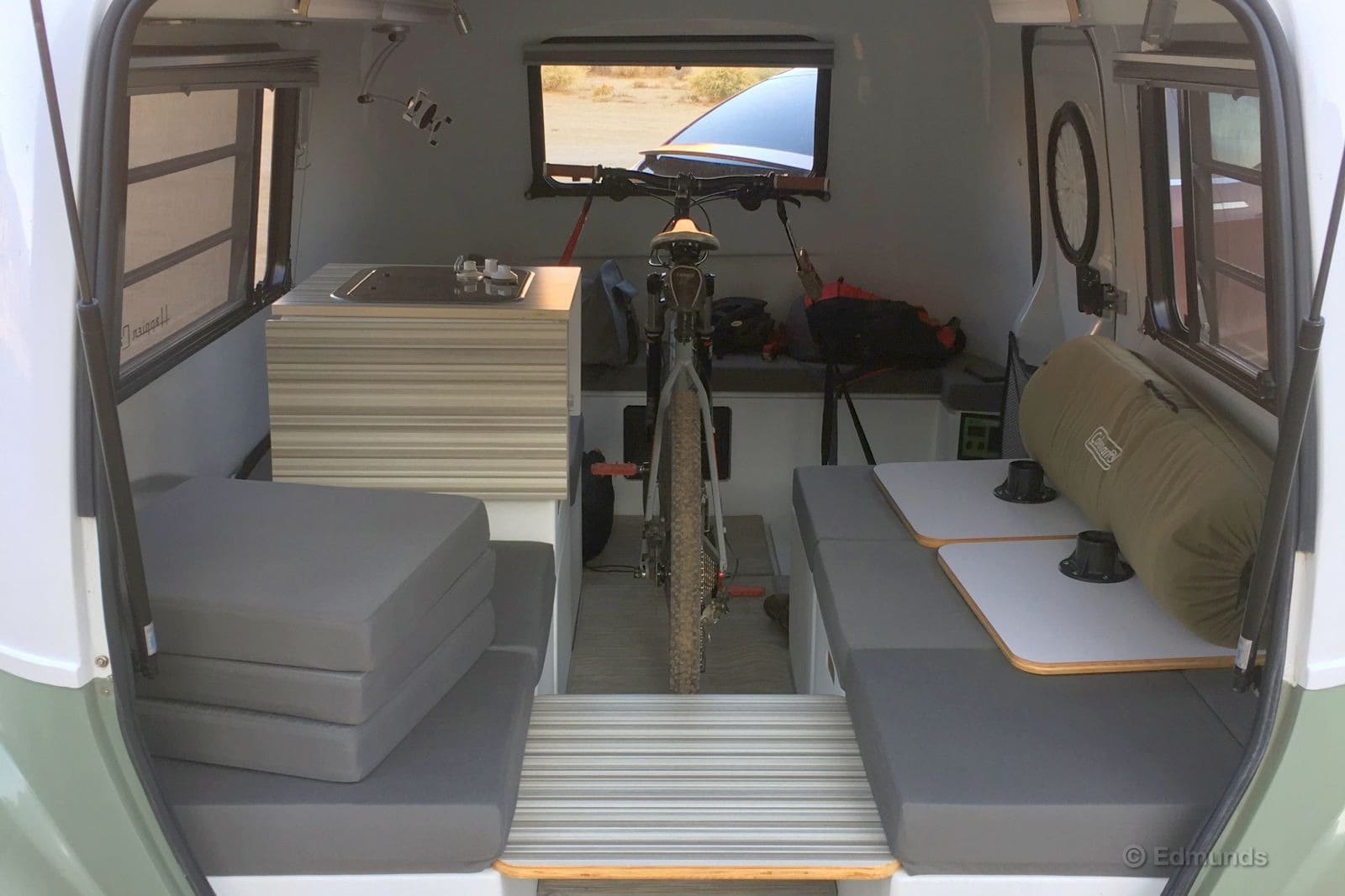
No More Weight Than Necessary
That helping of doubt was compounded by another. Our planned route included numerous grades between our sea-level starting point and our target lakeside campground some 500 miles away on the shore of a reservoir perched at 5,614 feet. The highest Supercharger on our route stood at 7,880 feet, and we climbed over higher summits than that along the way.
On our last trip, we experienced almost double the electricity consumption when towing, which is another way of saying that range was cut nearly in half. The distance between adjacent Supercharger stops had felt uncomfortably close to the limit.
We had no desire to do that again, so we decided not to push our luck when it came to weight. We loaded the trailer with no more than we'd usually bring on a trip like this: a mountain bike and some basic camping gear. That made our Happier Camper weigh right around 1,500 pounds — the same approximate loaded weight as the trailer we pulled last year.
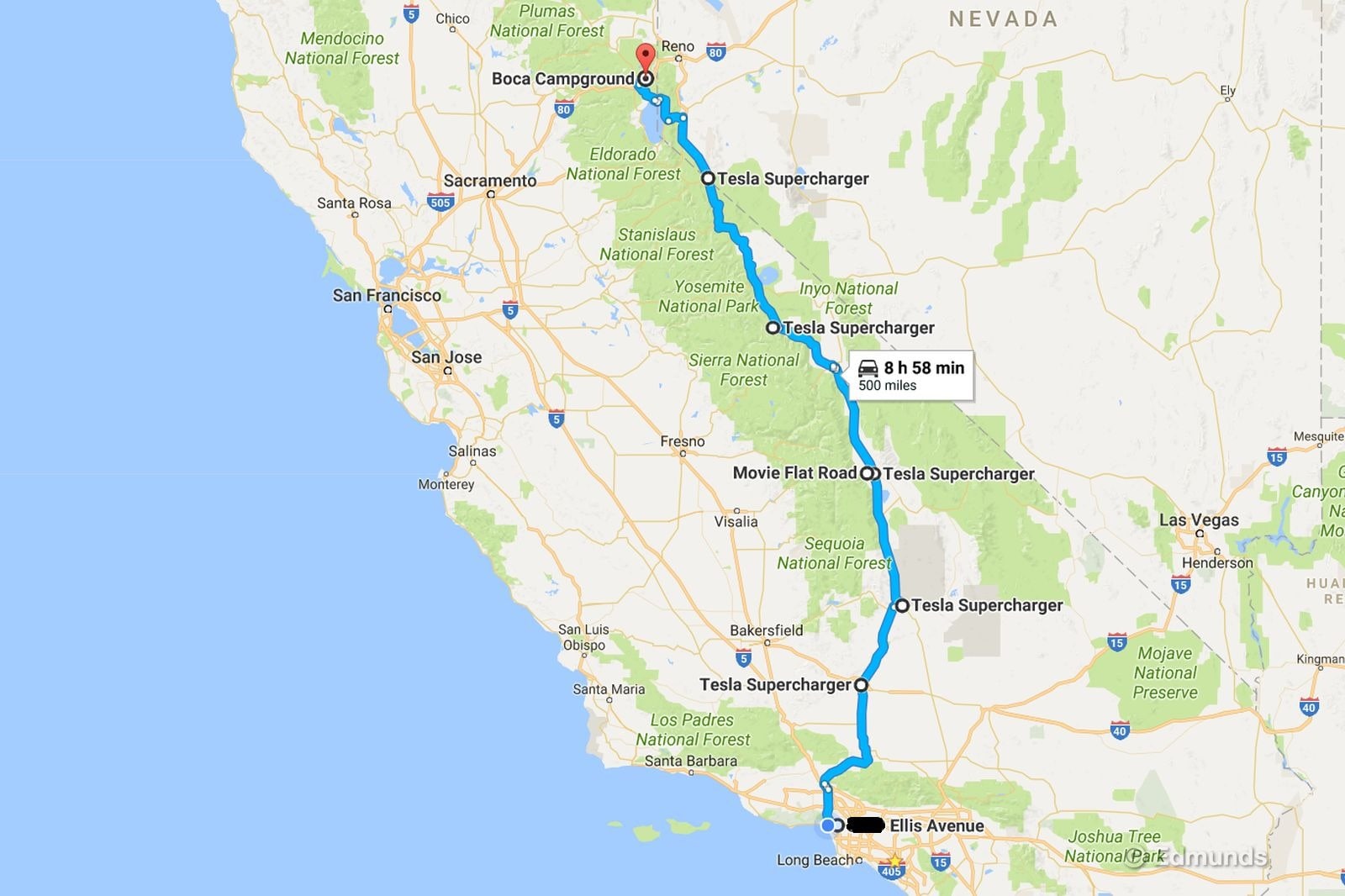
The Journey Is the Destination
The outbound 500-mile leg of our 1,000-mile round-trip journey would normally be manageable in a single day with a gasoline-powered tow rig and a strong bladder. But we planned for two days out and two days back because the pace of last year's Tesla tow trip to Flagstaff, Arizona, had been slowed by long and frequent recharging stops.
There's no way around this, so it's best to adopt a mindset along the lines of "The journey is the destination." Short hops, frequent stops is the name of the Tesla towing game, and that's just fine when the point of the trip is camping and recreation. Might as well plan for it.
That's why we changed our route to follow a line of Superchargers sprinkled along U.S. Highway 395, a gorgeous drive up the eastern flank of the Sierra Nevada mountains. Camping options are numerous, too. Our previous excursion to Flagstaff followed a largely desert route that passed by the California cities of Desert Hot Springs, Indio and Blythe as well as Quartzsite, Arizona, and the northern Phoenix suburbs before finally ascending into the mountains in the final 100 miles. Midpoint camping options were limited, not to mention ungodly hot and lacking in scenery.
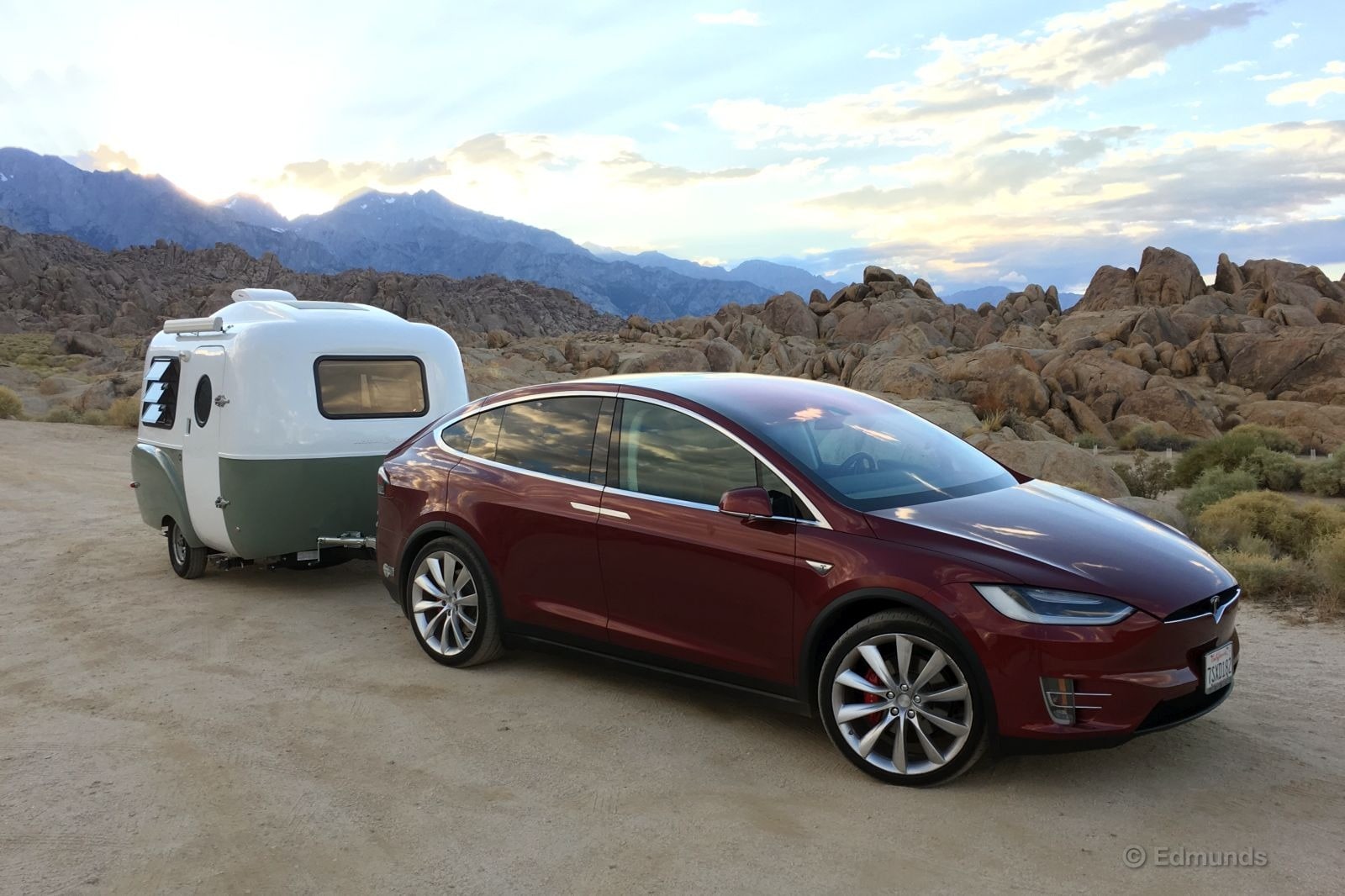
Numbers Game
A Tesla dashboard can bombard you with more charts, graphs and tabular information than a tax accountant could make sense of, but there's one particular figure that tells you the exact rate at which your Tesla sucked electricity out of its battery from one charge stop to the next. It's called average energy consumption, and it is displayed in watt-hours per mile.
There's a faint guideline on the energy consumption graph of every Tesla. It represents how many watt-hours per mile you must average to achieve the rated range. Our Model X P90D is rated at 250 miles, and to match that a driver must average 330 watt-hours per mile.
Last summer our Model X averaged just 612 watt-hours per mile towing the adventure trailer to Flagstaff. I recalculated that in terms of range and came up with just 135 miles. Our average recharge time of 1 hour and 34 minutes was pretty dreadful, too.
Can our Model X do better towing a cute but somewhat larger fiberglass-bodied Happier Camper trailer despite a more mountainous route? Check back soon to find out.
Monthly Update for September 2017
Where Did We Drive It?
Following an eventful and entertaining month in August with Dan Edmunds' extensive round trip towing test to Lake Tahoe, California, our long-term 2016 Tesla Model X eased back into a more normal routine, hanging around town and switching hands between other Edmunds staffers.
This month, our Model X received another over-the-air software update that now displays Supercharger availability and charging rates. These updates are still sort of mind-blowing when you think of it. It's like receiving miscellaneous new features for your car from Santa Musk whenever he feels like dropping by.
The update was even accompanied with an electronic card:
"Supercharging your Model X isn't always just about finding the nearest Supercharger. Sometimes it's about finding the one that will get you back on the road the quickest, even if it's a little farther away. Model X now displays the maximum power available for each location, so you can choose one that best fits your needs."
Thanks, Elon!
What Kind of Fuel Economy Did It Get?
Unlike last month where we fully exercised our privilege to guzzle free electrons at the Tesla Supercharger well, the majority of recharging was done at Edmunds' headquarters where we can better monitor our consumption.
A relatively leisurely month had us plugging in a total of seven times, six of which were at our metered high-power wall unit. This month's energy consumption is an improvement over last, though still a ways off the EPA estimates.
Miles added this month: 740
Miles with complete data: 652
Consumption over those 652 miles: 50.6 kWh/100 miles (66.5 mpg-e)
EPA consumption rating: 38 kWh/100 miles (89 mpg-e)
Best lifetime observed range: 212.6 miles
Best lifetime projected range: 267.6 miles
Average lifetime projected range: 168.9 miles
Current odometer: 23,754 miles
Maintenance and Upkeep
None.
Logbook Highlights
Technology-Audio
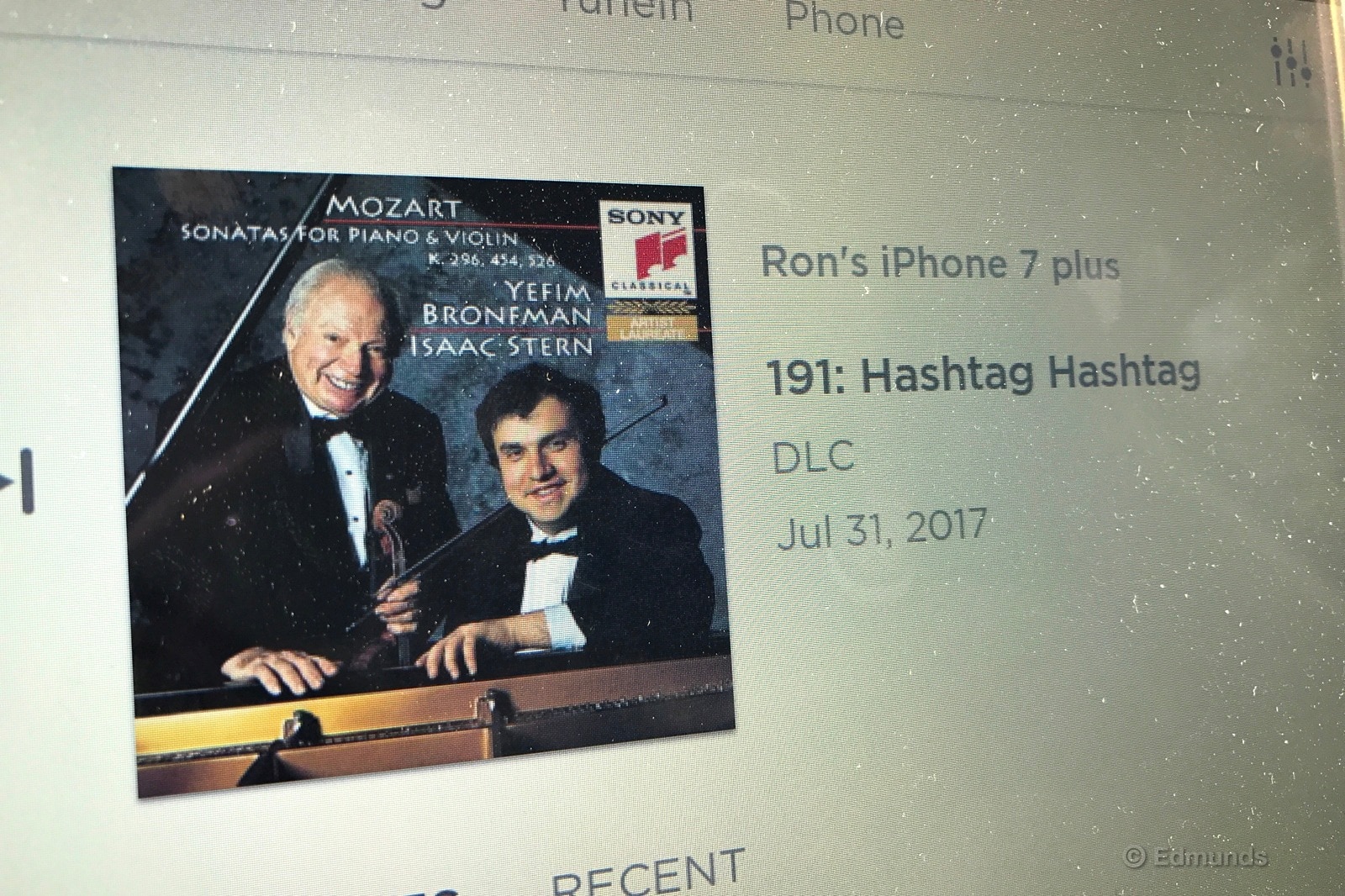
"I've long been a fan of album artwork on devices since the iPod video. It's a gimmick that gives infotainment systems a modern feel, and it's one of the rare times today we are able to actually admire the work that went into the album design. Since our Model X has a cellular connection, it is able to recognize the artist tag and download the artwork. I tested this on the Apple music app and with Spotify via Bluetooth. I'd say it's about 98 percent accurate, in terms of getting the correct artwork.
"Podcasts, on the other hand, seem to stump the system. Even if they aren't in the database, the system tries to find a music album equivalent and the resulting matches can be pretty entertaining.
"I was listening to Cast of Kings, a Game of Thrones podcast, and the Model X's infotainment system came up with artwork for the soundtrack to Victorious, a hit Nickelodeon show starring Ariana Grande and Victoria Justice. Later I listened to a video game podcast called DLC, and the artwork that appeared was Mozart: Sonatas for Piano and Violin, by Yefim Bronfman and Isaac Stern.
"Maybe our Model X is trolling me. ..." — Ron Montoya, senior consumer advice editor

"There's a new over-the-air update that added functionality to the Supercharger network. Now you can see the availability of chargers at a location as well as the charging rate. This can optimize the time and location of your charges on a road trip. Smart update, I say." — Mark Takahashi, senior writer
Interior
"I was calling my daughter from the Model X one day as I rolled the window down to get some air because the weak air conditioning wasn't keeping up. The sun beats down through the helicopter windshield something fierce.
"As I did so, I heard the dog bark on the other end of the line. My daughter said, 'Rosella just went nuts over that sound. What did you do?'
"'This it?' I asked as I rolled the window down some more. 'Or how about this?' as I rolled down the passenger side. Both front windows squeak like a 1972 Plymouth. Honestly, I don't know how Tesla manages to screw up the obvious stuff." — Dan Edmunds, director of vehicle testing
"The climate control in the Model X is maddening. The fact that there are no knobs or buttons is nice aesthetically, but it requires you to take your eyes off the road for a period of time to even find the climate controls on the touchscreen, and then again to use them. The cost of form over function, I guess." — Travis Langness, staff writer
Tow Test Recap
Part 1 | Part 2 | Video 1 | Video 2 | Video 3
It doesn't take long to find yourself climbing a grade when you drive out of the Los Angeles basin. After all, the place is hemmed in by mountains. Just a few miles into the trip our 2016 Tesla Model X began a steady 5-mile ascent of the Sepulveda Pass, a 1,130-foot prelude of things to come that didn't even get us out of the sprawling L.A. area.
This modest 3 percent grade doesn't feel like much unless you're towing something, but that's exactly what we were doing. This was the start of a four-day towing adventure with a Happier Camper HC1 trailer. Our target lakeside campground lay almost exactly 500 miles ahead of us, a distance we figured would take two days to cover based on an earlier experience with range and recharging while towing on Tesla's Supercharger network.
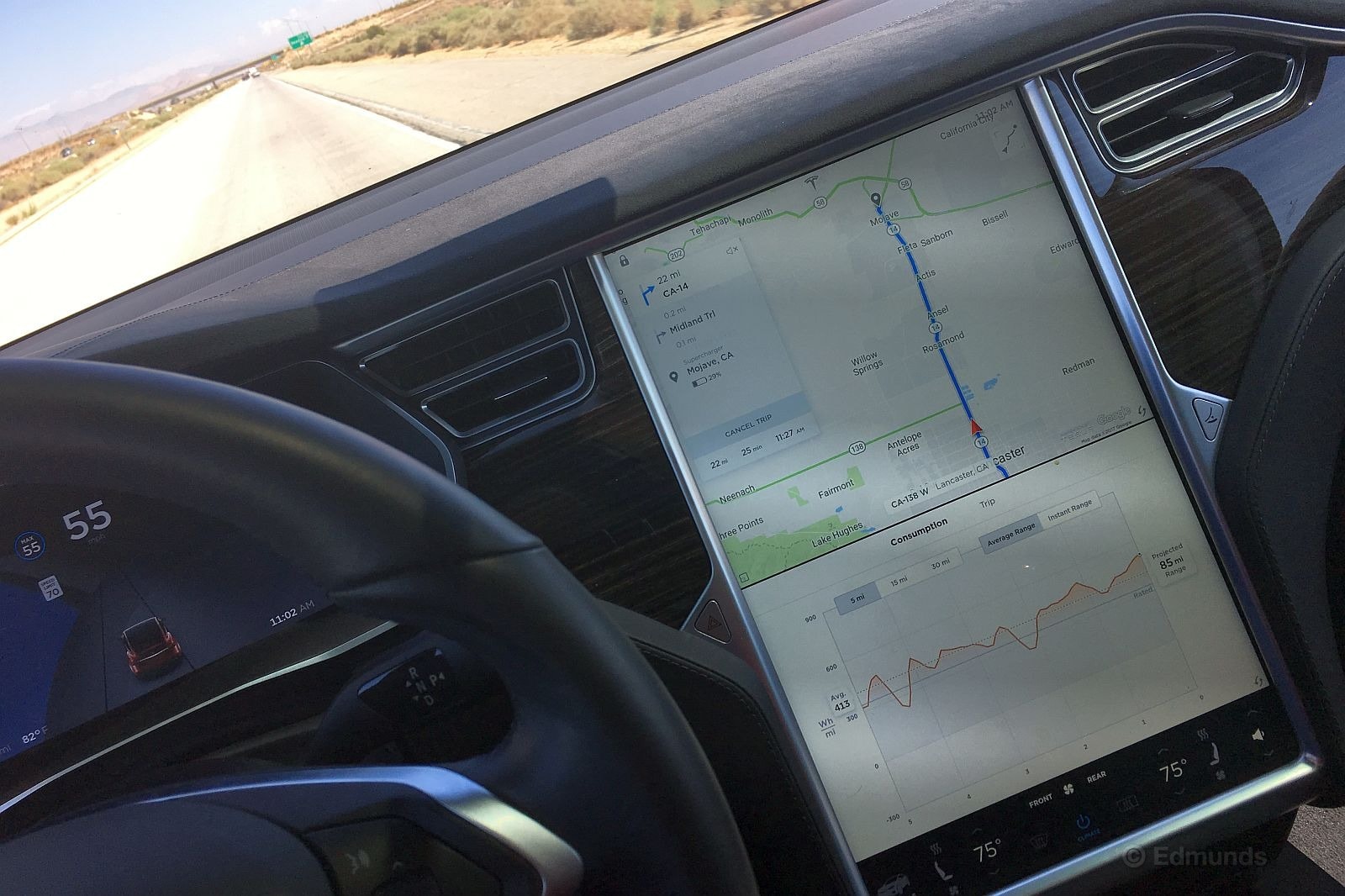
Leaving L.A.
We headed out of L.A. while everyone else was commuting in, so traffic was light in our direction. As I would the entire trip, I set the cruise control to 55 mph, which is California's maximum towing speed limit. But this was also a good way to rein in the additional consumption that comes with pulling a box on wheels. Aerodynamic drag increases in proportion to the square of speed, so towing at 65 mph generates 40 percent more drag than towing at 55 mph.
Right away, the Sepulveda Pass demonstrated what I love about towing with an electric vehicle. Many of the difficulties associated with climbing a grade simply disappear. A direct-drive electric motor never shifts; the revs have no need to climb. The Model X can generate so much power and torque that it never strains, never gets any louder. And the Tesla's cruise control is so unfailingly precise that your chosen speed never waivers even a half a mile per hour. Uphill, level ground — even downhill — it all feels exactly the same.
The main source of drama was the electricity meter, which climbed rapidly to the top edge of the graph and exceeded the limits of the scale. The car's estimated range calculation began to tumble alarmingly in real time. The projected range calculation righted itself somewhat after crossing the summit and heading down the other side, but even on flat ground the presence of the trailer resulted in consumption that was much higher than what we normally see.
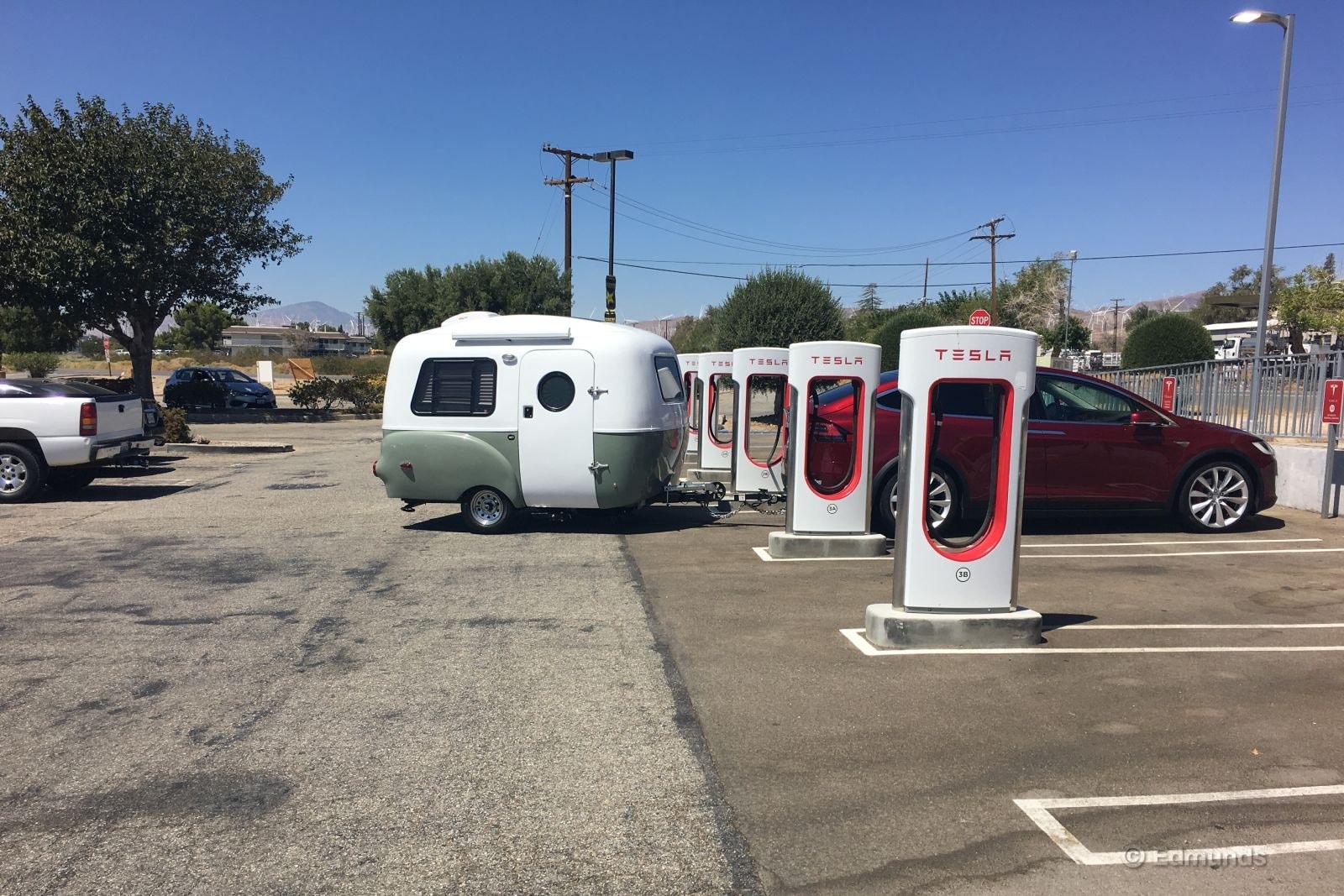
First Stop: Mojave, California
The highway ends at this small desert crossroads town, so it was time to disengage the cruise control and work our way through the few signals that stood between us and our first Supercharger stop. Regenerative braking kicked in as soon as I eased off the throttle, and it proved to be just as powerful and controllable as ever. At the stop, I was able to comfortably one-pedal it down to the last 5 mph before touching the actual brakes.
Mojave's Supercharger takes up six spots in front of a Mexican restaurant, and we arrived to a deserted lot about 30 minutes before lunch hour. I considered detaching the trailer, but these are nose-in stalls and the aisle was wide. The HC1 wasn't sticking out even halfway, and the early lunch arrivals were getting by just fine. They seemed amused at the sight of a Tesla with a cute trailer rather than peeved at my admittedly questionable parking tactics.
We needed food, and the Tesla needed to be full because the next leg included the possibility of skipping a Supercharger if we could manage 118 miles. Last year's exploratory tow test suggested this distance was far from a slam dunk, especially in 100-degree weather with 1,000 feet of elevation gain and the distinct possibility of strong desert headwinds. Batteries fill quickly at first, but the charge rate rolls off and flattens out significantly past the half-full point. Our full fill took time.
Drive distance: 94.9 miles
Drive time: 1 hour, 52 minutes
Consumption: 564 watt-hours (Wh) per mile
Charge time: 1 hour, 37 minutes
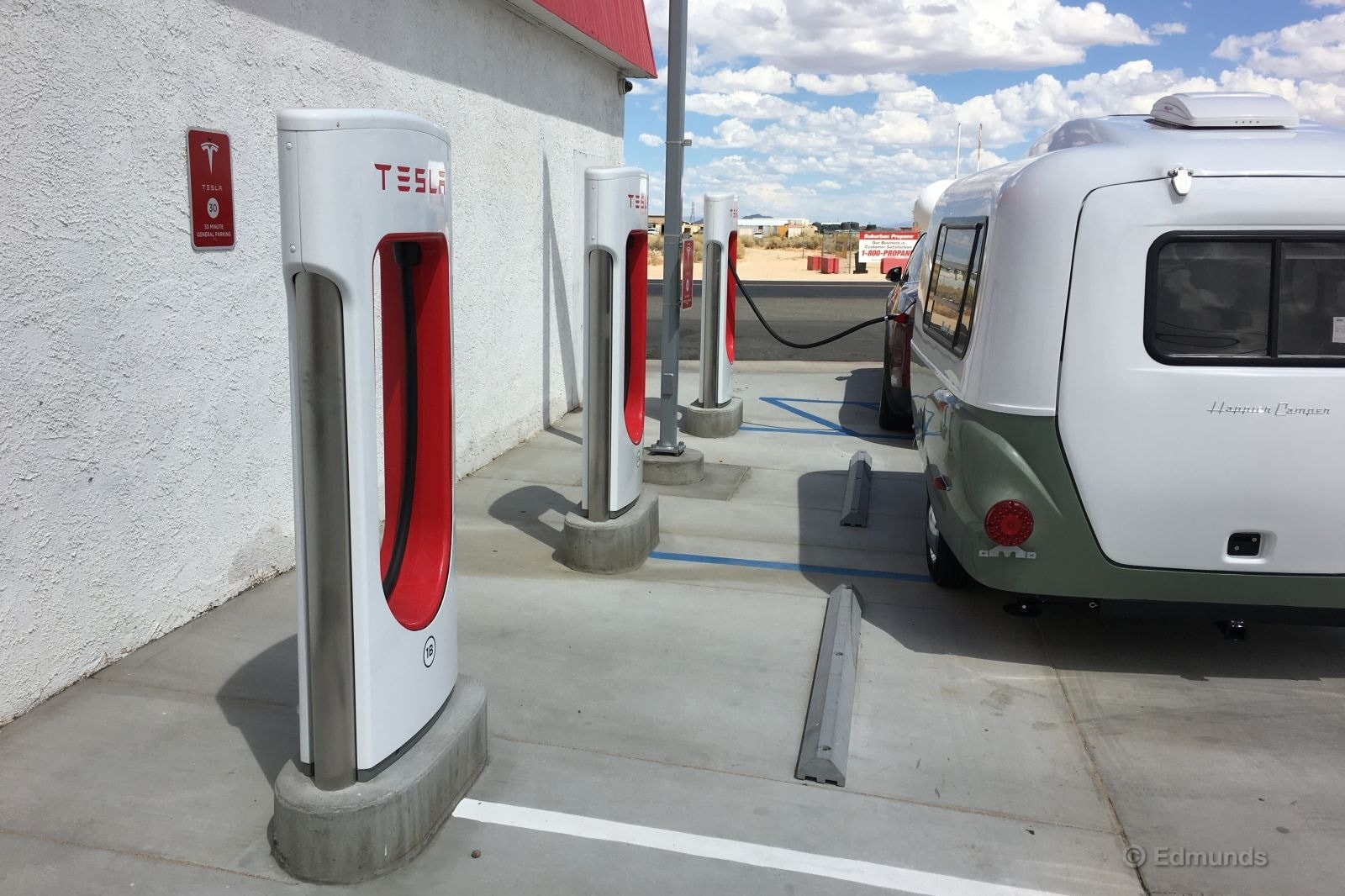
Second Stop: Inyokern, California
When we left, the predictive range meter said the Model X would arrive in Lone Pine with a battery surplus of 27 percent. But that began dropping soon after we got underway, and at a quarter of the way there, it had fallen to 20 percent. I turned the air conditioning off to save energy, but the Model X's weird glass roof made this miserable.
It didn't seem to help as the meter kept dropping into the teens. At one-third distance, the projected battery life had dropped to 14 percent as the Inyokern turnoff sign appeared. With most of the mileage and elevation gain still to come, I made a snap decision to divert to the Supercharger station we'd wanted to skip. Drat.
Inyokern's Supercharger was dinky, with just four back-in stations in a lonely lot behind a corner market. No one was around, and a Tesla Club caravan seemed unlikely to appear, so to avoid unhooking the trailer, I parked sideways to put the charge port within reach. The HC1 blocked just one extra spot, so it seemed a good risk since this was a short insurance top up, not a full fill.
Drive distance: 48.3 miles
Drive time: 1 hour, 13 minutes
Consumption: 536 Wh/mi
Charge time: 25 minutes

Third Stop: Lone Pine and the Alabama Hills
The Lone Pine Supercharger was now only 69 miles ahead, and the extra Inyokern juice made the going easy. The range meter prediction dropped again about 10 minutes after I got underway, but it didn't matter. We rolled into the Lone Pine Supercharger just before quitting time and decided to set up camp in the nearby Alabama Hills, site of many old Western movie shoots.
But the next day's first leg looked to be brutal, with 4,100 feet of elevation gain. We decided to get a head start on filling the battery tonight before we headed for the hills to set up camp. Besides, a highly rated barbecue joint was within walking distance of the Supercharger. The car could charge while we ate. Multitasking is the key to taking the sting out of charging wait times.
There was a catch, of course. The Lone Pine Supercharger was buried in a tight lot behind the museum. There was no room for any creative parking shortcuts. I had to unhitch the trailer, lock the tongue, drive the Tesla into a charge stall, and hope no one ran off with the trailer while we ate.
Drive distance: 69.2 miles
Drive time: 1 hour, 37 minutes
Consumption: 561 Wh/mi
Charge time: 1 hour, 5 minutes
Day One Summary:
Drive distance: 217 miles
Total time: 8 hours, 9 minutes (5 hours, 2 minutes driving; 3 hours, 7 minutes charging)
Effective travel speed: 26.6 mph
Average consumption: 555 Wh/mi
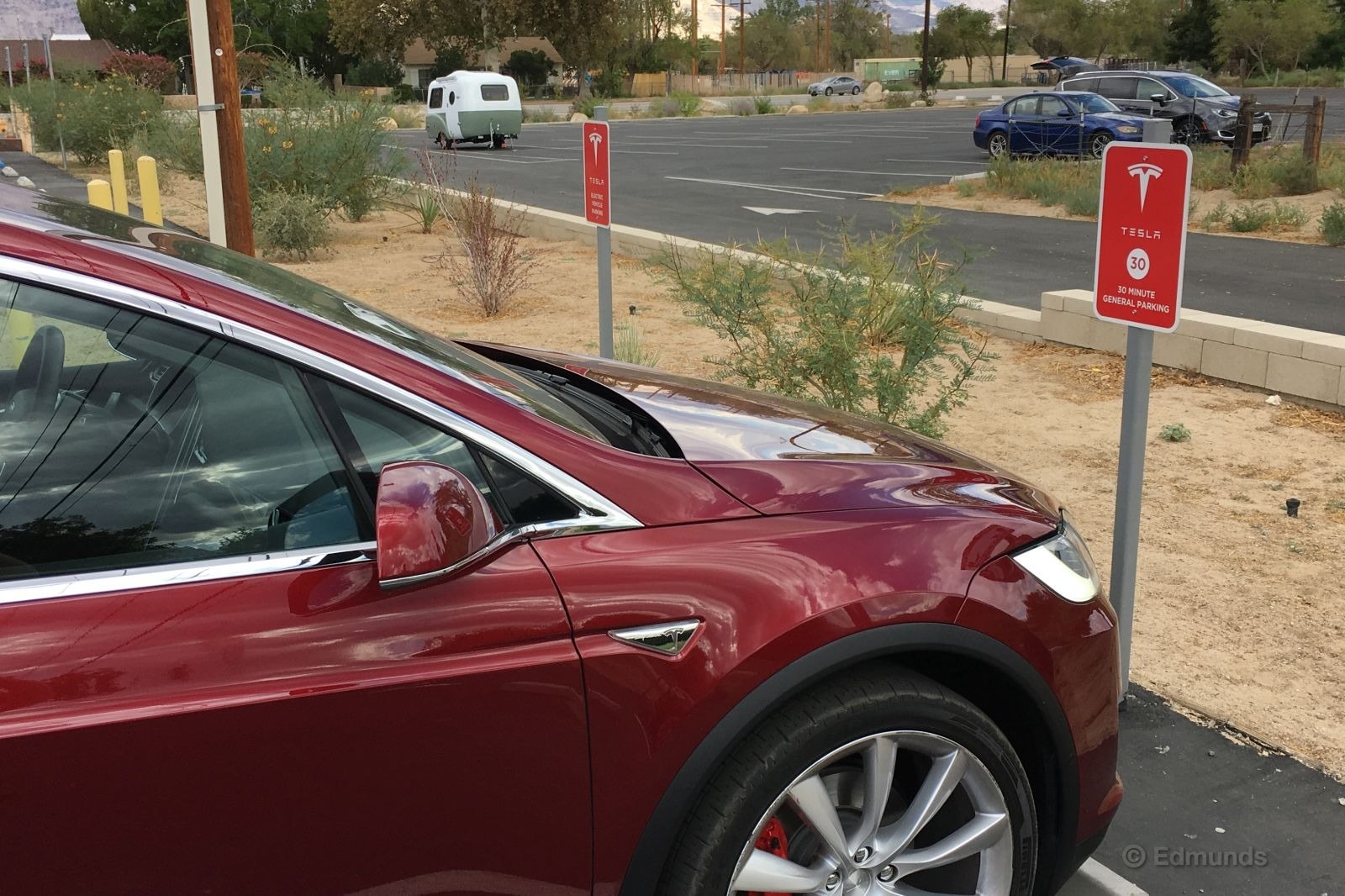
Breakfast
The previous night's dinnertime charge had brought the battery up considerably, but it hadn't filled it completely. The leg to Mammoth would be the most challenging of the trip, with 99.6 miles to cover with a 4,100-foot elevation gain. A couple of intermediate summits lurked along the way, so in cycling terms we had over 5,200 feet of climbing ahead of us.
We needed all the juice we could get, so we disconnected the trailer and plugged in at the Lone Pine Supercharger once more to finish the job while we ate breakfast at a nearby diner. We paid the check and walked back to find a full battery.
Charging and eating time: 46 minutes
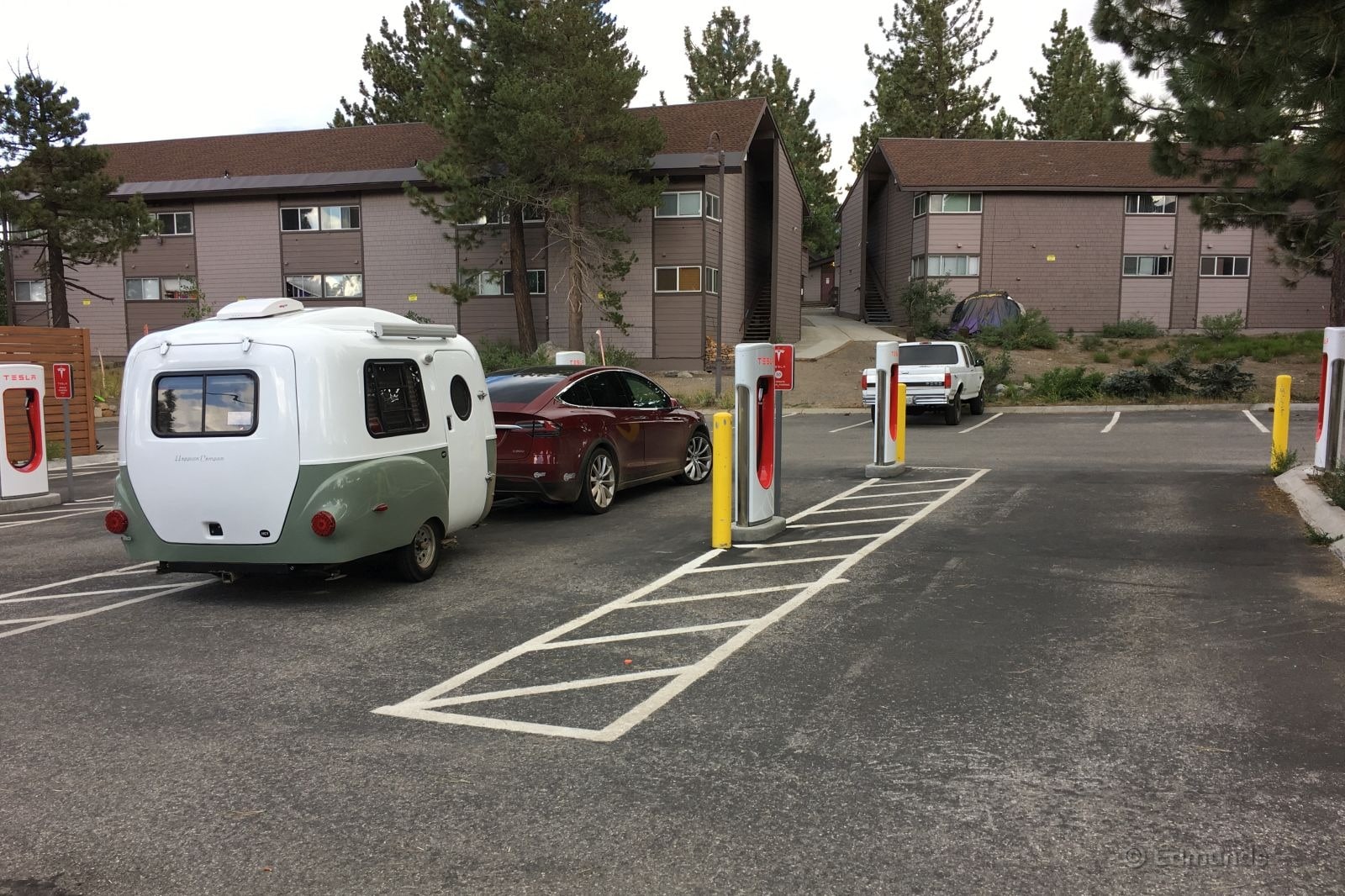
Fourth Stop: Mammoth Lakes, California
A morning start gave us cooler weather, so I was able to crack a window and keep the air conditioner off. This stretch was loaded with stunning scenery, which helped pass the time for the two-plus hours it would take to cover the distance.
Most of the climbing took place in the final 30 miles, and once the grade took hold the range sank into the low teens almost immediately. But I had no Inyokern-style diversion this available this time; I simply had to make it. So I trimmed my speed to 53 mph and kept the A/C off even as the sun began to beat down through the glass roof.
The meter dropped another tick to 12 percent before stabilizing, and then the grade flattened with about 10 miles to go. We arrived and plugged in with 13 percent battery left over, the closest shave of the trip.
The Mammoth Lakes Supercharger is the only one I've ever encountered (out of the 40 or so I've visited) that's suitable for trailers. It has pull-through spots arranged in nose-to-tail pairs, extra-wide stalls, and the whole thing occupies an island in the middle of a sleepy lot. It'd be easier to maneuver bigger trailers through there if the stalls were angled instead of perpendicular, but our diminutive HC1 trailer didn't care. We walked off and sat down at the patio of a local eatery for one of the best burritos I've ever had as the nearly empty rig sat charging.
Drive distance: 99.7 miles
Drive time: 2 hr 7 min
Consumption: 650 Wh/mi
Charge time: 1 hr 50 min
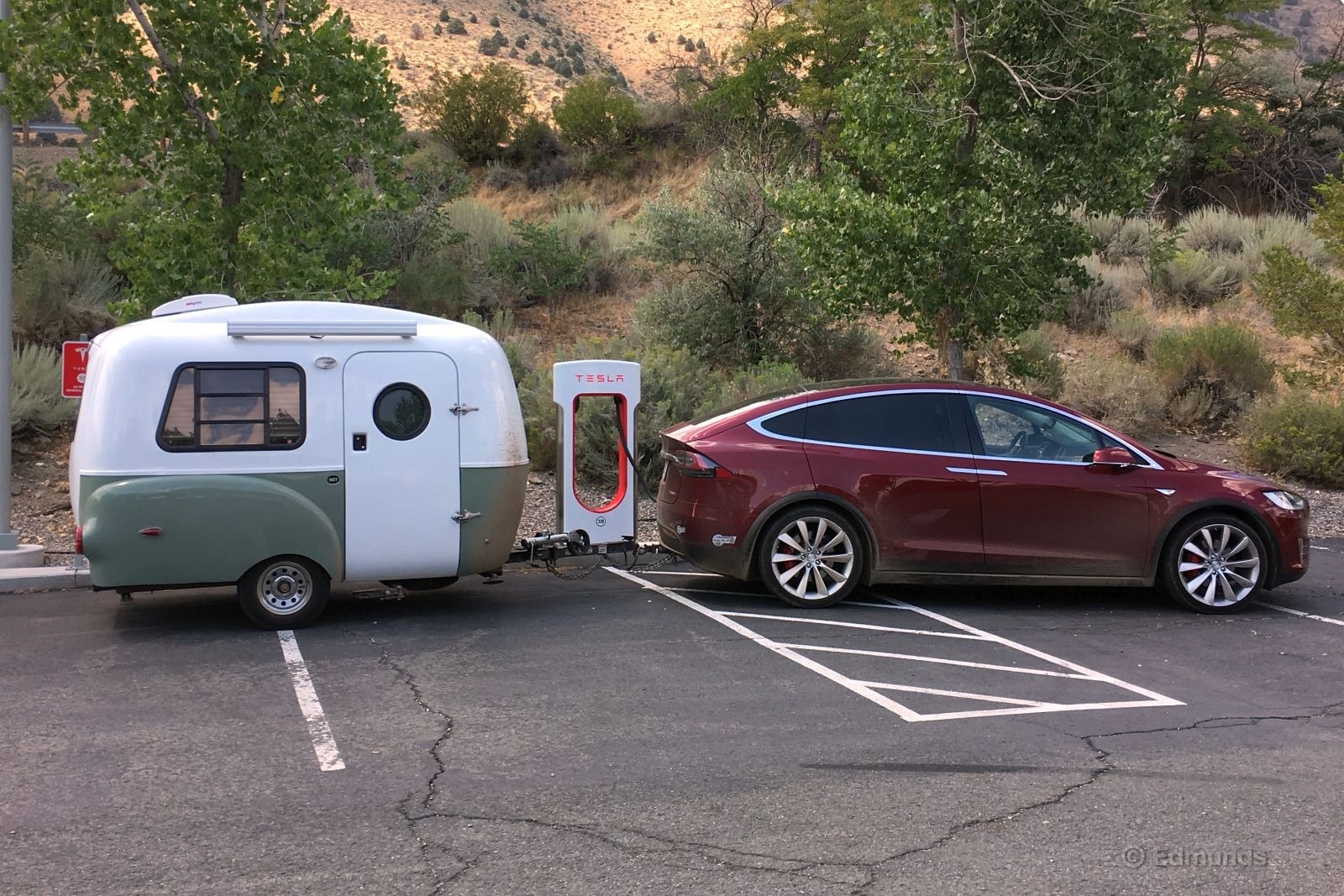
Fifth Stop: Gardnerville, Nevada
The next leg to Gardnerville, Nevada, was just as long as the run to Mammoth, but this time we descended 3,000 feet. The sun was higher now, so I took a moment to install the Tesla's embarrassingly cheap overhead sunshade. It seemed to help some, especially since the downhill-trending route allowed me to run the A/C as much as I pleased.
We found the Gardnerville station at Topaz Lake. Like Inyokern, these were back-in spots. There were no other Teslas in sight, so I felt confident I could get away with parking sideways without impacting anyone else, especially since I was only taking up two of the six spots. This was the last stop before our final destination, but since we'd arrived with 40 percent battery, it only took a little more than an hour.
Drive distance: 99.4 miles
Drive time: 2 hours 45 minutes (includes 30-minute stop for video, construction delay)
Consumption: 439 Wh/mi
Charge time: 1 hour 8 minutes
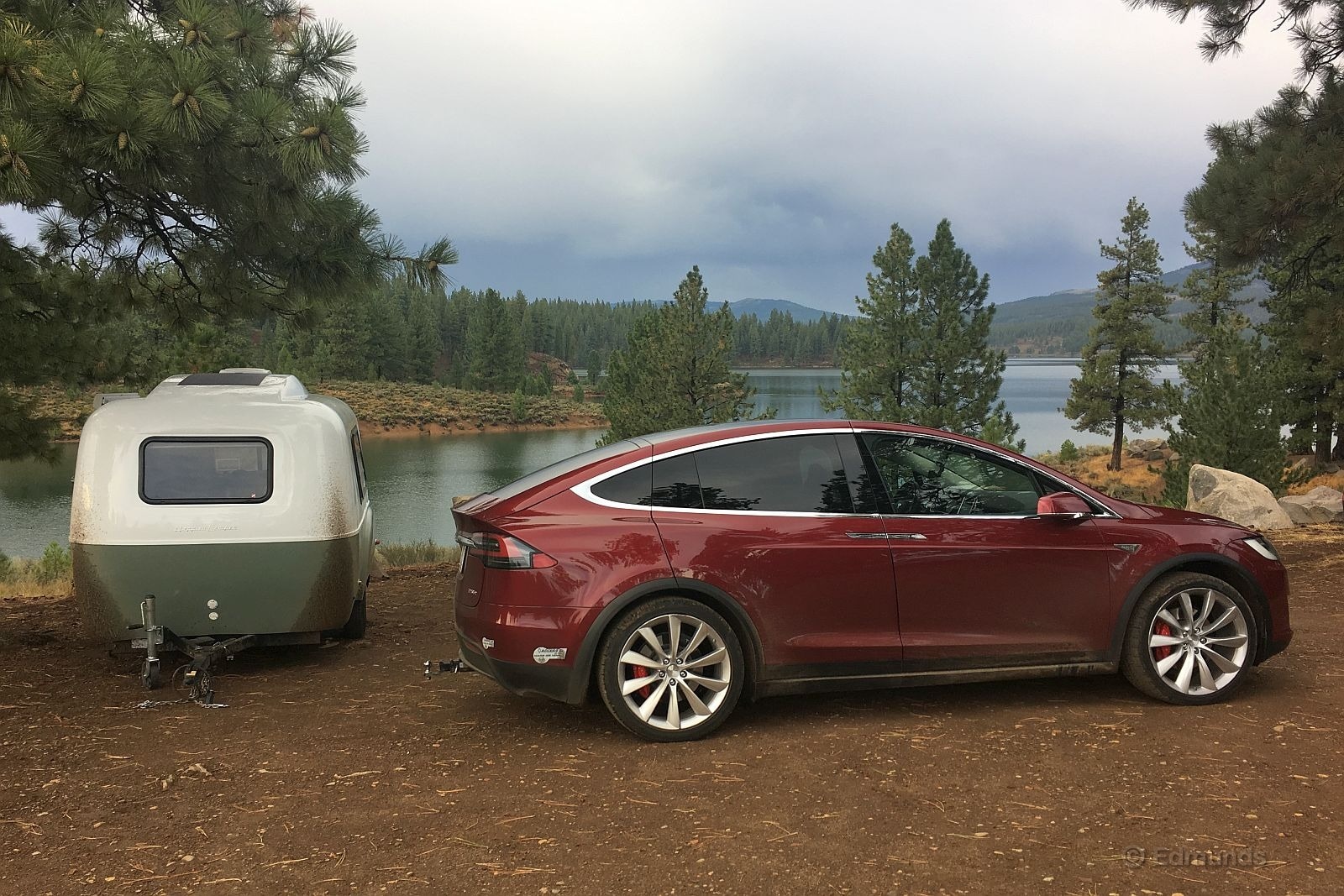
Sixth Stop: Boca Reservoir, California
The drive to our campsite started off with a smooth climb up to Lake Tahoe, where we skirted along the shore for a bit before we turned north and headed for Boca Lake. But within a mile of camp, we encountered a detour. The road across the dam was unexpectedly closed, so we had to take a 15-mile detour on dirt roads that had become greasy from recent rain.
You want to know why I fully fill the battery when towing despite the extra time it takes? Because of unexpected situations like this detour. Headwinds are another huge drain you can't reliably predict in advance, and they can be pretty fierce along this particular route.
The detour added almost an hour to our day, so we were too tired to cook anything when we arrived. Instead, we unhooked the trailer and left it at camp while we drove to nearby Truckee, California, for dinner at a brewpub that happened to have a Supercharger in its parking lot.
Multitasking made the time to complete this charge essentially invisible, and the next morning we would be able to sleep in, enjoy the lake, and get on the road with enough electricity to get underway without the need for a morning top-up.
Drive distance: 104.9 miles (plus another 8 miles back to dinner)
Drive time to camp: 2 hours, 57 minutes (includes detour on narrow dirt roads)
Drive time to Supercharger: 16 minutes
Consumption: 530 Wh/mi
Charge time: 1 hour, 24 minutes
Day Two Summary:
Drive distance: 308 miles
Total time: 11 hours, 48 minutes (8 hours, 4 minutes driving, 3 hours, 44 minutes charging)
Effective travel speed: 25.4 mph
Average consumption: 539 Wh/mi
The Road Home
We went home the same way we'd come, and the going was much easier because of the general downhill trend. We made similar stops in Gardnerville and Mammoth on Day Three, and the long downhill run from Mammoth allowed us to roll into the Alabama Hills for another night's camping without stopping to recharge first.
Day Three Summary:
Drive distance: 283 miles
Total time: 9 hours 36 minutes (6 hours, 47 minutes driving; 2 hours, 49 minutes charging)
Effective travel speed: 29.5 mph
Average consumption: 496 Wh/mi
Because we'd rolled in without charging the night before, the final morning began with another visit to the Lone Pine Supercharger and another unhitch-rehitch trailer exercise, which isn't as bad as it sounds because I'd got it down to 90 seconds at this point. The car only needed an hour to recharge more or less fully, and that suited our breakfast plans just fine.
With a slight downhill trend working for us this time, we were able to skip the Inyokern station and make a beeline for Mojave. We charged there and let the trailer hang out once more before heading for home.
Day Four Summary:
Drive distance: 213 miles
Total time: 7 hours, 5 minutes (4 hours, 48 minutes driving; 2 hours, 17 minutes charging)
Effective travel speed: 30.1 mph
Average consumption: 505 Wh/mi

A Clear Result
Let's boil this down to one set of figures for the entire trip. On the road to Boca Reservoir and back, we traveled a total of 1,037 miles, and the Happier Camper HC1 trailer was latched behind for 1,013 of them.
Travel time: 39.94 hours (25.59 driving, 14.69 charging)
Average travel speed: 26.0 mph
Average Supercharger plug-in time: 1 hour, 13 minutes
Average energy consumption: 524 Wh/mi
Compare that to last year's trip with the Off the Grid Rentals adventure-style, off-road teardrop trailer. On that trip we drove to Flagstaff, Arizona, and back. We drove 1,033 miles in total, and the adventure trailer was in tow for 1,003 of those miles.
Travel time: 40.25 hours (23.02 driving, 17.23 charging)
Average travel speed: 24.9 mph
Average Supercharger plug-in time: 1 hour, 34 minutes
Average energy consumption: 612 Wh/mi
As you can see, the Happier Camper HC1 made a huge difference. Its smooth and stylish shape more than made up for its larger frontal area. Our Tesla consumed 14 percent less electricity (524 Wh/mi versus 612 Wh/mi) and that allowed us to save an average of 21 minutes at each and every Supercharger stop (1 hour, 13 minutes versus 1 hour, 34 minutes).
This is huge, and it really adds up when you consider we made 10 charge stops during the course of the trip. Our total travel time doesn't show what should be a 3.5-hour time savings, however, because of numerous road construction delays and several stops we made to shoot video segments. Neither of those had been a factor in my previous trip to Flagstaff.
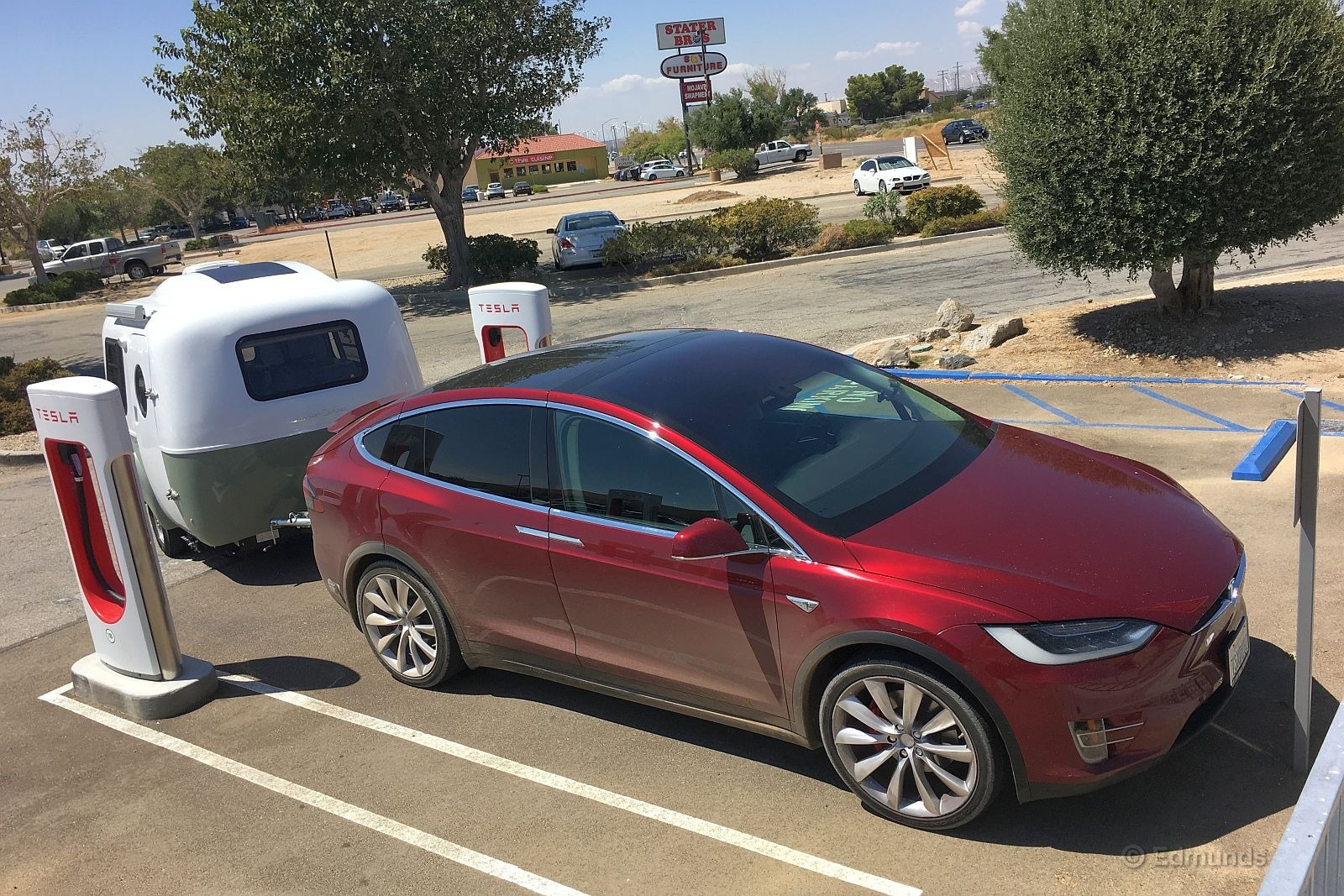
Mixed Feelings
Still, towing with a Model X is slow going compared to towing with something running on gasoline or diesel. And that's why I have such mixed feelings about this result.
On the one hand, the Tesla Model X is a pretty effortless tow vehicle. It has plentiful power and torque, it's supremely stable, the air suspension keeps the butt end propped up, the cruise control is impeccably accurate on any kind of grade, the cabin is utterly quiet and, of course, there is absolutely no shifting.
And I really loved the Happier Camper HC1 trailer. I want to tow this rig again on a longer trip with any number of tow vehicles.
But the Model X and the Supercharger network that supports it are simply not up the realities of this kind of trip. With one "Mammoth" exception I know of, Superchargers are not made with towing in mind. We might have had more trouble if we had been towing on a weekend, but we were traveling midweek. And it simply takes too long to charge. Consumption is dramatically higher when towing, so that means you'll be flirting with a full fill from a nearly empty starting point. Sure, you could say we could have unplugged sooner here or there, but do you really want to risk running out if you encounter unforeseen headwinds or detours? Also, you can't go very fast. We were helped by California's 55-mph speed limit, but other states permit towing speeds that are 10 to 15 mph higher. If you want to avoid running out of power, you have to drive slow.
It seems to me the Model X is best suited for local towing that does not involve Supercharger stops and road-trip distances. But you could easily tow a boat from your home to a local boat ramp. Or you could be like the guy I met that uses a Model X to tow a horse trailer 30 miles to the riding area he frequents.
But forget about trying to get out of town to go camping in the mountains for the weekend. We spent too much time on the road and not enough time at the campsite. And don't even think about towing your race car the length of the state to get to the next event — something I used to do with regularity before I got married. Towing any distance with a Model X is only tolerable if you're OK with covering less that 300 miles per day and you've got all day to do it.
And that's a shame because towing on electricity is otherwise pretty great. If the battery-swap idea comes back to life or near-instant charging ever becomes a thing, I'm back in.
Monthly Update for October 2017
Where Did We Drive It?
Our long-term 2016 Tesla Model X kept a low profile in October, racking up about 1,000 miles in total. Many of those miles came courtesy of Dan Frio, our man in Orange County, who had plenty of time to mull over the Model X's eccentricities while sitting in traffic.
We did log one of our best range efforts in a while —a 172-mile jaunt at the beginning of the month. It's worth noting, though, that even though the Model X's theoretical range is well over 200 miles, we haven't traveled that far on a single charge since setting our all-time record of 212.6 miles in April. The big Tesla gives you more range than a typical EV, for sure, but it's not quite the long-distance champ that early reports might have expected it to be.
What Kind of Fuel Economy Did It Get?
For the second month in a row, the Model X spent many of its plugged-in hours with the high-power wall charger at Edmunds HQ, which makes measuring energy consumption relatively straightforward. A few longer trips took us off the grid, however, so we have full consumption data for fewer than half of our October miles.
Miles added this month: 993
Miles with complete data: 420
Consumption over those 420 miles: 46.1 kWh/100 miles (73.1 mpg-e)
EPA consumption rating: 38 kWh/100 miles (89 mpg-e)
Best lifetime observed range: 212.6 miles
Best lifetime projected range: 267.6 miles
Average lifetime projected range: 168.7 miles
Current odometer: 24,920 miles
Maintenance and Upkeep
None.
Logbook Highlights
Interior
"Our Tesla is starting to creak like an old sailboat. There's a consistent screechy clunk when the brakes bring the car to a complete stop, and there's random shudder and shake as the car hauls itself up into a driveway or over garden-variety road rash. You'd probably hear and feel much of the same in many SUVs with 25,000 miles if it weren't for the big V6 or V8 running under the hood. The Tesla's problem is that it operates so quietly that you tend to notice each shimmy and rattle, so you cast a disapproving glance in its direction, unfairly or not. It'll be interesting to see how well these cars are holding up structurally in 2022 and beyond." — Dan Frio, automotive editor
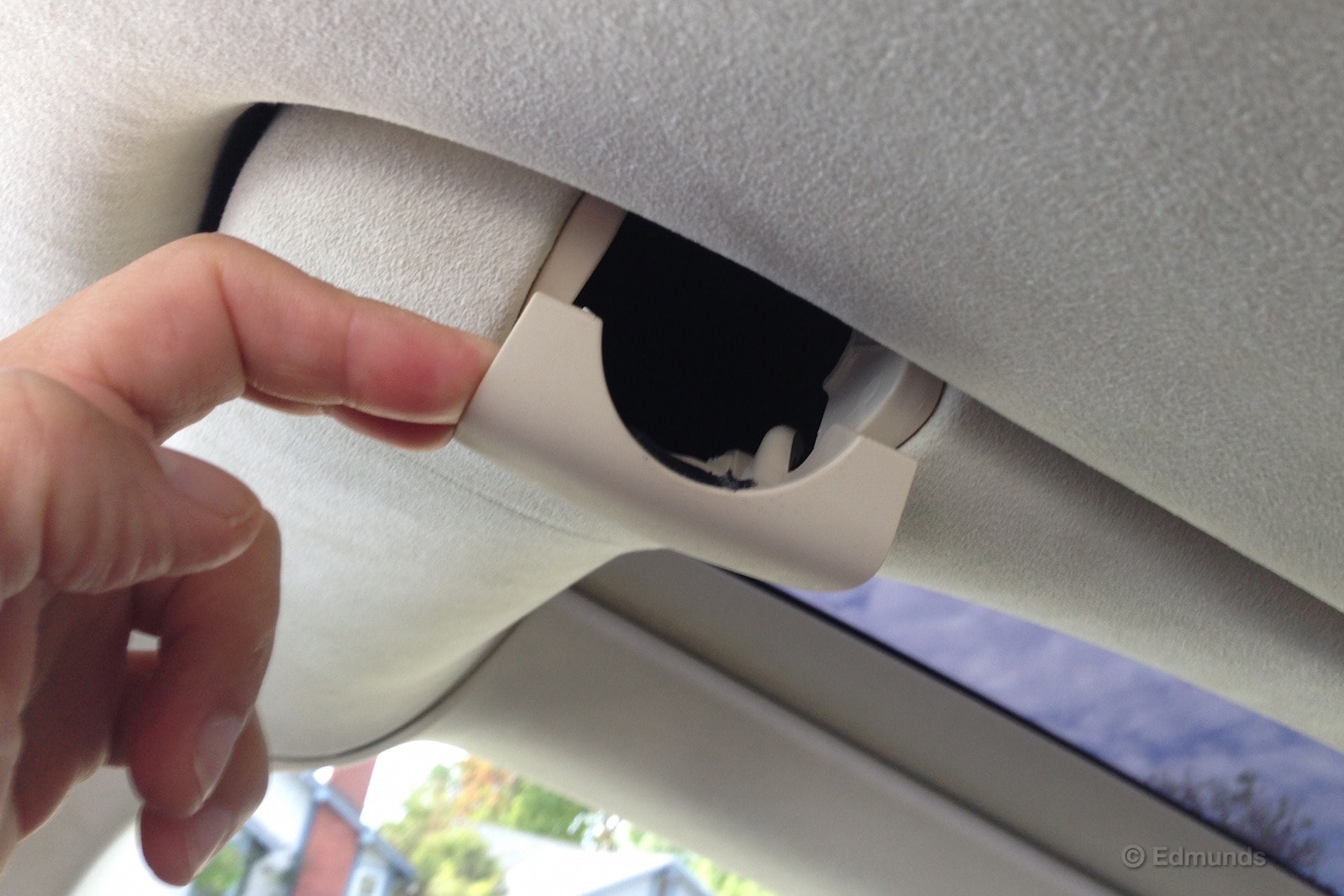
"I initially thought the Model X didn't have any hooks for hanging a suit jacket. But I found something that suggests otherwise, namely a couple of pull-tabs on each falcon-wing door that open into a small cavity. Now, I'm not entirely convinced these are designed for hanging clothes. The spring-loaded clamping mechanism suggests they might be, but on the other hand, they place your suit jacket, dry cleaning, whatever, almost dead-center down the middle of the aisle and hinder side and rearward visibility. But this was about as good an answer to this dilemma as I could find in this otherwise relatively feature-free ceiling." — Dan Frio
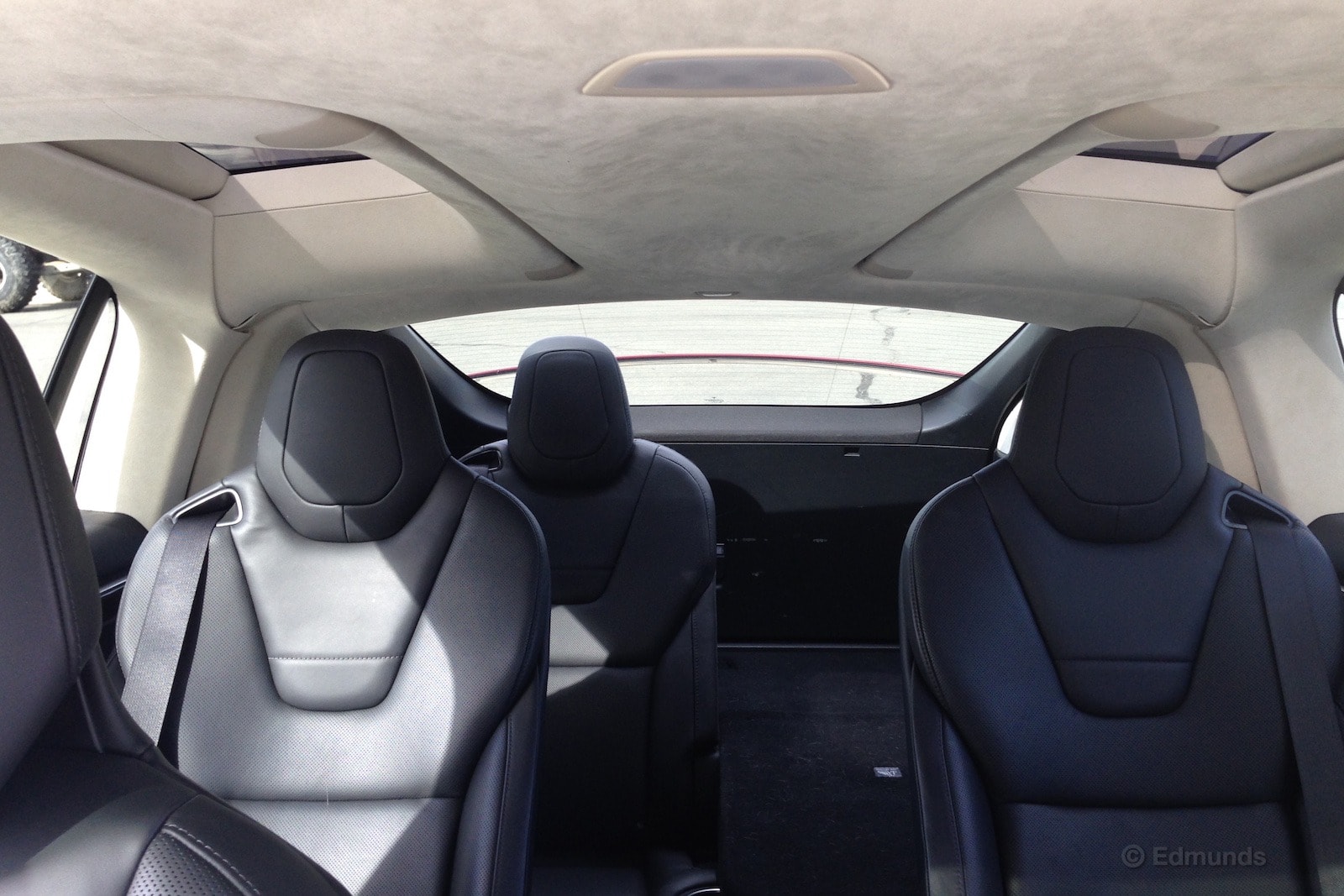
Technology-Audio
"Pretty impressed with the Model X audio system. OK, so maybe an impressive audio system should be a given in a $145,000 car, but you don't always know what you're going to get with these efforts. Some are given thought and labored over, while others just seem cast out to suppliers with a 'best for least' mandate.
"The Tesla's system appears to be designed and supplied by a company under the Harman Kardon umbrella, and that's all right by me. To my ear, Harman, and specifically JBL, delivers the most consistent performance of all the big corporate sound companies. Even H/K's misses are generally better than the grab bag of Bose systems out there.
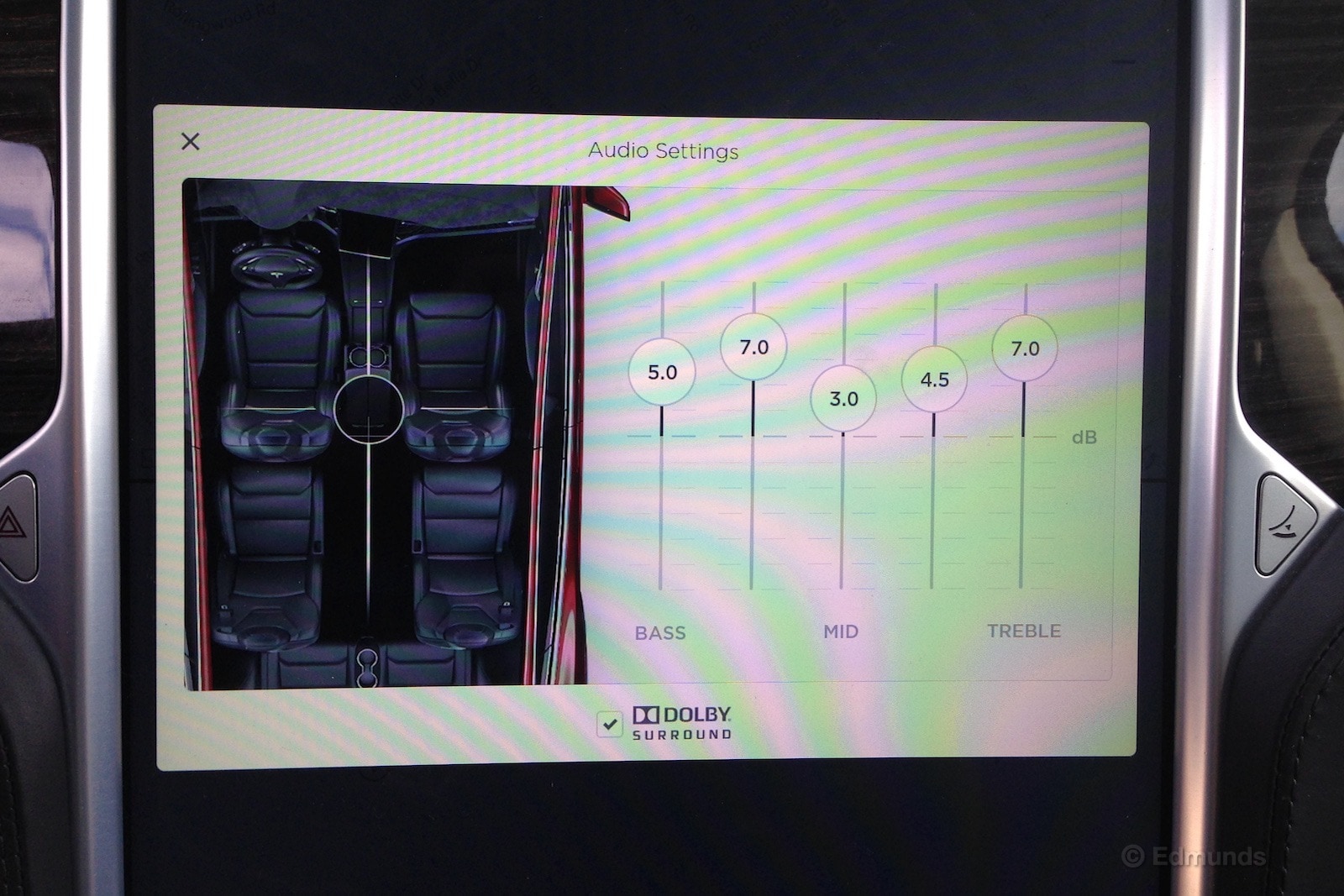
"But here's a system really out to win hearts: It's got a five-band equalizer! No one offers equalizers anymore! And even though these are dopey virtual sliders, they're better than none, and they provide fairly precise touchscreen movement. I prefer a classic 'midrange scoop' when I get a chance to set an EQ, dialing back some of these resonant, muddy midrange frequencies to clear the way for midbass definition and higher frequency clarity. The Model X delivers focused sound all around at pretty decent volume. An adjustable subwoofer level would make it that much better, but as it is, this is a solid effort. And it only cost us six figures." — Dan Frio
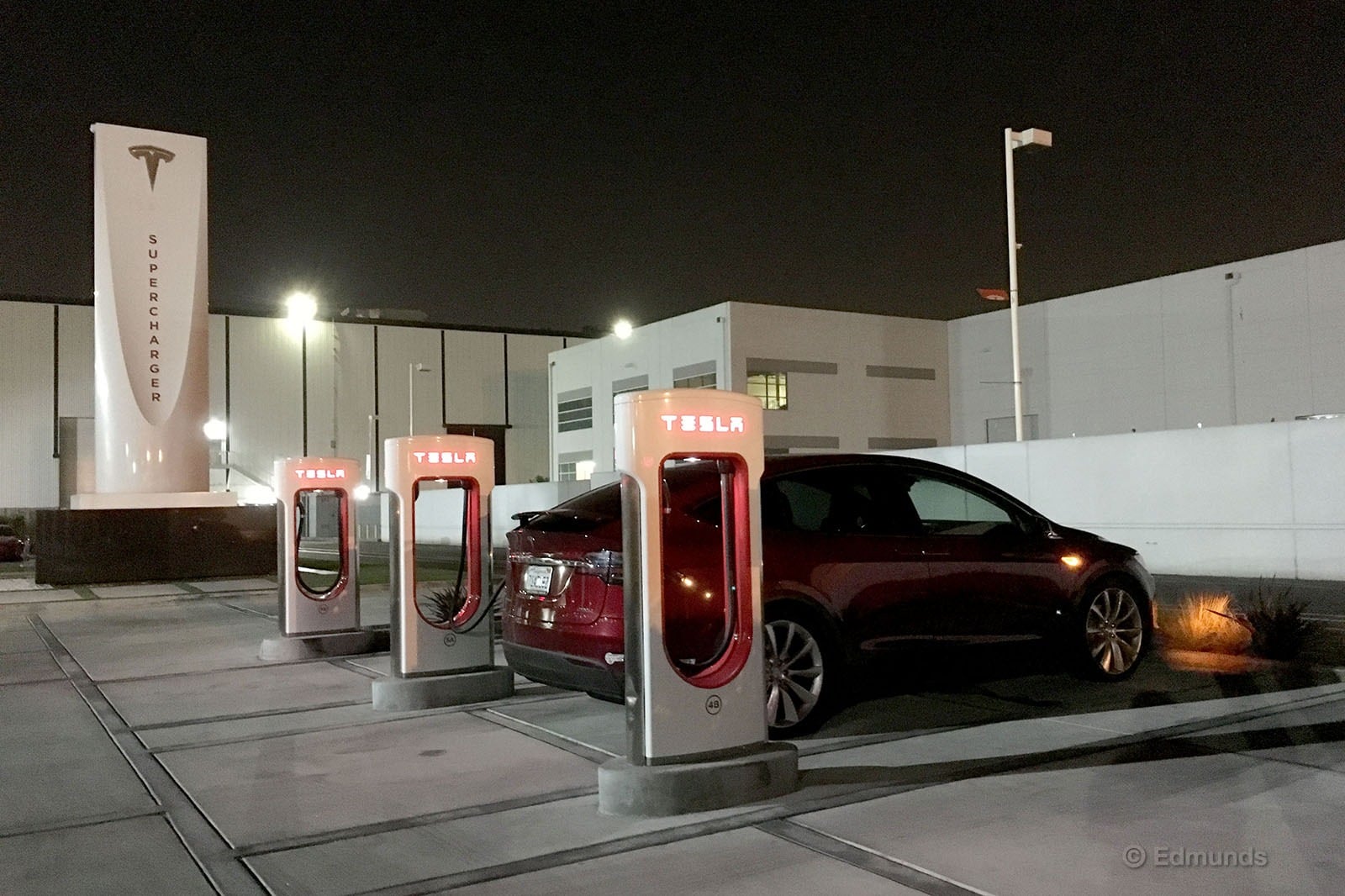
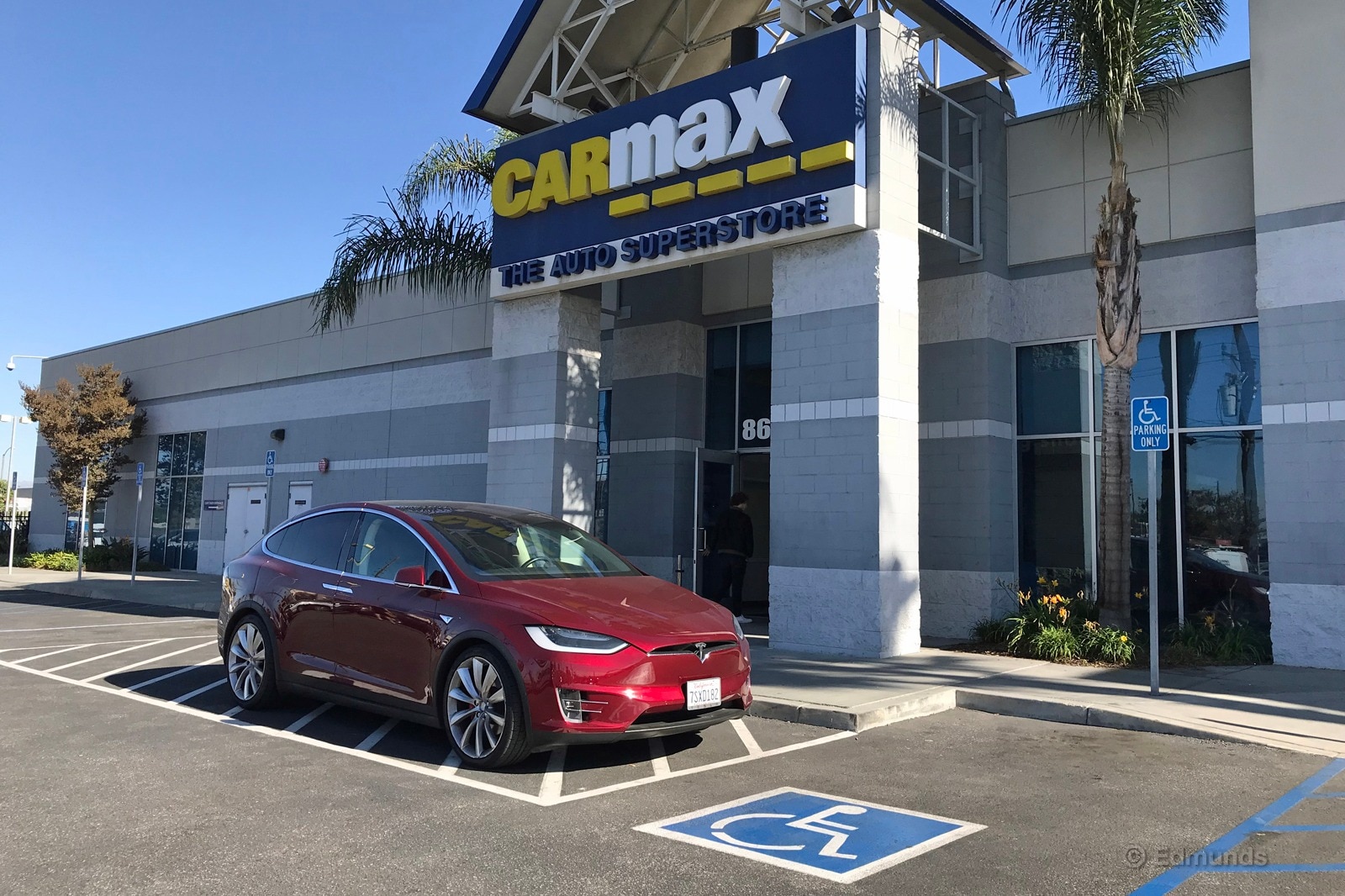
The resale value of electric vehicles has a notorious reputation for sinking like a stone in water. The incentives to buy are geared toward the first owner; there are still questions about the long-term durability of EV batteries; and overall used-car shoppers are more focused on finding a vehicle that will fit their family needs than reducing their carbon footprint.
I had all that in mind when I took our 2016 Tesla Model X to CarMax for an appraisal.
We typically start at the used-car store whenever we sell a car from the fleet. It's fast and easy and gives us a baseline for value. It also gives us an offer that's good for a week, even if we don't ultimately sell the car to CarMax.
And so, knowing what I know about EVs, I was expecting a lowball offer from CarMax. It was more like being hit by the pitch.
CarMax offered us $66,000 for the Model X. For reference, the Edmunds trade-in True Market Value for the SUV in average condition is $86,566. And given that we paid $144,950 when the vehicle was new, CarMax's offer was a drop in value of nearly 55 percent in about 20 months. It was even less than the used-car store offered us for our Model S back in 2014.
In all fairness, we should note that CarMax doesn't sell Teslas, so if it had bought it, the Model X would have headed straight to its auction house. Still, the offer was a nosedive that would make a peregrine falcon jealous. We thanked the CarMax rep for his time and let him know we'd try our luck in other places.
Tesla offers a trade-in program for customers purchasing a new vehicle. We were a couple months away from buying our Model 3, so I figured it was worth a shot to see what the carmaker would offer.
Here's how it works: You email your vehicle information to Tesla, then a representative replies to explain the process and, more importantly, to set your expectations. Tesla would then list the vehicle on its own internal resale site and come back to you with an offer that it says will be lower than a private-party value. (That's the "set your expectations" part.) I mentioned to the representative that we'd taken the vehicle to CarMax and wanted to improve on the offer. "We usually end up close to what CarMax would offer," said the Tesla rep. With that in mind, we decided to keep searching for a better method.
Remember when Tesla was so proud of its resale value that it would guarantee "that the resale value will be higher than that of BMW, Audi, Mercedes, Lexus or Jaguar"? Those days are long gone.
After researching the market, we decided that eBay was a good place to list our Model X. We ran a seven-day auction and set the reserve at $67,000. At worst, we'd improve on the CarMax offer by $1,000. That would justify the effort of setting up the auction.
Things got off to a great start when the auction met its reserve on the first day. The top bid hovered around $80,000 for a few days after that. Along the way, I answered a bevy of questions: "What's the 'Buy It Now' price?" (There wasn't one.) "What will you take for it?" (Whatever people will pay; it's an auction.) And "Does it have Autopilot 2.0 hardware?" ( It has 1.0.)
The last few minutes of the auction were the most frantic as the bids came in faster. At one point, I received this troubling message from the then-highest bidder: "Do you have access to financing? I have not arranged for any at this time and not sure how long that would take, would I be able to get an extension on payment if it's delayed?"
Um, no and no. I thankfully dodged this bullet when the final highest offer came in from another bidder, willing to pay $90,101. He then put down the required $1,000 deposit via PayPal.
Scott, the buyer, contacted me soon after to discuss payment and when he could pick it up. I had the vehicle detailed for him while he made arrangements. He flew down from Northern California to pick up his Model X and drive it back. He brought a cashier's check for the balance. I had contacted his bank earlier that day to verify the authenticity of the check. Scott looked over the vehicle, I handed him the title, and he set his navigation for the long drive home.
Our persistence and extra legwork made for a $24,000 improvement over the CarMax offer. The effective depreciation was now about 38 percent, still high but not nearly as bad as before.
We wish Scott well and hope he and his family enjoy their Model X.
Wrap-Up
What We Got
By 2016, Tesla had the lion's share of momentum in the world of electric vehicles. The first car the company built from the ground up, the Model S, was a big success, and it was time for the automaker's next big announcement. That came in the form of an electric SUV. At the time, it was a combination few OEMs had tried, none with much success.
The 2016 Tesla Model X would be the brand's second all-new car and its first entry into the wildly popular SUV segment. It promised the same advanced technology of the S and we were intrigued by everything about it. We put down a $40,000 deposit two years before our car was even built.
We had little interest in the lesser equipped 70D, 90D or even P90D trim. From the start, we'd set our sights on the fully loaded Model X P90D Signature, basically a P90D with all of its options included as standard equipment.
It was a long list: keyless entry, power liftgate, motorized driver door, navigation, HEPA cabin filter, ventilated front seats, leather, third-row seat, 22-inch wheels, air suspension, adaptive headlights, 90-kWh battery good for 250 miles of range, 72-amp onboard charger, blind-spot warning, collision mitigation braking and Autopilot semiautonomous driving. Every Model X is all-wheel-drive. The most influential feature of the Signature trim was priority delivery, which made ours one of the first 1,000 produced.
Despite the extensive list of standard features, we wanted more. We added the Ludicrous Speed upgrade ($10,000), Subzero Weather package ($1,000) and Tow package ($750). Before taxes and government incentives, and not subtracting the deposit, our 2016 Tesla Model X Signature had a price tag of $144,950.
Performance
"[While towing] the air suspension system automatically compensates for the trailer tongue load (admittedly not large here), which means the car's attitude remains flat and the steering stays nicely weighted. Crosswinds and passing big rigs are nonevents as the Model X steadfastly maintains a secure, straight-ahead feel at all times. The tail does not wag this dog." — Dan Edmunds, director of vehicle testing
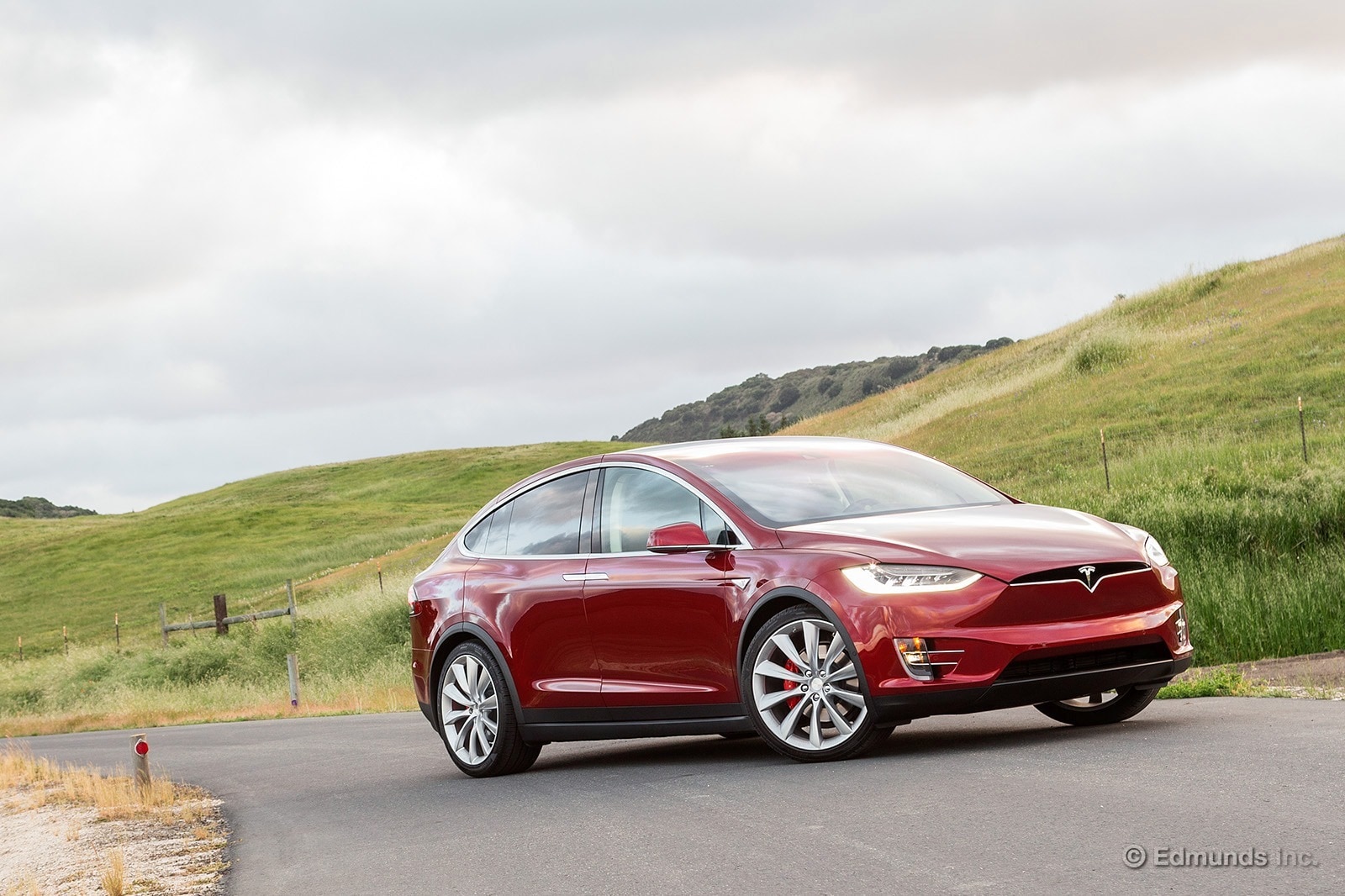
"If you've ever experienced the Six Flags Superman ride, which uses electromagnetics for the powerful propulsion, then you'll have an idea of what the Model X is like in Ludicrous mode. It's nearly the same sensation, except you have to steer." — Jonathan Elfalan, road test manager
MPG
"The Model X served up an abundance of power, stability and grade-climbing ability. The driving experience was effortless. Effortless, that is, until it came time to charge the blasted thing. That's where this towing exercise turned into a real drag. The problems are numerous: towing speed, range, recharge time and the physical incompatibility of Superchargers when you roll up with a trailer. The first three issues are interrelated. That last one stands alone." — Dan Edmunds
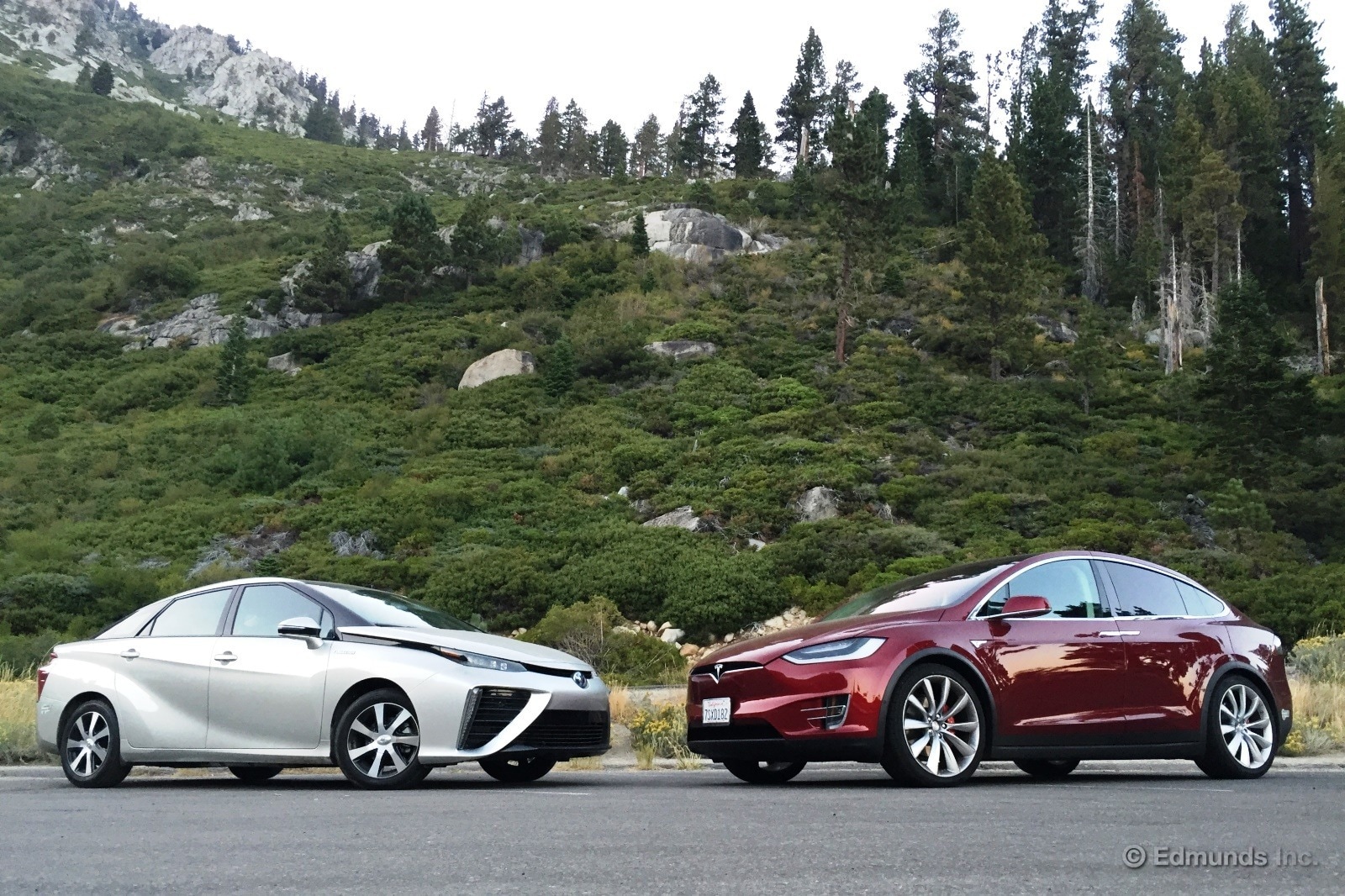
"While the hydrogen refueling infrastructure for our long-term 2016 Toyota Mirai is currently in its infancy, it's strikingly similar to Tesla's Supercharger network of a few years ago. At least it is in the central California corridor. This got Dan Edmunds and me thinking: What if we took the same road trip in both our Mirai and our long-term 2016 Tesla Model X?" — Jason Kavanagh, senior road test engineer
Comfort
"This was my first trip in the Model X. The driver seat proved uncomfortable for my 6-foot (and, charitably, broad-shouldered) frame, pushing my shoulders forward awkwardly no matter how I adjusted it. Tire noise was surprisingly noticeable and the suspension let me feel every imperfection in the road surface." — Will Kaufman, associate staff writer
Cargo Space
"Has anyone tried using the cellphone slot in the center console? It looks like a neat idea. There's a cubby to hold a phone and a cable at the bottom. I used my girlfriend's iPhone to test it out, but we ran into some issues. Problem one: The cubby is tight, so you have to take the case off your phone. But problem two, The Big One, is with the Lightning cable: It didn't line up with her phone. I wiggled it around a bit but couldn't line it up in a way I felt good about subjecting it to Ludicrous acceleration." — Carlos Lago, senior writer
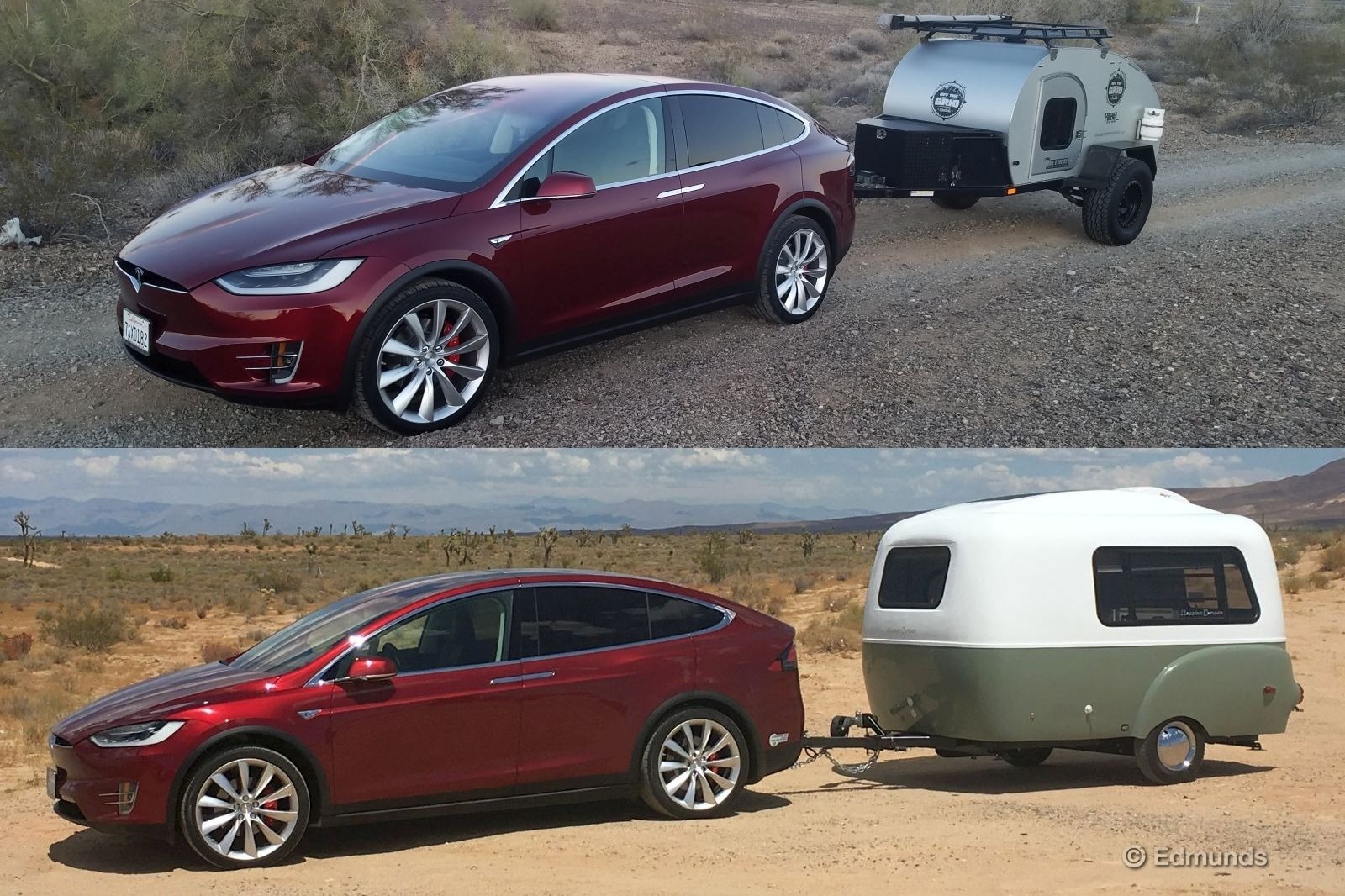
"Thus equipped, a Model X can tow as much as 5,000 pounds, but that only applies if you stick with the standard 20-inch wheels and tires. Opt for the 22-inch rubber (or buy a Signature like we did) and the rating drops to 3,500 pounds. "But the hitch isn't just for people who tow trailers. The presence of those falcon doors you are currently imagining makes it impossible to fit a bike or ski rack to the roof of an X. You'll need to use a hitch-mounted rack for anything like that, which means this hitch is destined to be a must-have item for a large percentage of Model X buyers." — Dan Edmunds
Interior
"As nice as it is to have a third row of seats, without easy access to them, their value diminishes quickly. More than one carpool kid who was banished to the back seats complained of having to wait for the slow-moving second-row buckets to move out of the way. A simple latch to flip them forward is the norm here, so it's easy to see why the Tesla's seats seem so cumbersome." — Ed Hellwig, senior editor

"First, I'll acknowledge that these doors offer one functional advantage over swinging or sliding doors: They facilitate loading a child safety seat. The articulating door takes a portion of the roof up with it, leaving a nice open space in which to stand fully upright when loading a child seat. In every other way I can think of, the articulating doors (what Elon Musk cringingly dubbed falcon-wing doors) are a big compromise. Let's tick off the ways." — Jason Kavanagh
Audio and Technology
"I was listening to Cast of Kings, a Game of Thrones podcast, and the Model X's infotainment system came up with artwork for the soundtrack to Victorious, a hit Nickelodeon show starring Ariana Grande and Victoria Justice. Later I listened to a video game podcast called DLC, and the artwork that appeared was Mozart: Sonatas for Piano and Violin, by Yefim Bronfman and Isaac Stern. Maybe our Model X is trolling me." — Ron Montoya, senior consumer advice editor
"Before I left the gym, I pulled out my phone, started the Tesla app and checked the cabin temp on the Model X. It showed 110 degrees. I set the cabin air-conditioning to 'LO' and went about my business. Eleven minutes later, I got to the car with the interior temp on its way down, right past 70 degrees. The app has a couple other cool features like summoning it from a tight parking spot, checking on the progress of a charge, flashing the lights and honking the horn (that combo works well finding the car in a big parking lot), but this is probably a favorite of mine." — Travis Langness, staff writer
Maintenance
"Our Tesla is starting to creak like an old sailboat. There's a consistent screechy clunk when the brakes bring the car to a complete stop, and there's random shudder and shake as the car hauls itself up into a driveway or over garden-variety road rash. You'd probably hear and feel much of the same in many SUVs with 25,000 miles if it weren't for the big V6 or V8 running under the hood. The Tesla's problem is that it operates so quietly you tend to notice each shimmy and rattle and you cast a disapproving glance in its direction, unfairly or not." — Dan Frio, staff writer
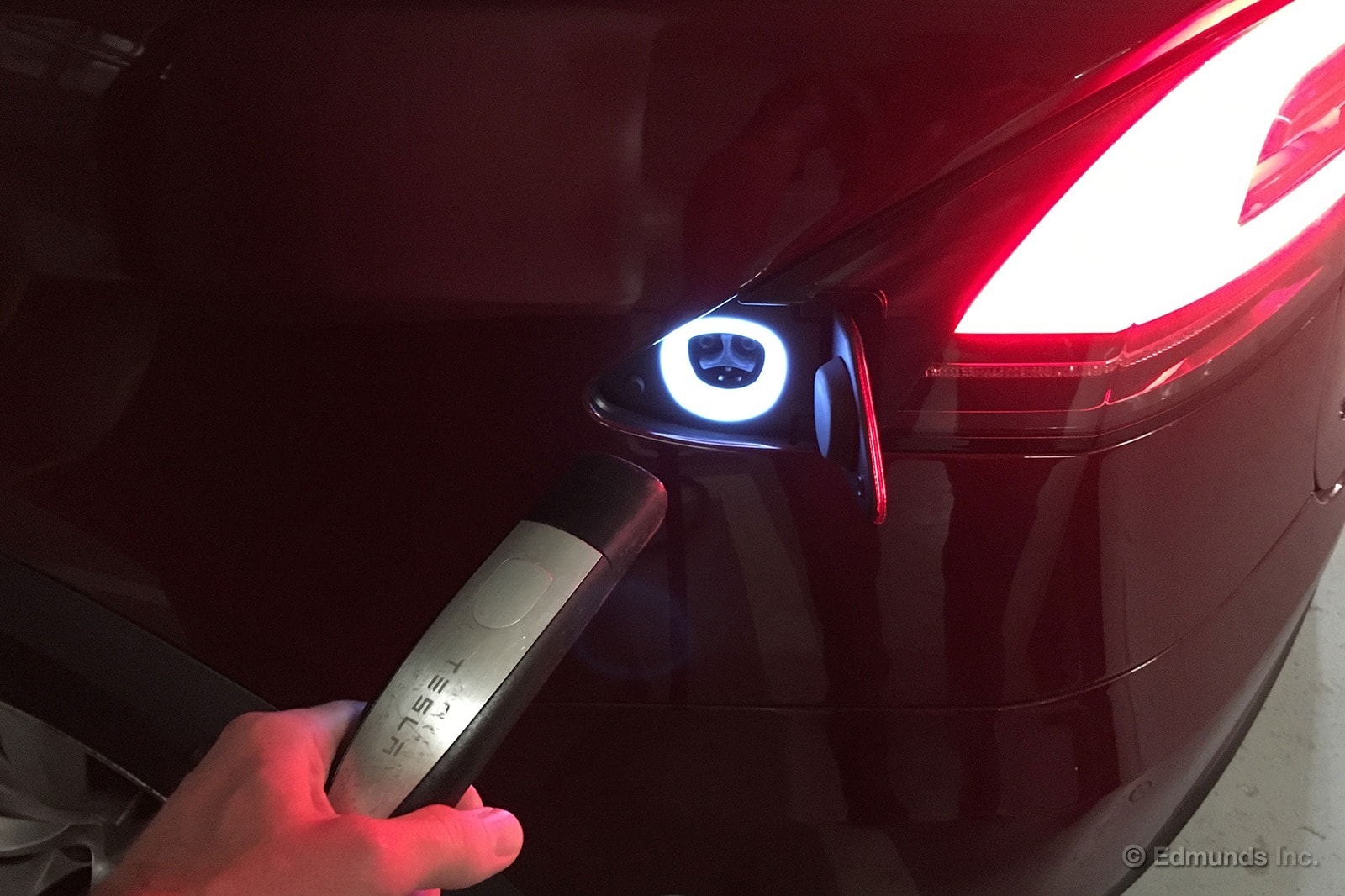
"The [charge] port door would operate properly after multiple attempts, but not always on the first try. Our Model X was charging as we walked up to it, so I reached out to unplug it and found the cord alarmingly hot to the touch. That was the final straw; something was clearly wrong. With that in mind, I headed to our nearest Tesla service center." — Michael Massey, vehicle testing assistant
Miscellaneous
"After spending a weekend with it, I missed regular-size windshields and sun visors, key fobs with lock and unlock buttons, doors with handles, and knobs for audio and climate. And sure, actual owners of this car will learn to adapt to these annoying idiosyncrasies, but like I said, how does any of this make life easier?" — Caroline Pardilla, senior copy editor
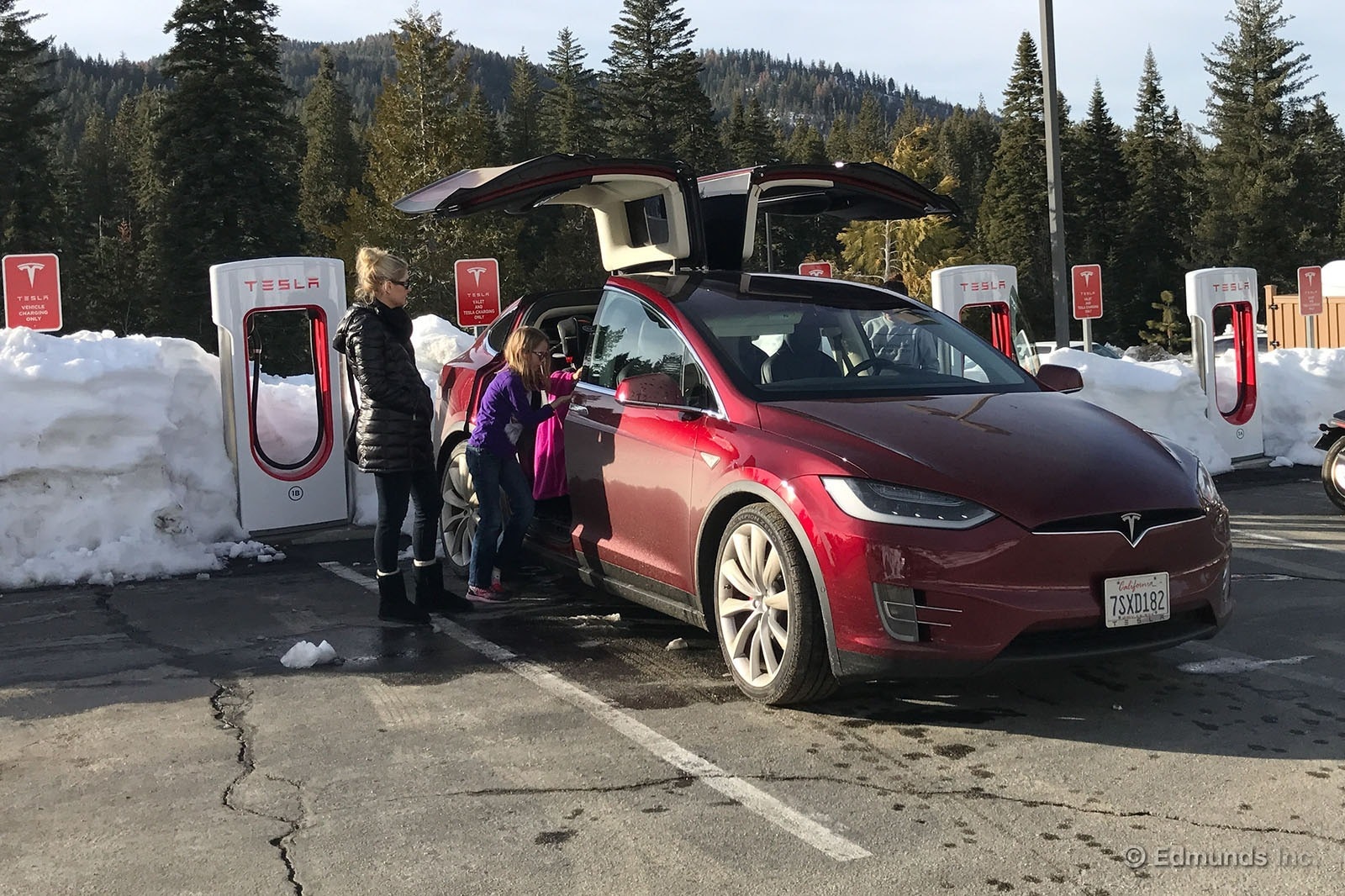
"My stress level shot up as we approached the lodge. The parking lots had been plowed after the recent snowfall, creating big mounds of snow along the outer edges. Uh oh. Typically, Tesla positions its chargers on the edges of parking lots, and you back into a charging spot to hook up. I was worried that the snowplows had covered up the charging stations." — Brent Romans, senior editor
Maintenance & Repairs
Regular Maintenance:
Standard procedure for a Model X is a tire rotation every 6,250 miles and an inspection every 12 months or 12,500 miles — unless there are other reasons to take the car in for service. In our case, we had plenty of opportunities.
Service Campaigns:
We learned something about Tesla maintenance from owning a Model S: There can be a lot of it. The general theme will feel familiar. During 20 months of ownership, our Model X went in for service seven times, spent 19 days out of commission, and had a total of 32 issues addressed.
A few things about the following chart are worth noting. We paid $0 to maintain our Model X while we owned it; several of the repairs were performed without our knowledge (the tech found an issue and fixed it on the spot, for example), and firmware updates were ongoing. Some occurred at the Tesla garage and others over the air. This chart only includes those requiring a trip to Tesla to remedy a concern. Here's the list:
| Problem | Repair | Cost |
| Recall issued | Replace third-row seats | warranty |
| Horn not working properly | Update firmware | warranty |
| Right front speaker rattling | Add insulation between window regulator and door frame | warranty |
| Steering wheel off-center | Perform four-wheel alignment | goodwill |
| Low battery alert for key fob | Replace battery and reprogram | goodwill |
| Low 12V battery warning | Replace 12-volt battery | warranty |
| Key fob not working | Replace battery and reprogram | warranty |
| Recall issued | Reposition air-conditioning condenser pipes | warranty |
| Recall issued | Inspection only; half-shaft replacement not required | warranty |
| Technical service bulletin (TSB) issued | Adjust both front windows and belt seals to reduce wind noise | warranty |
| Driveline shudder during acceleration | Operating within normal limits | goodwill |
| Power assist failure in left front door | Recalibrate door drive units and update firmware | warranty |
| Broken front cupholder | Replace center console assembly | warranty |
| Loud buzz from climate control | Operating within normal limits | warranty |
| Left front window squeals | Replace outer door seal | warranty |
| Driver seat creaks | Apply lubricant between seat and console | warranty |
| Broken handle on load floor cover | Replace load floor cover | warranty |
| Center-console charging dock not working | Replace dock assembly on center console | warranty |
| Chrome molding peeling off right front door | Replace outer door molding | warranty |
| Touchscreen is frozen | Update firmware | warranty |
| Right front window sticks | Recalibrate window regulator; replace door latch | warranty |
| Torn door seal due to sticking window | Replace seal on side roof pillar; adjust front windows for proper sealing | warranty |
| Charge adapters missing after service | Replace complete charge adapter kit | goodwill |
| TSB issued | Replace both front door latches | warranty |
| Tesla charging station cord hot to touch | Replace cable and fuses | warranty |
| Charge port does not unlock | Replace charge port door | warranty |
| Falcon-wing doors rub | Lubricate door trims on both doors | goodwill |
| Steering wheel makes noise | Clean, lubricate mating points at bash plate | goodwill |
| Left falcon-wing door not opening fully | Replace ultrasonic door sensors | warranty |
| Steering wheel makes loud noise (again) | Lubricate steering shaft boot | goodwill |
| Power assist failure in right front door | Replace door latch assembly | warranty |
| Brakes squeak loudly | Replace front and rear brake rotors and pads | warranty |
Fuel Economy and Resale Value
Observed Fuel Economy:
The tracking of total electric usage is a game of details. Miss a few and miss a lot of usable data. Of the 338 times we plugged our car into a charger, only 157 — covering about 10,000 miles — could be used.
One reason why is normal charging loss. With the X, we averaged 19.7 percent loss, which is consistent with charging other EVs at 240 volts. So this isn't much of a surprise. Another cause is Supercharger use. Tesla's massive network is unmatched, but the stations don't provide data. Twenty-eight percent of our lifetime plugs-in — about 8,000 miles' worth — were at Superchargers. More information lost.
The EPA's projected range for the Model X is 250 miles. This projection assumes a max battery charge of 100 percent. The normal charging mode, 90 percent battery, is good for 215 to 220 miles. Since most of our charges were in the normal mode, our range projection averaged less, just 187.9 miles. Our lower-than-expected range was influenced by two main factors: two long-distance towing tests and the easily accessed, battery-draining torque of Ludicrous mode. That said, our best range covered 171.5 miles, though we rarely pushed the limits.
The EPA estimates electric consumption for the Model X at 38 kWh/100 miles. By the end of our test, we averaged 55.3 kWh/100 miles, largely because of our heavy-footedness. Our best result was 40.9 kWh/100 miles.
Resale and Depreciation:
As one of our senior consumer advice editors, Ron Montoya, wrote in his must-read recap of the Model X sale, "The resale value of electric vehicles has a notorious reputation for sinking like a stone in water." One slight difference with this Tesla: It was a bit more of a roller coaster.
Our Model X was up for sale with 24,930 miles on the odometer. So we first checked the Edmunds TMV Calculator, which valued the car at $86,566 based on a private-party sale. With our goal price in mind, it was time to put the car out there. Here is where we remind you that we bought the SUV new for $144,950 about 20 months earlier.
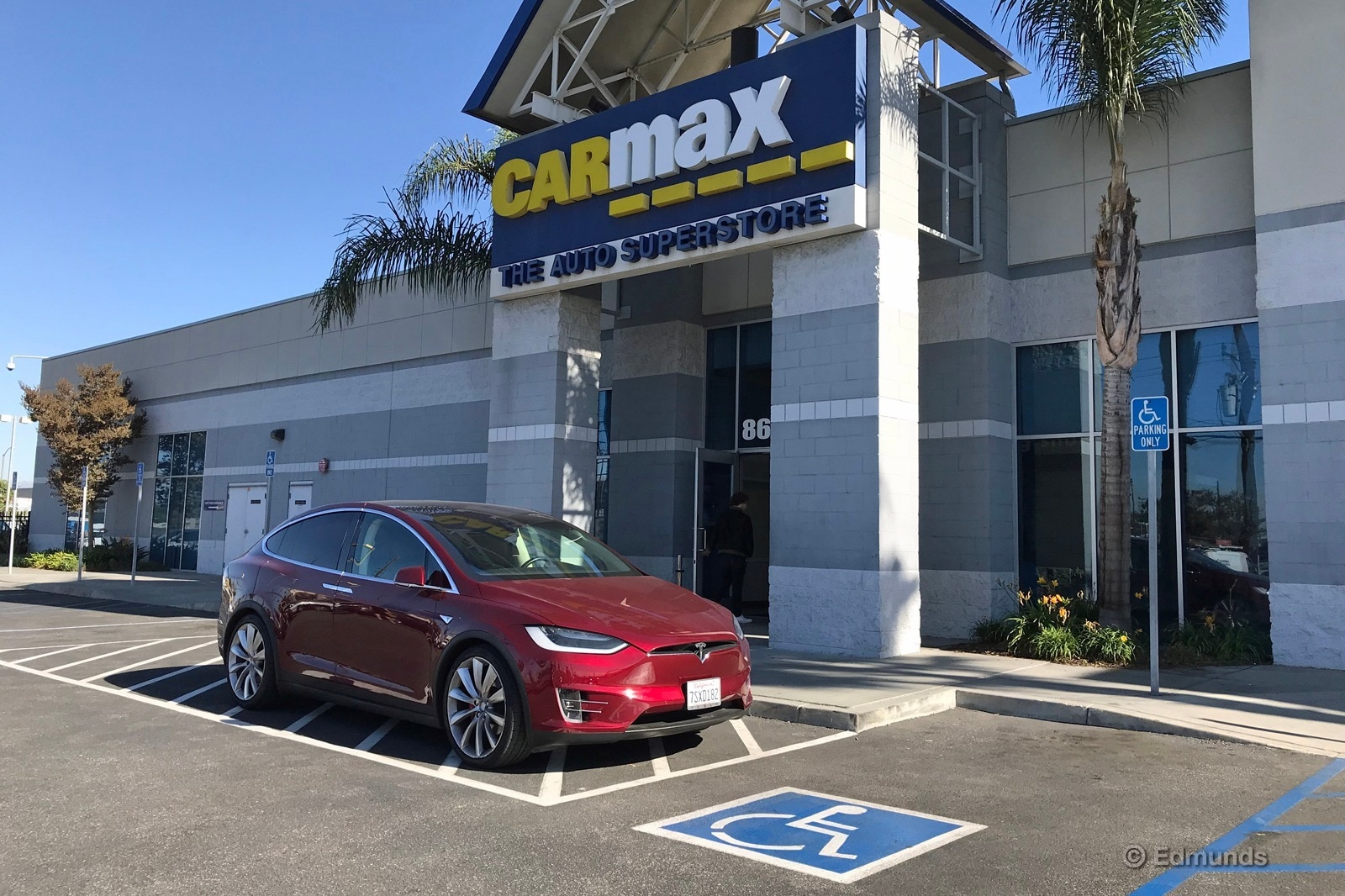
As alluded to, the search for a buyer was bumpy. We followed our routine of shopping the car first at CarMax. The offer: $66,000. That wasn't going to cut it. Since we had a Model 3 in the pipeline, we explored the Tesla trade-in program. "We usually end up close to what CarMax would offer," said the Tesla rep. eBay was next. We ran a seven-day auction and met our $67,000 reserve on the first day. It looked promising. A flurry of bids in the closing minutes lifted the sale price to $90,101.
Ron did his homework. In the end, he earned us $24,000 over the first offer. Ultimately, depreciation was 38 percent, which was still quite high. For reference, our Model S fared much better, depreciating 20 percent after 30,000 miles.
Summing Up
Pros: Incredibly fast; roomy interior; industry-leading electric range; free charging network; no routine maintenance costs.
Cons: Rampant mechanical and electronic issues; not as luxurious as other six-figure SUVs; inconvenient articulating doors; Level 2 electric charger necessary for true daily use; low residual value.
Bottom Line: The Model X accelerates at a remarkable rate, its rear doors are undeniable conversation-starters, and it boasts technological advances at every turn. But some tech is to its detriment. Repeated issues with the falcon-wing doors, numerous repairs, and a tough resale market outweighed the positives of owning the car.
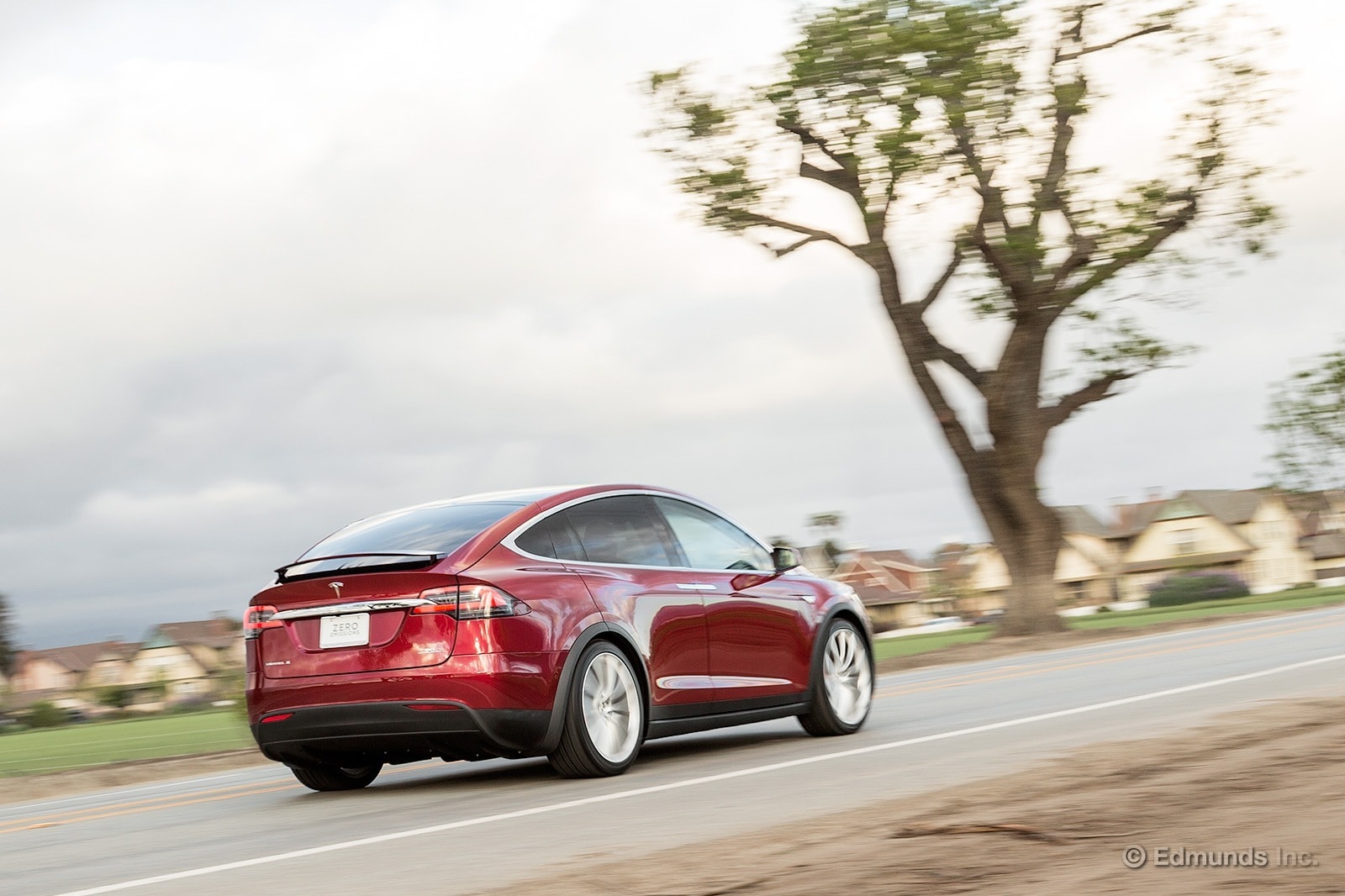
| Total Body Repair Costs: | None |
| Total Routine Maintenance Costs: | None (over 20 months) |
| Additional Maintenance Costs: | None |
| Warranty Repairs: | See other chart |
| Non-Warranty Repairs: | None |
| Scheduled Dealer Visits: | None |
| Unscheduled Dealer Visits: | 7 |
| Days Out of Service: | 19 |
| Breakdowns Stranding Driver: | None |
| EPA Average Projected Range: | 250 miles |
| Average Lifetime Projected Range: | 187.9 miles |
| Best Range: | 212.6 miles |
| EPA kWh/100 miles: | 38 |
| Average Lifetime kWh/100 miles: | 55.3 |
| Best kWh/100 miles: | 40.9 |
| EPA Consumption (mpge): | 89 |
| Average Lifetime Consumption (mpge): | 61 |
| Best Consumption (mpge): | 82.5 |
| True Market Value at service end: | $86,566 (private-party sale) |
| Sale Price: | $90,101 |
| Depreciation: | $54,849 (38% of paid price) |
| Final Odometer Reading: | 24,920 miles |
Edmunds purchased this vehicle for the purposes of evaluation.